

|
Commentary provided by:
Takeshi Kikuchi – Director, Manga Shinbun, Ltd.
Ichiya Nakamura – Professor, Graduate School of Media Design, Keio University
Naoko Hosoda – Editor-in-Chief, MANTAN, Ltd.
Yasuhiro Yamauchi – President, Manganight / Rainbow Bird, Ltd.
Koichi Yuri – Former Manga Editor
Youhei Sadoshima – President, Cork Agency, Ltd.
Yukari Fujimoto – Professor, School of Global Japanese Studies, Meiji University
Takafumi Horie – Funder, SNS Media & Consulting, Ltd.
Tomoko Yamada – Researcher, Yoshihiro Yonezawa Memorial Library
Katsuhiro Motoyama – Writer and Director, Nippon Foundation Paralympic Support Center Project Promotion Department
|

By Bakka Okita | 沖田×華
Kodansha | 講談社
3 volumes, complete
The world can also look like this
-An autobiography filled with laughter and tears, from an author with Asperger syndrome
"Have you heard of Asperger syndrome? The author has Asperger syndrome and had a learning disability in childhood. For example, she could not follow instructions of the teacher in kindergarten, because she could not differentiate and catch the teacher's voice amid the noise of a bunch of kids. However, she was able to study alone wearing headphones with a PC, since she could take her time and go at her own pace. Once she fixated on something, it was hard to get her to let go. She would follow other kids, which annoyed them. When you read the manga, you repeatedly have flashbacks to your own experiences: “That’s what happened!” or "That kid had it." Once you grasp how the world looks to the child, you often understand immediately. Some of you might think, "Oh, that's the same with me!" Then let's try to explain it to others. "How the world looks" and "what you can do and what you cannot do" are different for everyone. This manga clearly shows you that. Above all, it is fascinating to read."(Yukari Fujimoto)

By Keiko Takemiya | 竹宮惠子
Shogakukan | 小学館
17 volumes, complete
Essence of sexuality itself
-- Facing its overwhelming power, aside from the culmination of love
"People who open this manga may be surprised, check if anyone is around, and then quietly reopen the book. The work straightforwardly deals with sexuality. No matter how you look at it, the manga starts with a bed scene between boys. This marked the beginning of “boys’ love,” or today's yaoi and BL (both are male homosexuality manga or novels for female readers). But setting this aside, it tries to depict the essence of sexuality itself. Not only as the culmination of love, sexuality inevitably and powerfully engulfs people, sometimes making them stay in dominant-submissive relationships. Takemiya, the author, says that she wanted to clearly explain such things to young people. If you think it is too early for you, you should wait. If you were surprised and quickly closed the book but are curious, you are probably ready to read this manga."(Yukari Fujimoto)

By Yoshitoki Oima | 大今良時
Kodansha | 講談社
7 volumes, complete
Listen with your heart
-- What cannot be expressed in words holds the truly important things
"School and society tell us that bullying is unacceptable and we should not discriminate against disabled people. Do we really consider what this means and fully grasp it? Don’t we think everything is OK as long as we treat them as something special and keep them in a special place? In this manga, the main character bullies a deaf classmate and causes her to transfer to another school; he himself is then bullied in class and changes his life. The manga depicts his frustrations and changes as he confronts regrets of the past, when he could convey his feelings only by hurting others. He goes to see the girl he bullied partly in order to sincerely confront who he is. Trying to understand others; trying to listen to the voices of others' hearts; trying to listen to your own voice--the work makes us think about the difficulty and preciousness of these things. Do we know everything just because we can hear the sound of voices? We may not even be listening to our true voice. Sign language is featured in a number of scenes as well as written communication. Email, letters, gifts, actions, various facial expressions--each one is a form of voice. Communicating our true voices may be possible only by facing each other and sharing our thoughts. The main character, in the process of learning about the soundless world, encounters true voices that he has never tried to listen to. Are you listening to the voice of someone important to you?"(Katsuhiro Motoyama)
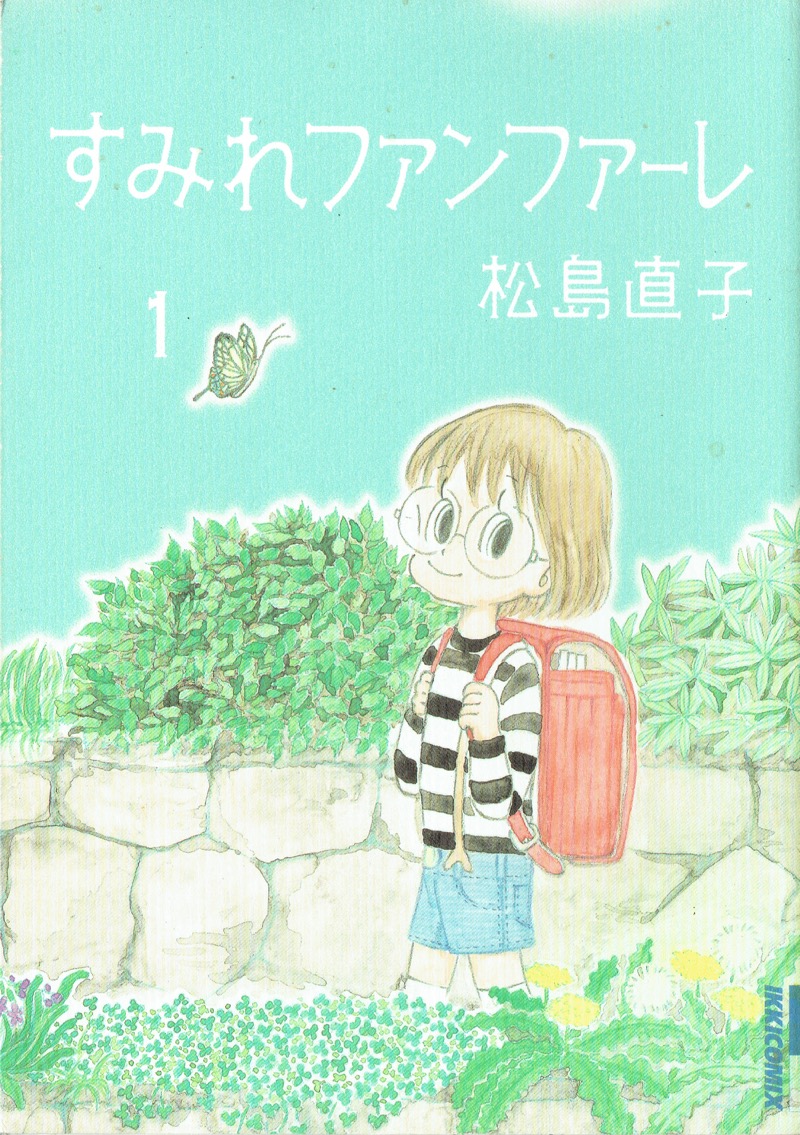
By Naoko Matsushima | 松島直子
Shogakukan | 小学館
6 volumes, complete
Think, and feel relief
-- The world through the eyes of Sumire, a fourth-grader living with her divorced mother
"The main character is Sumire, a fourth grader who lives with her divorced mother. Sumire’s environment leads her to care more about the adults around her than about herself. From the standpoint of adults, Sumire is hurt and heroic, and should be more like the typical demanding child. The manga presents issues in today's society, such as single mothers' incomes and the difficulty of remarrying with kids, and makes you think. At the same time, no one “bad” appears, allowing a warm feeling of relief. It would be interesting to find out what children of the same age as Sumire think about this work."(Naoko Hosoda)

By Osamu Yamamoto | 山本おさむ
Shogakukan | 小学館
7 volumes, complete
A powerful work that questions, “What does it mean to live?”
-- The story of children with multiple handicaps, their parents, and teachers at a school for the deaf
"It is overwhelming and shocking that a manga can express this much and make you think about fundamental aspects of a human being. Here is the story of children with multiple handicaps–deafness and intellectual or mental disabilities--and their parents along with teachers at a school for the deaf. Life with severe disabilities is grueling: the cold prejudice and discrimination of society; an inadequate government system; and the families that suffer from such tough realities. The work gives us the unaltered dark reality, as if shouting out that the children have been abandoned, set apart, and treated by society as if they didn’t exist. Yet in the midst of this darkness, there is a beautiful ray of light, however small, from the efforts of families and teachers as well as the intense energy of children’s desire to live and connect with others. There may be many things the children cannot do, but it is precious and wonderful to become able to do something. This makes you realize the importance of things half-forgotten. What does it mean to live? What are human beings? And how should this society we live in be? The work makes you stop and ponder."(Katsuhiro Motoyama)
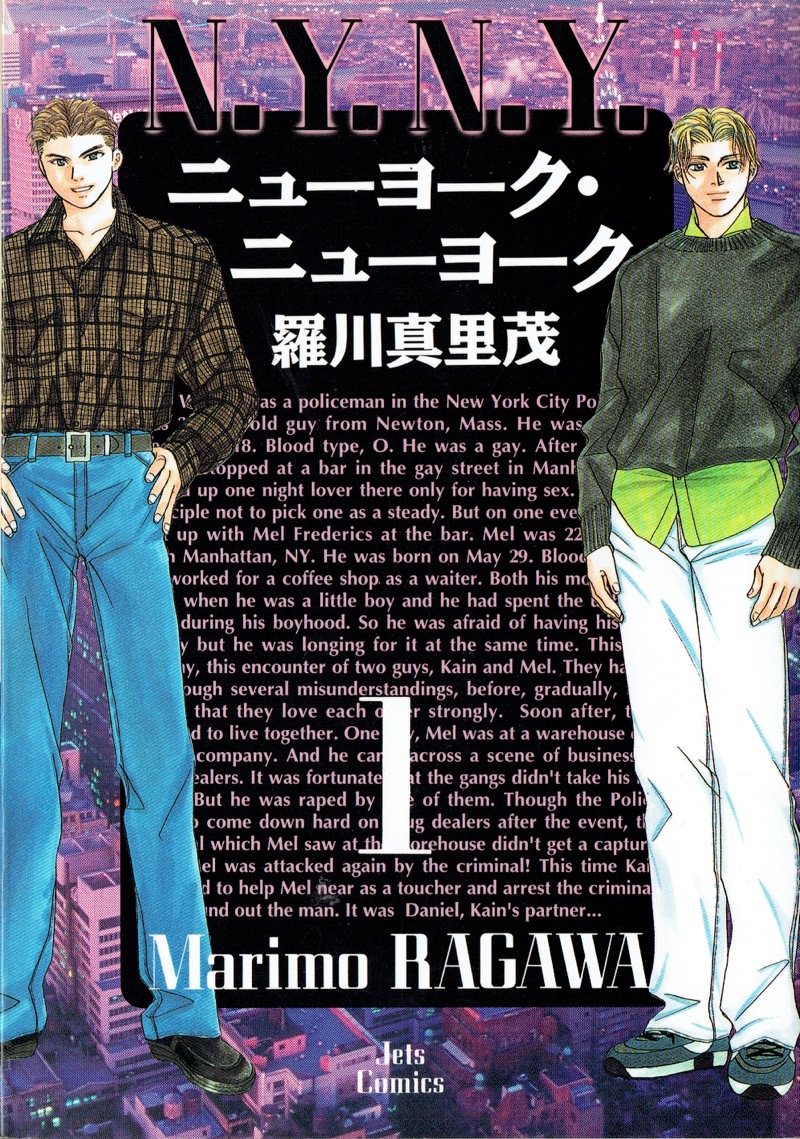
By Marimo Ragawa | 羅川真里茂
Hakuseensha | 白泉社
4 volumes, complete
Men loving each other
-- For a future when homosexuals find it easier to live
"The expression “same-sex marriage” has been receiving lots of attention these days. Literally, it is marriage between the same sex, either male or female. In June this year, a ruling by the US Supreme Court (“states that do not recognize same-sex marriage are violating the US Constitution”) became news. This manga is the story of a couple, Kevin and Mel, men who loved each other before the court ruling. Especially noteworthy is Volume 2, where Kevin visits his parents with Mel and comes out as gay. Through reactions of parents and others, you can understand how homosexual individuals have been treated in society. Yet the world is gradually changing. It is not unusual overseas to see a prime minister with a same-sex partner or an ambassador attending a party with a same-sex partner. In order to really understand that homosexuality is not a target to be ridiculed, and to believe in a future when homosexuals find it easier to live, reading this manga is highly recommended."(Yukari Fujimoto)

By Nobuko Hama | 波間信子
Kodansha | 講談社
33 volumes, complete
Only those who have lived through the experience would understand, but …
-- The heroine grows into a mature woman by meeting a guide dog
"The heroine grows into a mature woman by meeting a guide dog. Love, marriage, giving birth, raising a child, and interaction with society--this may seem like a commonplace story. However, there are so many things only those who have lived through the experience would understand when it comes to difficulties faced by the guide dog itself, even though the hardships can be logically understood. While broadening readers’ views and deepening understanding, this is a conscientious, first-rate work that provides support and encouragement to people dealing with disabilities every day."(Machiko Satonaka)
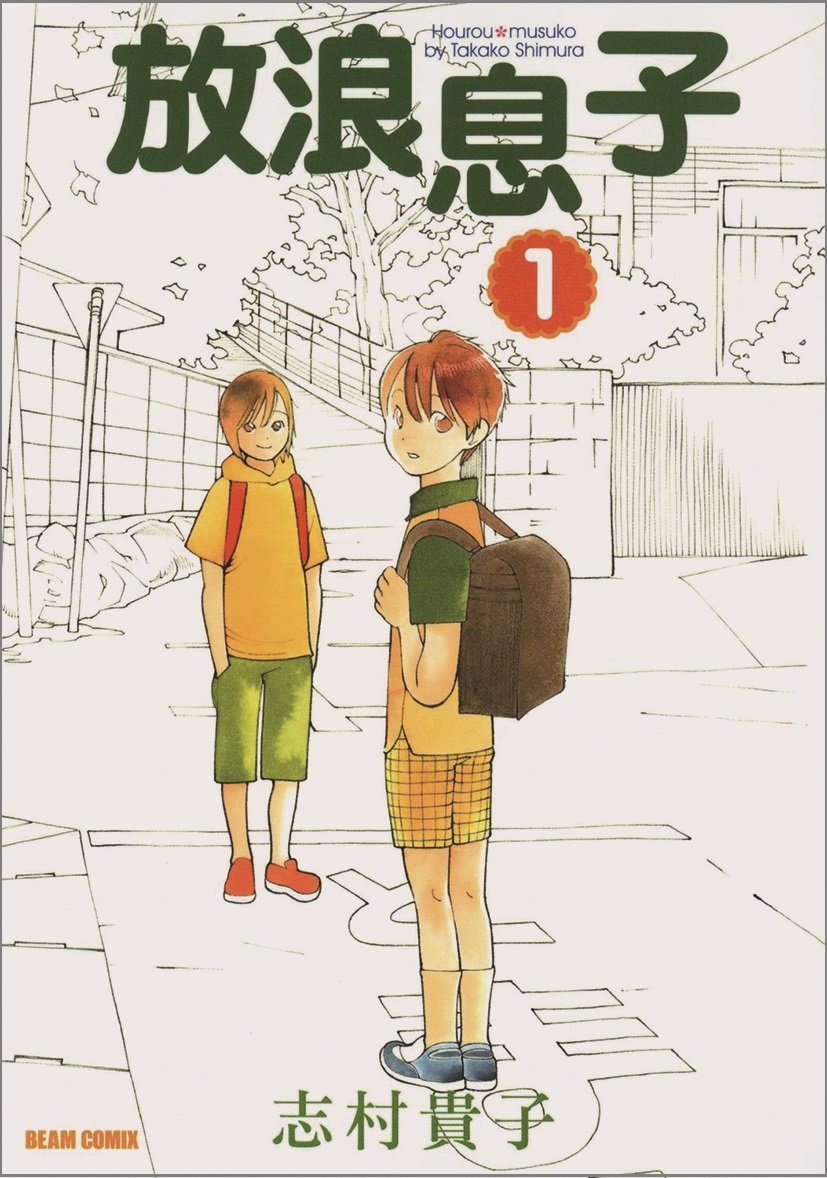
By Takako Shimura | 志村貴子
KADOKAWA
15 volumes, complete
Diversity and shades of gender
- Story of the growth of a boy who wants to be a girl and a girl who wants to be a boy
"This illustrates daily life of family and friends, focusing on a boy who wants to be a girl and a girl who wants to be a boy. Who am I? Am I different from others? These may be themes that trouble many young people entering adolescence. The author infuses the manga with a comforting, tender viewpoint sympathetic to such concerns and watches over the characters’ mental and physical growth. It also clearly shows that there are nuanced stages among sexual minorities as well as aspects that cannot be individually labeled as L, G, B and T. Highly recommended to those who feel that they are some sort of minority, and their families."(Yasuhiro Yamauchi)
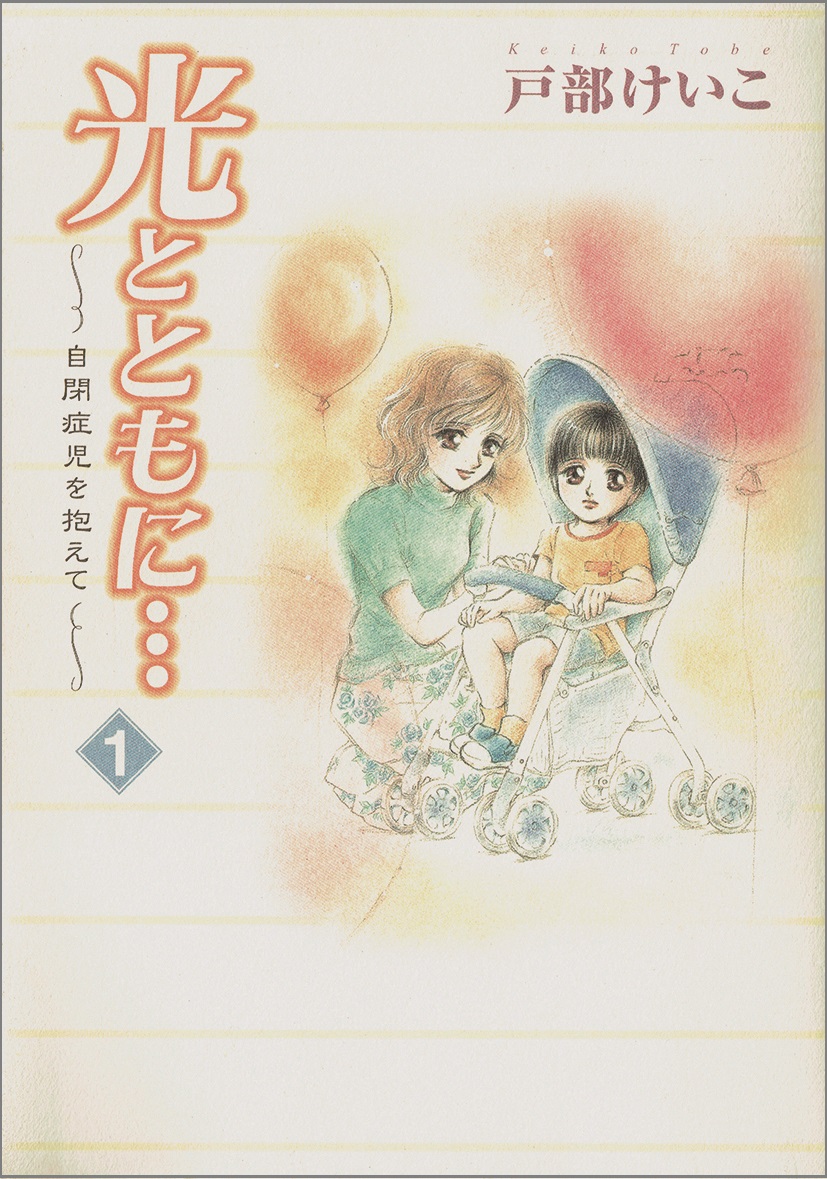
By Keiko Tobe | 戸部けいこ
Akita Shoten | 秋田書店
15 volumes, complete
In order to build a promising society
-- A motivational book that can readily be enjoyed as a drama and deepens understanding of autism
"This is well worth reading as a drama, and at the same time it is an excellent motivational book that deepens understanding of autism. Reading this manga made me realize that I didn’t really know as much as I thought. The author’s sincere effort has paid off beautifully. The manga is not pushy at all and has no sense of righteous anger, but it is something you can naturally enjoy as a drama and does make you think. An essential book in order to build a more promising society."(Machiko Satonaka)

By Ami Sugimoto | 杉本亜未
Kodansha | 講談社
9 volumes, complete
What are the qualifications to be a first-class magician?
-- A dyslexic boy becomes a magician
"The main character is a boy with dyslexia. His parents expect him to do “normal” things and do not recognize his efforts, and he has a hard time making friends. Then he meets Hojo, the grandson of a legendary magician, and sets out on a new path as a magician. Meeting a person who notices your strengths and tries to broaden them can significantly change your life. That key person may not be your family. The person may be a teacher at school or a total stranger you happen to come across somewhere. Even outside the family, there can be life relationships that change your destiny. This is an insightful, appealing manga suggesting the potential of all kinds of nurturing relationships. "(Yasuhiro Yamauchi)

By Gengoroh Tagame | 田亀源五郎
Futabasha | 双葉社
4 volumes, complete
Think about how to deal with awkwardness
-- A twin brother’s fiancé is a Canadian guy. What would you do?
"Have you heard the expression LGBT? It is an abbreviation of lesbian, gay, bi-sexual, and transgender, indicating minorities based on individuals' sexual orientation. This manga starts with a gay guy visiting his partner's twin brother. While you may not often think about sexual minorities, try this easy experiment. After your same-sex friend with whom you always hang out confesses to having feelings for you, both of you are going to take a bath together. What would you do in such a situation? You might feel vaguely awkward or confused. Otouto no Otto [My Brother's Husband] honesty depicts the confusion and awkwardness experienced by those in the majority toward people in the minority in matters of sexual orientation. Reading this story reveals the confusion inside you. Most of us want a society that is free of discrimination, and probably no one wants to discriminate against others from the beginning. However, there is undeniable discrimination in society. The manga provides an opportunity to think about the awkward times and how to deal with them. I hope everyone reads it as something with real relevance for them personally. "(Takeshi Kikuchi)
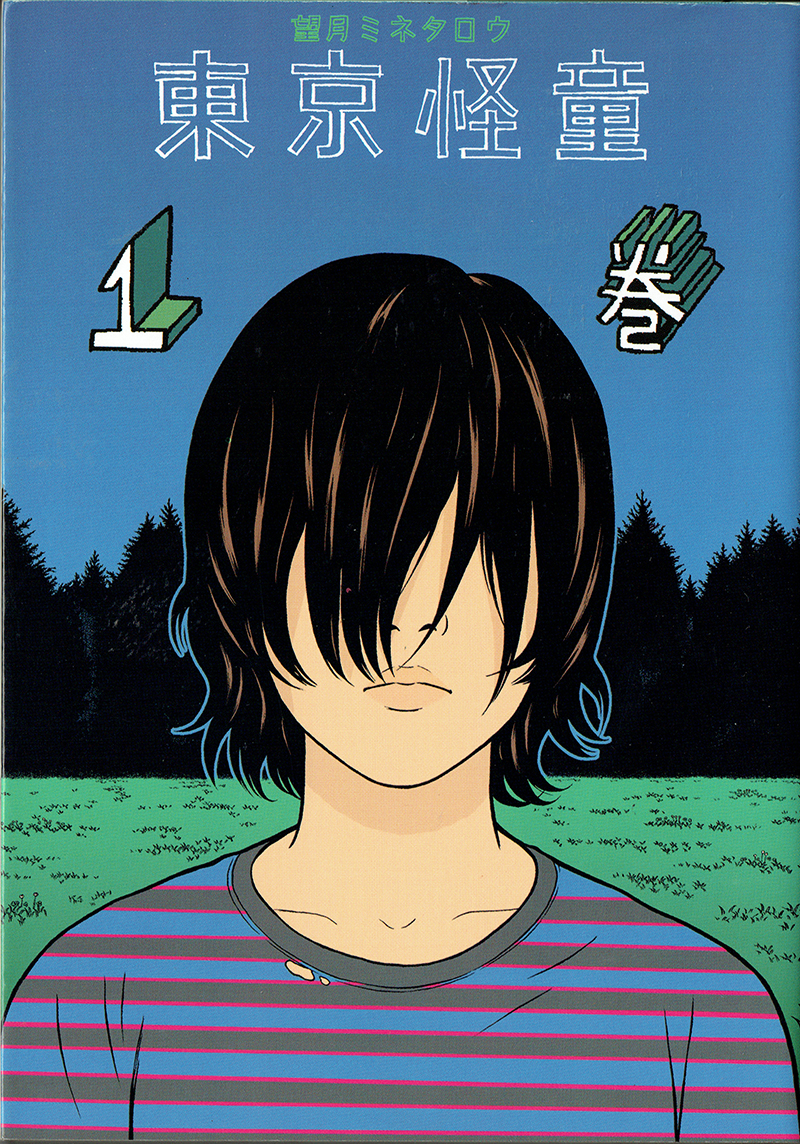
By Minetaro Mochizuki | 望月ミネタロウ
Kodansha | 講談社
3 volumes, complete
The mystery of human beings’ spiritual world
-- The isolation, exchanges and frustration of patients with brain problems
"A hospital for treatment and care of young people with brain problems is the stage of this manga. An accident has left debris in the brain of 19-year-old Hashi, and he says whatever he thinks and feels. Hana, 21 years old, suffers from sudden, unwanted orgasms in front of others. Another guy has extreme amnesia. These three inpatients cannot connect with society due to their illnesses. Then there is 6-year-old Mari, who cannot visually recognize people other than herself and lives in a world devoid of people. Hideo, 10 years old, believes he is a superhero who can contact aliens from outer space. They are also lonely kids. All five lead a hospital life, sometimes acting out or interacting with others. In the middle of the story, the children’s doctor, Dr. Tamaki, who also has an inner secret, asks himself, "Is it right to label the worlds of Hashi and the other kids as illnesses? Seeing the stars filling the sky makes me think that the number of brain cells of humans is greater than the number of stars I see in front of me." While this manga is about a minority in society who is targeted for discrimination and prejudice, at the same time it expands the imagination by giving more than passing thought to the mystery of the spiritual world and artistic creativity of human beings."(Koichi Yuri)

By Tomoko Yamashita | ヤマシタトモコ
Shodensha | 祥伝社
1 volume, complete
To know about women; a must-read also for men
-- A collection of short manga sequels that very delicately and deeply reveals what it is to be a woman
"The woman is tall and physically imposing, and she worries that she is seen as scary. Another woman is petite and has mastered the behavior guys find attractive. They are flip sides of the same coin. This is a collection of short manga sequels, and no other work has ever revealed so delicately or deeply what it is to be a woman. To know about women, this is a must-read for men as well. Case 3 should not be missed: a high school girl who happened to see an old lesbian couple kissing one day gradually lets go of the assumption that she has to be the same as everyone else. Readers will clearly notice that their common sense falls by the wayside as it spins, like doing a triple axel. "(Yukari Fujimoto)

By Keiichi Tanaka | 田中圭一
KADOKAWA | KADOKAWA
1 volume, Complete
Real voices of people who escaped from the tunnel of depression
What happens to sufferers of “cancer of the mind,” based on their experiences
"A groundbreaking manga that introduces cases of people in various occupations who came out of the mental tunnel of depression. Depression is a serious disease that is sometimes referred to as “cancer of the mind,” with as many as one out of 15 people experiencing it in their lifetime at least once. However, what kind of illness it is and how to cure it are not widely known. Due to limited understanding, symptoms tend to become serious and sometimes result in suicide. Utsunuke takes advantage of the light and easy-to-understand approach unique to manga to present the characteristics of such a serious disease and cases of people emerging from the tunnel. Of course one book cannot cover everything, but it is certainly a valuable work considering that many people are likely to be helped by this manga, just as the author himself once received help. "(Katsuhiro Motoyama)

By Taiji Utagawa | 歌川たいじ
KADOKAWA | KADOKAWA
1 volume, Complete
Reading this will certainly save someone
I am not a pig! Getting your life back
"Many children wonder if their parents love them. It is, in most cases, a temporary misunderstanding. Yet unfortunately, there does sometimes seem to be a lack of love when objectively viewed. In this autobiographical work, the author, who was born into a family that runs a small factory, confesses that he had been neglected by his mother for a long time since a young age. Workers at the factory were the only people to show kindness to the troubled and lonely author. In particular, the last words of an old lady who worked part-time mark a major turning point for the author. Self-affirmation in the face of only negative comments from others ... how to get your life back ... the process the author, who is gay, went through as he established his current relationship with his partner ... and meeting his mother after a long time. There is no doubt that reading this work will save someone. "(Yukari Fujimoto)
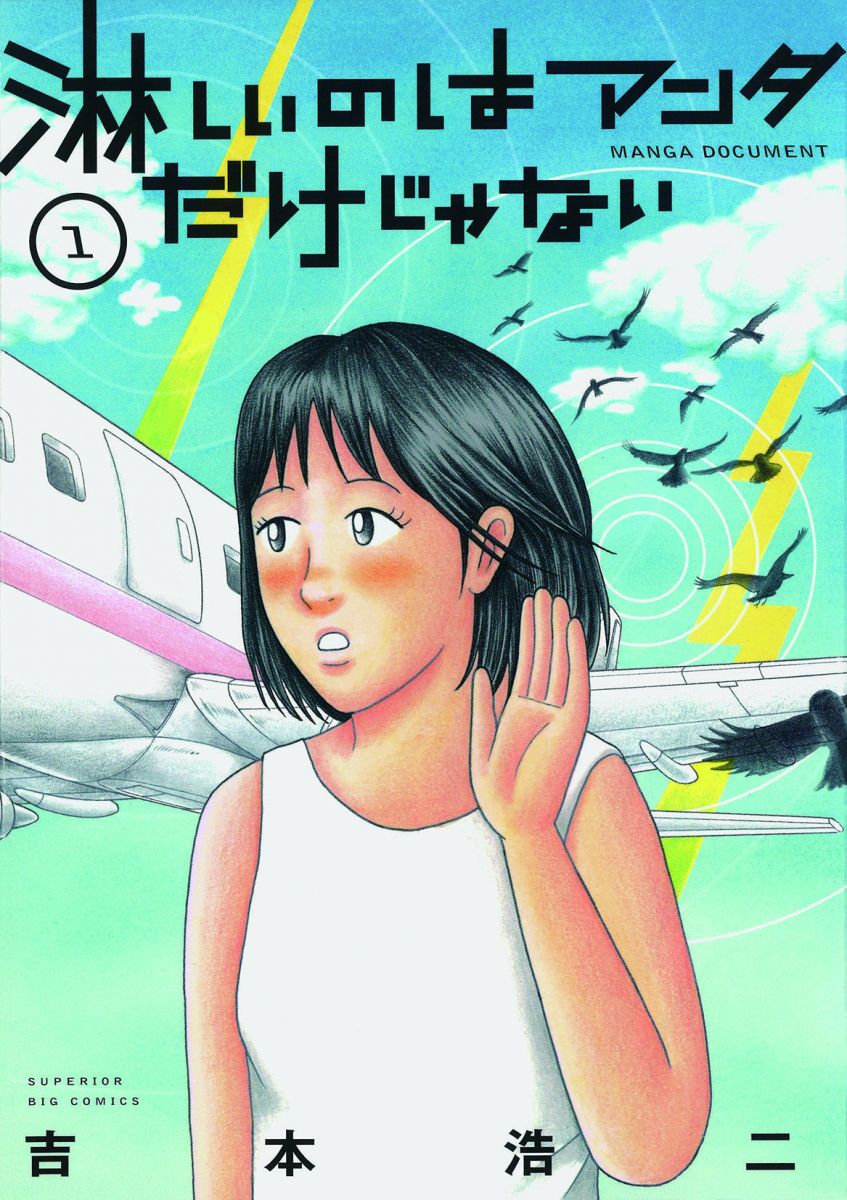
By Koji Yoshimoto | 吉本 浩二
Shogakukan | 小学館
3 volumes, Complete
Examples of "not being able to hear"
How hearing-impaired people hear sound, as expressed by manga
"For us who can hear, it is hard to fully understand how hearing-impaired people hear sound. We tend to imagine a state where no sound is heard, yet in many cases that is not what happens, and sound is heard, albeit vaguely. Reading this manga clarifies in detail what they sense. Descriptions based on constant gathering of information from people with hearing disabilities allow us to relive their fears and concerns as they go about their everyday routines. There are a number of books that explain about the hearing impaired, yet it is hard to find contents that let us experience their feelings. This is indeed the power of manga."(Youhei Sadoshima)

By Tenten Hosokawa | 細川 貂々
Gentosha | 幻冬舎
3 volumes, Complete
What if your loved one goes downhill one day?
A gentle record of me and my partner, who suffers from depression
"The first best-seller on depression. This was made into a TV drama and a movie, and had big social repercussions. Despite the serious theme of depression, the gentle touch of manga and comical interaction of a married couple provide balance and make the work fun to read, if insensitively put. Still, it hits the key points of characteristic depression symptoms and countermeasures. I read this work as a manga about the love of a married couple, in addition to a depression manga. Going through a serious disease with gentle exchanges like those in the humorous act of the wife-husband comedians reveals a warm love. Essays by the author’s husband, who is suffering from depression, are inserted throughout the manga, and they also make us realize something important about people. "(Katsuhiro Motoyama)

By Mieko Osaka | 逢坂みえこ
Kodansha | 講談社
3 volumes, Complete
Raising a child in a way only I can do
Struggles of a first-time daddy with Asperger’s syndrome
"Raising a child never goes the way adults plan. The wife, Kaho Tokuda, is an editor who just returned to work after parental leave. Care for her months-old son is left with her husband, Nao, who is currently out of work. Nao has to deal with the unfamiliar routine of child care and house chores as well as his own Asperger's syndrome, which he had not been aware of. This is a child-rearing (parent-rearing) manga that illustrates Nao’s progress on the path to becoming a “pro daddy” after he recognizes his mission as a father through everyday struggles to raise his son. For those with Asperger's syndrome, where unexpected events cause panic attacks, the tendency of child-rearing to defy planning must be very painful. However, Nao, with his intrinsic logical thinking, employs a number of creative ideas and becomes able to stop his son’s crying or lull him to sleep. The cheerful and optimistic personality of his wife is nice to see. This work not only shows us how to raise a child but also how to deal with Asperger’s syndrome, and renews the idea of child-rearing as something fun. "(Naoko Hosoda)

By Mooto Hagio | 萩尾望都
Shogakukan | 小学館
1 volume, complete
For everyone troubled by family relationships
-Take another look at family and yourself every time you read it
"Have you ever thought that you hate your parents, or only your younger or older siblings get favors? It happens, as your parents are also human. But there might a secret reason your parents are the way they are, a secret even your parents do not know. This story of only 50 pages or so has the magical power to make you reconsider family, parents, and yourself. For now, it might simply be interesting somehow. But you’ll discover something new every time you read it. Now, are you ready to look in the mirror?"(Yukari Fujimoto)

By Yamatochi Ue | うえやまとち
Kodansha | 講談社
144 volumes, ongoing
Ideal dad, ideal family
-- A recipe manga that delightfully solves problems at home and the workplace through tasty food
"This was the pioneer of men’s gourmet cooking manga that featured recipes. Until then, gourmet manga for men were all about cooking battles; this one took the form of a recipe manga, a style that was occasionally seen with manga for girls. The setting of a double-income family where the father cooks for family between work and the mother is a career woman was quite new when the series started. The family's attitude of creatively solving the difficulties associated with double-income situations and turning them into something enjoyable may present an ideal family image, or a modern version of Sazae-san. Yet without thinking about these things, it can also be enjoyed simply as a manga that offers delicious-looking dishes one after another, and this is another appeal."(Tomoko Yamada)

By Jun Mihara | 三原順
Hakusensha | 白泉社
6 volumes, complete
A “book for the soul” that has saved many readers
-Learn to have the strength to put self-pity behind you and confront reality
"Everyone probably has thought, “I want to leave home.” Never? Then you are a happy person. This story revolves around the wandering of four children who left home as a result of child abuse. Many people would sympathize with the line, “What we want is not people called parents, but people who really love us.” Yet this manga has no element of mutual comfort or self-pity. Reality is tough. And by confronting the tough reality, even children take responsibility for their own lives. As a book for the soul, this manga must have saved many people. "(Yukari Fujimoto)
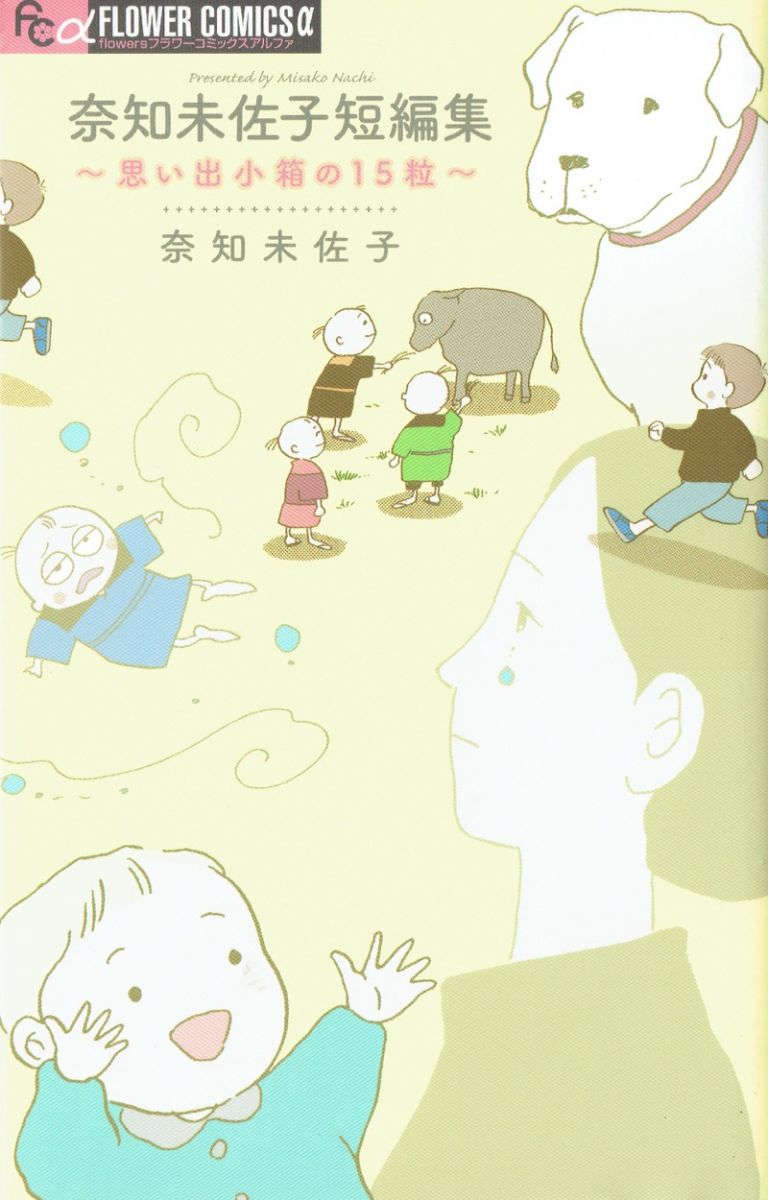
By Misako Nachi | 奈知未佐子
Shogakukan | 小学館
1 volume, complete
After finishing, you’ll cherish the world
-- A collection of fairy-tale style manga set in different times and cultures
"A collection of fairy-tale style manga that take place in different times and cultures. In a matter-of-fact tone, it moves from story to story, including tales of good and bad people, adults and kids, the elderly, men and women, and even various creatures, all in the same detached manner. This collection has the intriguing appeal of making you hold all living things dear. Simplified illustrations have a gentle touch and are not forceful, affirming the value of simply living. The manga is not flamboyant; rather, it is something you want to keep nearby so you can read it again when the mood strikes. Every time you pick it up, you will find something new. I really hope all libraries have this manga in the kids’ section. If you like it, please pick up other collections of short manga. "(Tomoko Yamada)
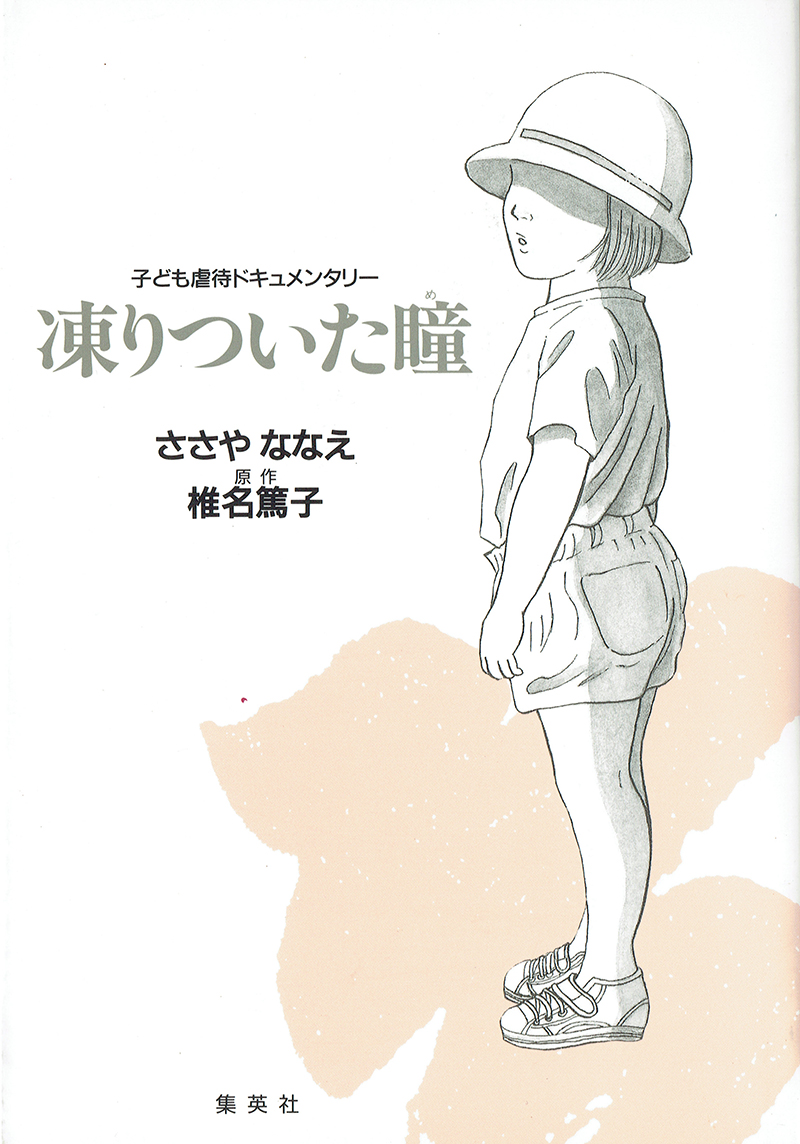
By Nanae Sasaya, Atsuko Shiina | ささやななえ(画),椎名篤子(原作)
Shueisha | 集英社
1 volume, complete
Don’t turn your back on this reality
-- A social documentary that straightforwardly depicts child abuse
"A documentary manga that straightforwardly depicts the somber theme of child abuse. In all honesty, this is not something I want to see, yet the work shows a reality that we should not ignore. “Frozen watchfulness” is the term for children gradually losing facial expression due to not being able to trust parents as a result of abuse. Yet far inside their frozen eyes there is a hidden heart crying out, “I wanted my parents to love me.” Children who were hurt physically and psychologically by parents grow up in a foster home, meeting their mother with hopes for a gentle hug, yet once again are hurt. Each episode presents despair. At the same time, the frayed affection between parents and children, difficulties, and frustration make the message universal, not like something only for someone else. The number of child-abuse consultations has been increasing every year, exceeding 100,000 cases for the first time in 2015. It is a serious social issue. This social documentary raised the issue early on when child abuse did not draw much attention in Japan. "(Katsuhiro Motoyama)
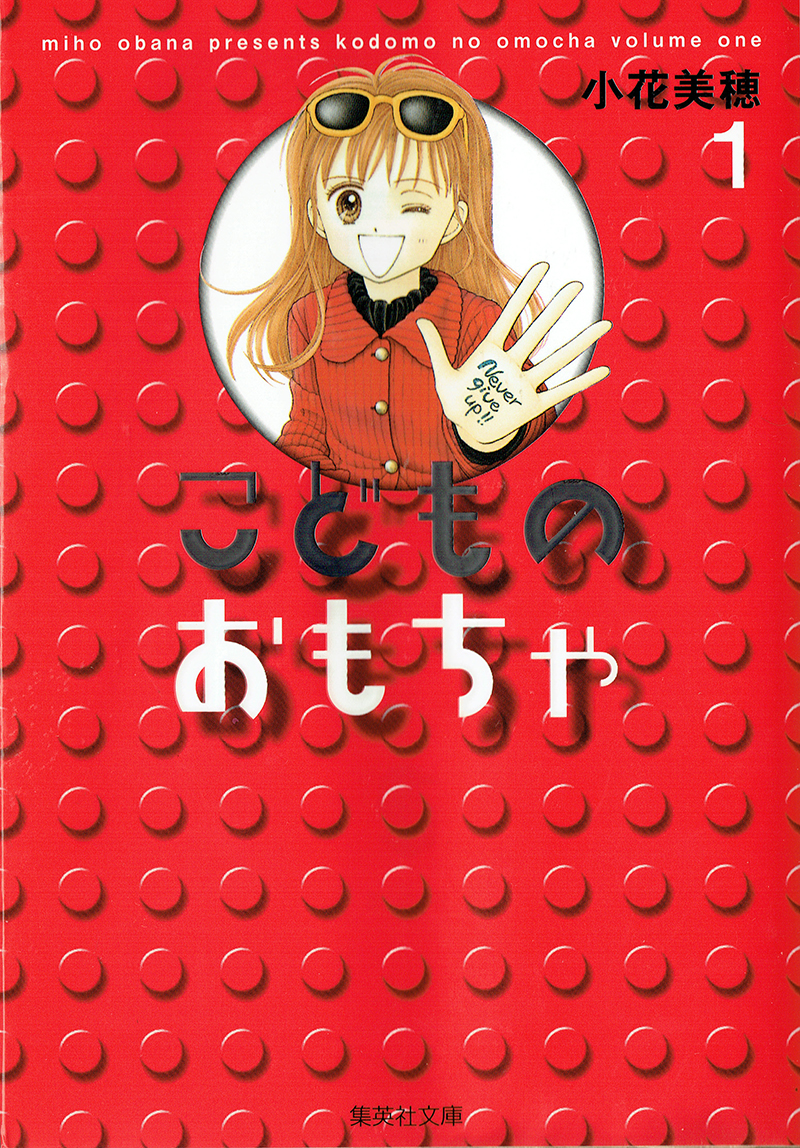
By Miho Obana | 小花美穂
Shueisha | 集英社
10 volumes, complete
What does it mean to become an adult?
-- A 6th grader who is an actress faces family and bullying issues
"Some of you might think this manga is a childish story when hearing that the main character is a girl talent, someone many readers of Ribon (the magazine that publishes this manga) likely aspire to be like. When you actually read it, however, you will understand its insightfulness and depth, which not only girls but adults and men can sympathize with. While girls will be immediately captivated by the story, the manga shows what it means to become an adult, highlighting various issues children confront during adolescence, such as relationships with parents and bullying. Children are not simply living in a dream world. They certainly reach the point of discovering reality and accepting it. This manga is amazing, as it illustrates the real world in a way that makes children curious. It is an excellent work that shows the author is taking readers seriously."(Youhei Sadoshima)

By Kenji Taketomi | 武富健治
Futabasha | 双葉社
11 volumes, complete
Think it through and find an answer
-- The tremendous ambition and thorough logic of Mr. Suzuki, a junior high school teacher
"Mr. Suzuki, a junior high school teacher of tremendous ambition and tenacity, creates hypotheses, validates them, and resolves issues at school. This is an ambitious story that takes up a number of concerns to which we are forced to turn a blind eye, despite needing to address them seriously at education sites. For example, Mr. Suzuki is very nearly obsessed with things others dismiss if the issue does not bother them, or if raising the topic could be seen as narrow-minded, such as “table manners.” How Mr. Suzuki deals so seriously with these issues is funny, creating overwhelming appeal. The manga thoroughly illustrates various opinions on difficult, controversial topics and does not easily reach conclusions. It makes you realize the importance of thinking things through on your own and finding an answer."(Tomoko Yamada)
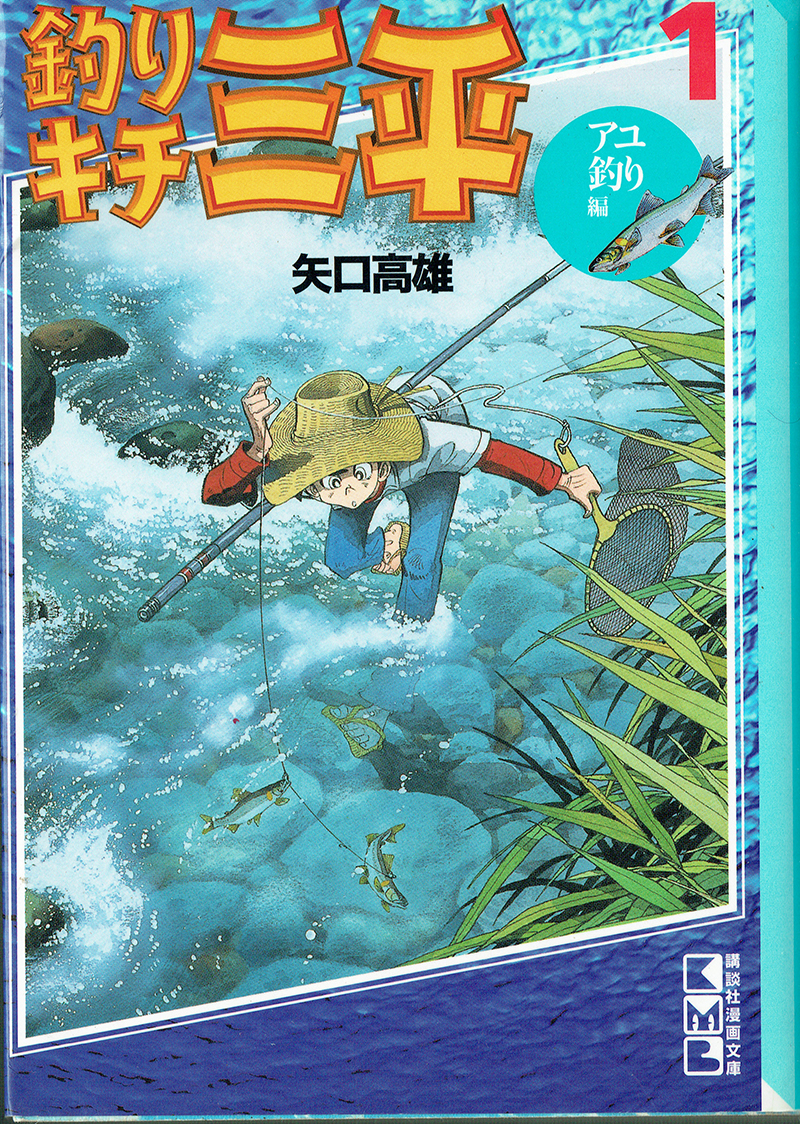
By Takao Yaguchi | 矢口高雄
Kodansha | 講談社
65 volumes, complete
To fish is to live
-- The best guidebook for playing in nature and enriching daily life
"The pioneer in fishing manga, and still the best. This work created a fishing frenzy among young and old as well as men and women, both inside and outside Japan. It is a “must read” manga to learn through fishing how nature works and how people act. Sanpei Mihira, the main character, is a boy who loves fishing, and his straw hat and Tohoku dialect are his trademarks. While learning from Grandpa Ippei and Gyoshin, a mysterious fishing master, Sanpei uses a variety of fishing techniques to catch distinctive species in the ocean, rivers, and lakes. Worthy of special mention is the sense of reality. Virtually the whole work is based on author Takao Yaguchi’s experience, and the manga is a useful fishing textbook. In addition, it can be enjoyed as a travel journal, as it richly depicts the culture and climates of different locations all over Japan. You will find your palms sweating as you read and anticipate visiting the waterfront to fish for a legendary species that has never been seen. Tsurikichi Sanpei does not end when you finish reading, and is the best guidebook for playing in nature and enriching daily life."(Takeshi Kikuchi)
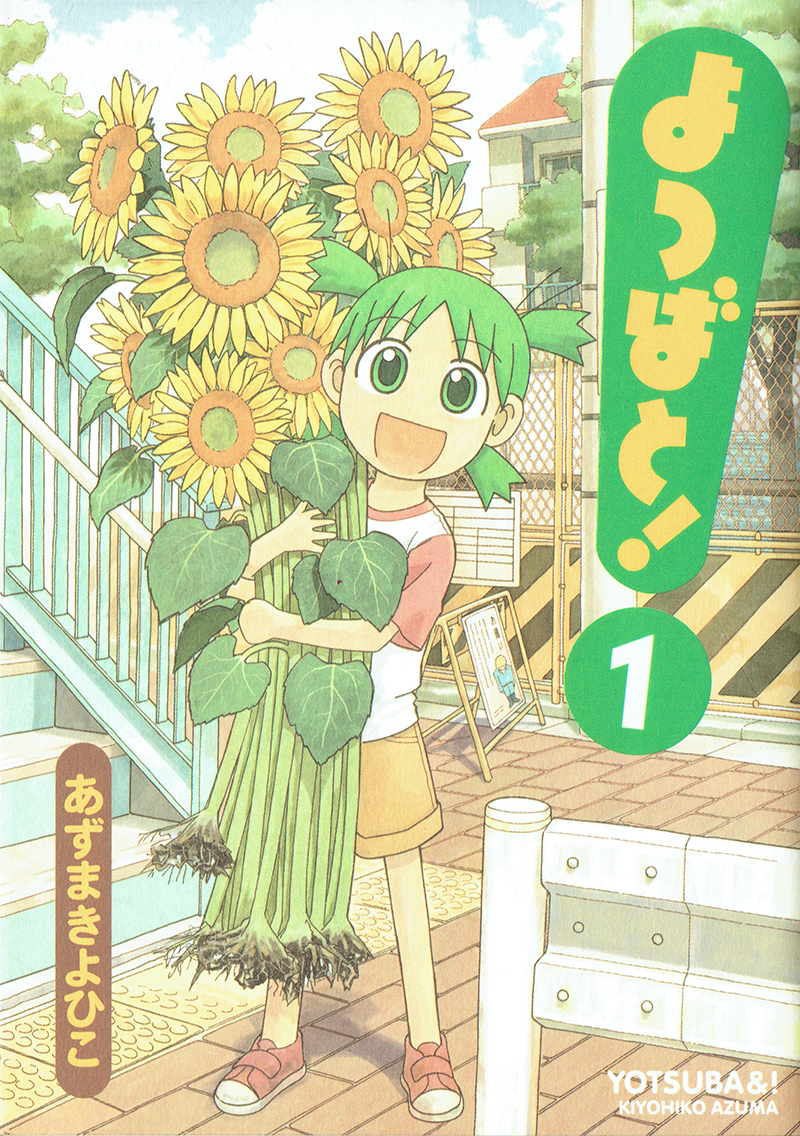
By Kiyohiko Azuma | あずまきよひこ
KADOKAWA
13 volumes, ongoing
Scenery that adults have forgotten
-- The heartwarming daily life of a 5-year-old girl, Yotsuba, and To-chan
"There might be something you sensed when very young but started not to notice as you got older. Most people anticipate what is ahead based on experience as they grow up. They then accept it as a fact taken for granted, and think no further. This is probably a wise idea for people to live, but sometimes it may derail you from the essence, or a person’s original intention. The manga depicts the heartwarming everyday routine of Yotsuba, a 5-year-old-girl, and To-chan. Yotsuba repeatedly asks, “Why?” It lets you remember the first “scenery” that adults have forgotten, and recall how interesting it is to see the world from an unhindered viewpoint. The work is also about “family,” including neighbors and To-chan’s friends, raising Yotsuba together. While watching over her as she grows, they themselves may be learning from Yotsuba about original intention. This manga shows us new ways of being a family and rearing children."(Yasuhiro Yamauchi)
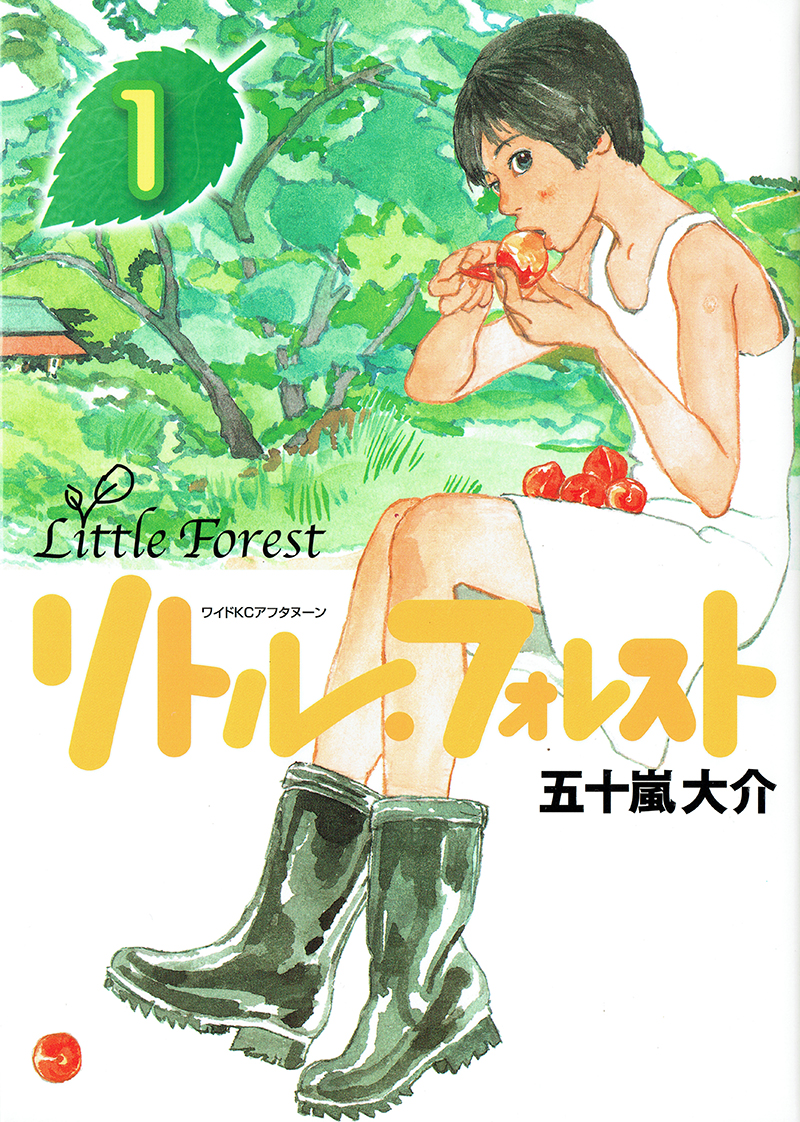
By Daisuke Igarashi | 五十嵐大介
Kodansha | 講談社
2 volumes, complete
Eating nature’s bounty
-- How to grow, harvest and prepare delicious vegetables, fruits, grains, birds and animals
"It begins like this: A friend has moved to a small village in the Tohoku region, and sends beautiful letters filled with drawings of the village’s seasonal food and events. The first episode is about making silverberry jam. The harvested fruit is strained to remove seeds and then simmered, adding sugar equal to 60% of liquid weight while checking the taste. If it tastes too sour, add more sugar (up to 100% of liquid weight). A full tray of silverberries makes 3 jars of jam ... and so on, all carefully illustrated step by step, showing how various vegetables, fruits, grains, birds and animals are grown or raised, harvested, cooked and made into delicious food in the village. But this is not a mere recipe manga. The work conveys the author’s thinking that passing down knowledge and techniques to process nature’s bounty into food on your own is the fundamental act of human beings. This is also a wakeup call for the industrialized urban food culture."(Koichi Yuri)

By Jirou Taniguchi | 谷口ジロー
Shogakukan | 小学館
1 volume, Complete
At the deathbed of a beloved pet ...
Last days of an old and much loved dog, and life of the family afterward
"The last days of an old dog and interaction with a childless married couple. The dog cannot really go on walks anymore although he always enjoyed them, he accidentally pees, and he needs a drip infusion. After the drip infusion loses effect, the tube is removed, and the dog lives for another week before passing. The couple stays with him and attends his deathbed. Rather than simply about keeping a pet, the work offers a detailed account of the richness, heartache and sadness of living together. Other works in the paperback of the same title—including Soshite … Neko o Kau [And Then, Keeping a Cat], Niwa no Nagame [View of the Backyard] and San-nin no Hibi [Days of Three People]—show the interplay of young lives, such as keeping a cat after the death of the dog, the cat giving birth to three kittens, and a niece who leaves home and joins the scene. It is a gem of a series that pays close attention to how people live as they care for other beings in both life and death. "(Ichiya Nakamura)
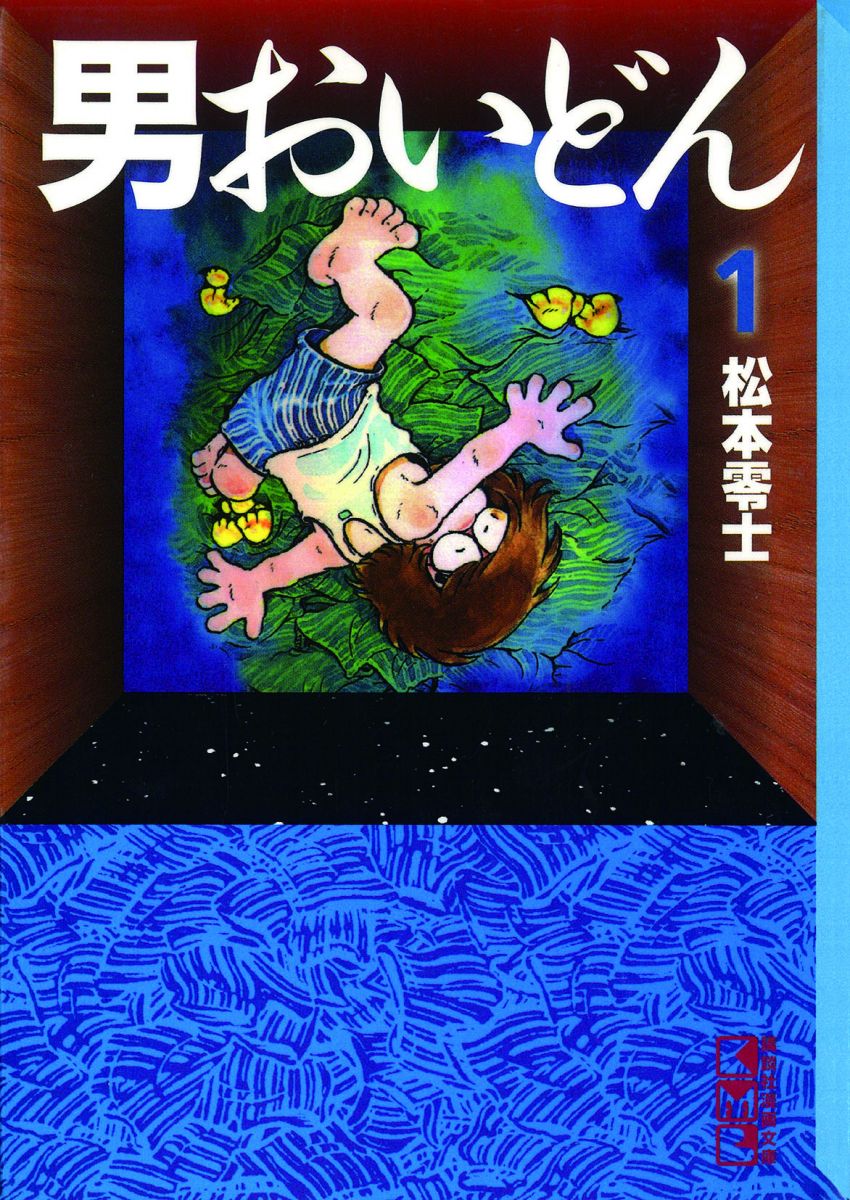
By Leiji Matsumoto | 松本零士
Kodansha | 講談社
9 volumes, Complete
A four-and-a-half mat room, no bathroom, but I have a dream
A tiny tatami room at a boarding house in the 1970s—the pathos and laughter of a young man who has nothing
"A pathos gag manga illustrating the dead-broke young life of Nobotta Oyama, a guy from Kyushu who has nothing—no money, no popularity with girls, and nothing to do. The work was published as a series in Weekly Shonen Magazine in the 1970s. “Oidon [me],” the main character who came to Tokyo with great ambitions, lives in a four-and-a-half tatami mat room in a boarding house (shared toilet and sink, no bathroom). In the closet, there are 64 pairs of damp striped underpants covered with mold and jock itch fungus. The underpants are infested with sarumatake mushrooms, and he studies “sarumatake mushroom cultivation methods and nutrition analysis," yet the mushrooms seem unsuitable for consumption. Oidon sleeps today for tomorrow, while tomorrow he’ll sleep for today; his heart is broken repeatedly by the beautiful girls at the boarding house; his landlady offers sympathy; and he survives on ramen and rice. Readers found themselves unexpectedly sympathetic with his lifestyle. Much like the author, readers were able to identify with the struggling youth of Oidon and took encouragement from his indomitable fighting spirit, which one day may result in a great figure. This is an impressive work that put Reiji Matsumoto on the path to fame before he climbed to the top with Space Battleship Yamato and Galaxy Express 999."(Koichi Yuri)

By Kio Shimoku | 木尾士目
Kodansha | 講談社
9 volumes, Complete
Manga, anime, games, love, friendship, and the future
Life of an “indoor” college student, quiet yet full of youthful spirit
"The title, Genshiken, is an abbreviation of Gendai Shikaku Bunka Kenkyukai [The Society for the Study of Modern Visual Culture], the university club where the manga is set. Sasahara, a new student at Shiio University, unexpectedly joins Genshiken, whose main activities revolve around games, watching videos (anime) and reading books (manga). This youth manga portrays the personal relationships and love that develop at the club. Aside from manga, light novels, anime and games, various types of subculture—including character figures, cosplay, capsule toys, trading cards and plastic models—are featured. The work even includes an episode on Gundam models, with the approval of Sunrise and cooperation of Bandai. Readers can gain detailed knowledge of all sorts of subculture genres as well as get to know the reality of current college students, from their actual lifestyle to human relationships and love. "(Naoko Hosoda)

By Osamu Akimoto | 秋本 治
Shueisha | 集英社
200 volumes, Complete
Seriously done funny! 40 years of Ryo-san and everyone
The outrageous routines of Ryo-san, Japan’s most famous policeman
"Kochira Katsushika-ku Kameari Koen Mae Hashutsujo, often shortened to KochiKame, has been popular for 40 years, cutting across time and generations despite being published in a magazine for boys, where generational turnover is taken for granted. Every single week, Ryo-san, the main character, goes wild in episodes that range from everyday topics to space development and environmental issues, offering spot-on punchlines. Readers never tire of the series. Self-centered and annoying Ryo-san is supposed to be a “bad” character, yet when he plans something silly for his own benefit, readers cannot help hoping he will succeed. It’s simply a miracle that such a preposterous middle-aged man continues to play the main role in a magazine for boys. Characters also accept this troublesome Ryo-san, and personal interaction is comforting for readers. The work is intuitively interesting and professionally done. The author is extraordinarily serious about depicting the process of Ryo-san’s silly jokes rising to the level of art. For boys in Japan, Ryo-san is like a brain food. "(Machiko Satonaka)

By Youko Hashino | 端野 洋子
Kodansha | 講談社
3 volumes, Ongoing
Made in Fukushima—what the expression involves
Stories of farmers after the nuclear power plant accident, illustrated by a Fukushima resident
"It takes determination to portray post-disaster Fukushima, in particular for the author, who has been living there. Volume 1 features dairy husbandry, and Volume 2 takes a look at shiitake mushroom farmers: the difficulty of leaving the cows you cared for and then needing to put them down; premium outdoor-grown shiitake, which took a lot of labor, turn into highly contaminated waste overnight; and even shiitake grown in sealed greenhouses are unreasonably labeled as contaminated ... in order to fully grasp actual farming sites in Fukushima after the nuclear power plant accident and to illustrate them with good judgment and determination, the author participates in local volunteer activities whenever she finds time (from a Mainichi Shimbun interview). Although in the same Fukushima, the highland town where the author lives and the ocean town are different. The reality is not one-dimensional but much more multilayered and complex than we think. With careful strokes that elicit a sigh of deep admiration, the author depicts the complicated reality of Fukushima, including reactions to reputational damage. There are surely things we will begin to see by reading this work. "(Yukari Fujimoto)

By Kimidori Inoue | 井上 きみどり
Takeshobo Bunko | 竹書房
3 volumes, Ongoing
What really happened to us after that
A real report on everyday life of people who continue to live in Fukushima after the earthquake disaster
"An essay manga that tracks individual experiences of people in Fukushima who went through the Great East Japan Earthquake and nuclear accident. The manga does not take a high-handed approach; it depicts the real, life-size routines that individuals experienced from their viewpoints, and this is why readers will discover something important. Difficulties surrounding life as an evacuee. The frustration of concern over radiation together with the desire to return to their hometown. Conflicts between evacuees and the side accepting them in Fukushima Prefecture. The discrimination outside Fukushima Prefecture simply because of being from Fukushima. The people who try to support them. The attitude of living positively while feeling insecure. We should not forget what happened or treat it as something that happened long ago. Yet due to the seriousness, it is hard to get into the personal lives of the people of Fukushima. Here their experiences are presented without making you feel uncomfortable. I hope many people, from elementary school children to adults, read this manga. "(Katsuhiro Motoyama)

By Rieko Nishihara | 西原 理恵子
KADOKAWA | KADOKAWA
4 volumes, Complete
Live, even if painful; some days are warm
Everyday life of Yunbo, a boy who lives with his mom, and his buddies
"A genial, nostalgic and heartwarming story of a mother and son as well as boys growing up. Yunbo, his mom and the boys who live in a small town enjoy the freedom of a carefree life while being true to their own feelings. Yet in reality, when put into formal social terms, they live in an environment of single mothers, poverty and rifts between parents. The genuine behavior of Yunbo and others makes readers forget about differences in environment and time, and somehow feel nostalgic. Exchanges between characters that trigger a little chuckle let readers think about the important things as people. Love of children. Honest feelings toward parents, both of love and of hate. Silly but important time with friends. Taking time to think about what happiness is while getting a small laugh—this manga can also teach us something. "(Katsuhiro Motoyama)
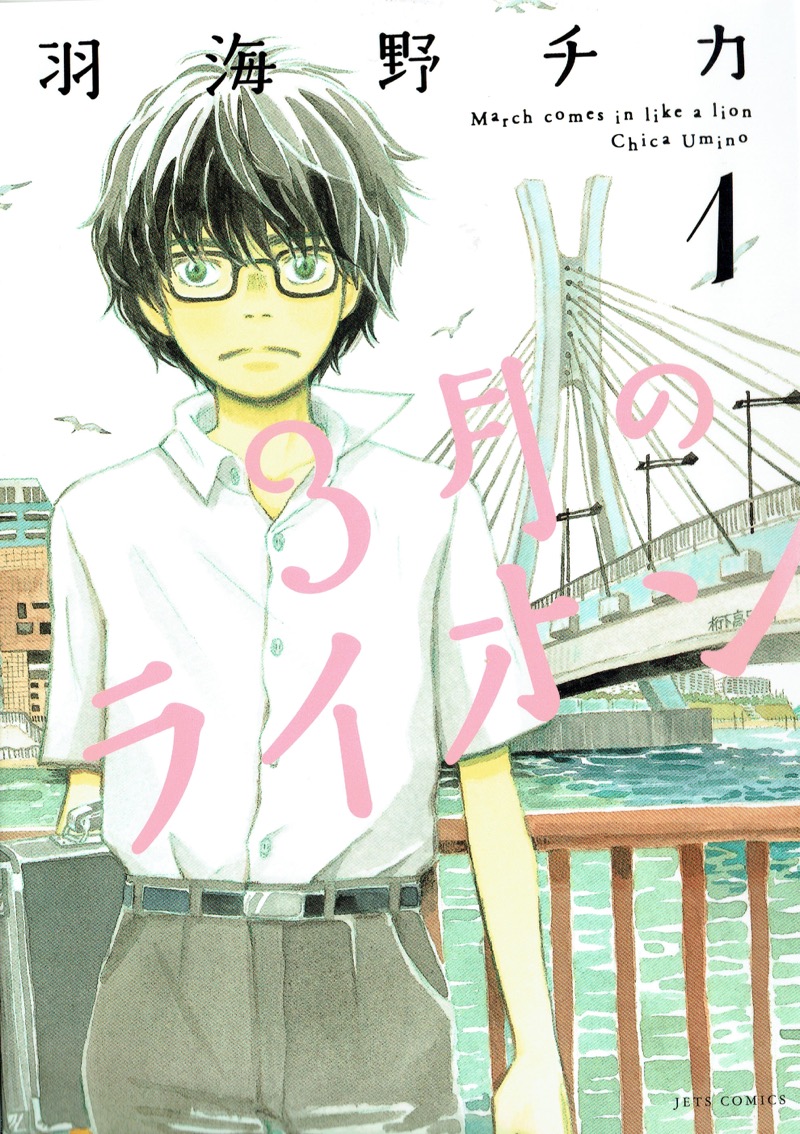
By Chika Umino | 羽海野チカ
Hakusensya | 白泉社
13 volumes, ongoing
A lonely shogi whiz kid finds his place
-- For everyone searching for their place in the world. A tough and heart-warming human drama
"The story’s main character is a genius shogi player who is searching for his place in life, and finally finds it. Anyone who feels lost at school or home should read this. An accident has claimed the lives of the main character’s family, and the center of his life is the world of shogi. He starts to find his place through his supporters and time spent with serious rivals. Needless to say, this is a heart-warming human drama, yet the depiction of shogi as a profession is also fascinating. It explains the mechanism of the shogi world and how players spend their days when no matches are scheduled, making the professional world seem familiar."(Yasuhiro Yamauchi)
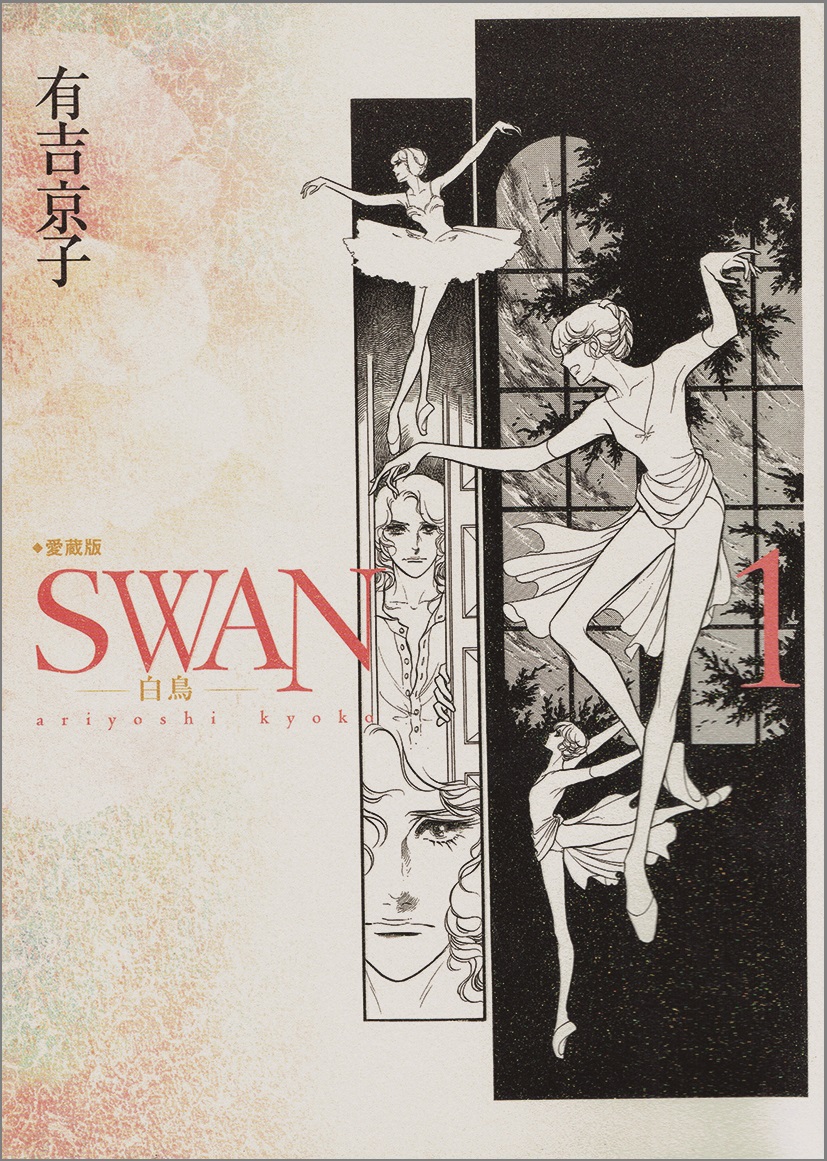
By Kyoko Ariyoshi | 有吉京子
Shueisha | 集英社
21 volumes, complete
Encountering the miracle of going beyond yourself
- The ultimate world of ballet that reaches the point of expressing forms of human existence
"In ballet, standing on your toes and raising your arms to the sky seems to represent aspiration to the heavens above. In modern times, butoh dance emerged and takes the contrasting approach of expressing the power of gravity with feet firmly planted. At the beginning, ballet was narrative; over time, it has become increasingly abstract, transforming itself to communicate forms and movement. Yet human emotions still emerge from within along with forms of human existence. SWAN depicts a girl’s growth as a ballerina as well as the history of ballet expressions. Through SWAN, you will gain basic knowledge of the art’s history and ballet companies of the world, in addition to encountering the eternal human aspiration to the miracle of going beyond yourself. "(Yukari Fujimoto)

By Haruko Kumota | 雲田はるこ
Kodansha | 講談社
10 volumes, complete
It’s a shame not to know rakugo
-- An ex-punk aims to become a rakugo storyteller. What comes after mastering the art of performance?
"Yotaro, an ex-punk, heads to a vaudeville theater when he is released from prison. He had been moved by Shinigami [God of Death] performed by rakugo storyteller Yakumo during a visit to the penitentiary, and upon release Yotaro goes directly to Yakumo to ask to be his apprentice. Yakumo finds big-bodied but funny Yotaro likeable, and breaking his usual rule, takes him on as an apprentice, much like picking up a puppy. Also living with Yakumo is the temperamental Konatsu, who is skilled in rakugo and hates Yakumo for some reason. The art of performance by Yakumo, a master of this generation, is said to be something no one can match. Why then is Yotaro accepted as his first apprentice, as he seems completely unable to take over the performance. Is it because Yotaro reminds Yakumo of Sukeroku, a rakugo buddy from childhood Yakumo will never forget? Sukeroku, who died mysteriously at a young age, is the father of Konatsu, and she suspects Yakumo may be involved in her father's death. They quarrel every time sometimes happens under the same roof. Yotaro gradually starts to have an effect on both of them. "(Takeshi Kikuchi)
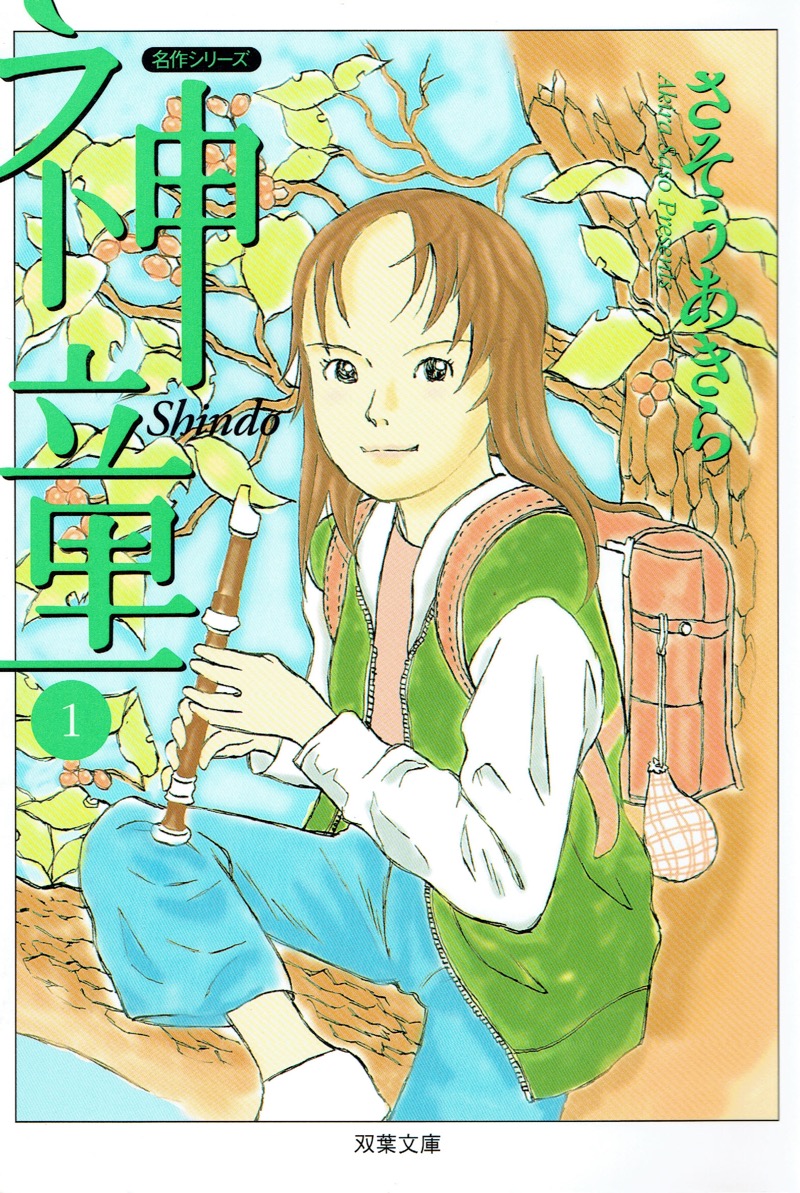
By Akira Saso | さそうあきら
Futabasha | 双葉社
4 volumes, complete
The world is filled with music
-- The world is full of music: How then does a soundless manga depict sound?
"Do you know the expression “perfect pitch”? It is where you hear everything—from the siren of an ambulance to the sound of trees swaying in the breeze--in the “do-re-mi” scale, and can write it as musical notes. This work features a girl with perfect pitch and depicts the music that fills the world. The girl plays piano. She also plays baseball. You may wonder if she worries about her fingers, begging the question: Is talent so important? Isn't the wish to live a certain way more important? This work's depictions of sound using illustrations are amazing. Despite manga not having sound itself, everyone can experience how it feels when the world begins to fill with music. "(Yukari Fujimoto)
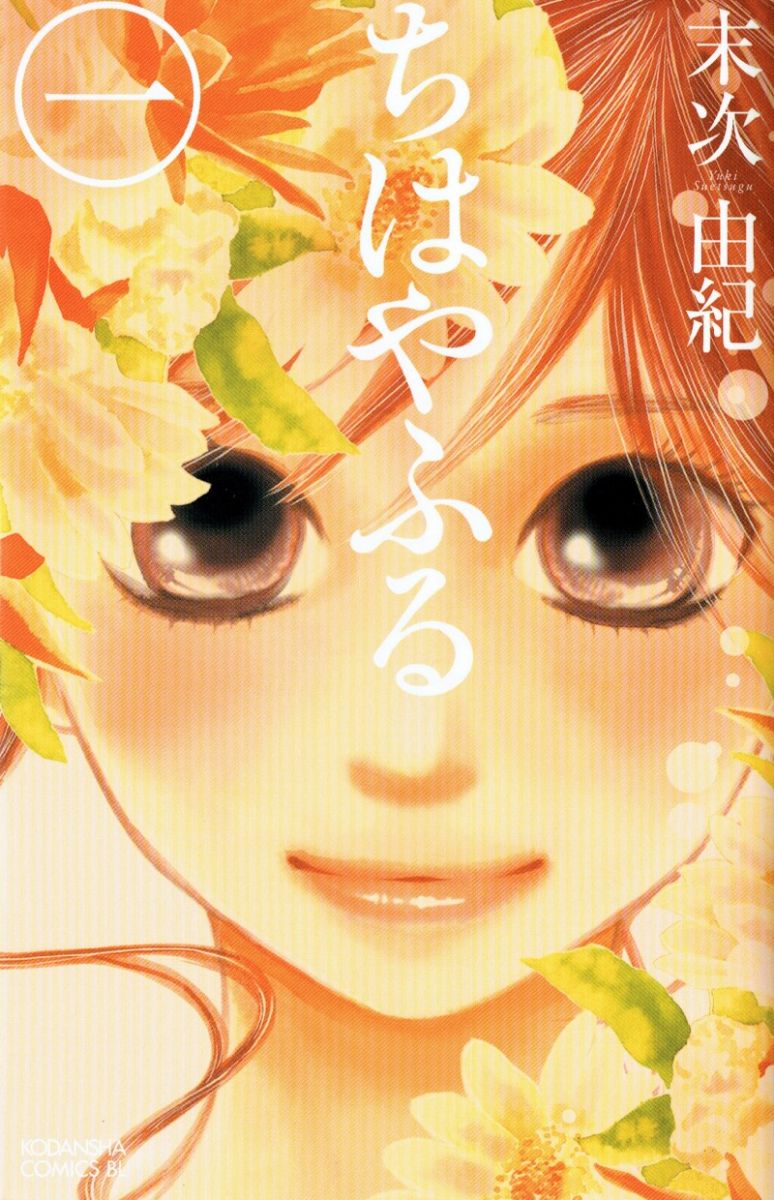
By Yuki Suetsugu | 末次由紀
Kodansha | 講談社
36 volumes, ongoing
Do you have an all-consuming passion?
-- A culture club? The fighting spirit of sports? Here is the world of karuta competition, known only to a select few
"A youth manga that shows the drama at a high school club for karuta playing card competition. Each episode explains the meanings of individual poems in Hyakunin Isshu [100 Poems by 100 Poets] in an easy-to-understand manner. In addition to being able to enjoy the worldview of each poem as visuals, you can learn about the world of karuta competition, which is well known only to a select few. While anime and live-action films on karuta competition have been made, the world is infused with a surprising degree of fighting spirit. Leaving aside intellectual ability, competitors need the reflexes to react in one-hundredth of a second and injuries are inherent, suggesting that substantial physical strength is required. In no way is a karuta competition club a culture club. It is most certainly an athletic club. "(Naoko Hosoda)
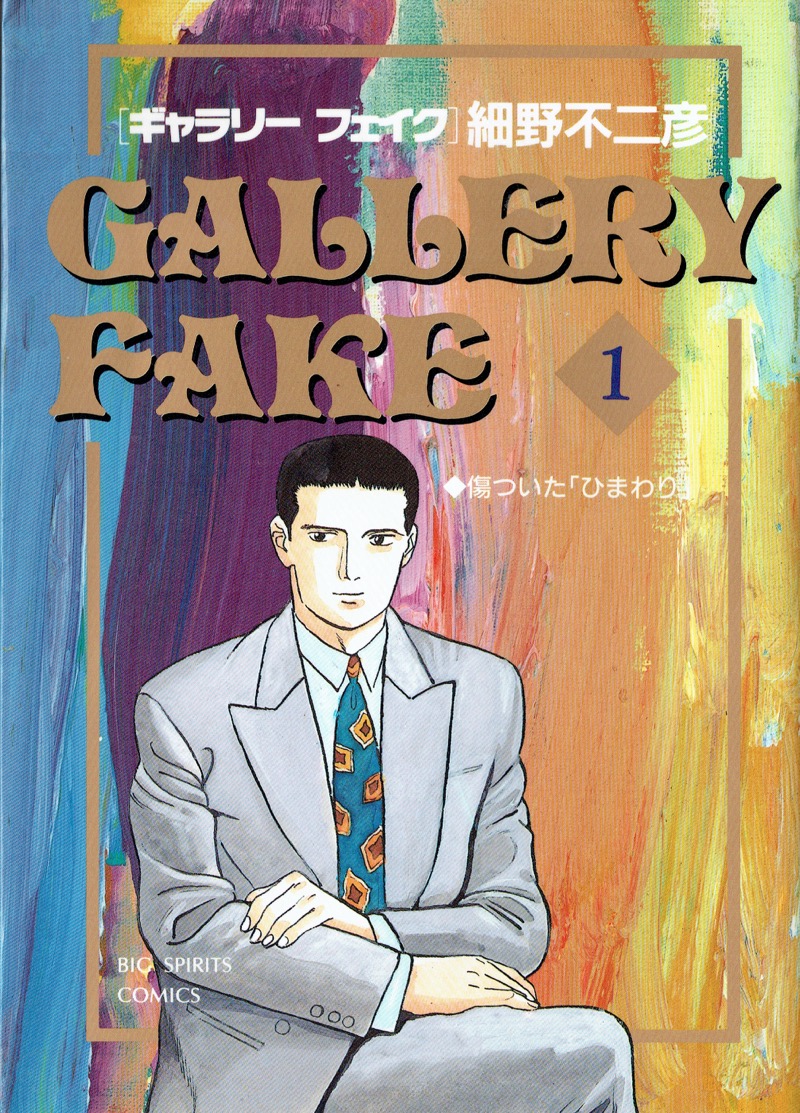
By Fujihiko Hosono | 細野不二彦
Shogakukan | 小学館
33 volumes, complete
What is the truth of Mona Lisa and paintings by Vermeer?
-- Learn about art history and circumstances surrounding museums while enjoying manga
"The vast amount of information per episode is a significant aspect of this manga. From well-known paintings such as the Mona Lisa and works by Vermeer to those not so famous, you can gain a broad range of knowledge, including historical background and appropriate restoration methods. As you avidly read this suspense-style manga, you will learn as much as from any number of specialized paperbacks. The best part: You can travel through the entirety of art history and circumstances surrounding museums while enjoying manga. "(Youhei Sadoshima)

By Tomoko Ninomiya | 二ノ宮知子
Kodansha | 講談社
25 volumes, complete
Casually enjoy classical music
-- Depicts the growth as a musician of “Nodame,” a piano genius
"This manga features Megumi Noda, nicknamed “Nodame,” who is a piano genius with an eccentric personality. We follow her growth as a musician as she enters a college of music, experiences orchestra, and studies in France. In particular, in exchanges with her dream man--Shinichi Chiba, a senior member and conductor at the college--and school orchestra members, we easily understand the role and anguish of a conductor as well as the characteristics of individual musical instruments and the people who play them. Classical music, which tends to be considered hard to approach, becomes familiar."(Naoko Hosoda)
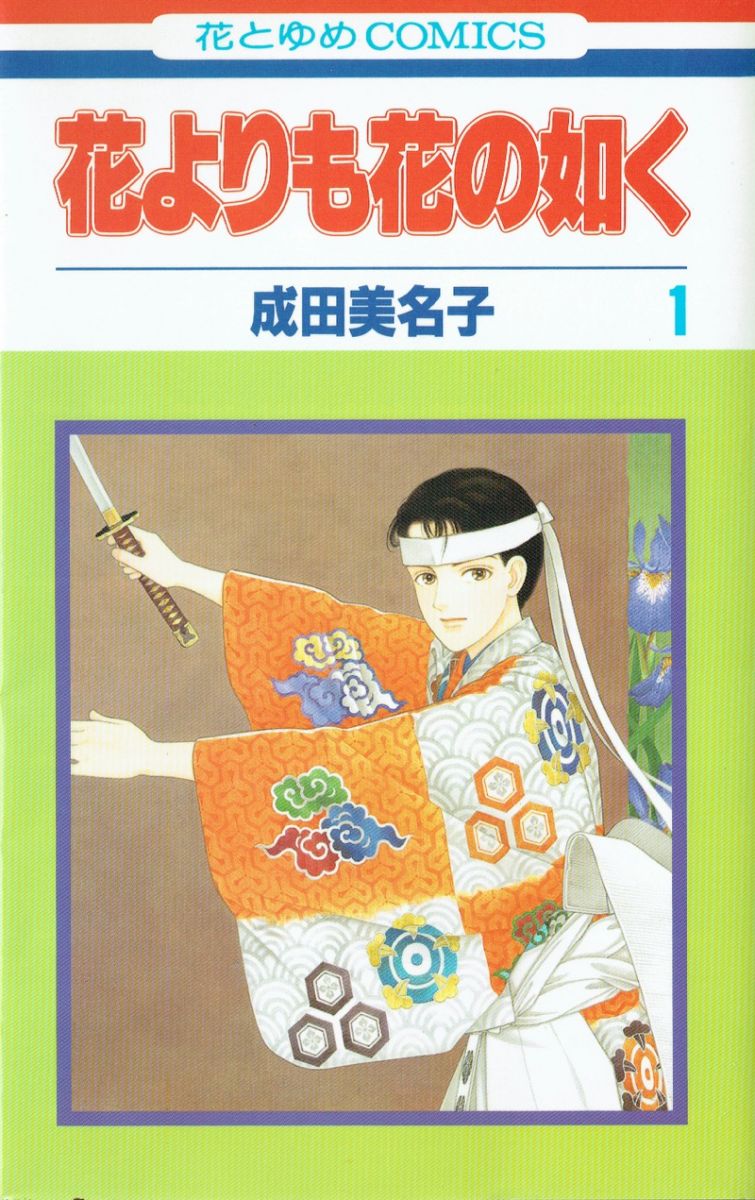
By Minako Narita | 成田美名子
Hakusensha | 白泉社
17 volumes, ongoing
Is noh boring? Difficult? NO!
-- Noh’s tension and appeal as revealed by a young noh performer
"Do you know the words of the title? They are the words of Zeami, who perfected noh theater. Noh is boring? Not well understood? You might change your thinking after reading this manga. It depicts the world of noh as performed by Norito, who is still young. While he follows the tradition of generations, Norito also appears on TV. And just like other young people, he also falls in love. However, the world of noh has something that makes people sit up straight: a sense of tension from movement, as if threading a needle. It is beautifully illustrated by Minako Narita. The author is famous for works staged in the United States, such as Cipher, and she learned Japanese-style painting in order to draw this work. It would also be interesting to see how her illustration style differs from her works that take place in the US."(Yukari Fujimoto)

By Takeshi Obata, Yumi Hotta | 小畑 健、ほった ゆみ
Shueisha | 集英社
23 volumes, complete
Go is exciting
- Possessed by the spirit of a genius go player, an elementary school student masters the game
"The story of an elementary school student who is possessed by the spirit of a genius go player and masters the game. It starts with the main character having no knowledge of go, so readers can join along to learn. Reading the manga sparks the desire to try go. (In fact, when the manga was published as a series in a magazine, it created a go boom among young boys.) This work has the cheerful nature of manga for boys as the main character realizes he is interested in go rather than simply following directions of the spirit, and he grows through his efforts and learning from rivals. This appealing work illustrates quiet go, with its limited action, by employing a full range of realistic sensations, making you feel as if you are there as it sweeps you along page after page. "(Yasuhiro Yamauchi)
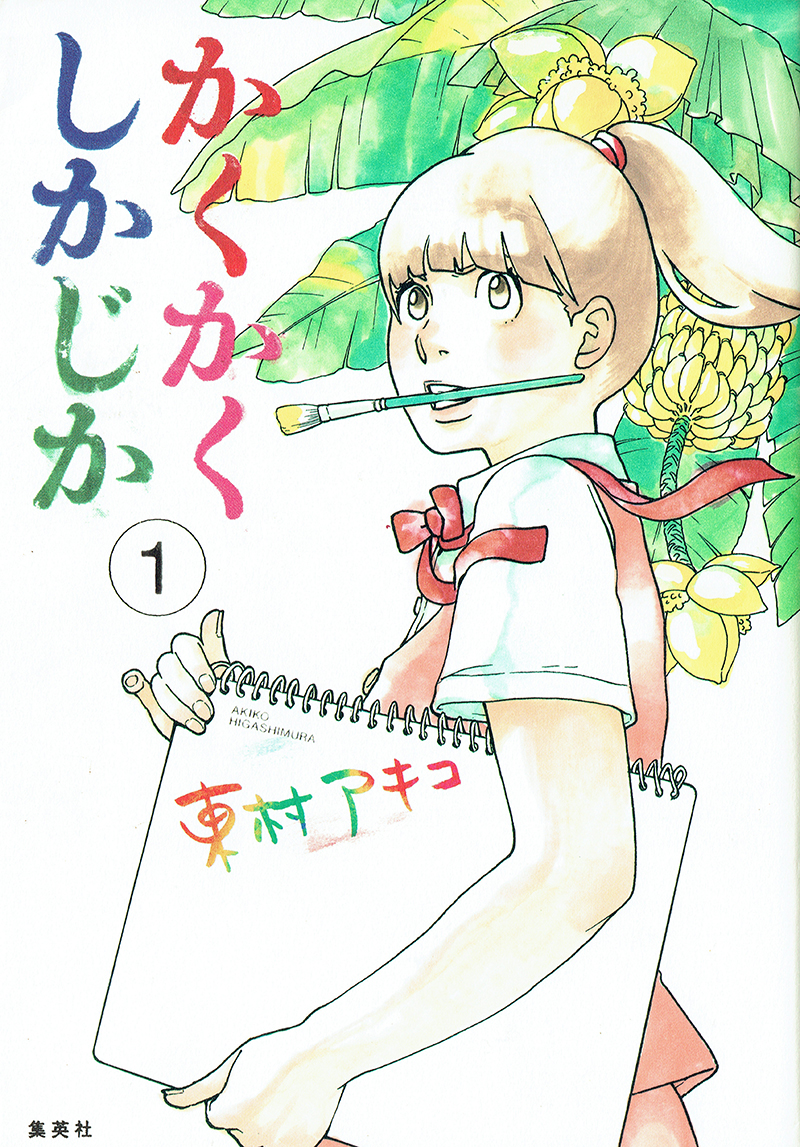
By Akiko Higashimura | 東村アキコ
Shueisha | 集英社
5 volumes, complete
Teacher, thank you.
-- An autobiography illustrating enjoyable and maddening mental exchanges with a painting teacher
"A female manga artist's autobiography through the device of exchanges with a teacher. The author had been confident that she was a painting prodigy until her confidence was totally destroyed by an enthusiastic teacher of a painting class, who employs a bamboo sword and makes her paint over and over. The teacher is seen in both open and covert ways in all situations, including entrance exams and life at college, in the big city, and at work. The author rebels, flees, suffers setbacks, and learns again only to regret it, yet comes to deeply appreciate what the teacher has done for her. She thinks of herself as slovenly and full of bad character traits. She did not understand how childish she was when young. As the author goes through the destructive years of preparatory training, she sees no future ahead. Sometimes letting muscle memory take control is the only way. There are things that are realized only after growing up and becoming parents. She even starts to notice her deep affection for her teacher. She realizes that the teacher’s often repeated words—“You must paint!” and “No problem”—have become part of her. But it is already too late. Teacher, thank you. Failure is the flip side of success. Enjoyable yet maddening. This received the 2015 Manga Taisho award and grand prize in the manga division from Japan's Agency for Cultural Affairs. "(Ichiya Nakamura)

By Katsutoshi Kawai | 河合克敏
Shogakukan | 小学館
14 volumes, complete
What does the calligraphy club do?
-- Almost like a sport, really? With team competition as well? Discover the appeal of expressing characters
"Those who have belonged to athletic clubs in school may have wondered what culture clubs actually do. This manga is for them. The main character is a liberal arts-oriented girl who returned from overseas and belongs to both the judo club and calligraphy club. From these opposing viewpoints, you will see that athletic clubs and culture clubs are not so very different and are, in fact, quite similar in some respects. For example, the special training before a calligraphy contest is as enthusiastic as any training done by athletic clubs, or even more so. Calligraphy may have an image of an individual activity, but in team competition, members work in formation and finish as a team. This manga also does an excellent job of conveying the appeal of expressing characters. Once you learn that each style, such as regular printed style and semi-cursive style, carries its own meaning, purpose and world to express, you will realize that calligraphy is not mere information but a rich art. Reading this manga will definitely make calligraphy class fun. "(Yasuhiro Yamauchi)
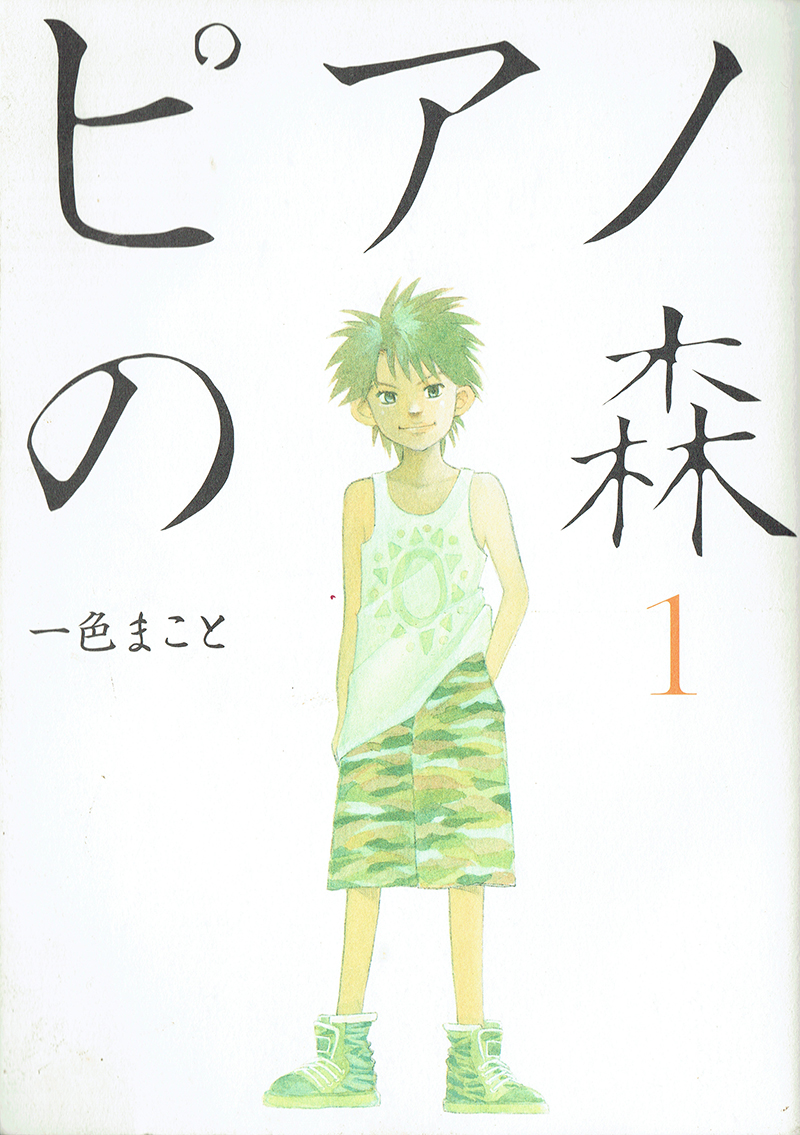
By Makoto Isshiki | 一色まこと
Kodansha | 講談社
25 volumes, complete
Manga you can hear
-- A human drama that conveys not only the sound of piano but also the breathing of people
"There are several masterpiece music manga. They let you actually hear the intended sound. While manga can express almost everything, they can only trust the reader when it comes to a sense of sound and control of time. In the case of movies, the production team tinkers with time to the second in still scenes or slows down the flow to get the desired effect. With manga, however, readers set the pace of turning pages. Whether or not they understand the author’s intentions or desires on ways to read individual frames and how much time to spend depends on them. The same applies to sound. How readers sense sound is up to the individual. That is why music manga are difficult and enjoyable. Piano no Mori [The Perfect World of Kai] conveys not only the sound of musical instruments but also all monologues, breathing and voices of characters, including main character Kai. The author's ambition and amazing effort to depict and convey all characters' thoughts in a certain way have paid off in success. This work is a wonderful music manga and also a human drama filled with the joy of agile minds and understanding between people."(Machiko Satonaka)
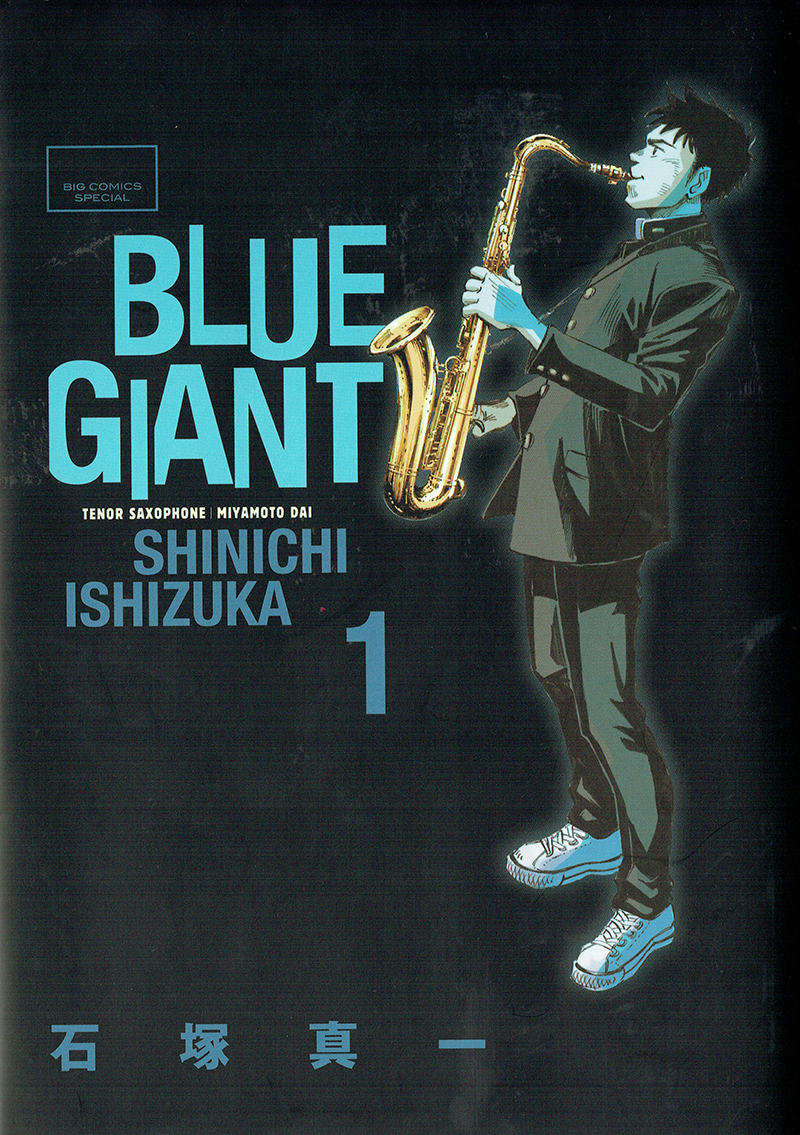
By Shinichi Ishizuka | 石塚真一
Shogakukan | 小学館
10 volumes, complete
Nonstop hot melodies
-- An ordinary high school boy sets his sights on becoming a professional jazz musician
"Manga, a soundless medium, is not particularly compatible with music. However, of all the manga introduced, a certain percentage do let you hear the music. BLUE GIANT is one of them. As you read, your head will fill with the hot melodies of main character Dai Miyamoto’s tenor sax, which seems to embody his passion. Dai is an ordinary high school boy who belongs to the basketball club. One day, he becomes interested in jazz tunes, goes to a live performance at a club, and now aims to become a professional jazz musician. Dai is an enthusiastic guy, and his sound may be loud—the audience sometimes complains he is too noisy. Overcoming various barriers, Dai continues his journey to becoming the top jazzman in the world. Through this work, you can learn about the feeling musicians put into their jazz, or, more likely, into music itself. It also shows us the important things in life, such as not giving up your dream and the support of others. "(Naoko Hosoda)
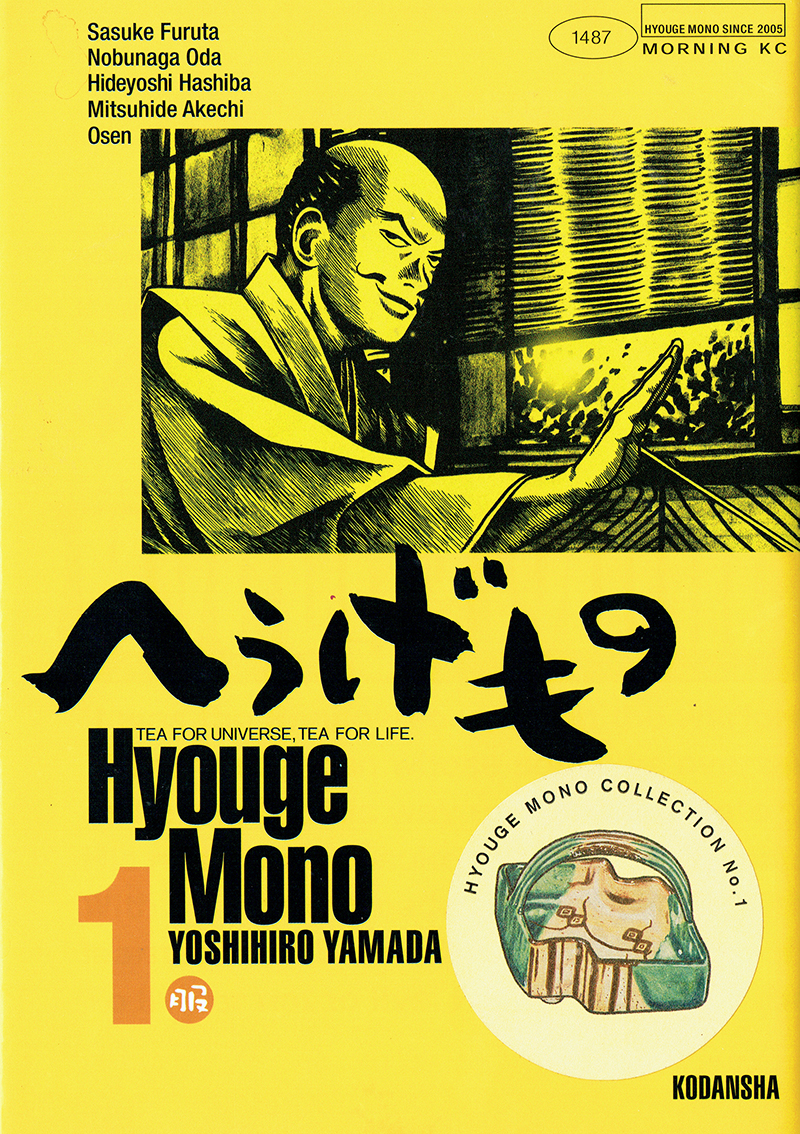
By Yoshihiro Yamada | 山田芳裕
Kodansha | 講談社
25 volumes, complete
A warlord who loves tea over spears!
-- The story of Furuta Oribe, who achieved success through his personal pursuit in the age of provincial wars
"Have you ever thought that the helmets and armor worn by samurai warriors in the age of Sengoku provincial wars had odd shapes? Toward the end of the age, which lasted for many years before the Edo Period, some samurai, whose job was to fight, risked their lives to enjoy personal interests. Called suki or elegant pursuits, the term means to enjoy tasteful tea ceremony, outfits, armor, residential and other buildings, as well as gardens. In today’s language, the expression may be translated as fashionable or cool. In particular, some teaware used for the tea ceremony, namely bowls and plates, was said to have value equivalent to castles, which samurai were risking their lives to capture. The main character of Hyouge Mono is Furuta Oribe, who put his life on the line for his refined taste and was so successful that he received a castle in exchange for a tea utensil in the years Oda Nobunaga and Toyotomi Hideyoshi were in power. How did Oribe gain such success through his personal pursuit in the middle of constant war? The intriguing life of a man who stuck with his own lifestyle may reveal a different path for those of us living in modern Japan with its uncertain future. "(Takeshi Kikuchi)
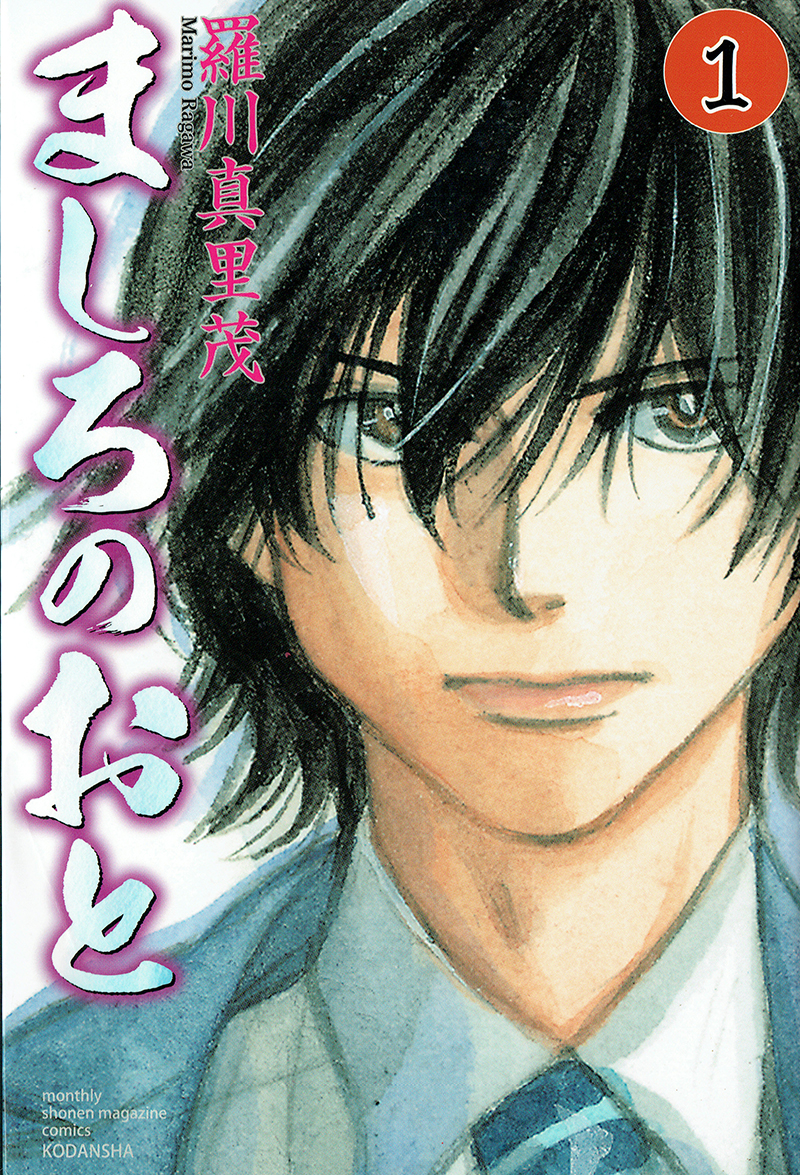
By Marimo Ragawa | 羅川真里茂
Kodansha | 講談社
19 volumes, ongoing
Pictures throbbing with sound and vibration
-- Growth of a young Tsugaru-jamisen player who comes to Tokyo from Aomori
"Setsu, the main character, is a Tsugaru-jamisen player. She comes to Tokyo from Aomori after her grandfather and teacher passes away. This story follows Setsu’s growth as a person and shamisen player through her experiences and relationships with the people she encounters. In particular, expressions of sound are simply amazing. It is as if you can hear Tsugaru-jamisen and even sense the vibration of the air from full-screen sound. For those who have heard Tsugaru-jamisen, this manga makes you want to listen again, while those new to the instrument might become impatient to hear it for the first time. Highlights are the convincing depictions; the author is originally from Aomori, and her illustration of spring in Tsugaru gives the impression of being a long-awaited and sentimental snowscape, allowing readers to imagine how sound echoes there. This manga does indeed offer the joy of discovering an unknown world. "(Tomoko Yamada)
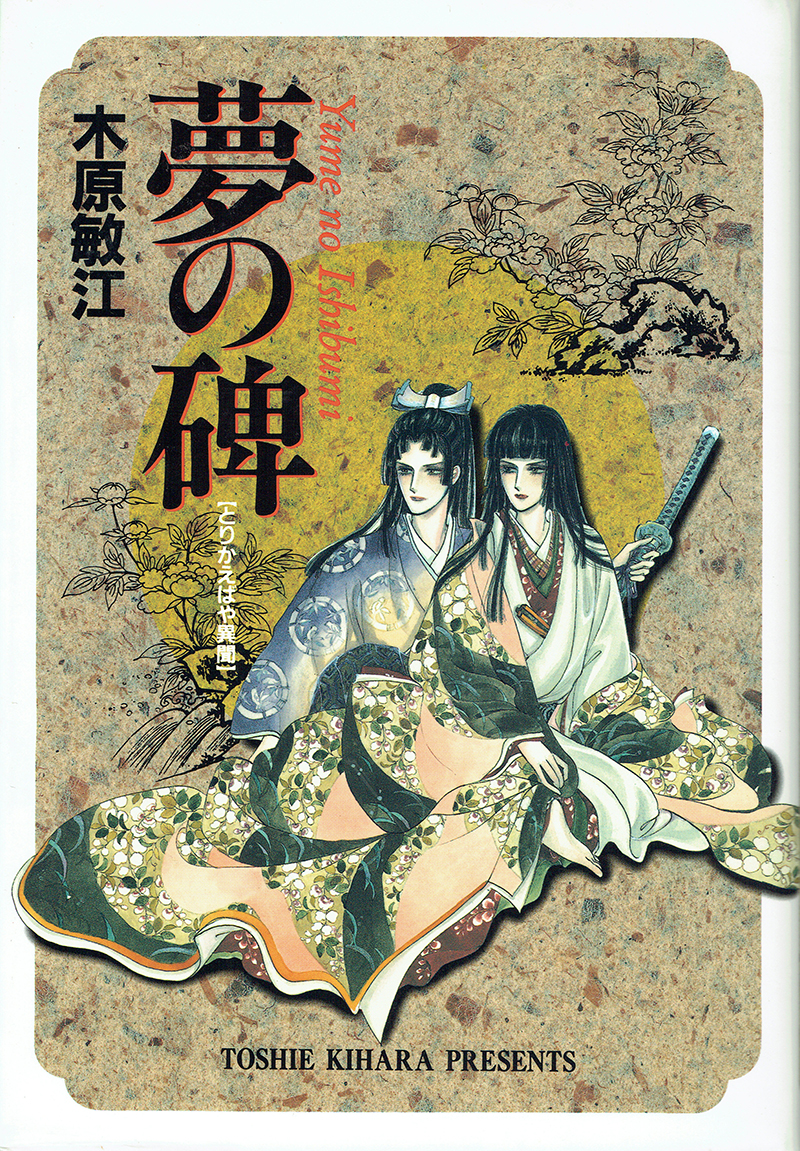
By Toshie Kihara | 木原敏江
Shogakukan | 小学館
1 volume, complete
The feeling of having seen a theater performance
-- A series of grand romances based on literature from all eras and cultures
"Drawing on the author’s profound insights and creativity, this manga presents a series of grand romances based on diverse literature from all eras and cultures. After reading it, you are filled with quiet excitement and deep fulfilment, as if you have just finished viewing a complete artistic creation or entertainment. Before you know it, you’ll learn about the literature and art of countries around the world while being fully immersed in a major romance. This sense of learning is different from memorization that takes place in your brain, thinking you have to study; it is more like getting to know something, which is probably thanks to the power of the story. Topics include traditional Japanese entertainment such as noh, and later in life, you may suddenly realize after seeing a noh performance, “Oh, this the story introduced in Yume no Ishibumi.” My hat is off to the author, who has eagerly studied the latest theories from early on, including an interpretation that ogres in classical Japanese literature were persecuted foreigners who landed in Japan."(Tomoko Yamada)

By Yoshihiro Tatsumi | 辰巳ヨシヒロ
Kodansha | 講談社
2 volumes, Complete
The way of manga, from the godfather of gekiga graphic novels
An autobiography that looks back at the birth of "manga for young men"
"An autobiographic manga by Yoshihiro Tatsumi, who is considered to have coined the term gekiga, or graphic novel. It depicts his early life as an Osaka-born manga fan boy who aspires to the manga stories of Osamu Tezuka and who lives just like Manga Baka [manga nut] in a manga world. The postwar manners and customs of the years immediately after Japan lost the war through the time of the campaign against the Japan-U.S. Security Treaty in the 1960s are carefully observed. Young Kansai manga artists (including Tatsumi, Masahiko Matsumoto, Takao Saito and Masaaki Sato) popular in rental manga magazines such as Kage and Machi—available at as many as 30,000 book lending shops nationwide at their height from the mid-1950s through mid-1960s—were adapting film and novel techniques to manga, trying to make them relevant for young men and totally different from the children’s manga offered by Tokyo publishers. Tatsumi says that he used the term gekiga to “differentiate manga for book lending shops from manga for kids." From the main character to his buddies, this work is a dynamic depiction of young people fumbling their way toward new ways of expression. It is also a valuable reference on the early days of gekiga, which significantly expanded the breadth of expression. In addition to this manga, it is highly recommended to read Manga Michi [Way of Manga] (Fujiko Fujio A), which depicts the Tokiwa-so apartment [home to legendary manga artists]. "(Koichi Yuri)

By Yuki Kodama | 小玉ユキ
Shogakukan | 小学館
9 volumes, Complete
People’s thoughts are passed down through traditional dance
A subdued yet spirited drama of the heart: Young people take hold of their birthright of Owara Kaze no Bon
"Owara Kaze no Bon is an annual festival that takes place in early September in Yatsuo, Toyama Prefecture. A men’s dance and a women’s dance are performed to the melancholic notes of Chinese fiddles and Japanese shamisen, the dancers’ faces obscured by the low brims of straw hats ... it is one of the most famous festivals in Japan, and is known for romantic images. The main character is Hotaruko, who transferred from Tokyo to a school in Yatsuo. Her deceased mother came from this town, and was an Owara master. Hotaruko has taken hold of her birthright. She has a special feeling toward a man who once was her mother's lover. Hikaru is the man's nephew and Hotaruko's classmate. As the complex relationship between the two young people is woven into the story, the town is swept up in practicing for the Owara festival. This work is staged in a small town where time-honored culture is alive and well, and it shows that tradition and thinking change as they are passed down to new generations. The scene of Owara Kaze no Bon at the end is a sight to behold. Hopefully, this work will trigger readers to take a look at their own region and its culture. "(Yukari Fujimoto)

By Yasuhisa Hara | 原泰久
Shueisha | 集英社
49 volumes, complete
Main characters are not the only ones playing key roles
-- Immerse yourself in the Qin Dynasty and real feeling of characters
"This manga revolves around historical events of China’s Qin Dynasty. One enjoyment of historical manga is the sense of key figures as real people. Each character is like a living, breathing individual—much like us in the present time—and becoming immersed in the story and characters’ thoughts is true bliss. In addition, the work provides detailed descriptions of individual side characters, showing that characters on the periphery also played important parts in history, and main figures were not the only ones with key roles. This manga, with illustrations that provide a real feeling of being there and up-tempo flow, is exciting; you will be drawn into the story immediately, starting with Volume 1."(Yasuhiro Yamauchi)
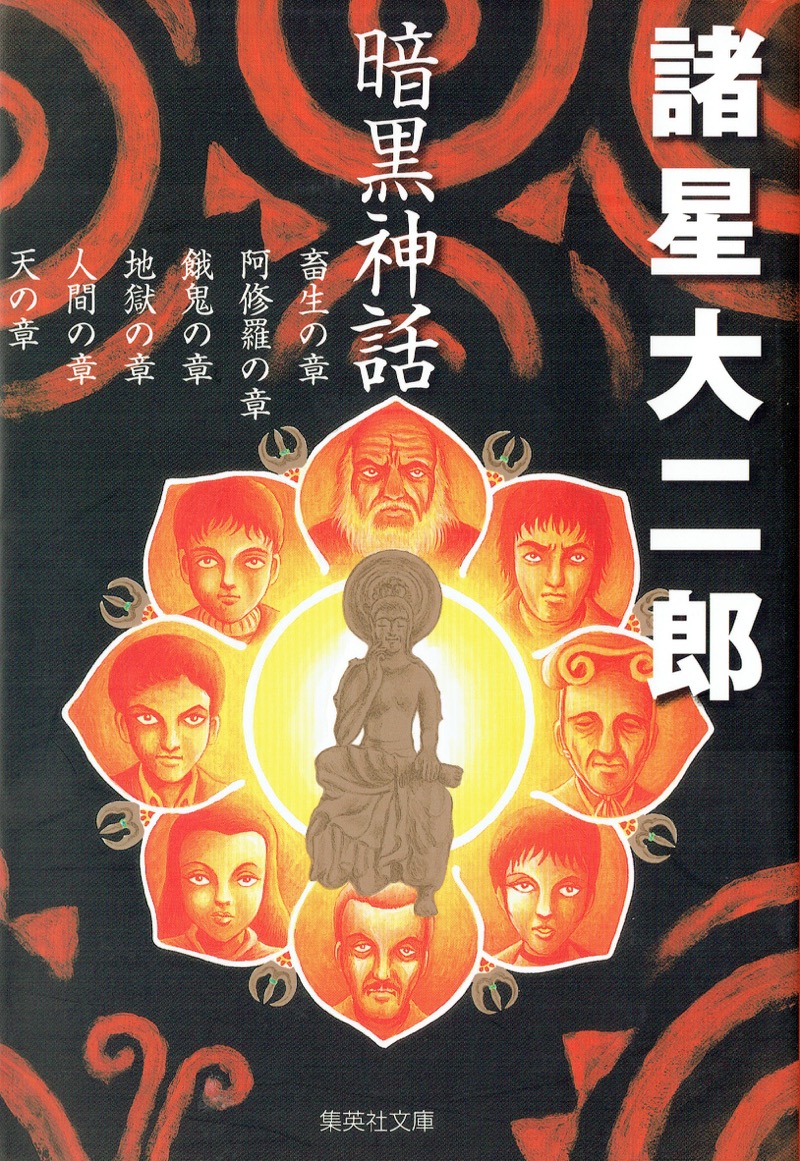
By Daijiro Morohoshi | 諸星大二郎
Shueisha | 集英社
1 volume, complete
Is it really impossible?
-- A historical science fiction manga that solves Japan’s primeval mysteries from unique angles
"There are still many unsolved mysteries in the primeval history of Japan. Here is a historical science fiction manga that solves these mysteries using unique approaches. Reading this manga might pique your interest in niche areas and backstories behind the historical facts in textbooks, and fire your imagination. You may also notice that learning about history is entertaining. A number of historical sites and myths from all over Japan as well as familiar folktales are introduced. Mysteriously persuasive, this manga makes things seem possible, even if they are logically impossible. It also provides a doorway to the intriguing world of folklore. "(Yasuhiro Yamauchi)

By Makoto Yukimura | 幸村誠
Kodansha | 講談社
20 volumes, ongoing
What is a truly strong man?
-- The Viking way of life: dream big in the raging currents of history
"Viking is a general term for northern Germanic peoples who invaded Europe and Russia from the end of the 8th century through mid-11th century, and had major impact through plunder and trade. While the Vikings are not very familiar to Japanese, they started small as pirates, eventually crossing the seas and conquering the entire area known today as the United Kingdom. Thorfinn lives among the Vikings and continues to try to kill Askeladd to avenge his father, joining Askeladd’s band and traveling and fighting as part of the group. Thorfinn, who once was hell-bent on revenge, heads toward a greater dream while repeatedly losing his resolve as he finds himself in the middle of the raging currents of history, begging the question: What is a truly strong man? Thorfinn searches endlessly for the answer while trying to follow in the footsteps of his now deceased father. "(Takeshi Kikuchi)

By Tetsuya Takeda, Yu-Koyama | 武田鉄矢、小山ゆう
Shogakukan | 小学館
14 volumes, complete
Laugh, suffer, and cry with Ryoma
-- For the future of Japan, learn from a youth drama of 150 years ago when lives were at stake
"It's hot. Tears are flowing. The crying of Ryoma, Takeuchi Hanpeita, Yoshida Shoin and Takasugi Shinsaku. Without realizing it, you will find yourself totally absorbed in the world at the end of the Edo Period, and you’ll be crying too. Ryoma is enchanted by the new world he has discovered and is easily moved as he meets amazing people and befriends them or apprentices. Although he was a crybaby and looked down on when little, he eventually grows into an influential figure in the history of Japan at a young age. This is a youth drama woven together by Ryoma and other attractive young characters who risked their lives 150 years ago. I read this manga while in high school and then later read Ryoma ga Yuku, a novel by Ryotaro Shiba, and it changed my life. For the first time, I voluntarily started to read books and came to enjoy learning. I began to look at history in a different way. My love of reading--both manga and books—changed. My view of life changed as well. I hope all young people read this and laugh, worry, and cry with Ryoma. I want them to think about Japan and the world of 150 years ago, and ponder tomorrow's Japan and world."(Katsuhiro Motoyama)
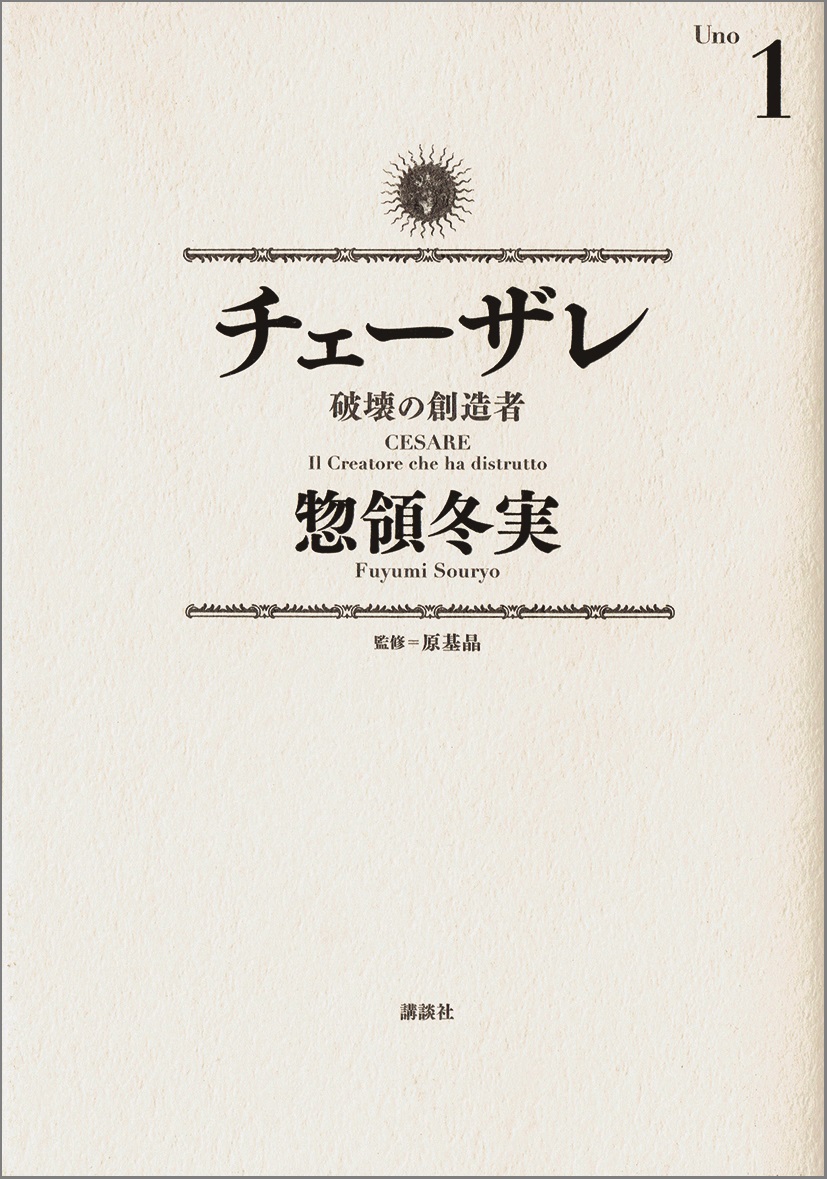
By Fuyumi Souryo | 惣領冬実
Kodansha | 講談社
11 volumes, ongoing
Who was Cesare?
-- A grand story of world history backed by rigorous analysis
"Cesare Borgia, an actual Italian military man and politician in the 15th century, is featured. While Cesare has an image of being a barbarous and hardheaded person of authority in the West, the Cesare depicted here understands there are things that must be eliminated in order to realize higher ideals in the shortest time. Cesare, as a practitioner who hires anyone with talent regardless of race or country, thinks about what needs to be done to make the world a better place. Fuyujmi Soryo's deep insights, rigorous historical analysis and gorgeous illustrations present readers with a totally new side of Cesare as a hero. Another appeal of the work is its tough story that basically features only men engaged in political infighting, although the beautiful illustrations overshadow this."(Tomoko Yamada)

By Mari Yamazaki | ヤマザキマリ
Enterbrain
6 volumes, complete
“Love of bathing” that goes beyond time and borders
-- Shortening the distance between ancient Rome for Japanese, making them feel at home
"The times of ancient Rome are some of the most important in world history and still impact contemporary Western society. Yet when it comes to the Roman Empire’s “Five Good Emperors,” many people may simply be overwhelmed by the difficulty of similar names in katakana. In this manga, the main character—an engineer of thermae or public baths during the Roman Empire—slips forward in time to modern Japan, where hot-spring and bathing culture is extremely well developed. While this scenario is only possible with manga, it makes the Roman Empire, which seems distant for Japanese, amazingly fun and familiar. One surprise is the discovery of a public bath culture and the advanced technology that made it possible 2,000 years ago, which evoke wonder at the common culture with modern Japan and go beyond national borders and time. Moreover, looking at Japanese culture through the eyes of an engineer of ancient Roman public baths leads to rediscovery of Japan’s appeals. Curiously, reading Thermae Romae and traveling in time makes you want to soak in a public bath of ancient Rome. The road to ancient Roman history starts with Thermae Romae and laughing out loud."(Katsuhiro Motoyama)
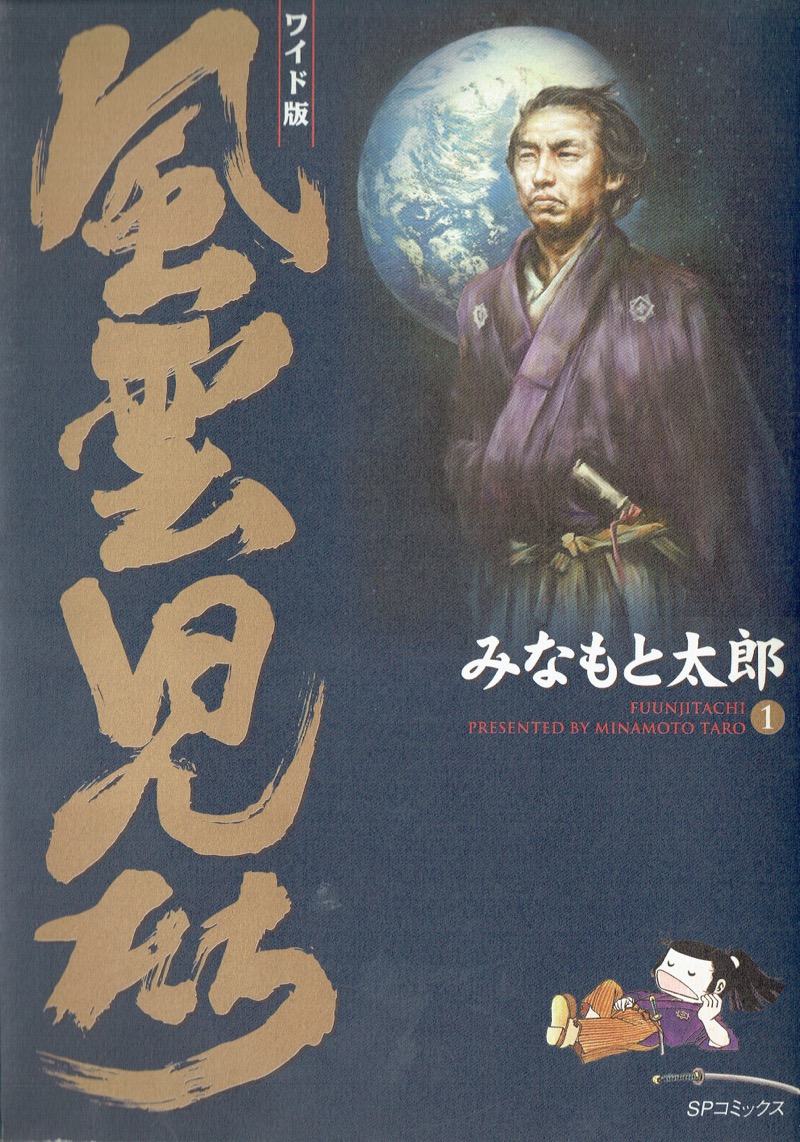
By Taro Minamono | みなもと太郎
Ushioshuppansha | 潮出版社
20 volumes, complete
Great foreshadowing of the Meiji Restoration
-- Learn about a number of historical incidents while laughing at hilarious gags
"No other manga does more to open your eyes about history. From the Battle of Sekigahara to the end of the Edo Period, adventurers in the troubled times of Japan’s national isolation come alive in front of readers. The Meiji Restoration was predestined to occur, and its cause can be dated back to the Battle of Sekigahara. Here we are presented with very convincing foreshadowing, which is illustrated by depicting the circumstances and state of mind in various feudal domains, including the Shimazu clan of the Satsuma domain and Mori clan of the Choshu domain. These clans had secondary roles at the time but came to be main players 60 years later. The desire to find out about the new world and energy to open up the country were inherited by people who literally risked their lives to absorb Western studies and become enlightened with knowledge. Unless you read this manga, you might not think of the historical significance of Kaitai Shinsho, a translation of a Western medical text that involved a tremendous and bloody effort. The old guard of shogunate cronies unreasonably squashes these efforts and new knowledge. Every time those truly concerned about Japan are oppressed and historical progress pushed back, you get frustrated and start to think that Japan of the time needs to change soon … this work holds such wonder. It also keeps you laughing about those hilarious characters and historical incidents by employing countless gags. No other book is this fun while you learn about history. I would advise both lovers of history and those who dislike it to read this book. "(Katsuhiro Motoyama)
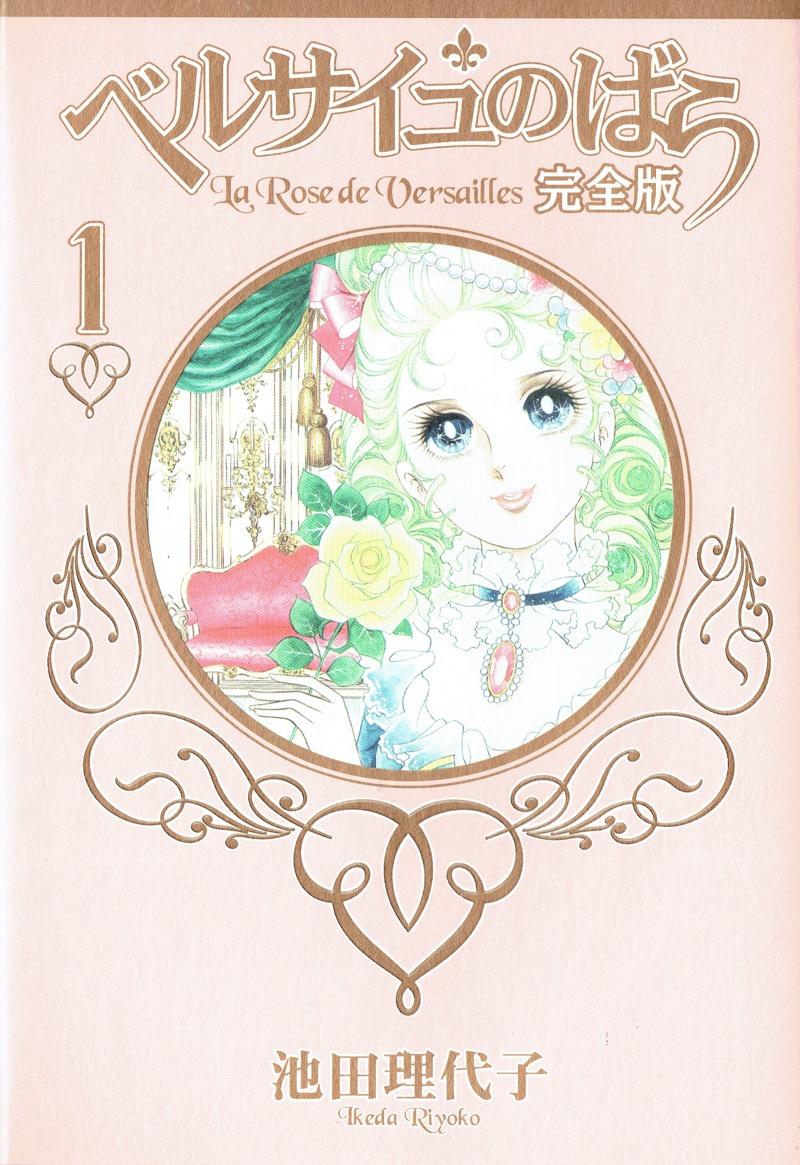
By Riyoko Ikeda | 池田理代子
shueisha | 集英社
10 volumes, complete
Having this much fun reading history is a miracle
-- Lively depictions of key figures in the French Revolution
"Marie Antoinette, the last queen of France, and a beautiful woman in male attire who is commander of the Imperial Guards—this intriguing story of intense personalities and tragic love stories makes you forget it takes place over 200 years ago in the imperial courts of Europe. However, this is also a full-fledged historical manga with a fact-based framework. The magnificent Palace of Versailles, the gorgeous costumes worn by queens, and tragic, unacceptable love beyond class or position will fascinate readers. On the other hand, these are the very things that lead to trouble and doom the monarchy, resulting in the French Revolution, one of the most important events in world history. The manga brings to life key historical figures, including Maria Theresia, the Austrian archduchess and mother of Antoinette; Duke of Orléans, who is a royal family member yet supported liberalism and took the citizen’s side; and Robespierre, who led the revolution. To have this much fun reading about the French Revolution is close to a miracle. Unmistakably, this is the masterpiece in the history of girls’ manga, and the best study manga ever. The author, Riyoko Ikega, has written many other historical manga besides Berubara [The Roses of Versailles], and they are also recommended."(Katsuhiro Motoyama)

By Yukinobu Hoshino | 星野之宣
Ushioshuppansha | 潮出版社
7 volumes, complete
Was Urashima Taro really there?
- A folklorist unravels Japanese folktales and legends from ancient times, one after another
"The story of a folklorist who unravels Japanese legends from ancient times. This manga inspires curiosity in Japan’s heritage of traditions and customs. The main character verifies legends and fairy tales familiar to everyone, repeatedly conducting on-site investigations, setting up hypotheses, and validating them. The process is both exciting and fascinating. Aside from interesting aspects of folklore, it clearly shows how to conduct fieldwork. Moreover, the manga is a well-constructed mystery, and you can fully enjoy solving the riddles. Readers whose curiosity is piqued may want to visit sites to investigate stories that have been passed down in local areas. You might find out something interesting. "(Yasuhiro Yamauchi)
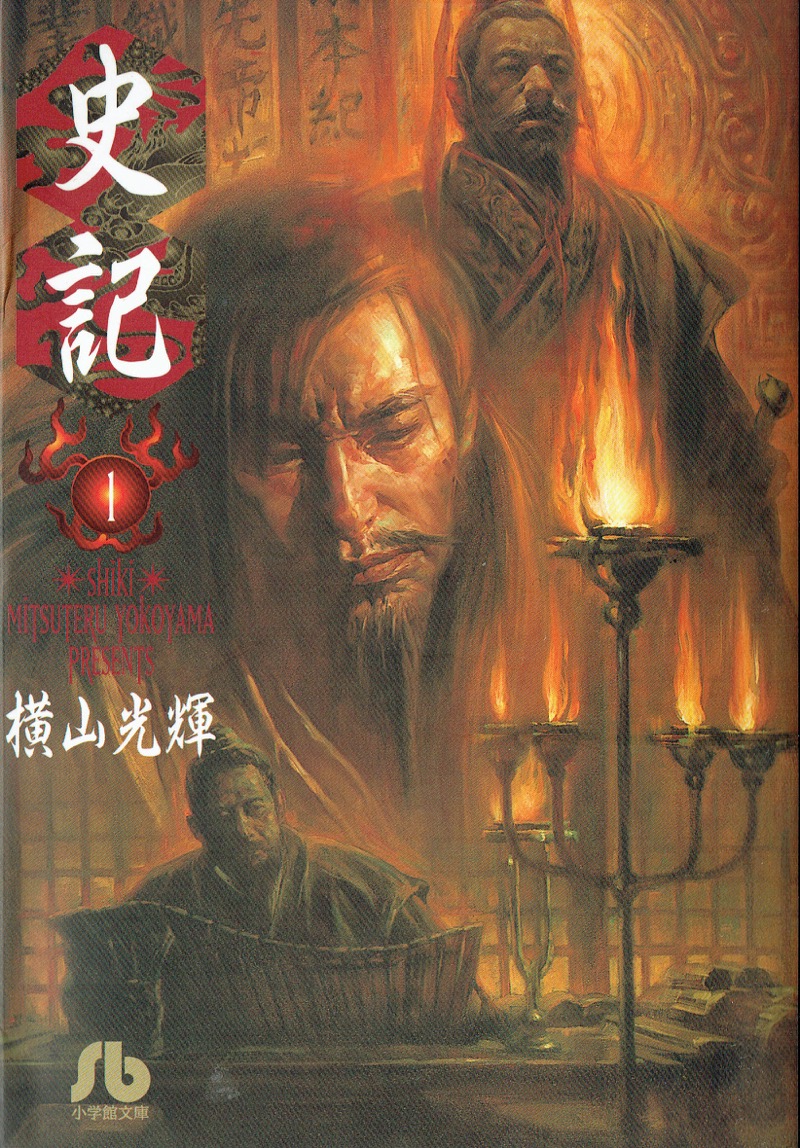
By Mitsuteru Yokoyama | 横山光輝
Shogakukan | 小学館
11 volumes, complete
Sangokushi [Records of the Three Kingdoms] is not the only Chinese history
-- Learn about politics, society, and reasons from the oldest history book in the world
"All manga by Mitsuteru Yokoyama--including this manga Shiki, Sangokushi [Romance of the Three Kingdoms] and Kou to Ryuho--are wonderful. Chinese history, which is hard to understand when trying to reach it through history books, is easy to grasp in Yokoyama's manga, as he organizes and explains lots of information. His approach of using extensive narration and letting the story quietly develop is different from how manga in general set the mood. Yet his works somehow convey the heated passions of characters, providing a thrilling journey as you read. This definitely enlivens world history class at school. The manga is highly recommended for 5th or 6th graders. "(Youhei Sadoshima)
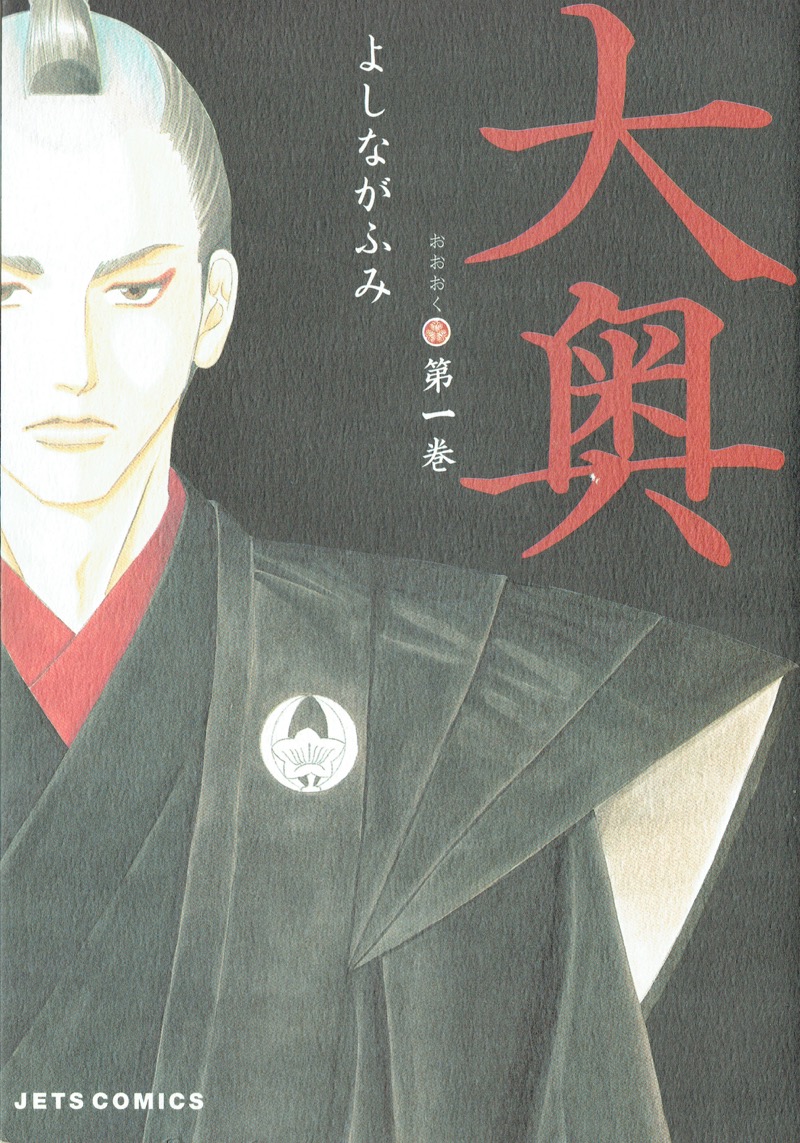
By Fumi Yoshinaga | よしながふみ
Hakusensha | 白泉社
15 volumes, ongoing
What becomes clear in a reversed world
-- What would happen if the roles of men and women were reversed in the Edo Period?
"While historical stories usually have men in leading roles, this manga puts women in the forefront as it depicts the inner chambers of a palace where the roles of men and women are reversed. Female readers will feel as if they have seized power and are victorious. The manga is very satisfying; you can discover both the thrill and scary side of having power. On the other hand, men might get a real sense of being in the minority. This historical manga makes you think about gender. The meticulous setting and story development are also amazing, as the big trick of reversing the roles of men and women is illustrated without contradicting historical facts. The aesthetics of Edo as conveyed by the delicate lines of character illustrations are also enjoyable. "(Tomoko Yamada)

By Machiko Satonaka | 里中満智子
Kodansha | 講談社
23 volumes, complete
Life of a woman: Empress Jito
-- A historical romance that conveys the ambience of 1,300 years ago in the age of Manyoshu [Collection of Myriad Leaves]
"The story follows Princess Sarara, who later became Empress Jito (the 41st emperor). She was born to Prince Naka no Oe (later Emperor Tenchi) and married to Prince Oama (later Emperor Tenmu), her father’s younger half-brother on his mother’s side. The author claims the manga was inspired by Manyoshu [Collection of Myriad Leaves], and this historical romance conveys the ambience of 1,300 years ago at the time of the poems. Empress Jito assisted her husband in her official capacity as empress after he acceded to the throne, ultimately taking the crown herself after her husband's death. She was adept at politics and instrumental in establishment of The Taiho Code and compilation of The Nihon Shoki [The Chronicles of Japan]. Along with a woman’s love and anguish over the conflict between her husband and father, Empress Jito shows the side of playing a key role in creating the framework of Japan. This is very interesting to read as a depiction of an original way of life of a woman."(Naoko Hosoda)

By Ryoko Yamagishi | 山岸凉子
Hakusensha | 白泉社
11 volumes, complete
Prince Shotoku had supernatural powers?
-- Whether or not to believe is up to you. A trip back to his time
"An amazing manga with the power to make you believe that a lie is true. While you understand that the setting of Prince Shotoku having supernatural powers is completely false, you start to feel it may be true--the manga is full of this kind of appeal. Another amazing aspect of Ryoko Yamagishi’s works is that we somehow feel as if we have stumbled into the world of her manga, despite her works not necessarily incorporating lots of background illustrations. Readers can visualize outfits and buildings of the country at the time as if right in front of their eyes. This manga will take you to the time of Prince Shotoku."(Youhei Sadoshima)
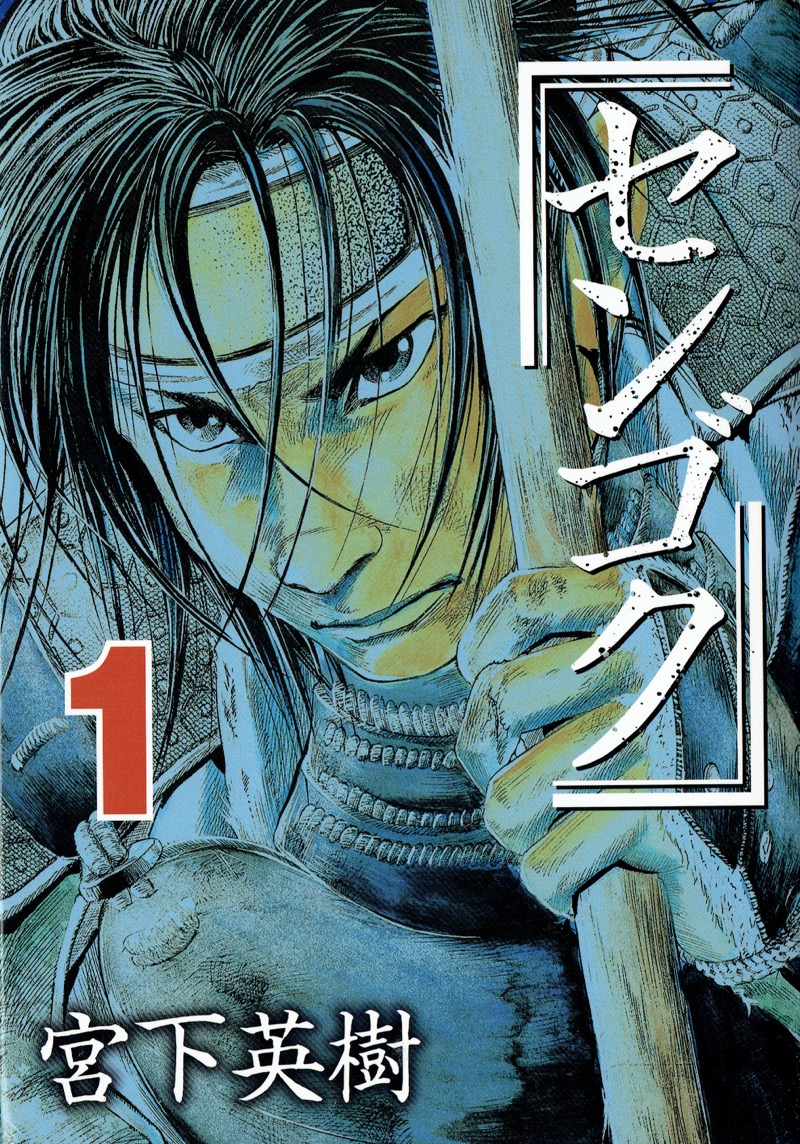
By Hideki Miyashita | 宮下英樹
Kodansha | 講談社
15 volumes, complete
Failure, and rising up
-- The warlord Sengoku, who served many historically famous commanders in the age of provincial wars
"The age of provincial wars saw the emergence of many legendary heroes—among them, Oda Nobunaga, Toyotomi Hideyoshi and Tokugawa Ieyasu--as well as a warlord called Sengoku Hidehisa. It was his checkered fate to serve and fight under many historically famous commanders. Sometimes he fails and sometimes he wins gloriously in battle. When serving under Nobunaga, Hidehisa helps Hideyoshi, who continues to make amazing breakthroughs and climbs the ladder of power. This manga, based on the author’s unique and meticulous analysis of history, presents Hidehisa’s turbulent life: beginning as a regular soldier, he advances based on his achievements only to suffer catastrophic failures, eventually recovering and establishing himself as a success in Japan’s widely known age of provincial wars. Needless to say, this is an entertaining manga; it is also unique in the sense of offering a different viewpoint for those who have read many other historical works. "(Takeshi Kikuchi)

By Kenishi Sakemi, Hideki Mori, Sentaro Kubota | 酒見賢一、森 秀樹、久保田千太郎
Shogakukan | 小学館
11 volumes, complete
There was a professional who protected and won
-- China in the Period of Warring States. A Mohist trains several thousand civilians to fight against tens of thousands of enemy soldiers
"Much like the big hit Kingdom, this is the story of China in the Period of Warring States. Kakuri is a Mohist, or a specialist in castle protection in time of war. In China at that time, castles were also cities (the outer walls surrounded the entire town, with a castle in the center), and protecting the castle meant protecting the city. To protect small Liang state from the large army of Zhao, he trains several thousand civilians to fight against several tens of thousands of enemy soldiers. Although Kakuri successfully protects the castle, he was not on good terms with other followers of Mohism. While he takes an active role on the battlefield as a specialist, confrontation with Setsuhei, a Mohist leader, becomes more severe under a new system. Kakuri does his duty as a Mohist and saves lives, gaining power and supporters in the process. But where can Kakuri go after protecting the castle and people?"(Takeshi Kikuchi)
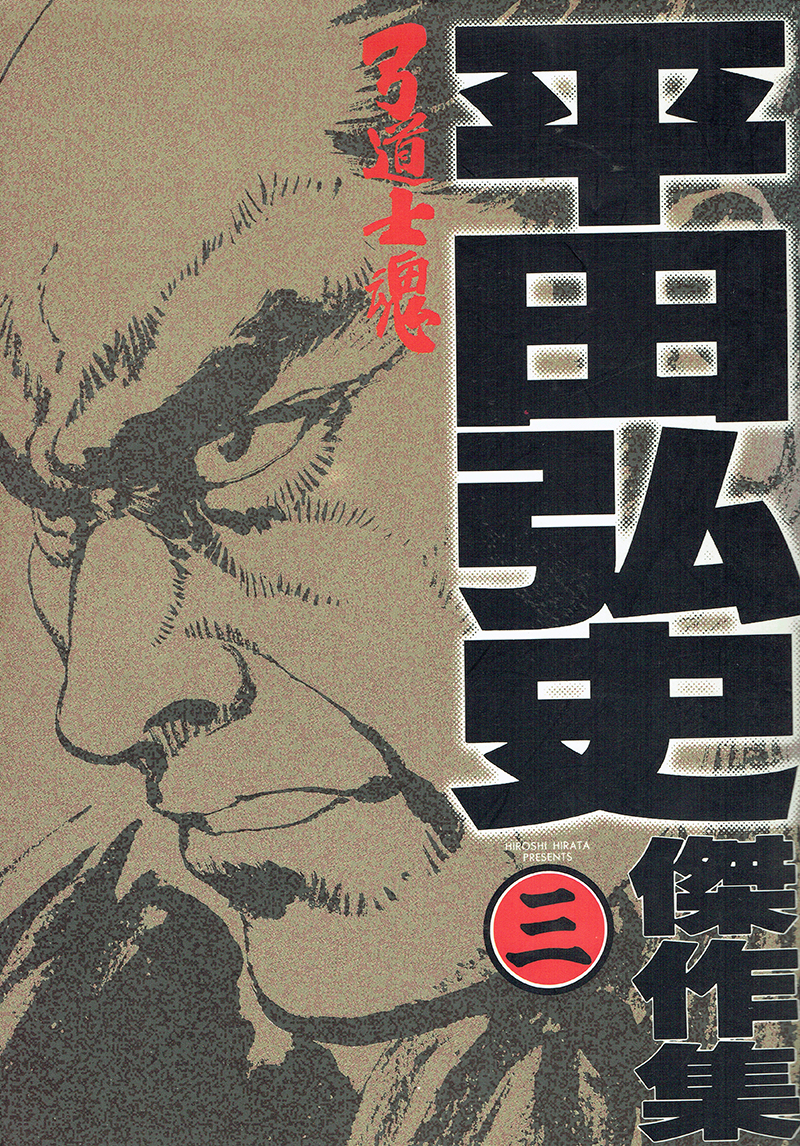
By Hiroshi Hirata | 平田弘史
Nihonbungeisha | 日本文芸社
1 volume, complete
The aesthetics of holding on to pride
-- A tale of men who risk their lives in long-range archery at Sanjusangen-do hall in Kyoto
"The lifestyle of bushido, Japanese chivalry, in Hirata’s works may be summarized as “the aesthetics to withstand irrationality and hold on to pride.” Many of Hirata’s main characters are men who accept unwanted death (or protect their pride with death) because they are samurai. They end their lives in a way that seems like a waste from the rational point of view of people in modern times. Their heartache and regret as well as dignified beauty feel within reach and are entirely convincing. Kyudoshikon is the story of men determined to succeed in long-range archery at Sanjusangen-do hall in Kyoto, drawing their bows and risking their lives as they shoulder the pride of each feudal clan. It is similar to the image of athletes aiming to win a gold medal to uphold their country’s dignity, but heavier. These men, unless they establish a new record, perform seppuku and terminate their own life. A low-ranking samurai, Hoshino Kanzaemon, the main character of this manga, becomes angry about the unfortunate deaths of so many engaged in long-range archery, and eventually becomes the warrior who speaks up to change the situation. This manga poses the question of how people ought to be, which is also relevant to current times."(Machiko Satonaka)

By Kazuhiro Fujita | 藤田和日郎
Kodansha | 講談社
2 volumes, complete
A drama of human will
-- Nightingale and battles between the idiosyncratic ghosts surrounding her
"Even elementary school kids know the name Nightingale. She was a great person who made the world aware of the need for nurses. However, the reality of nursing on the battlefield is unimaginable for us today, and needless to say, the hardships of Florence Nightingale are even harder to understand. The Ghost and the Lady, the second work in The Black Museum series (so far only two works have been published) is the culmination of the author’s worldview and shows his caliber. This work, featuring Nightingale and the battles between the idiosyncratic ghosts surrounding her, combines fantasy and real history to convey the hardships of Nightingale’s life even more realistically. The actual state of battlefield nursing. Reform blocked by a vortex of sinister interests. Rigid government offices and negligent politicians ... you will be moved by the sterner and stronger Nightingale than the familiar image in biographies of great people in the world, and once again respect her. Ghost fight scenes may be too sensational for elementary school children. However, even more tragic killing takes place on the real battlefields. This is a drama of human will that only an author who believes in the power of fantasy could depict. "(Machiko Satonaka)
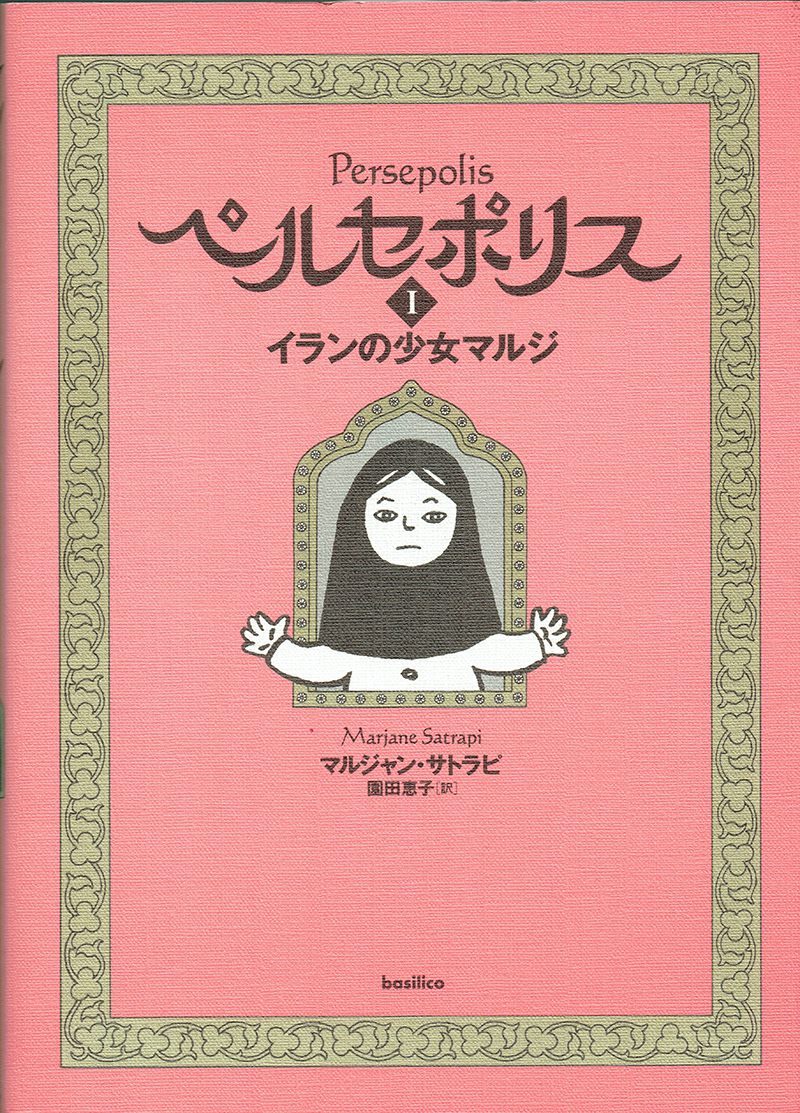
By Marjane Satrapi, Keiko Sonoda | マルジャン・サトラピ(著),園田恵子(訳)
basilico
1 volume, complete
Learn about Islamic society and culture through manga
-- The autobiography of Marji, a girl who experienced the Iranian Revolution
"This is an autobiographical work of Marji, a girl born and raised in Iran who experienced the Iranian Revolution and the transformation from a secular and pro-US monarchy to an Islamic state. Several of her relatives connected to the monarchy were jailed. The manga also introduces an episode where acquaintances are arrested and executed. While many incidents are shocking compared to life in Japan, there are also unexpected acts of bravery, such as Marji’s mother, who was permitted to visit a Western country, secretly bringing back a poster of a rock group Marji loves by sewing it underneath the liner of her coat. Marji, who remains true to herself amid Islamic culture, ultimately flees to Europe and sets herself up as a manga artist in France. This manga was well received and also made into anime featuring Catherine Deneuve and her daughter as voice actors. It provides a foothold to understand Islamic society and culture. At the same time, it opens a door to the different culture of manga from a foreign country, where the same black-and-white illustrations have a different touch from Japanese manga."(Yukari Fujimoto)

By Kousuke Masuda | 増田こうすけ
Shueisha | 集英社
15 volumes, Complete
History cut loose; untethered life stories?
Gag manga featuring Prince Shotoku, Matsuo Basho and Commodore Perry
"Anyone and anything from all ages and cultures takes the stage in this gag manga’s flight of fantasy. Aside from a number of great figures from Japan and overseas—including Commodore Perry, the Wright brothers, Isaac Newton and Ino Tadataka—Prince Shotoku, Onono Imoko, Matsuo Basho and his disciple Kawai Sora appear as semi-regular characters, Other than very basic information, such as "regent and official diplomatic delegate to China" and "haiku master and disciple," these characters' stories do not follow historical facts at all (Prince Shotoku and Onono Imoko, for example, are wearing matching sweats, and Sora keeps spitting out curses at Basho, his master). Still, this manga leads to learning history, as impact of the bizarre characters and the "anything possible" gag make you remember their names. Here is a perfect chance to become acquainted with historical figures, from the giants of history to more low-key figures. It is also an important work in the history of manga itself, as it emerged after the 90s boom with the theme of injustice and marked a new category of gag manga."(Tomoko Yamada)

By Hideki Owada | 大和田秀樹
Kodansha | 講談社
7 volumes, Complete
Politicians were cool!
Political drama of the men who ran the period of rapid economic growth in Japan
"Defeat in war, the occupation, social upheaval, reconstruction, independence, rapid economic growth, and the political storms running through these events—this is an action drama that illustrates the hottest political season in Japan’s history. The work features Hayato Ikeda, who tends not to be in the spotlight, as the smart and dynamic main character, and Eisaku Sato as an extremely good-looking supporting character. Kakuei Tanaka is also handsome. All others who rise to the position of prime minister, including boss Shigeru Yoshida and his henchmen Ohira and Miyazawa as well as Hatoyama of the opposition, are also highly distinctive in their own way. The late 20th century— when economic growth was achieved without division of the country as experienced by Germany or South Korea, or a coup—is largely the result of conflict between these powerful politicians, who put their lives on the line. The central characters are those who once served as bureaucrats or who came from less important regions and worked their way up to be at the center of politics. They seethe with tremendous vigor, which is totally different from today's politics run by the second or third generation. This manga serves as the perfect textbook for learning modern history. However, it is unfortunate that the work ends before the main character becomes prime minister. I wanted to see the drama of Ikeda as a prime minister who promotes an income-doubling plan and national land development after the administration of Kishi, who fell due the campaign against the Japan‐U.S. Security Treaty; as he pushes through the Tokyo Olympics Games while suffering from cancer; and then dies. I look forward to the following series. "(Ichiya Nakamura)

By Isamu Togawa (original script), Takao Saito (art) | 戸川猪佐武(原作)、さいとう・たかを(作画)
Kodansha | 講談社
10 volumes, Complete
The process of creating postwar Japan
A human drama tracing the history of political administrations, from after the war through the 1980s
"A political manga that depicts power games, from the Shigeru Yoshida administration after the war to the Zenko Suzuki administration in the 1980s. Readers have the opportunity to relive the flow of postwar political history that led to the current framework. Based on the original great novel Shosetsu Yoshida Gakko [Yoshida School], the rugged portrayals of characters in this work by graphic novel maestro Takao Saito and others evokes realistic images of the political world. While focusing on true stories of epoch-making political episodes in each administration, such as the campaign against the Japan‐U.S. Security Treaty and rapid economic growth, it presents a lifelike human drama. Moreover, it is fun to read, just like watching a long-running historical period show. I personally became interested in politics thanks to this manga. It is an excellent introduction to politics. "(Katsuhiro Motoyama)
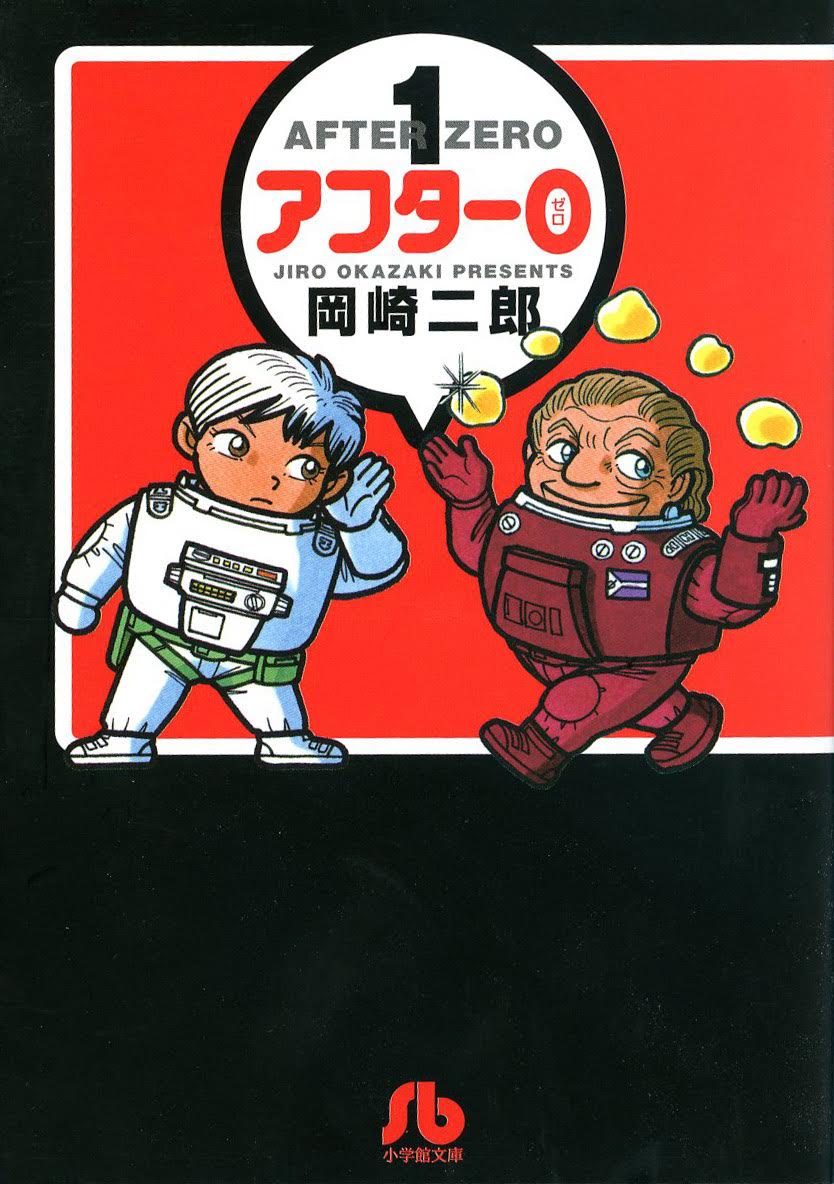
By Jiro Okazaki | 岡崎二郎
Shogakukan | 小学館
10 volumes, complete
Feeling good about our neighborhood in the cosmos
-- Full-scale, beginner-friendly science fiction with easy-to-understand expressions and cute illustrations
"The main character meets the mysterious Nayuta at the planetarium. After hitting it off, they move to an izakaya pub, where Nayuta reveals that for the last 12,000 years he has been in charge of nurturing civilization on Earth for the future. Nayuta spins a very funny tale, but the main character becomes uneasy when he learns another duty is to eliminate planets that fail to make the grade. The global situation is being shaken by political uncertainties, and the TV news is reporting about possible nuclear war. Is Nayuta a good representative who takes the side of Earth? After 0 is a sci-fi manga compilation that presents a number of this kind of deep, one-shot comic episodes. It depicts a sci-fi world using easy-to-understand expressions and cute illustrations, a world which otherwise tends to be difficult for beginners. Even people with an arts background will find it enjoyable, and people with science backgrounds are sure to enjoy it. This work will be enjoyed by anyone, from young to expert."(Takeshi Kikuchi)
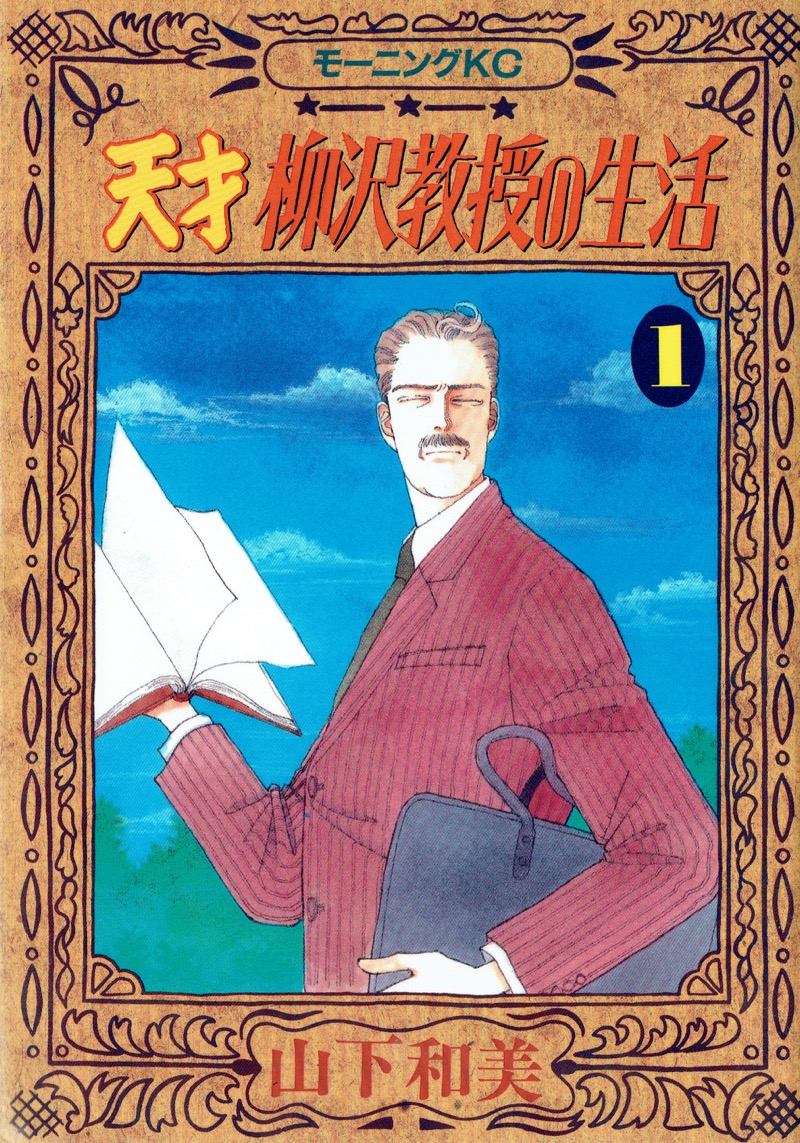
By Kazumi Yamashita | 山下和美
Kodansha | 講談社
33 volumes, ongoing
What does he see with his narrow eyes?
-- Learn from Professor Yanagisawa, who creates self-learning in everyday life
"The main character is Professor Yanagisawa, a man who loves to learn. Learning opportunities are everywhere when looking at everyday life through his eyes, clearly showing that it is up to you to make learning a pleasure. For example, Professor Yanagisawa identifies the problem of how to most effectively chase off a cat that scavenges garbage in the neighborhood, establishing a hypothesis, executing, and validating it. The harder the problem is, the more enjoyment he has, and he fully engages when thinking about solutions. This reminds of how you can create your own learning experience from problems found in daily life, rather than from problems found in textbooks. It also might suggest some ideas for children’s research projects."(Yasuhiro Yamauchi)

By Norifusa Mita | 三田紀房
Kodansha | 講談社
21 volumes, complete
Study like playing a game
-- What is studying, and what is an entrance exam? A high school student who fell behind aims to pass the exam to enter the University of Tokyo
"A manga on studying for entrance exams that straightforwardly focuses on studying itself, rather than highlighting general learning experiences. “You have to study instead of reading manga”; that’s right, manga are at the other end of studying. Using this logic, it depicts what studying is and what an entrance exam is like. It presents unexpected tips and also sends the basic message that you can pass the entrance exam to the University of Tokyo if you thoroughly understand textbooks. While it does introduce various techniques related to entrance exams and useful methods of studying, it stands apart from ordinary exam manuals by showing that relentless or peculiar teachers confuse students. That’s correct. Study as if playing a game or sport. Just like a sports manga about fighting spirit, this work shares the growth process of students, including a student who fell behind in high school and still passed the exam to enter the University of Tokyo, or a student who failed. This is also a business book about a lawyer who was once a punk biker and rebuilds management of a high school by improving the rate of students passing exams and going to college."(Ichiya Nakamura)

By Masami Tsuda | 津田雅美
Hakusensha | 白泉社
8 volumes, complete
Awaken the power of kanji
-- Were characters themselves magical spells in ancient times?
"I suppose everyone learned in elementary school that kanji characters are hieroglyphs. But you probably do not pay much attention to their magical side from symbolically combining elements in reality and phenomena. Hinoko is the name of a shrine maiden of legend. Mayura, who inherited the red fingernails of the right hand of Hinoko, has the power to make written characters a reality. When she writes kanji for fire, fire appears; when the character is for flying, people can fly in the sky; and when the character she puts down is for protection, harm to a particular person or thing can be prevented. As you breathlessly follow the exciting story, you’ll realize how your feelings toward kanji have changed."(Yukari Fujimoto)

By Makoto Yukimura | 幸村誠
Kodansha | 講談社
4 volumes, complete
The light and shadow of space development
- Thinking about a realistic near-future from the viewpoint of a space debris collector
"This takes place in near-future space and on Earth. The main character is a collector of debris that floats in space. The excellence of the manga is found in its depiction of both the positive and negative aspects of space development from the viewpoint of ordinary people of the future, when space travel is easy. It shows that the issues of today remain even when people start to go to space; for example, some people cannot become astronauts, a star occupation, even when desired, and a space society cannot be maintained unless the garbage is collected, as the main character does. It would also be interesting to read the manga while imagining a time when people routinely visit space."(Yasuhiro Yamauchi)
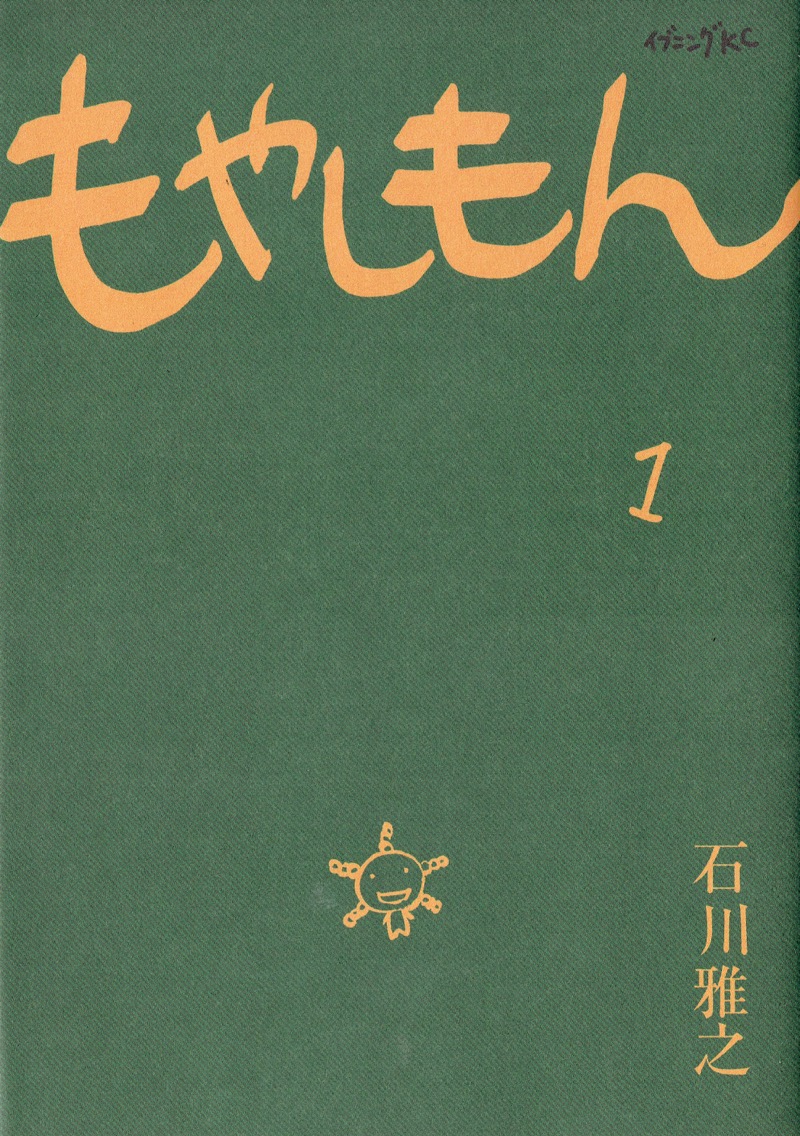
By Masayuki Ishikawa | 石川雅之
Kodansha | 講談社
13 volumes, complete
Kamosu (to cause fermentation/decomposition)
-- A youth group drama of student life with bacteria and viruses at an agricultural university
"A youth group drama of student life with bacteria and viruses at an agricultural university. It centers on Tadayasu Souemon Sawaki, the main character with a magical ability to see bacteria with the naked eye. Bacteria are illustrated as deformed characters, and their kamosu—fermentation or decomposition—leaves a lasting impression as the representative expression of the manga. This work moved the boundaries of manga by rendering the world of invisible bacteria and viruses into visible characters, and notes let readers learn about them. Readers can also find out what a special school such as an agricultural university is like."(Naoko Hosoda)

By Cyuya Koyama | 小山宙哉
Kodansha | 講談社
33 volumes, ongoing
Everyone tries hard, cries, and laughs
- You feel as if you are growing together: the story of siblings aiming to go into space
"A story of the growth of siblings aiming to go into space … but wait, this cannot be categorized so readily. In great detail, it explores the mechanical technology of NASA and JAXA in the near future as well as knowledge of astronomy. It also shows the tough training and activities on the moon, reasons astronauts and support staff have different roles, importance of communication in teamwork, and difficulties of organization management, such as layoffs and securing budgets. All in all, it is a very human drama of very appealing people from diverse countries. Here we discover strong ties between siblings or children and parents, friendships between companies, frustrations with rivals, conflicts between superiors and subordinates at work, the glimmer of love, and successes and failures. Some people are put under the spotlight, others suffer setbacks. All characters are strong, weak, adorable, and very unique. No one is perfect or useless, or a bad person. They all try hard, cry, and laugh. These are the circumstances in which the siblings grow. This manga is still being published as a series, and seeing the hard work by siblings of my son’s generation makes me feel as if I am growing myself. "(Ichiya Nakamura)

By Mochi Nishi | 西餅
Kodansha | 講談社
4 volumes, complete
Use all the time spent dithering to take action
-- Another kind of youth story where a girl in the science program helps people and starts a business with electronic handicraft
"A girl in the science program devotes herself to electronic handicraft, unintentionally helps others, and launches a business along the way. There is youth fiction with this story too, and I read the pilot version of the manga and hoped for a series. This is an enjoyable read from start to finish. We follow an adorable, absent-minded girl going through life without clear purpose. Since childhood, she disassembled appliances at home. Following the advice of a high school teacher, the main character, who is a bit different from ordinary kids, takes up electronic handicraft, uses it to help others after entering college, and gradually broadens her world. Everything she makes using computers or sensors is appealing. Creating the tools you need by fully utilizing IT will be an important skill in the future. Programming will be adopted in school education. This manga amusingly illustrates a pioneer of these trends. The programmer female student mumbles an unnerving line: “I think it’s better to use all the time you spend dithering to take action.” This kind of magical touch is another reason to take notice."(Ichiya Nakamura)
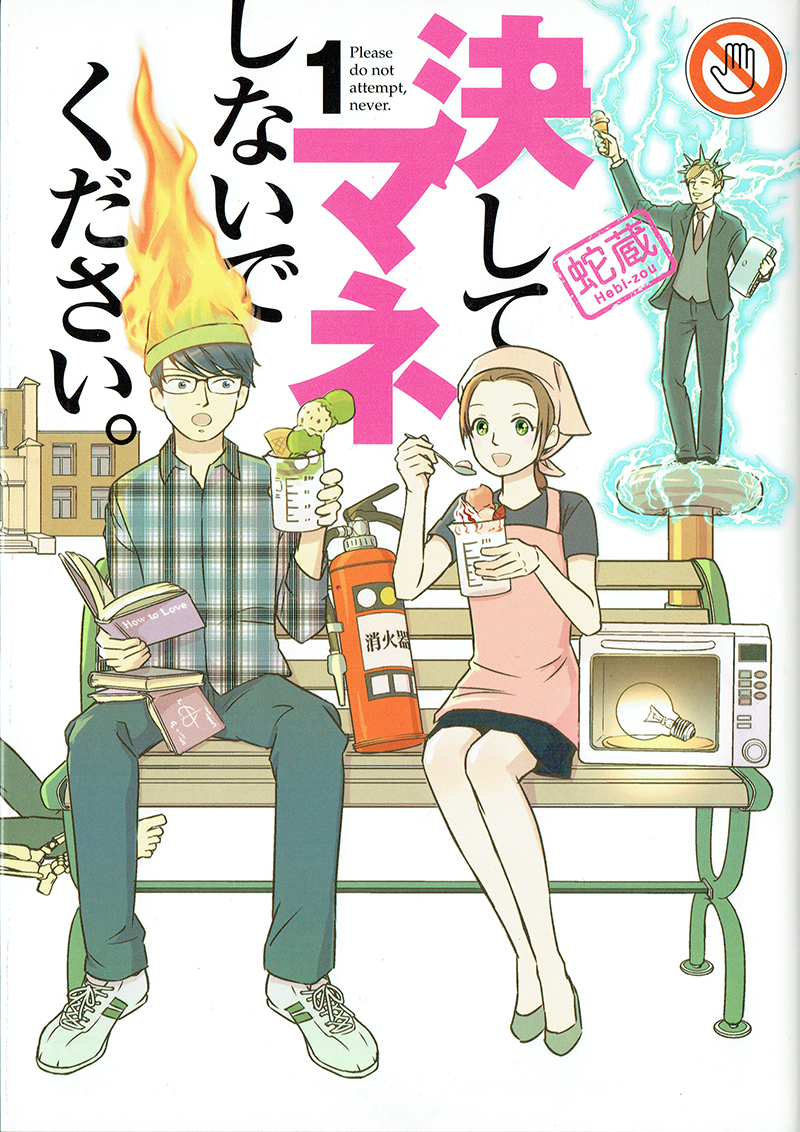
By Hebi-zou | 蛇蔵
Kodansha | 講談社
3 volumes, complete
Science is deep, and familiar
-- Serious and silly experiments by male students at a university of technology and medicine
"This is a study manga that follows peculiar male students at a university of technology and medicine as they repeatedly conduct science experiments, which are designed to help a science-oriented, communication-challenged student who is in love with a girl working at the campus cafeteria. The experiments are serious and silly: decorating a Christmas tree with glowing squid; transforming cheap chicken into premium homebred chicken; and distilling beer to make whisky. The achievements and history of such scientists as Rutherford, Lavoisier and Bernoulli are inserted between the experiments, and readers end up learning about science whether they like it or not. How about building a PC starting with transistors, rather than simply assembling one. Or because a hard-to-divide number is good for a monetary gift at a wedding, it should be a prime number, and therefore a value of either 29,989 yen or 30,011 yen. Lines like these, which the author learned by hanging around labs at the University of Tokyo, Tokyo Institute of Technology and Osaka University, are found throughout the manga. This exchange made me laugh: “What is 3.14?” “It’s the circumference ratio!” “Incorrect, it is White Day for those who actually have a life!” Science is deep, and familiar."(Ichiya Nakamura)

By Akane Shimizu | 清水 茜
Kodansha | 講談社
5 volumes, ongoing
Beloved cells
-- Is a red blood cell a cute and bumbling girl? Personification of cells in the body and viruses
"An unprecedented and ambitious manga that personifies cells in the body and viruses. A cute and bumbling red-blood-cell girl carries nutrients while losing her way inside the body. A cool and clumsy white-blood-cell man fights against foreign enemies such as bacteria and viruses, and helps the red blood cell. It looks like a perfect entertainment manga. However, what’s inside is like a fun reference book that skillfully teaches us the functions and roles of cells at work in your body. It is impressive, making me think, “I wish science class at school had been this fun!” Reading this manga allows you to imagine cells working inside the body when having a cold, getting vaccinations, or even in daily routines. Strangely, you will come to cherish your cells dearly."(Katsuhiro Motoyama)
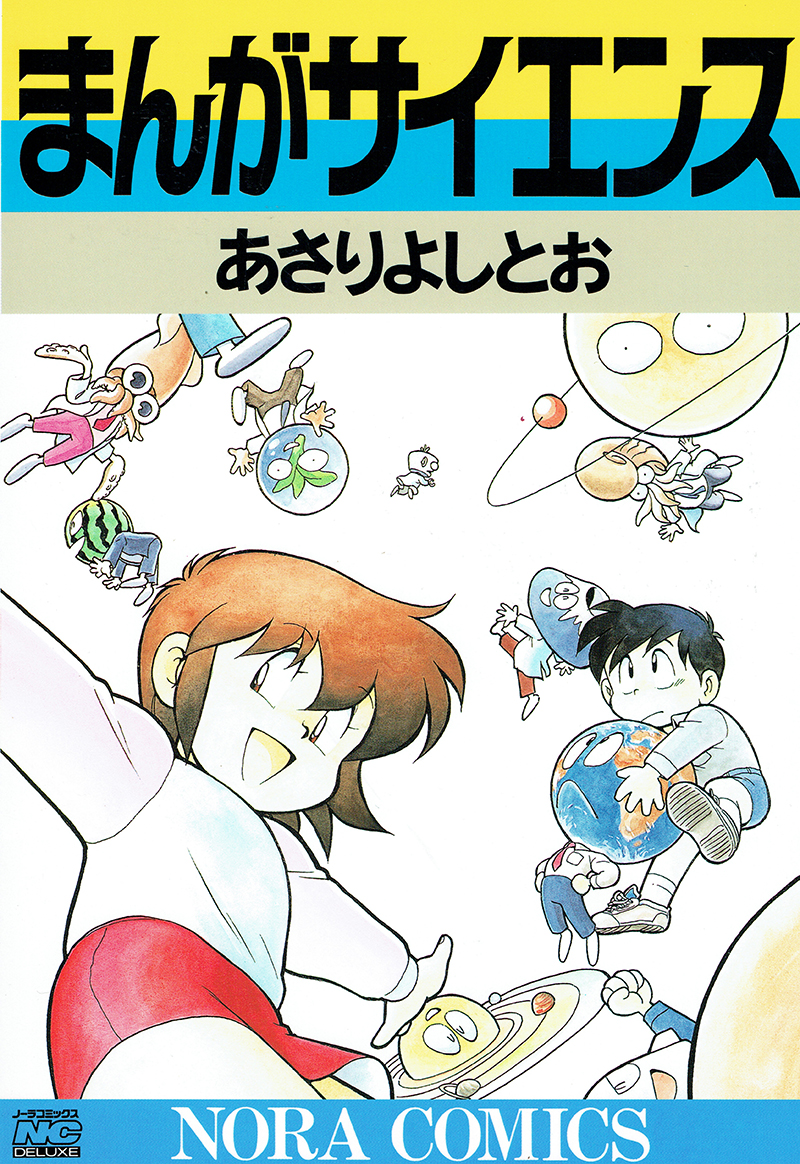
By Yoshitoo Asari | あさりよしとお
Gakken Plus | 学研プラス
14 volumes, ongoing
This manga makes science interesting
-- Join fun characters on a journey to find out about the world you do not know
"“Is it true that smartphones are made of squid and sardines?” “When will Mt. Fuji explode?” “What is global warming? Is it bad?” “Why does a robot have to have a human shape?” “Why do people want to go into space?” Sorry to pose all these questions, but don’t you wonder about these things? You may say, the answers can be found by searching on the Internet, or by watching a special program on TV. No, you can easily find the answers if you read this manga right now. Start wherever you like--this easy-to-understand manga will clear up the things you don’t know. ”Don’t you want to know how to become smart?” “Would dinosaurs have developed the world instead of humans if they had evolved?” “Where does it go when you flush the toilet?” “How do you make thread using crabs?” “Are your eyes right-handed or left-handed?” When you read Manga Science, the fun characters take you on a journey to find out what you do not know."(Takeshi Kikuchi)

By Fujiko. F. Fujio | 藤子・F・不二雄
Shogakukan | 小学館
1 volume, complete
Doubt common sense!
-- A trip to planets with Mojara, an extraterrestrial biological entity, and Donmo, a robot
"One of a very few full-scale sci-fi works by Fujiko F. Fujio. Main character Sorao, an Earthman, travels to different planets with Mojara, an extraterrestrial biological entity, and Donmo, a robot. The utter confusion of Sorao and his companions in an environment ruled by totally different cultures and values from Earth is entertaining simply to look at, yet the question communication with non-humans raises about common sense for people is sobering. For example, on a planet where immortal living organisms reside, death is perceived to be a special event, and “suicide festivals” are held. It makes you realize that life is dramatic because there is an end. I hope adults who think this work with its cute characters is for kids pick it up. The manga’s SF world of light and easy black humor is a great introduction to the really intriguing aspects of science fiction. "(Yasuhiro Yamauchi)

By Shintsuu Satou | 左藤真通
Kodansha | 講談社
4 volumes, Complete
A robot is an ambitious dream in any age
Story of an engineer who tries to develop a bipedal walking robot
"The manga features an engineer who pursues his unfulfilled dream of developing a bipedal walking robot. This mechanical engineering nerd has a certain innocence, but is not suited for business. He loses his funds, friends and production environment yet keeps hold of his skills and ambition. An uncrushable, dedicated genius does get a chance. What does he see ahead after creating and struggling with his devotion? Robots have advanced significantly, to the degree where machines taking jobs from people is a concern. Yet at the foundation there is the spirit of making things while covered in sweat, grease and solder. It is the strength of Japan. Aiming at a bipedal type is the stubborn route taken by Japan since Astroboy. This is the story of following your dream in Japan. Creating a robot seems to have become popular, considering that programming education is now a requirement at elementary schools. While science and engineering education is once again receiving attention, this work presents a model that young people today can aim for. "(Ichiya Nakamura)

By Yuusei Matsui | 松井優征
Shueisha | 集英社
21 volumes, Complete
Teacher's dream is for students to kill him
With Koro-sensei, the most powerful super creation, and Class 3E; one year of putting your life on the line
"This is the ultimate study magazine. The theme itself is education—education where your life is at stake. Koro-sensei, the most powerful super creation that can move at Mach 20, can transform his tentacles into superfine threads and operate them at blinding speed (yet he looks like an octopus and silly), and gives Class 3E students at risk of failing grades an assignment to assassinate him—their homeroom teacher who cannot be killed even by state-of-the-art weapons—before graduation. They must succeed at any cost. Students face Koro-sensei by giving their best physically, mentally and in terms of their learning abilities, and devote all their strength to killing Koro-sensei one day, “knowing the determination to face another by putting your life on the line.” Before long students learn how Koro-sensei came to be this way, and the climax approaches ... When considered against the expression “outstrip one’s master,” the ultimate joy of a teacher is for students to go further, or, in a sense, “kill” the teacher. Koro-sensei embodies this. The ultimate ideal of education is found here. "(Yukari Fujimoto)

By Motohiro Katou | 加藤元浩
Kodansha | 講談社
50 volumes, Complete
The pleasant epiphany of a logical path!
A mystery manga where a boy genius solves cases by logical deduction
"While there are many famous mystery manga, true surprise when a case is solved is not so common. This work—in which Toma, the main character and boy genius, solves cases with his classmate Kana—makes you realize that “understanding the logic to clearly explain something seemingly unrelated at a glance will fundamentally change how you see the world.” In the process of explaining deduction, mathematical theorems are woven into the story. While this manga has been made into a TV drama, I hope readers will not become too absorbed in the drama’s images and instead find the surprise and joy of opening up the world by changing your perspective. "(Yukari Fujimoto)

By Fujio F. Fujiko | 藤子・F・不二雄
Shogakukan | 小学館
1 volume, Complete
What is common sense and who decides?
A jewel of a series: short works filled with discovery and excitement
"The main character happens to arrive by spaceship at a planet where a cow-like creature is at the top of the ecosystem and humanoids are kept as livestock. On this planet, cows eating people is taken for granted, and the main character claiming otherwise runs counter to common sense and is indeed heretical. While we tend to believe that common sense and rules are absolutely universal, values differ by time and individual standpoints. This manga teaches that we must not forget to ask fundamental questions about what is decided: "Isn't it strange?" or "Can we think this way?" The work offers insights for today’s world, with its diverse values. Fujiko F Fujio is the authority for children’s manga, and in childhood everyone must have experienced the thrill of the unknown with such manga as Doraemon. Unique short works such as this one bring back memories of the joy of satisfying intellectual curiosity, something you tend to forget as you grow up."(Yasuhiro Yamauchi)
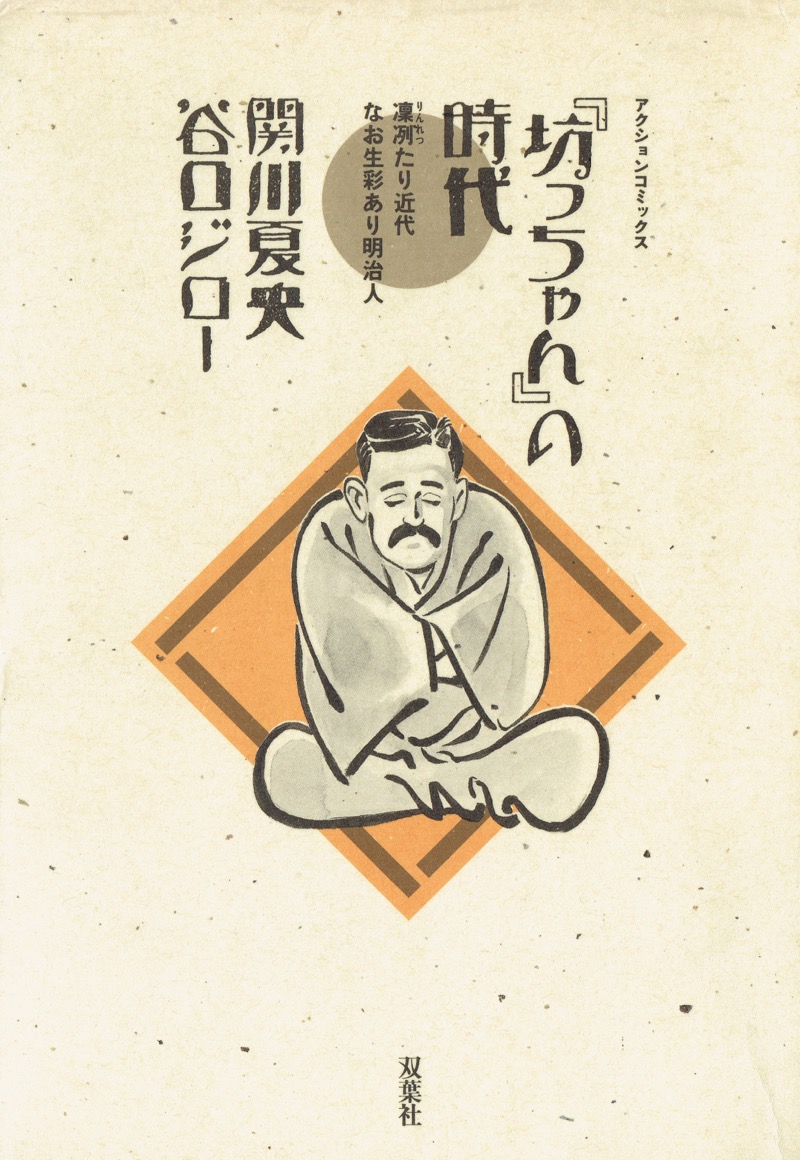
By Jiro Taniguchi | 谷口 ジロー、関川 夏央
Futabasha | 双葉社
5 volumes, complete
An unexpected side of Natsume Soseki
-- “Novels are the brain passing gas,” says Soseki. Vivid depiction of the times is also noteworthy
"First of all, Jiro Taniguchi’s wonderful illustrations provide a glimpse into the milieu of the Meiji Period. Taniguchi always adeptly conveys the ambience, as seen in his depiction of delicious-looking meals in Kodoku no Gurume [Solitary Gourmet] or severe mountain conditions in Kamigami no Itadaki [The Summit of the Gods]. Likewise, illustrations are very powerful here in Botchan no Jidai. The story very realistically portrays the anguish of such Meiji authors as Natsume Soseki and Ishikawa Takuboku, conveying how authors perceived the times and expressed them. This is a great read to gain a deeper understanding of the times of Meiji and the era’s authors. "(Youhei Sadoshima)

By Waki Yamato | 大和和紀
Kodansha | 講談社
13 volumes, complete
Feel the pulse of the Heian Period
-- Into the world of The Tale of Genji, in a surprisingly natural visual format
"The Tale of Genji has been made into films and translated into modern languages innumerable times, and this work is not the only manga based on the story. Still, exposure to the pulse of the Heian Period when Japanese sensitivities started to mature as unique qualities is essential education for Japanese people. However, details of the original text are too hard for modern people to understand. As manga, this work naturally visualizes the world of The Tale of Genji without the impediment of having to read it, and can be more moving than the original."(Machiko Satonaka)

By Naoko Matsuda | 松田奈緒子
Kodansha | 講談社
1 volume, complete
What kind of person is Ryunosuke Akutagawa?
-- Sincere about the act of creation but loves beautiful women and sweets: the human side of Akutagawa
"An excellent manga that goes one step further than usual images of Ryunosuke Akutagawa as a temperamental genius. Here we find Akutagawa the lover of beautiful women and sweets. His workload is prodigious—he needs the money to fulfill his responsibility as head of the family--yet he can still be indecisive and pathetic. However, Akutagawa remains sincere about putting the beauty of the world into words. Matsuda’s version of Akutagawa is very human. The description of his character is simply brilliant, making you understand that Akutagawa was a living human being. The author’s affection for his character is on full display. Reading this manga first will put the works of Ryunosuke Akutagawa in a more profound and interesting light."(Tomoko Yamada)

By Yukiko Seike | 清家雪子
Kodansha | 講談社
8 volumes, ongoing
A true derivative work of poetry and haiku
-- A dark fantasy based on masterpieces by Sakutaro Hagiwara and others, with a unique worldview
"Shikaku-gai is a fictional town with a modern Japanese atmosphere inhabited by poets. The manga is a dark fantasy based on masterpieces of modern poetry and haiku by Sakutaro Hagiwara, Hakushu Kitahara, Tatsuji Miyoshi, Saisei Muro, Akiko Yosano, Mokichi Saito, Bokusui Wakayama, Kyoshi Takahama, Takuboku Ishikawa, Michizo Tachihara, Chuya Nakahara, Kotaro Takamura, and Shiki Masaoka. The author adds imaginative touches to complete the worldview with numerous characters based on images of these master poets. Obscene and insane, the world is cloaked by masterpieces of poetry and haiku as well as by desire and despair, resulting in a true derivative work. Readers are exposed to the interpretation and profound world of modern poetry and haiku. Moreover, this can serve as model for the derivative work method."(Naoko Hosoda)

By Yuki Isoya | 磯谷友紀
Kodansha | 講談社
12 volumes, complete
Every book is a whole world
-- Reconfirming the appeal of books, a glimmer of light when feeling lost in life
"A book contains folded time. As you open it, you enter a different world. This can be a glimmer of light for people who have lost their way in life. The main character is Akari, who works at a bookstore, and each episode revolves around a book. Will you find a story you like here? This manga also vividly illustrates the work of a bookstore. You can enjoy this as a job manga for reference when you think about work and a career in the future."(Yukari Fujimoto)
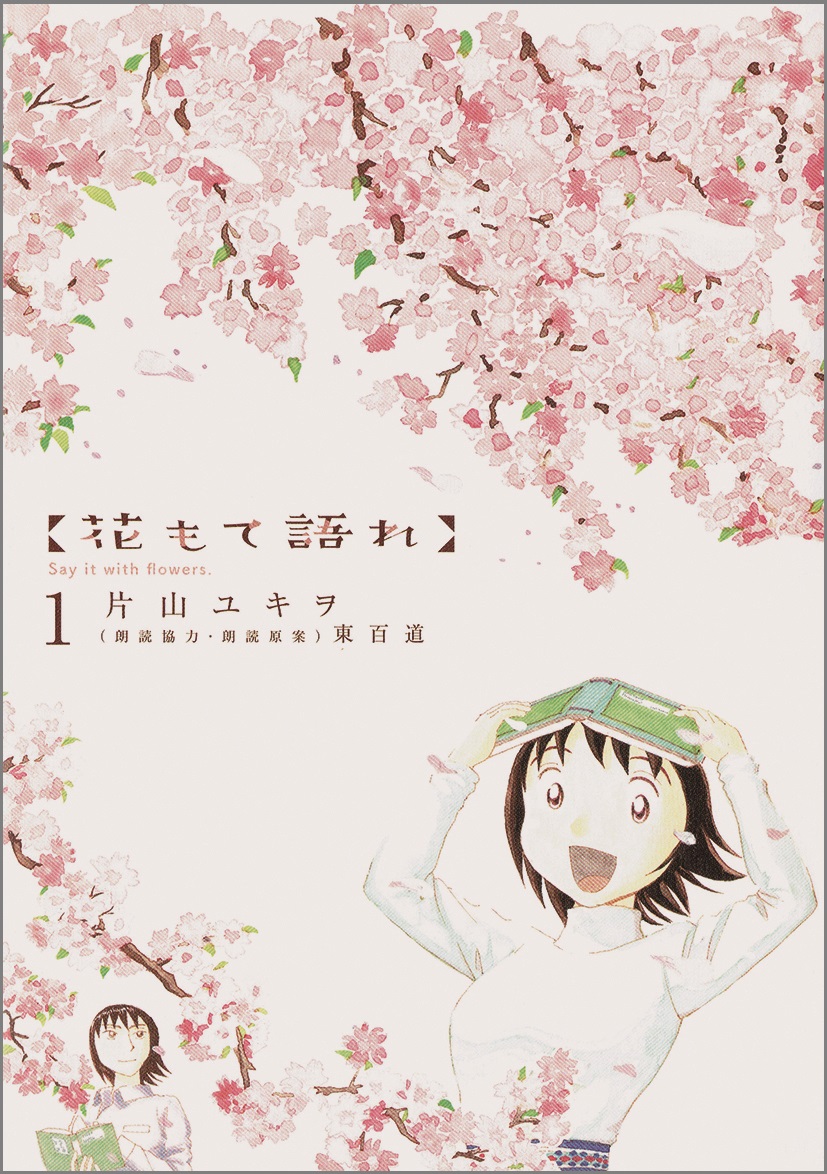
By Yukiwo Katayama, Momoji Higashi | 片山ユキヲ、東百道
Shogakukan | 小学館
13 volumes, complete
“Read aloud” in Japanese class becomes fun!
-- The deep world of dramatic reading, where you come face to face with words, again and again
"While there are works based on the theme of reading a book, this might be the first manga that depicts the world of dramatic reading. This manga clearly shows that recital is a logical culture based on accumulated expertise in techniques. The author utilizes various ideas to express the world of dramatic reading through manga, such as changing fonts of characters’ lines according to who is speaking. The manga lets you fully enjoy the profoundness and intellectual pleasure of a world where you come face to face with words. This would make “read aloud” time in Japanese language class fun. Indeed, here is a manga that is worthy of the description, “discovering the world.” "(Tomoko Yamada)

By Banko Kuze | 久世番子
Bungeishunju | 文藝春秋
1 volume, complete
Writers are an interesting “race”
-- An essay manga comically explains the unknown side of great writers
"If the main character of Botchan, a novel by Natsume Soseki, was alive today and using SNS … this introduces the masterpieces by adding a dose of humor from transposing them to familiar settings, something only possible with manga. In this essay manga—the title mentions “literary club”—we find episodes about individual great writers, such as authors and editors playing club members and reporting what it was like to participate in a commemorative ceremony on the anniversary of the death of Dazai Osamu. The work also comically explains great writers’ unknown twisted personalities or eccentric behavior, creating fresh interest in the writers and their masterpieces, as well as in rereading the works introduced in school textbooks. You will realize once again that writers are an interesting “race.”"(Naoko Hosoda)
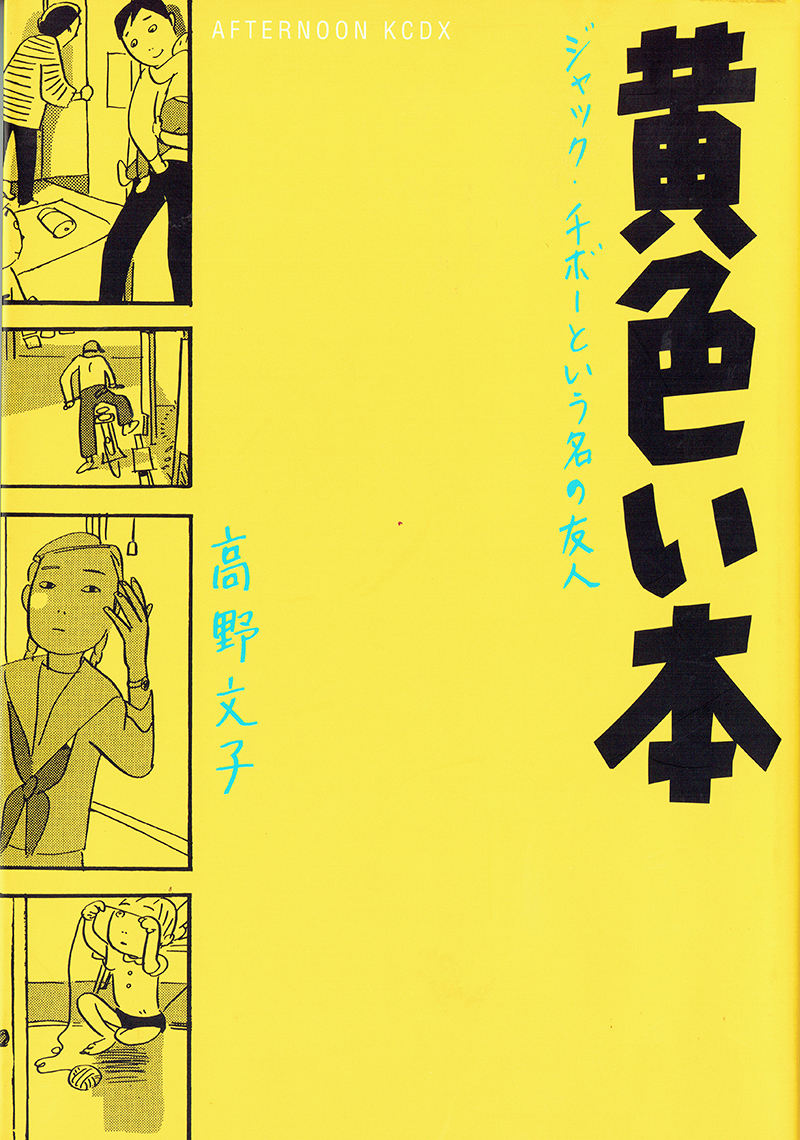
By Fumiko Takano | 高野文子
Kodansha | 講談社
1 volume, complete
The wonder of reading books
-- Join the main character in the enjoyable experience of reading the novel The Thibaults
"This manga lets you experience reading books. The main character is Michiko, a high school senior in a small city. She likes books and is currently reading The Thibaults, a novel of worldwide acclaim. There are five volumes in total, each with a yellow cover, and Michiko is borrowing them from the school library. They are thick and heavy books, but she does her best and reads a little every day. The novel’s main character is Jacques, a boy who lived in France a long time ago. Michiko gradually is absorbed by the world of the novel, befriending Jacques in the fantasy and sharing the anguish of youth and hopes for revolution. However, she cannot stay in the fantasy world forever. As graduation approaches, she faces the reality of starting a career. Soon she needs to bid Jacques goodbye. When only a few pages remain in the novel, Michiko’s father asks her, “Do you want to buy the book?” Michiko replies, “No, no need, as I’m almost done.” Her father says, “I think it is a good idea to have a favorite book for the rest of your life.” This manga conveys the wonder of reading books, such as visiting a far-away country of long ago or meeting someone you otherwise would never run across in life. "(Koichi Yuri)

By Chiho Saito | さいとうちほ
Shogakukan | 小学館
13 volumes, complete
Glorious and anarchistic ... Heian picture scrolls!
-- A man becomes a woman, a woman becomes a man. The prototypical sex switch story
"Two children were born one after another to different wives of the minister and chief adviser to the Emperor. The girl is active and boyish, and the boy is shy and girlish. But these two look completely alike. As they approach the time they come of age, they switch sexes. As a result, the girl becomes an adult as a nobleman, and the boy becomes an adult as a princess. Written nearly 1,000 years ago, the original story is basically the prototype of a “sex switch story,” and some of you may have learned about it in classical Japanese class. When you read this manga, the outrageous storyline involving more than a simple sex switch will surprise you. However, Chiho Saito’s work is the most faithful to the original story compared to other manga. Glorious illustrations based on proper background research take you to the world of Heian picture scrolls and deep inside the story. At the same time, you will be surprised at the anarchistic nature of the Heian Period story. "(Yukari Fujimoto)
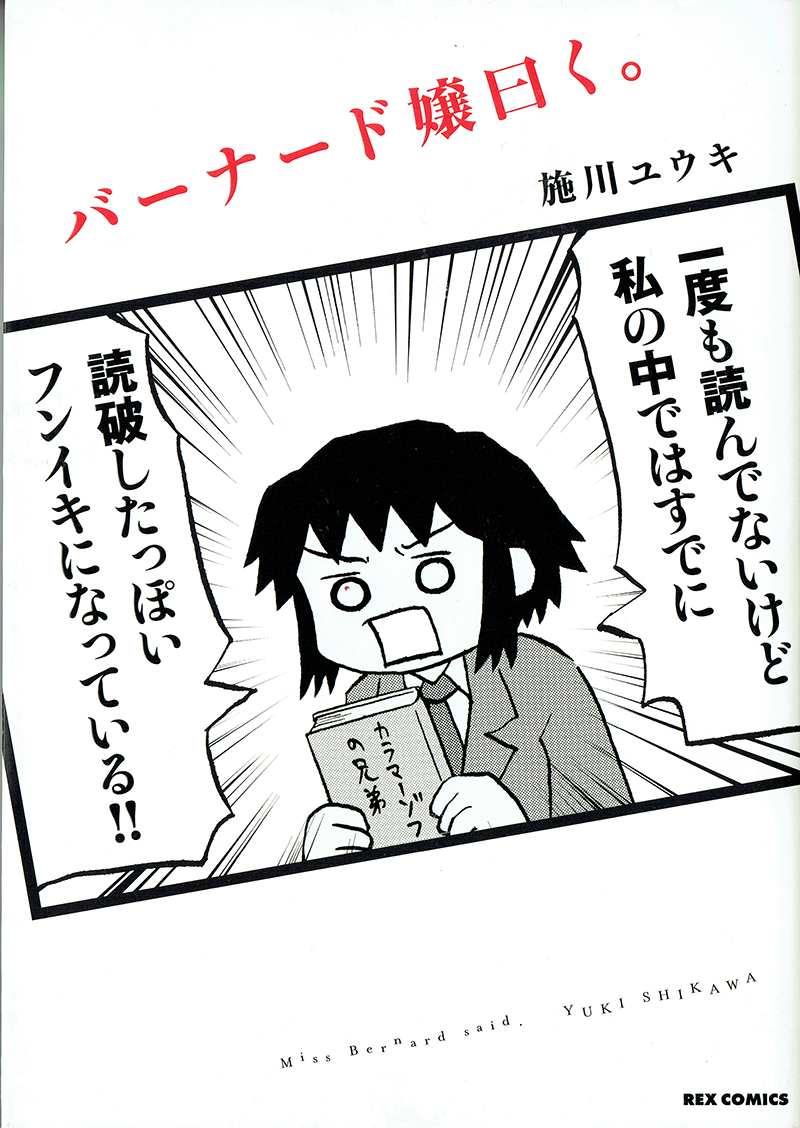
By Yuki Shikawa | 施川ユウキ
Ascii Media Works
3 volumes, ongoing
Reading this makes you want to go the library
-- Amusing characters with unique appeal, including the main character, who is determined to act like a bookworm
"With the library as its stage, this is a manga of literary art gags as well as detailed knowledge of wise sayings. Its unique appeal cannot be expressed in just one word. Amusing club members casually gather at the library, and include Sawako Machida, the main character, whose purpose in life is to act like a bookworm; Endo, who is into finding and reading books popular in the past and now available used at 50 yen; and Shiori Kanbayashi, who cannot stop talking about SF topics in excruciating detail when asked. Characters all have different attitudes toward reading books. Somehow the people are all funny, but looking at them makes you start to wonder if reading books can really be like that. This manga might make you feel like going to the library. I hope all libraries nationwide carry a copy. The author's column on reading books is also substantial; take time to read it carefully as well."(Tomoko Yamada)

By Mitsuharu Yanamoto | 柳本光晴
Shogakukan | 小学館
8 volumes, ongoing
A star JK high school girl of the novel world
-- A genius high school girl entangles others as she aims to debut as a novelist
"Do you remember that Hanabi, a work by comedian Naoki Matayoshi, was awarded the Akutagawa Prize and received lot of attention? In the manga world, popular hits continue to come out every year. Yet in the realm of novels, especially in the “pure literature” field, many years separate big hits. “Hibiki” is the story of Hibiki Akui, a high school girl who is also a pure literature prodigy, and because of her excessive genius, she entangles grown-ups and friends, including: schoolmate Rika, who is the daughter of a very popular novelist; a young writer, who aims to become a novelist; and a professional writer, who already won the Akutagawa Prize. Unintentionally, Hibiki sweeps the others aside. The manga uses different expressions from those found in conventional pure literature, but what would happen if a star high school girl—someone who seems like a real person living in contemporary times—emerges in the world of the novel? For those fascinated by the domain of words, this manga is recommended. "(Takeshi Kikuchi)

By Multiple | 榎本俊二/今日マチ子/久世番子/近藤聡乃/しりあがり寿/高野文子/中村明日美子/西村ツチカ/古屋兎丸/山口晃/山田参助
Chuokoron-Shinsha | 中央公論新社
1 volume, Complete
Tanizaki is really cool!
Junichiro Tanizaki's idiosyncratic world is made into manga by 11 unique artists
"Among the greats of literature, Junichiro Tanizaki stands out for his idiosyncrasies and unique character. This anthology features manga versions of Tanizaki’s novels, as envisioned by 11 equally idiosyncratic cartoonists. When you finish reading the manga you realize how paranoid and captivating Tanizaki was. While literature in the domain of belles lettres tends to be regarded as serious and hard to approach, a picture of Tanizaki’s unique personality emerges as you read the novels here. This touches a chord with cartoonists and manga fans. As a project by an established publisher, it includes appropriate explanation of each of the original novels. We learn of the human foibles of the author through manga, and this kind of encounter with literature is OK."(Yasuhiro Yamauchi)
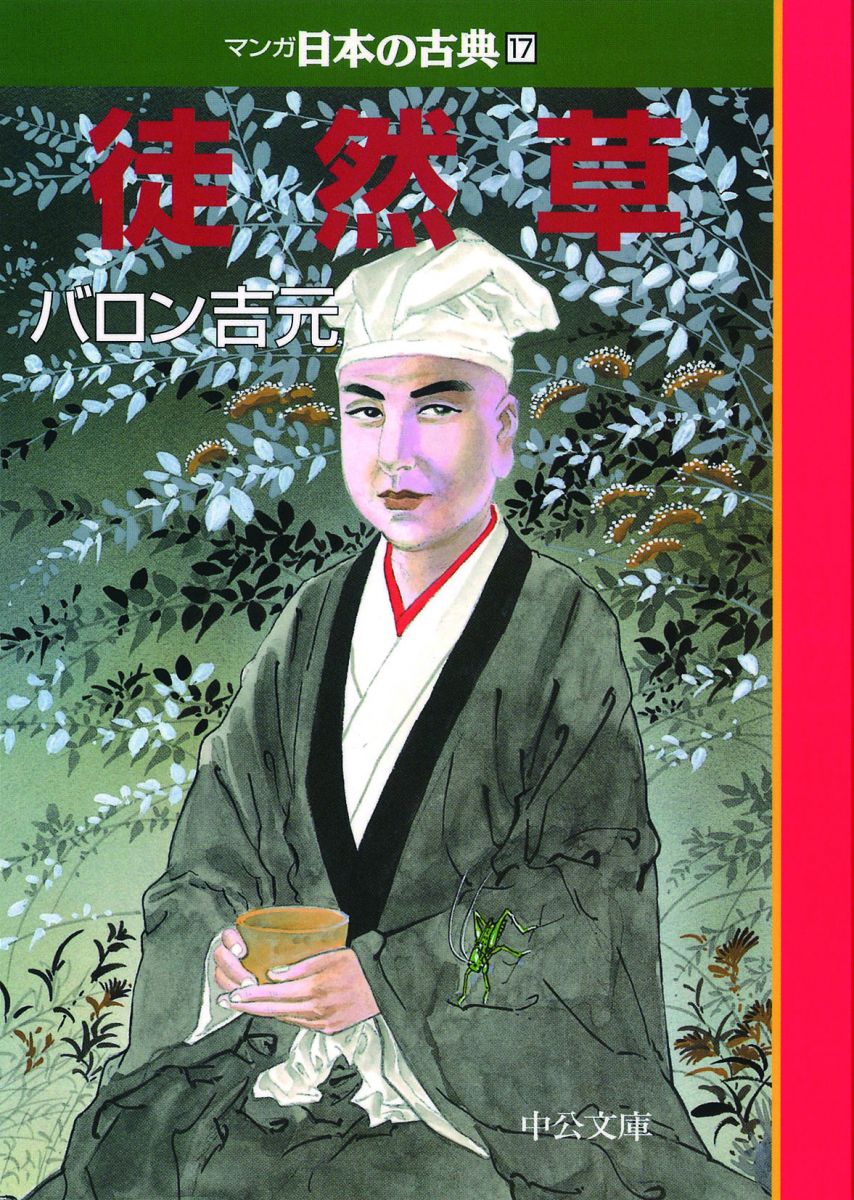
By Baron Yoshimoto | バロン吉元
Chuokoron-Shinsha | 中央公論新社
1 volume, Complete
Mutterings from 700 years ago, turned into manga
Essays from the late Kamakura Period, illustrated by a manga master
"Tsuretsuregusa [Essays of Idleness, also translated as The Harvest of Leisure] is a series of essays written by Yoshida Kenko (Kenko Hoshi) in the late Kamakura Period (early 14th century). These 243 passages capture the highly cultured author’s cynical views of the world, his straightforward comments on romantic entanglements, mutterings on the impermanence of life, and so on. Baron Yoshimoto, a master cartoonist, covers all 243 passages, using only one frame for some and a maximum of five pages. Comparing individual frames to the original text is one way to enjoy this work. Baron Yoshimoto, the author of the manga, thinks that "Kenko Hoshi probably had the courage to criticize politics under the rule of Emperor Godaigo [1318-1339], the time the original work was written." While there is always criticism against a regime, how it is expressed shows the talent and ability of an author. After covering all 243 passages, the manga’s last page offers Yoshimoto’s reflections on impermanence. This final page is something that would surely please Kenko Hoshi. "(Machiko Satonaka)

By Hidekazu Himaruya | 日丸屋秀和
GENTOSHA COMICS | 幻冬舎コミックス
6 volumes, complete
A world map through the lens of moe virtual affection
-- Qualities of nations as seen through personification and relationships between characters
"A four-panel comic that personifies the character of various countries (mainly Western and Asian nations). Each country’s characteristics, relationships with other nations, simple history and geographical setting are learned through gags, which makes it an enjoyable introduction to world history and geography. While there are some biases and differences in interpretation, the easy-to-approach characters overcome these issues. Even readers who have difficulty remembering katakana character names will find the countries familiar due to personification. This sense of familiarity explains why so many parody manga are published."(Naoko Hosoda)
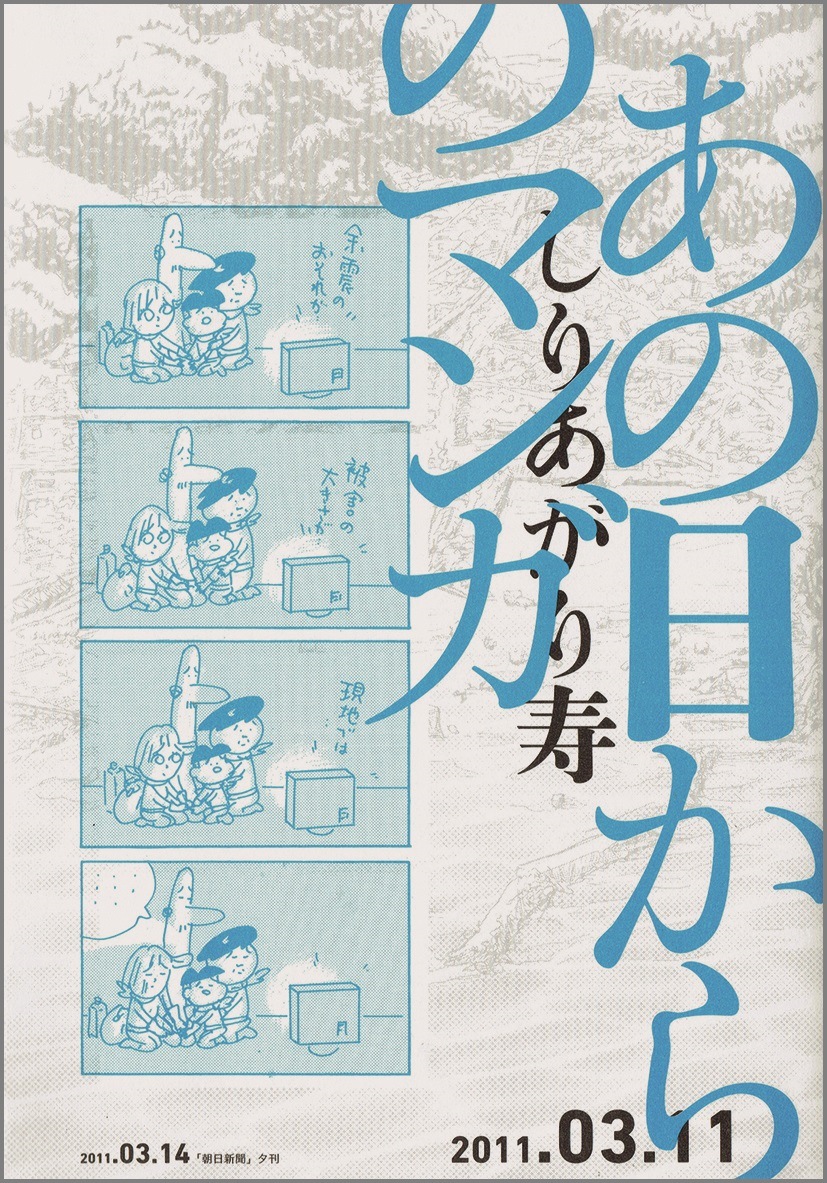
By Kotobuki Shiriagari | しりあがり寿
Enterbrain
1 volume, complete
Since March 11, 2011
-- Those of us who learn about disasters via media: our viewpoint. What did we feel at the time?
"An anthology of some of the four-panel manga that the author published as a series in Asahi Shimbun. “That day” is March 11, 2011, the day of the Great East Japan Earthquake. The author, who was not in the affected areas on the day of the disaster, depicts things that happened around him since that day, taking the same viewpoint as readers who were also not in the areas. The work shows the bewilderment, fears and feelings of the average person, who learns about conditions in disaster areas from TV or newspapers, not from actual experience in the locations themselves. It uses uniquely exaggerated expressions and satire only possible with manga. I would definitely recommend this in order not to forget what we felt back then, and to remember again what we felt was important and did not want to lose. "(Yasuhiro Yamauchi)
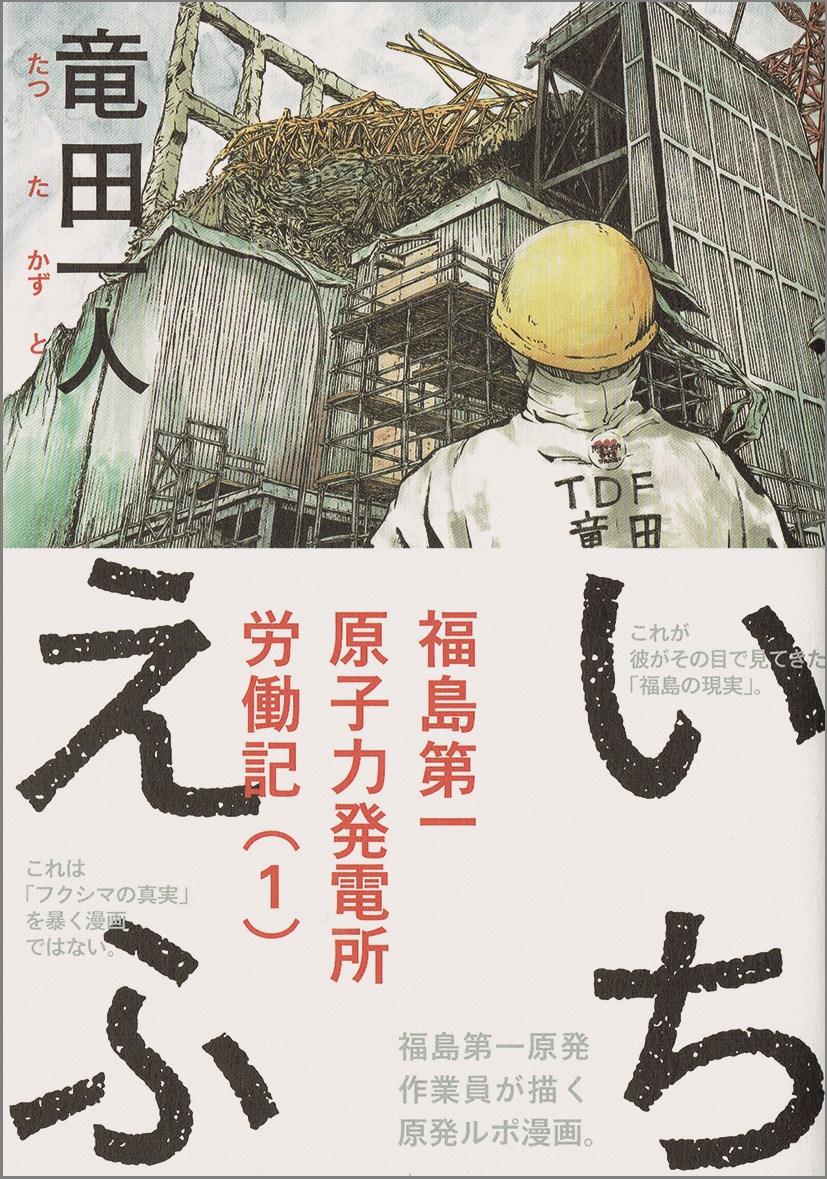
By Kazuto Tatsuta | 竜田一人
Kodansha | 講談社
3 volumes, complete
The Fukushima of real tension and laughter
-- Reportage of days in the life of an ordinary person working at Fukushima Daiichi Power Station
"A reportage manga based on the author’s experience as a worker at Fukushima Daiichi Nuclear Power Station. Along with a sense of tension from rules at the site and worker uniforms, day-to-day life and laughter are calmly depicted. It presents readers with the unedited reality, eliminating subjective opinions to the degree possible. Moreover, it has a dual nature, offering as a package the sense of tension and the laughter. Only manga can do this, and perhaps only manga can take on this topic. Thinking about whether or not nuclear power plants are necessary and pondering Fukushima after the accident is an essential theme for Japanese. However, discussions tend to be affected by philosophy and are done in a high-handed manner. Instead of being bombastic about unveiling “the truth of Fukushima,” the work carefully depicts “the realities of Fukushima” observed by the author himself. Readers are informed and given something to think about. I would hope many people, from adults to kids, read it."(Katsuhiro Motoyama)
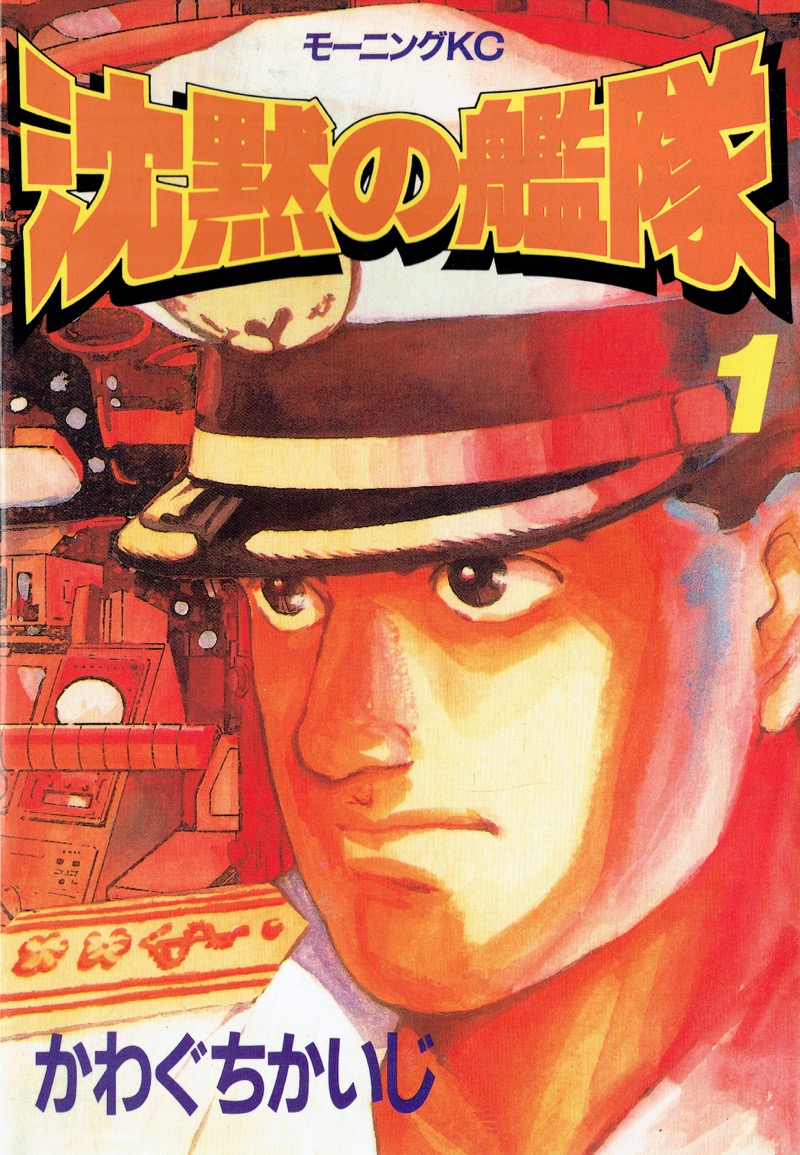
By Kaiji Kawaguchi | かわぐちかいじ
Kodansha | 講談社
32 volumes, complete
What is “war”? What is “nuclear”?
-- Posing questions through depictions of the side causing war
"Among the many war manga communicating the horrors and misery of war, this earnestly poses the questions of what is “war” and “nuclear” by dynamically depicting the side responsible. Through depiction of extreme conditions, readers are led to confront the issues. This innovative work harnesses the power of manga to generate discussion and represents the transformation of manga from entertainment to art. We seldom have a chance to think seriously about war. I hope you take the opportunity to read it and deepen your understanding."(Youhei Sadoshima)
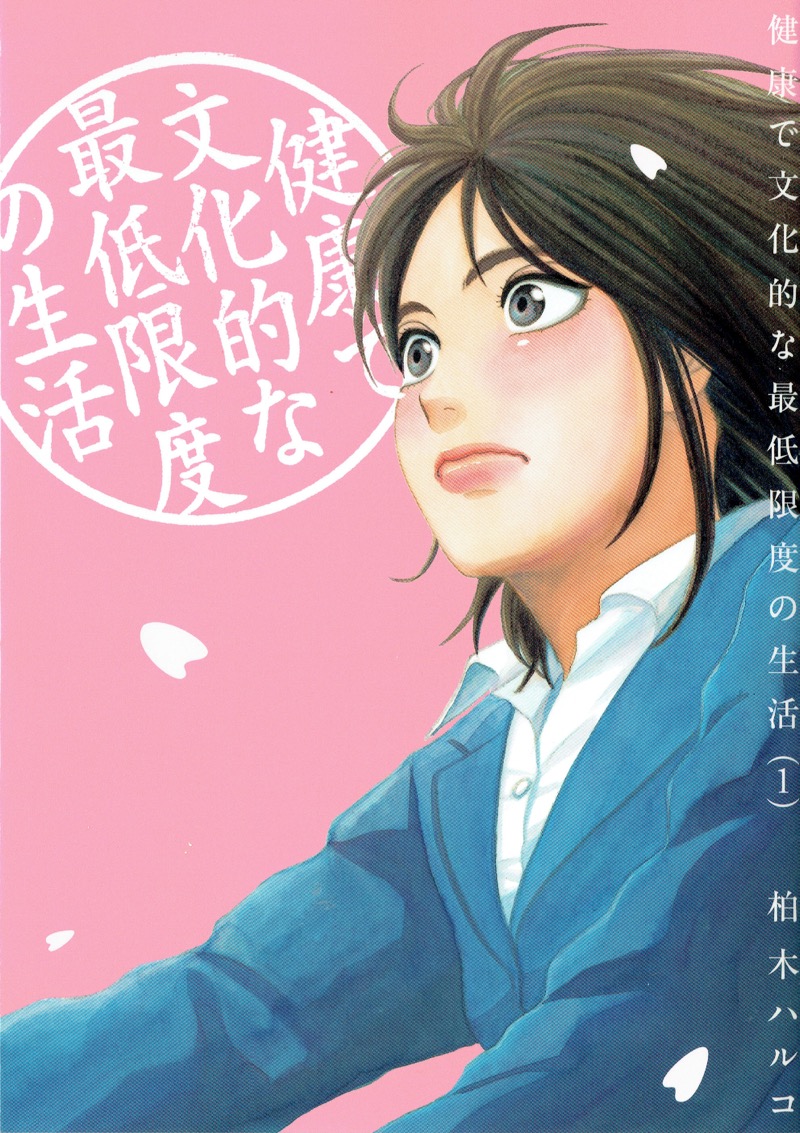
By Haruko Kashiwagi | 柏木ハルコ
Shogakukan | 小学館
6 volumes, ongoing
Approximately 2,190,000 people. Is welfare really something only for others?
-- Struggles of a new case worker caught between his feelings of sympathy and the system
"The word "welfare" has stated to appear more often in the news. It is a system whereby the government provides minimum living expenses to people who cannot work due to sudden unemployment, illness, or divorce. The underlying philosophy is found in Article 25 of the Constitution of Japan--"All people shall have the right to maintain the minimum standards of wholesome and cultured living"--which we learn about in social studies class at school. However, it sounds like something that has nothing to do with us, and what it really means is unclear. This is an ambitious manga that uses the words of Article 25 for its title as it deals with the difficult theme of welfare. The story follows a slightly helpless new public worker assigned to the public assistance division at a ward office and his struggles at welfare sites: suicide due to unemployment and poverty; a life of debt due to bankruptcy; and a single mother who divorced due to domestic violence and who also cares for her parents. The main character confronts individual circumstances and life while experiencing surprise, confusion, empathy, a sense of duty, and the frustration of sympathizing while following the system. Today, approximately 2,190,000 people receive welfare in Japan. Your family could face such problems as unemployment, illness or divorce at any time. Welfare is definitely not something most people think about. It is an important but hard-to-touch issue. This work addresses the topic using interesting, easy-to-understand expressions, making it fun to read instead of being cut and dried, such as you might encounter in school or in the news. This is a new form of manga that lets you explore such social issues as welfare and poverty, and learn about the work of case workers and public employees."(Katsuhiro Motoyama)
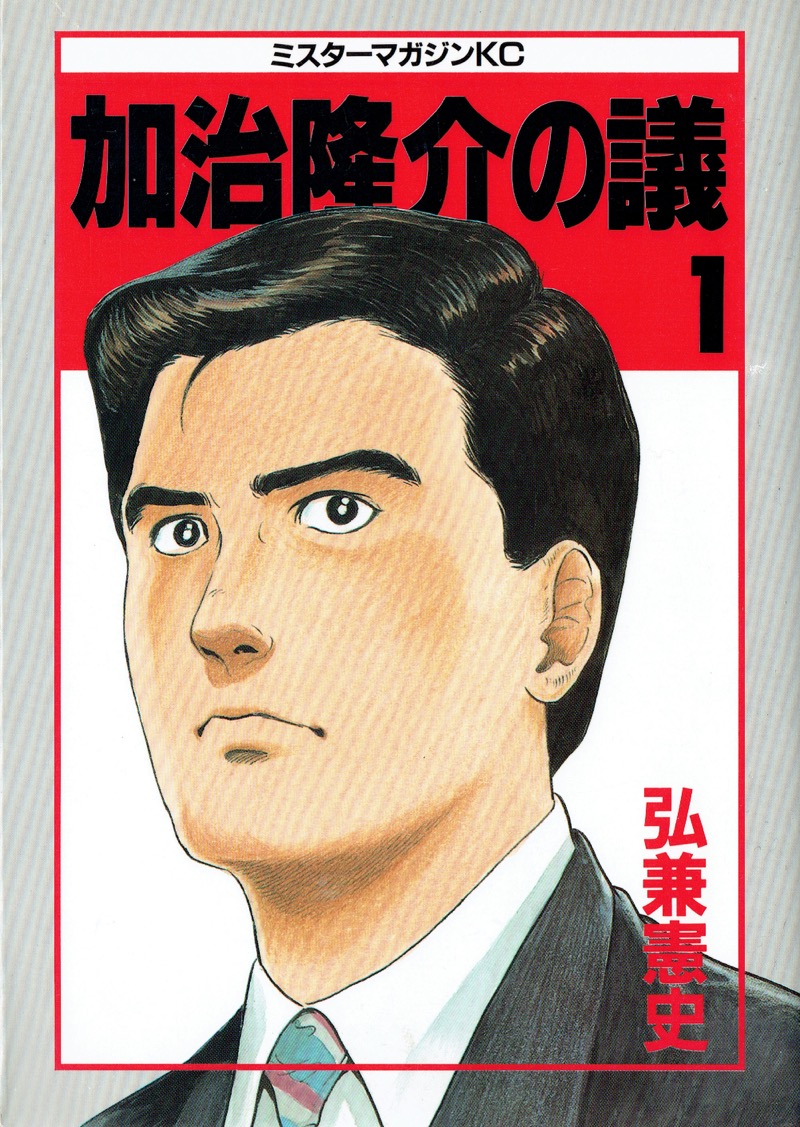
By Hirokane Kenshi | 弘兼憲史
Kodansha | 講談社
20 volumes, complete
For those who avoid politics because of the dirty image
-- Happiness of human beings is the ultimate goal. What kind of leadership does today’s Japan need?
"The main character hated politicians, yet he is thrust into politics after the sudden accidental deaths of his father—a powerful politician--and older brother, who was his father’s heir apparent. The work realistically portrays the main character’s transformation from a trading house employee to a lawmaker, then to head of a new party, and ultimately to prime minister. It is a perfect way to learn about the world of politics, including elections and party politics as well as diplomacy, the United Nations, and security issues. The main character is also a hero, overcoming a number of difficulties and sticking to his beliefs. It includes some overwhelming scenes; for example, the character talking about his future dreams with a young Cambodian boy soldier in charge of watching him while confined by a Cambodian militia group modeled after the Pol Pot faction; and his death-defying escape from confinement. There is a line from the will of the main character's father: “The ultimate goal of politicians is the happiness of human beings. ... Human happiness on a global scale--beyond the individual person, your own voting district and Japan--is indeed is the biggest proposition that we politicians must address." A politician who lives his beliefs; this work makes you hope that such a leader will appear in Japan as well. I hope those who think that politics is dirty or has nothing to do with them pick up and read this manga."(Katsuhiro Motoyama)
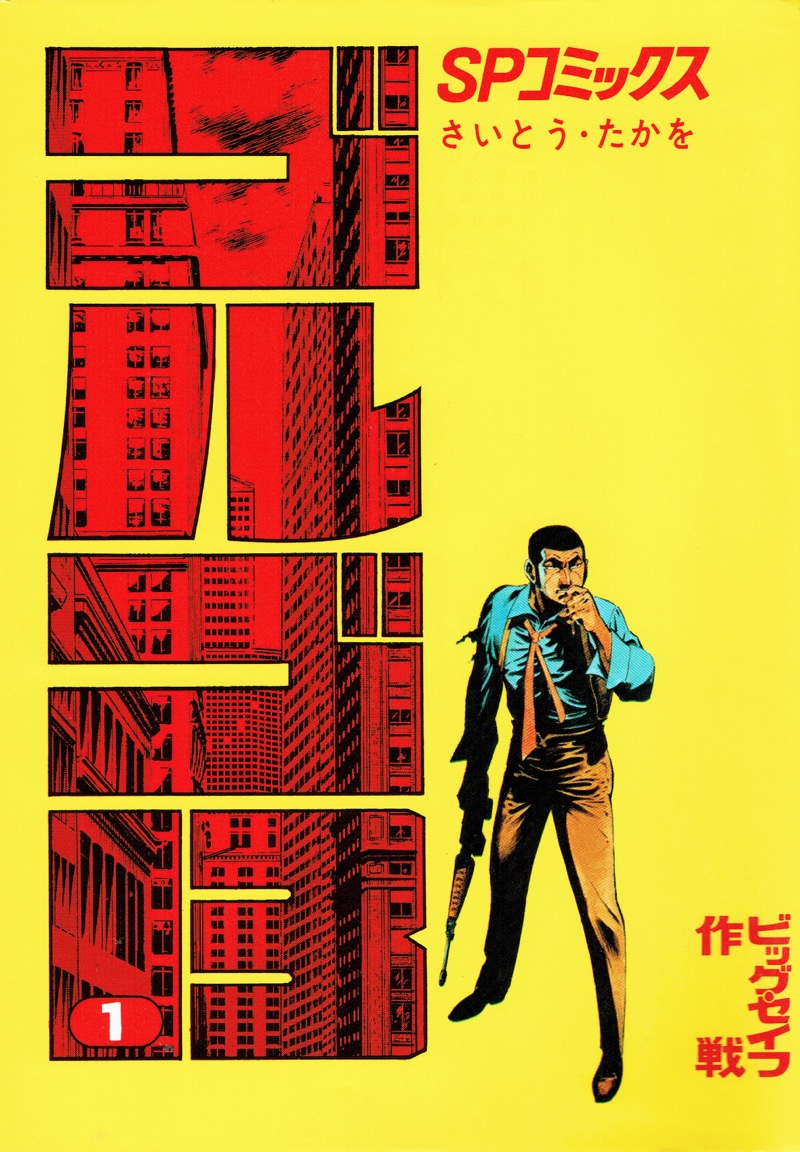
By Takao Saito | さいとう・たかを
LEED Publishing Co., Ltd.
187 volumes, ongoing
As real as reality
-- Learn what is happening in the world beyond the headlines, and expand your perspective
"Many professionals, including businesspeople and politicians, say that they have learned from Golgo 13 about professionalism, international affairs, and the balance of power between major nations and disputed countries. Even when incidents are not real, the abstract god’s-eye view of the global situation looks very real, to the degree you mistake it for reality. This is a valuable manga with which you can study current affairs, as it is serialized in magazines. The book version can also be used as a history textbook to learn what is happening in the world beyond the headlines. This is a representative manga of Japan and worth reading when wanting to gain new perspectives and grow intellectually, or as fiction featuring fantasy characters and other non-fiction elements."(Takeshi Kikuchi)
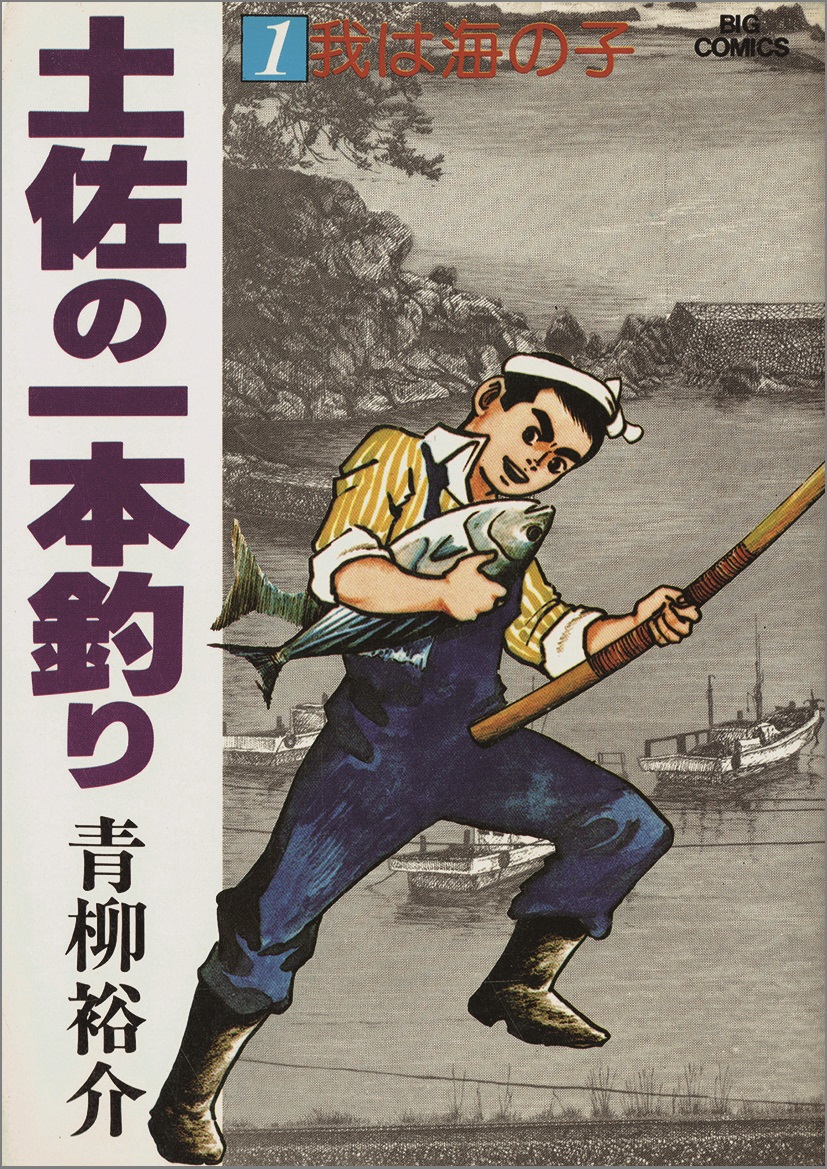
By Yusuke Aoyagi | 青柳裕介
Shogakukan | 小学館
25 volumes, complete
Caught between “what he should be” and “what he wants to be”
-- The record of a man who grows through skipjack fishing and human relationships
"There is a great gap between “what a man should be” and “what he wants to be.” “Should be” suggests the resolution of not allowing yourself to be swept off course. “Want to be” implies the sincere mindset of a man who strives for personal development with all his heart while being aware of his delicate and weak nature. Through work on a skipjack boat and relationships with women and the people around him, Junpei, the main character, faces a struggle: “I want to be such and such” while self-imposing the condition of “I should be such and such.” This is a brilliant record of a man’s growth, and also provides the enjoyment of finding out about skipjack fishing."(Machiko Satonaka)
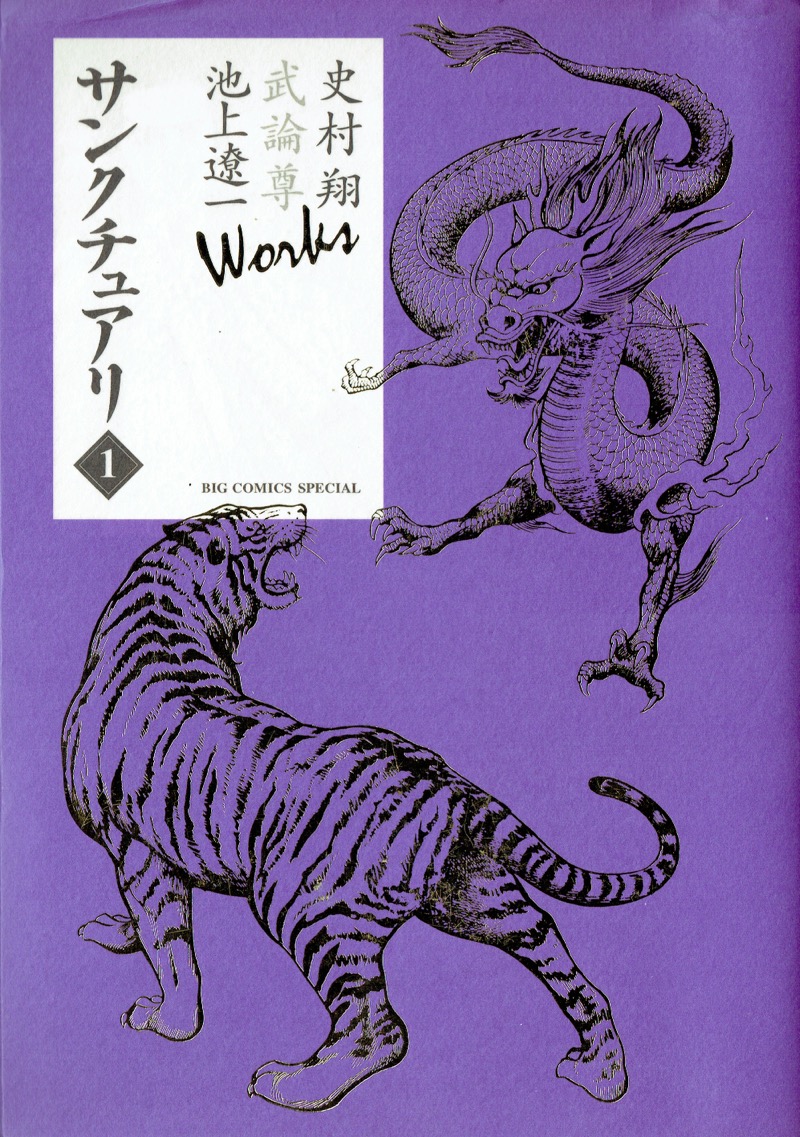
By Syo Fumimura, Ryoichi Ikegami | 史村翔、池上遼一
Shogakukan | 小学館
12 volumes, complete
In search of sanctuary
-- One is a politician, the other is yakuza. They each fight in their own worlds, with an ambition
"Akira Hojo and Chiaki Asami, two Japanese boys who lived in a slum in war-torn Cambodia, go back to Japan and fight in their own worlds, one in politics and the other as a gangster, to achieve a common goal that would change Japan to provide their dream sanctuary. The light and dark sides of Japan, including corrupt political circles and the realm of violence and drugs, stand above them. Sometimes pretending to be enemies and sometimes cooperating, Akira and Chiaki strive to rise to the top of their worlds. Step by step, their sanctuary becomes closer to their ideal. "(Takeshi Kikuchi)
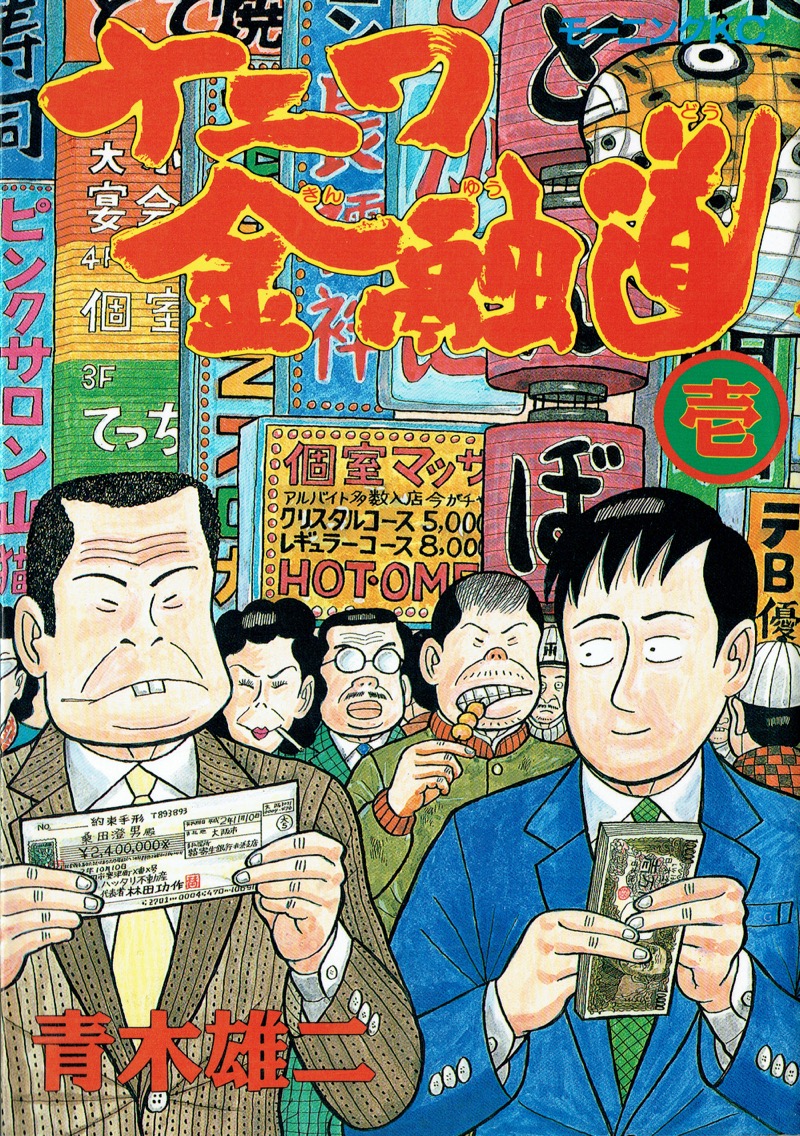
By Yuji Aoki | 青木雄二
Kodansha | 講談社
19 volumes, complete
A negative world where right actions alone settle nothing
-- You should know about a demon called money in the world in order to avoid being trapped
"In all honesty, this manga is rather crude. It attracts such comments as “unsuitable for education” with its content full of the odiousness of the adult world. However, it is rare to find manga that relentlessly and interestingly depict a negative world where nothing can be settled by right actions alone. If you have an ingrained sense that there is a demon called money in this world, at very least you will gain an objective view of the influence of money. It teaches us the need for the animal-like toughness of “it’s only over for people when they give up.”"(Machiko Satonaka)
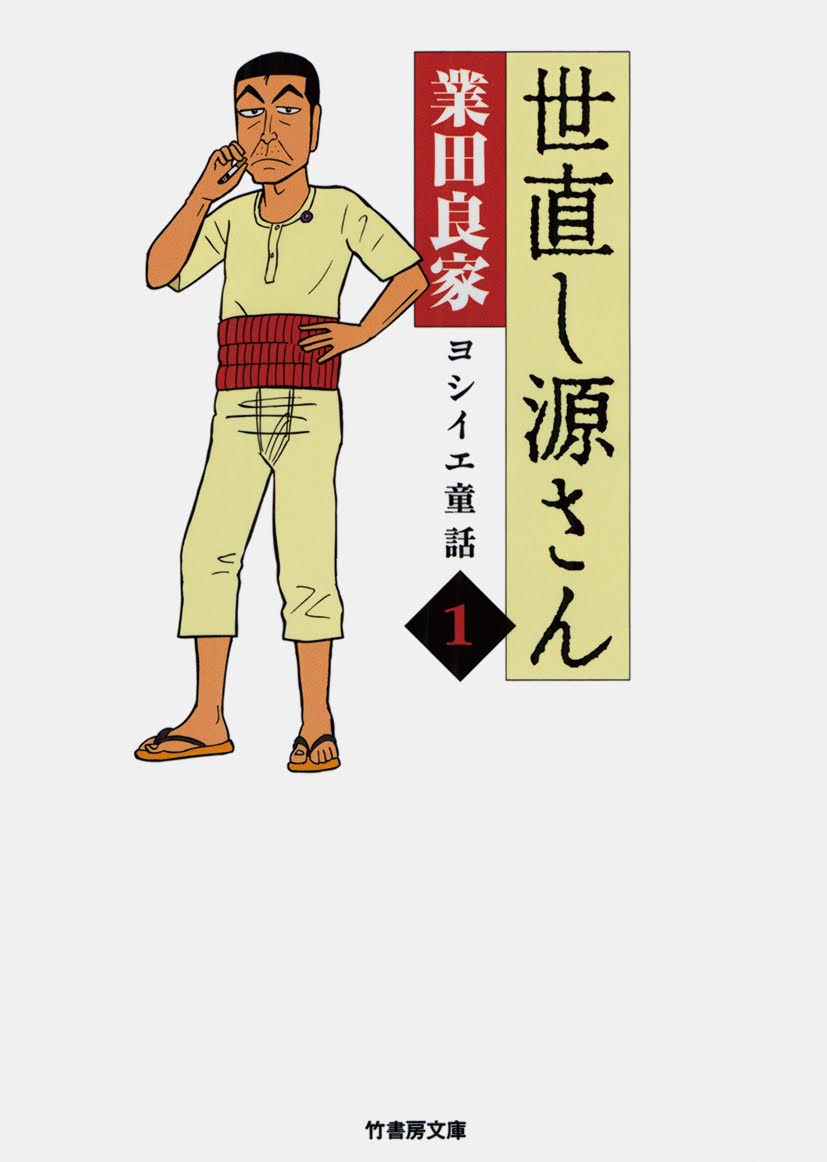
By Yoshiie Goda | 業田良家
Takeshobo Bunko | 竹書房文庫
3 volumes, complete
Learn from Gen, an outrageous prime minister
-- Are Gen's methods strange or spot on? Thinking about politics ...
"Once you start reading, you will probably think, "This guy is outrageous!" He is a prime minister yet dresses in long underpants and lives with multiple wives (!) in an old apartment. Occasionally he works at a road construction site. He even submits "a bill on improving Diet members' attitudes," and declares a dictatorial government for the next several years. Everything he does is totally mad. However, it somehow seems right. Even when you think it's strange, instead of quitting in the middle, try to identify what about Gen is peculiar and what you can sympathize with. When you figure it out, you will gradually start to find the manga interesting. This is what it means to think about politics. It would also be interesting to think about what has changed and what has not when comparing Gen's time and today."(Yukari Fujimoto)
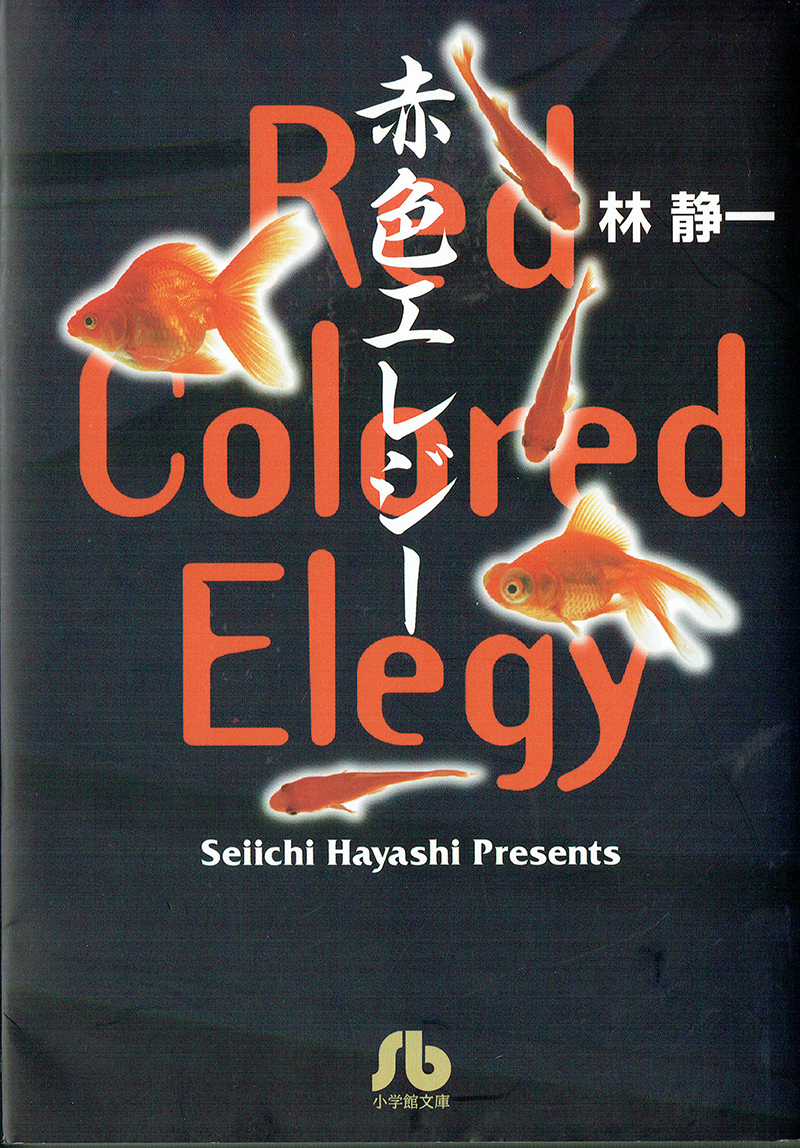
By Seiichi Hayashi | 林 静一
Shogakukan | 小学館
1 volume, complete
Showa aesthetics relevant for today
-- Two people continue a life of heartache, with no way out in sight
"The first part of the title reads as Sekishoku. This is a love story published in the magazine Garo in 1970. The main characters are Sachiko and Ichiro. The two work at the bottom of the anime industry. They live together in a small apartment but have no money or future prospects. Ichiro wants to become a manga artist, but doors do not open for him. Sachiko is pressed by her parents to get married like everyone else. Nothing special happens, they hurt each other and make up, again ... their life of heartache continues, with no way out in sight. Morio Agata fell in love with this manga and wrote a song with the same title, which became a great hit. Some college student couples aspired to be like Sachiko and Ichiro, and started to live together. It is said that among all animals, only human beings need to study how to court. That may be the reason this theme is very common in literature, music, theater, movies, dramas, and manga. Love stories of the Showa Period do have relevance for today."(Koichi Yuri)
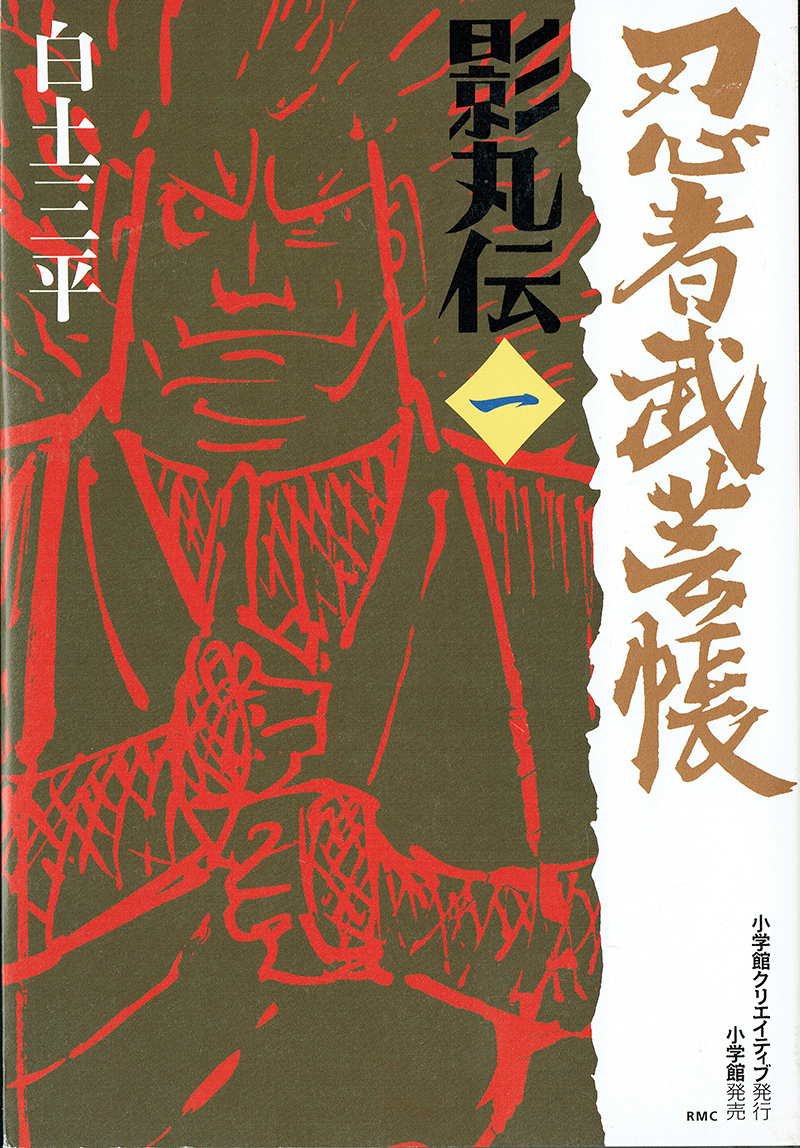
By Sampei Shirato | 白土三平
Shogakukan | 小学館
17 volumes, complete
A major milestone of modern manga
-- Story of the constant fighting of Kagemaru and the Kage family in the age of provincial wars
"This work, published around 1960, set the gold standard for manga. It is quite long—almost 3,000 pages—and the diversity of its characters and richness of the story are especially noteworthy as the manga equivalent of a long-running historical TV drama series. The story takes place in the age of Sengoku provincial wars. Against the backdrop of war sowing chaos in society from high to low and an agrarian revolt, the constant fighting sweeps up people of various classes and circumstances, including feudal lords, master swordsmen, Buddhist monks, thieves, farmers and war orphans, as their ambitions, interests and intentions become entangled. The main characters are Kagemaru and the Kage family, both ninja who take the side of farmers instigating the uprising and use astute tactics to fight the rulers. Kagemaru is a mysterious monster who still laughs after being captured, torn limb from limb, and his head put on display. The ninja are involved in severe conflicts, and depictions are sometimes realistic and cruel. Yet the manga's strong dramatic development skillfully brings together those conflicts and such historical figures as Oda Nobunaga, Akechi Mitsuhide, and Rennyo. Readers at the time went crazy over it. This was indeed the manga that triggered mass media to carry on about how “college students are reading manga.” Binge read this major milestone of modern manga. It is so interesting that you cannot stop in the middle even 50 years later."(Koichi Yuri)
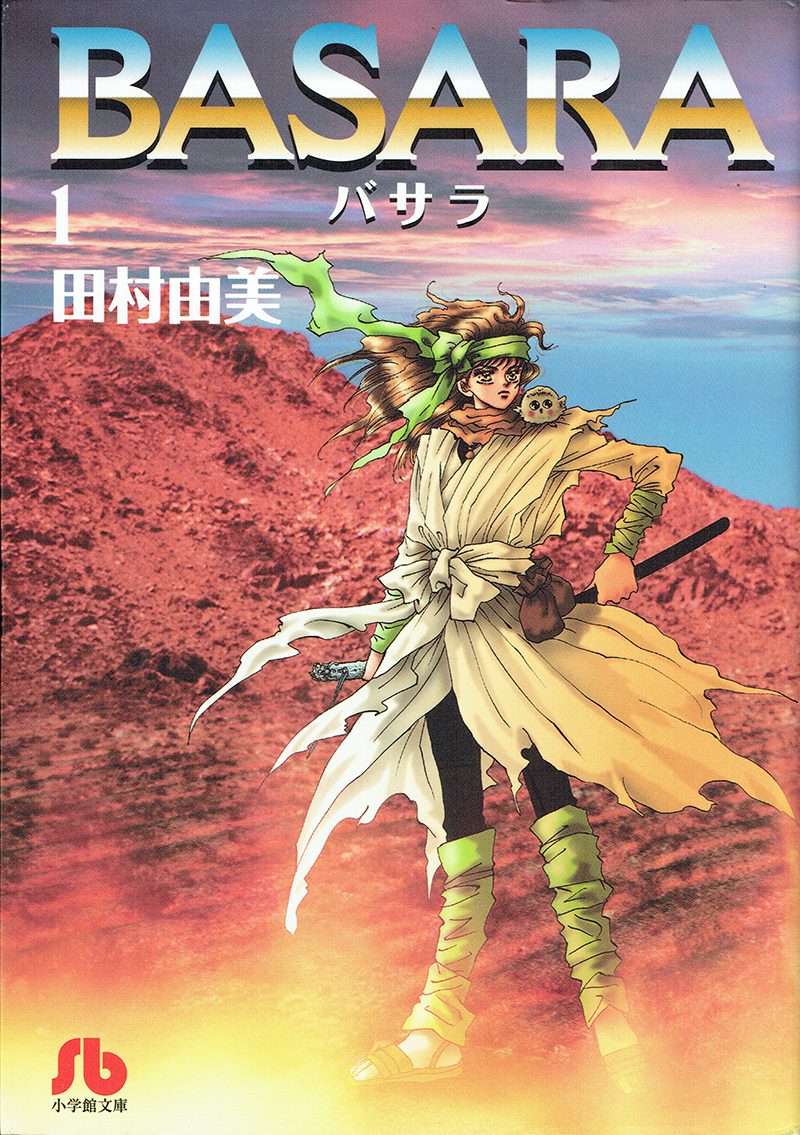
By Yumi Tamura | 田村由美
Shogakukan | 小学館
27 volumes, complete
What it means to do your best
-- What is the destiny of a girl who becomes the "child of fate" in Japan, where civilization has been destroyed?
"Is there a “right” or just war? Freeing people suffering under a tyrannical king from oppressive rule—this is indeed “right.” However, the opposing soldiers also have family, and there will be casualties. The story is set in Japan several hundred years from now, when civilization has been destroyed. The girl Sarasa takes over her twin brother’s role as the foretold "child of fate" and leads the people in Tatara’s place, putting herself under great strain. What did her deceased mother's apparition tell her? What was the secret pact behind the Battle of Okinawa? The manga offers a full array of words of wisdom, including: “The important thing is not to wonder whether or not you can do it, but to think how to accomplish what you have decided to do. By doing so, the number of casualties declines. Constantly ask yourself if there is any ambivalence, and if you have done your best." This is a work to keep nearby. It makes us think about true political decision-making and living your life by doing your best."(Yukari Fujimoto)
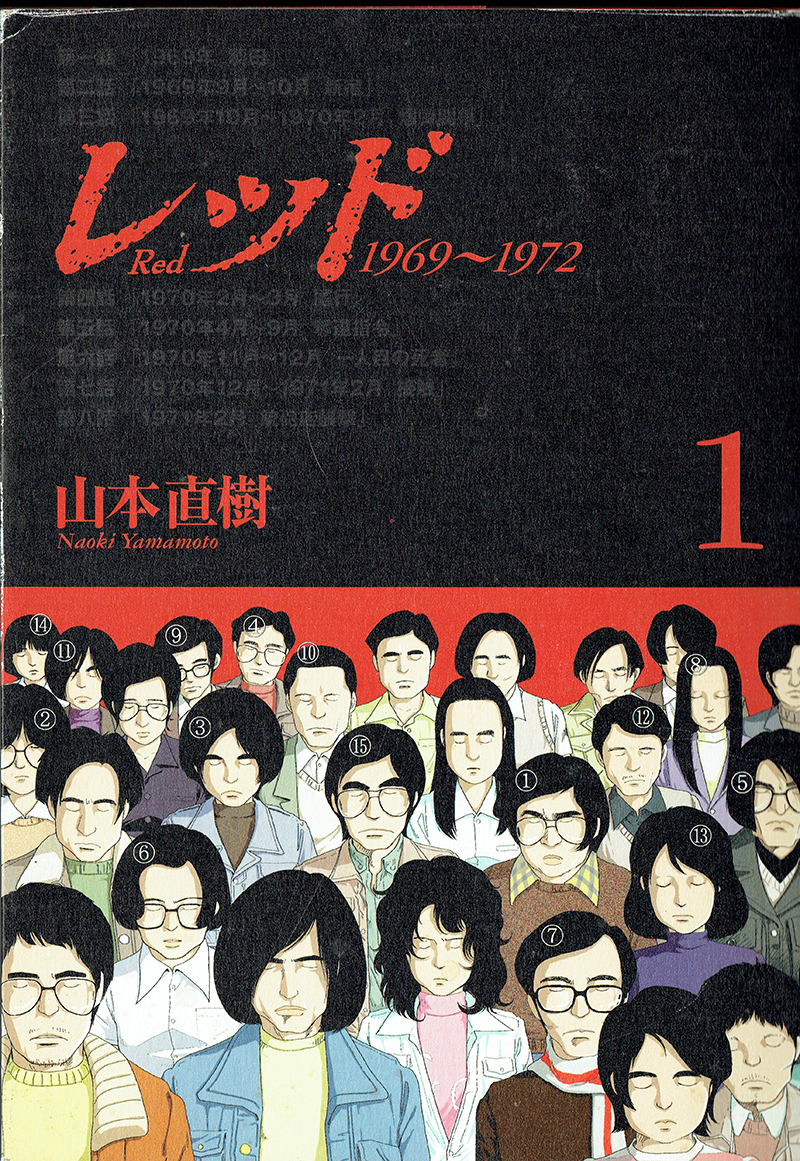
By Naoki Yamamoto | 山本直樹
Kodansha | 講談社
8 volumes, complete
Consequences of revolution without heroes
-- Do you know about the Coalition Red Army and Asama-Sanso incident?
"A manga based on the Coalition Red Army and Asama-Sanso incident from around 1970. Individual events are very carefully incorporated. Despite the incident happening not so long ago in Japan, because of being extremely distant from current realities, quite a few people probably have difficulty understanding it when simply looking at a chronological table in a textbook. I hope such people pick up this manga and sense the mood of young people looking for revolution. No cool or special hero appears in this work. All characters seem to lack self-confidence, and are like someone you might see around. They all wear similar glasses and hairstyles, and have lifeless facial expressions, so they are hard to tell apart. The minds of human beings are so easily swayed by their environment. And you are not the exception."(Youhei Sadoshima)

By Kazuichi Hanawa | 花輪和一
Seirinkougeisha | 青林工藝舎
1 volume, Complete
Still hungry, no matter what happens
Real life behind bars, presented by a manga artist who served time in prison
"In 1994, manga artist Kazuichi Hanawa was arrested and put on trial for violation of the Swords and Firearms Control Law, among others; he was sentenced to three years in prison. It was a case of illegal possession that sprang from his personal interest in replica guns. Hanawa served his sentence without appeal and was released on parole in 1997. This manga is based on experiences during his time in the penitentiary: room plans of isolation cells; solitary confinement and community cells; meal menus and manners; how to use the toilet; bathing (once every two days, 15 minutes); how to fold bedding and clothes; the architecture of workshops and exercise yards; conversations with staff and cellmates; special food for the New Year's holiday; and so on. Hanawa's depictions are compelling. By capitalizing on the strength of manga expression with both illustration and text, he creates a first-class record of personal experiences at a facility you would never know unless you enter. In particular, there are many depictions of food. For example: "Today is the 16th, and the bread meal with margarine that came on this day is indeed the best I have been longing for." On the last page, the author compared life in prison to life in a hog pen, as it "has nothing to do with sunshine, blue sky, land, wind and mud bathing an entire lifetime." For Hanawa, whose expertise lies with the fanaticism manga of the medieval era, incarceration may have elements in common with "way of the unforgivables" in his mind."(Koichi Yuri)
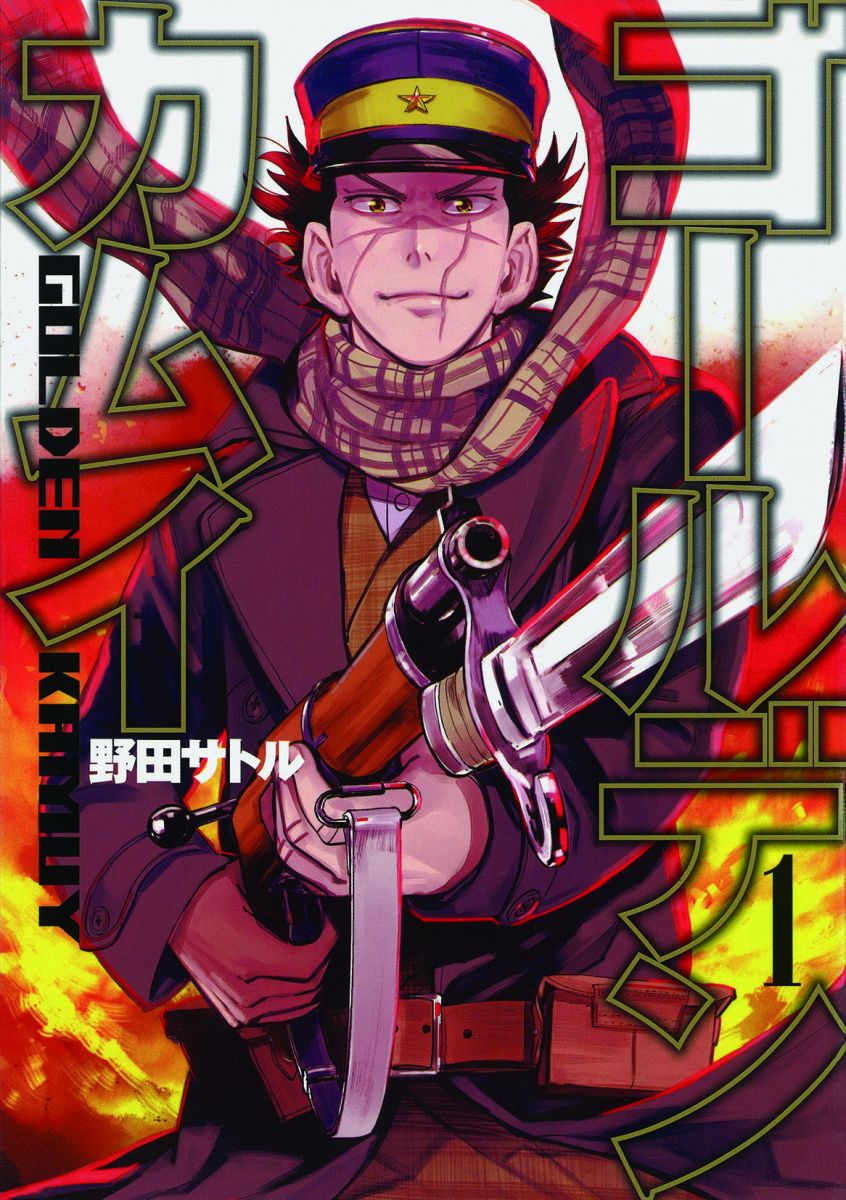
By Satoru Noda | 野田 サトル
Shueisha | 集英社
15 volumes, Ongoing
Historical action x folklore x gourmet
Journeys involving wild game and adventures of an ex-soldier and Ainu girl in the late Meiji Period
"An action drama set in Hokkaido immediately after the Russo-Japanese War in the late Meiji Period [early 20th century]. It is also a survival manga—readers can learn how to survive in the wilderness—as well as a folklore gourmet manga that teaches the food and wisdom of the Ainu people. Sugimoto, the main character who has gone to Hokkaido to get rich quick after demobilization, becomes entangled in a confrontation over the buried treasure of the Ainu, and starts to collect prisoners' tattoos, which are supposed to indicate the treasure’s location. Readers are challenged to think about the source of life and how to live by scenes of the Ainu girl Asiripa turning the day’s bag of wild game into various Ainu dishes, which Sugimoto and the others wolf down, as well as by powerful depictions of survival, where death is always just a heartbeat away."(Naoko Hosoda)
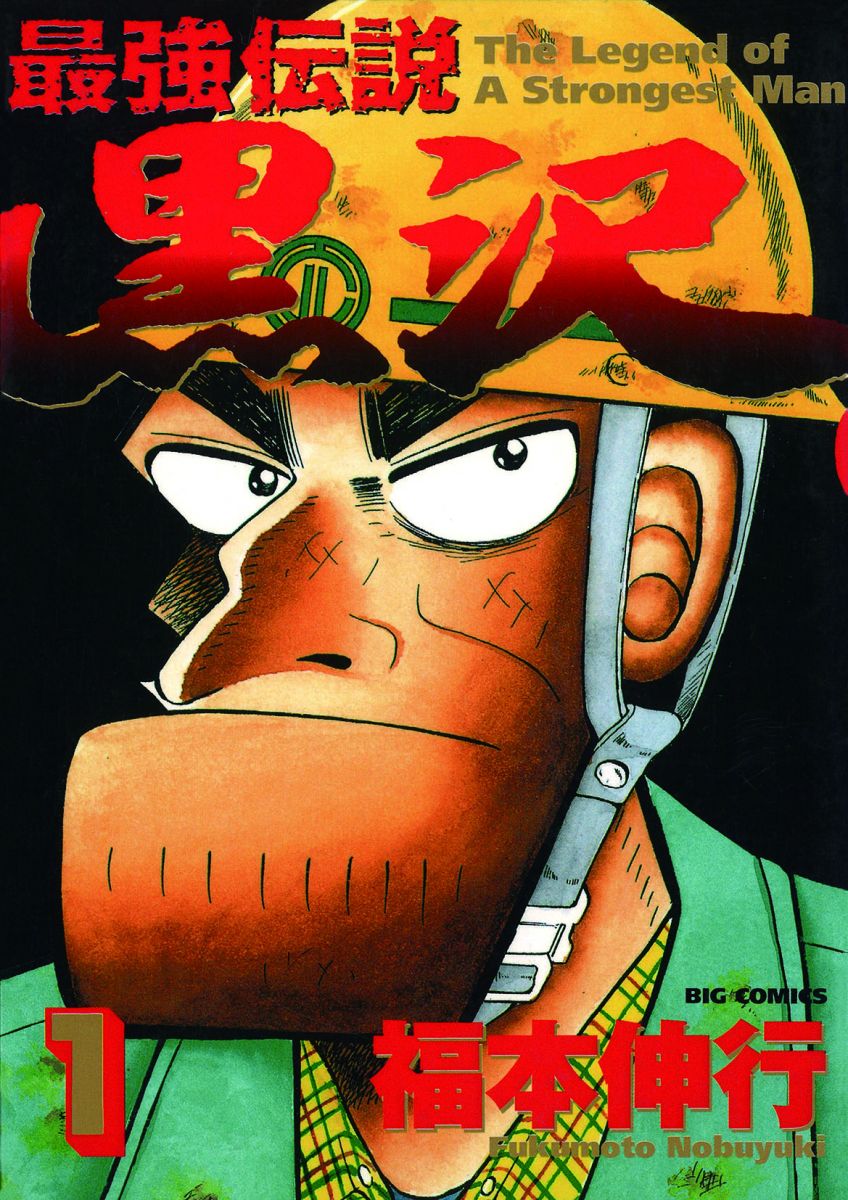
By Nobuyuki Fukumoto | 福本伸行
Shogakukan | 小学館
11 volumes, Complete
I want others to accept me ...
The sad, funny and creepy inner torment of a middle-aged man
"What is absolutely essential for people to live among others and lead a social life? This work supplies one answer to the question. Kurosawa, the main character, has been working hard at construction sites for 26 years after graduating from high school. His problem is that he "lacks personal magnetism." Kurosawa makes pathetic efforts to be popular with young people at worksites. However, they never pay the slightest attention. Even worse, Kurosawa's efforts often backfire. Every time he sees colleagues behaving naturally and gaining everyone’s affection as if that is the way it should be, Kurosawa suffers from tremendous envy and sinks deeper into loneliness. Who could say whether you or I would never become like him? "I want others to accept me," "don't want to be disliked," or "wanting to be liked by everyone" ... this work will provide an opportunity to search for ways to face such concerns."(Takafumi Horie)
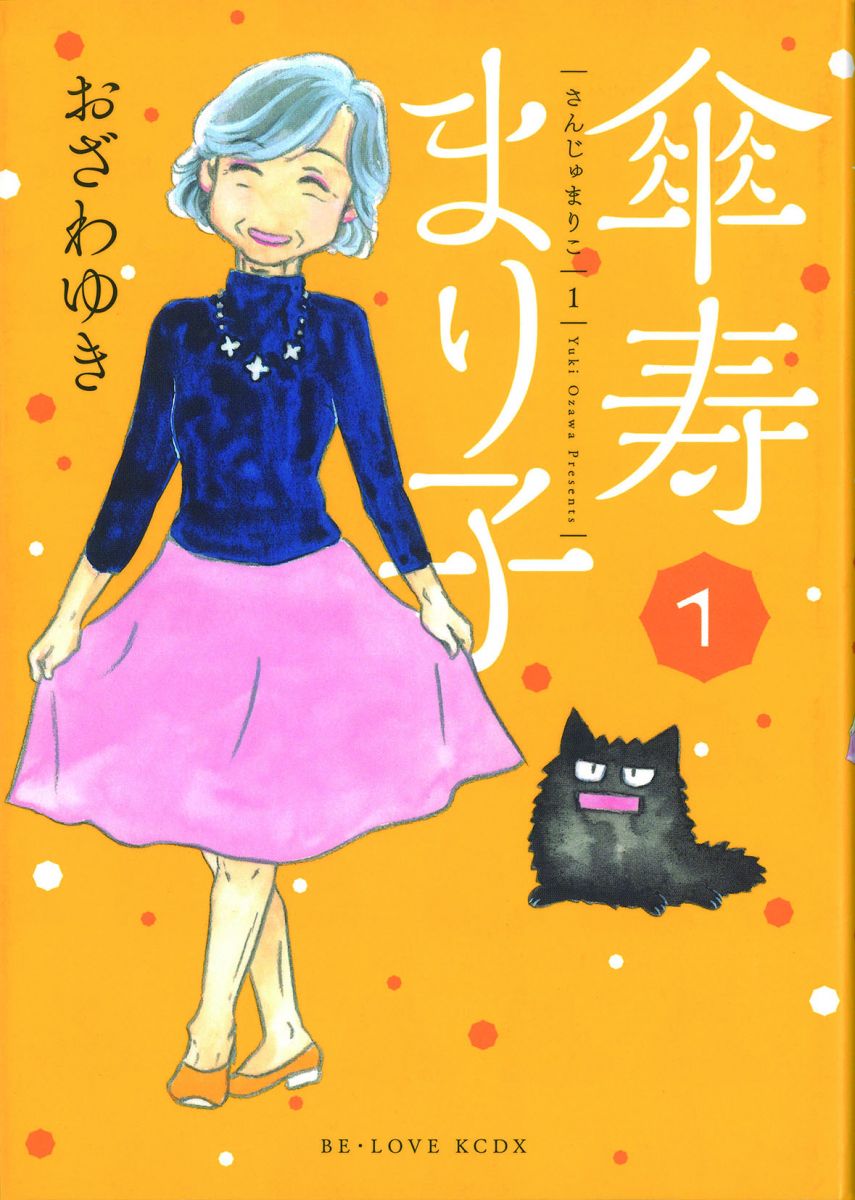
By Yuki Ozawa | おざわ ゆき
Kodansha | 講談社
8 volumes, Ongoing
Even grandma can take up challenges
The days of adventure of Mariko, a writer who ran away from home at the age of 80
"The tale of a quest that starts as Mariko, the main character and a seasoned writer, leaves home on her 80th birthday for some reason, and tries to start a life on her own. Mariko faces such issues as discrimination when applying for housing, but does not let it rattle her. With inherent curiosity and vitality unique to her occupation as a writer, Mariko tries hard to overcome the challenges ahead. Her dynamic manner of leading life is charming, and has readers rooting for her. Getting older happens to everyone. For that reason, it is meaningful this manga is appearing now, as it holds the promise of exciting developments readers can enjoy with Mariko while thinking about the issues of the day. In addition, the artless charm of Mariko's attitude and fashion stands out. This work presents the image of a modern-day grandma whom you can aspire to be like."(Tomoko Yamada)

By Tsunami Umino | 海野 つなみ
Kodansha | 講談社
9 volumes, Complete
Another look at the meaning of marriage
Diverse views of love and marriage, as reconsidered with a couple in a contract marriage
"This manga revolves around a contract marriage between the “employer”—a shy science-oriented man in his 30s—and his “employee,” an ordinary woman in her 20s. While they do steadily develop affection for each other, it is unique in that their relationship has no ambiguity where they keep up pretenses by using an intangible like affection as collateral to get what they want. Aside from main characters, the work features individuals as diverse as a capable single businesswoman in her 50s, a gay man, and a handsome bachelor who attracts lots of women but has no desire to marry. The author's views toward these characters are extremely neutral, quiet and objective; she does not coldly push them away nor does she commit to someone's position. In this world, everyone respects each other, fully communicates, and goes about their life. An attitude of accepting all sorts of social states may be one ideal for modern society. Everyone who reads this manga will gain insights on love and marriage. "(Tomoko Yamada)
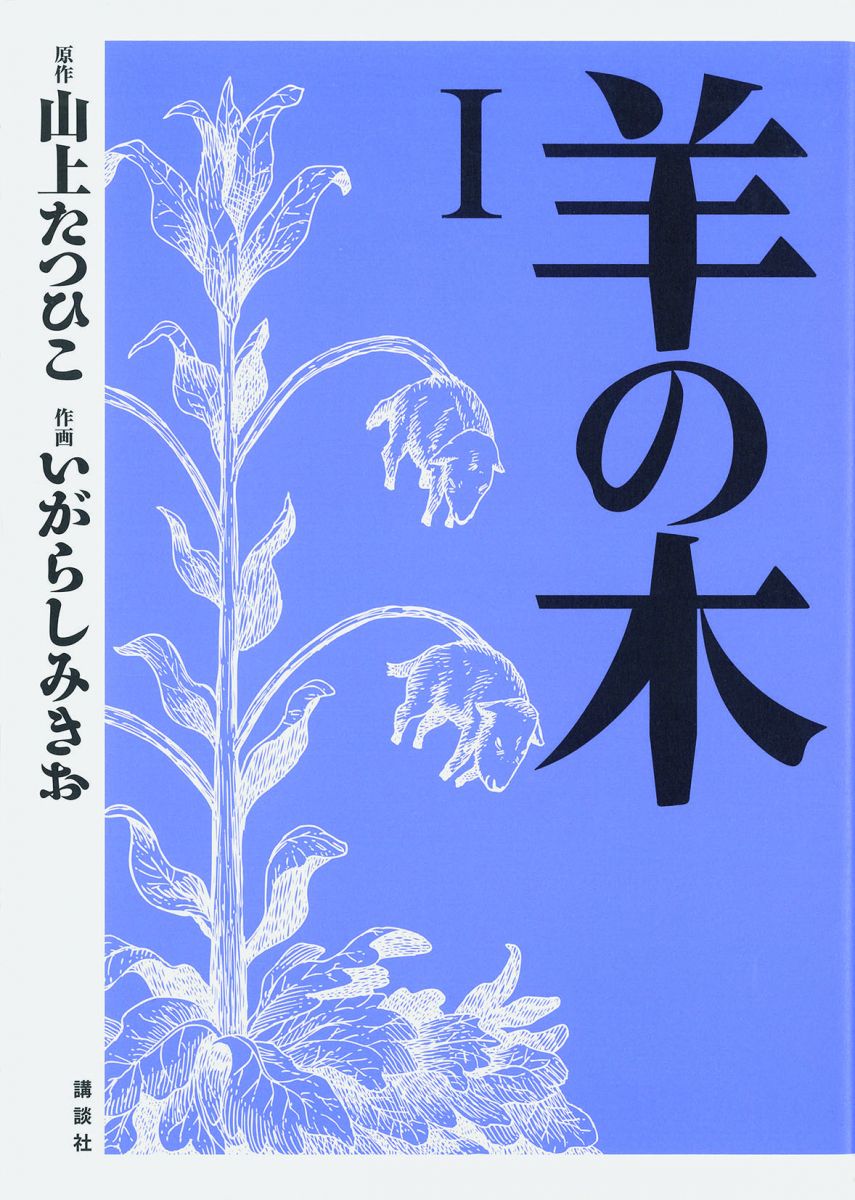
By Tatsuhiko Yamigami (script), Mikio Igarashi (art) | 山上たつひこ(原作) ,いがらしみきお(作画)
Kodansha | 講談社
5 volumes, Complete
The former heinous criminals next door
What if people with robbery or murder in their past moved into your neighborhood?
"Ex-convicts who have served their sentences come to a peaceful port town. It is a top-secret pilot project devised by the government to promote rehabilitation of these former prisoners. They live in the town while hiding their past as heinous criminals, and residents are not informed. The mayor, two of his friends and us, the readers, are the only people who know their past. In these circumstances, why does everything the ex-convicts say and do seem so disturbing and ominous? That is because we subconsciously regard them as people to fear and requiring caution, and seek to remove them from our world. The manga really shows how we naturally generate "bias" within ourselves. Readers should approach this work while reflecting on such questions as what the correct attitude toward a former criminal is and what our mindset should be."(Takafumi Horie)
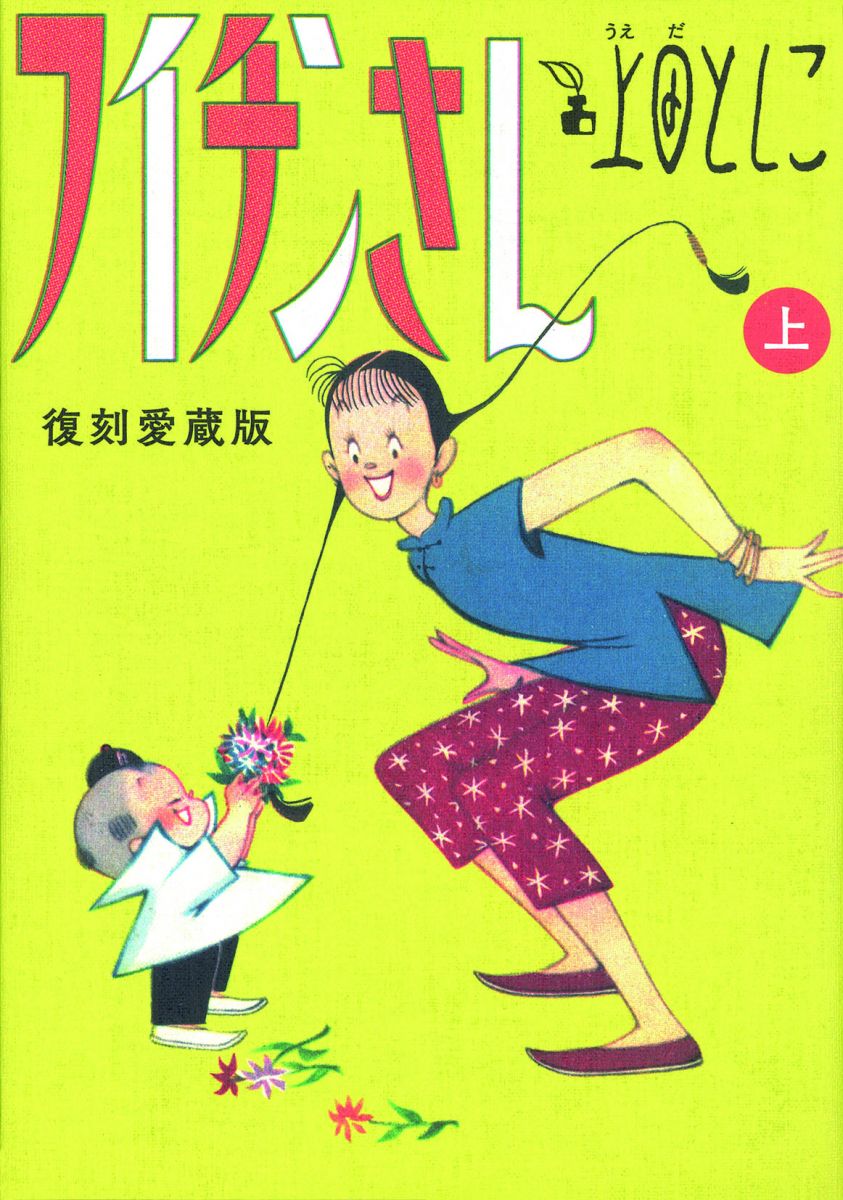
By Toshiko Ueda | 上田としこ
Shogakukan | 小学館
2 volumes, Complete
When China was an unfamiliar foreign country ...
Loved by everyone! The fun daily life of Fuichin, a girl in Harbin
"I read Fuichin-san, a series published in Shojo Club from January 1957 through March 1962, in real time. For a Japanese girl at that time, the Japanese Army, the war and Japan-China relations (before restoration of diplomatic ties) were simply unfathomable and nothing clicked. Yet regardless of our history or international affairs, Fuichin was living well in Harbin. This reader girl was fascinated by depictions of culture and life in a foreign country, became familiar with how a young worker like Fuichin and a younger boy from a wealthy family interacted, and eagerly awaited the Chinese expressions introduced every month. Looking back, it was a local production created by the author, who presumably had bitter experiences there as a Japanese. Nonetheless, there were no dark bits, not even a hint, and it was like a model that makes readers flip the pages because of the great qualities of characters. As an aside, I had the good fortune to talk with Toshiko Ueda countless number of times. She was very forthright and gracious, yet casual and thoughtful. She was cool, just like a stunningly attractive version of Fuichin playing a charismatic male role at Takarazuka Revue Company. "(Machiko Satonaka)
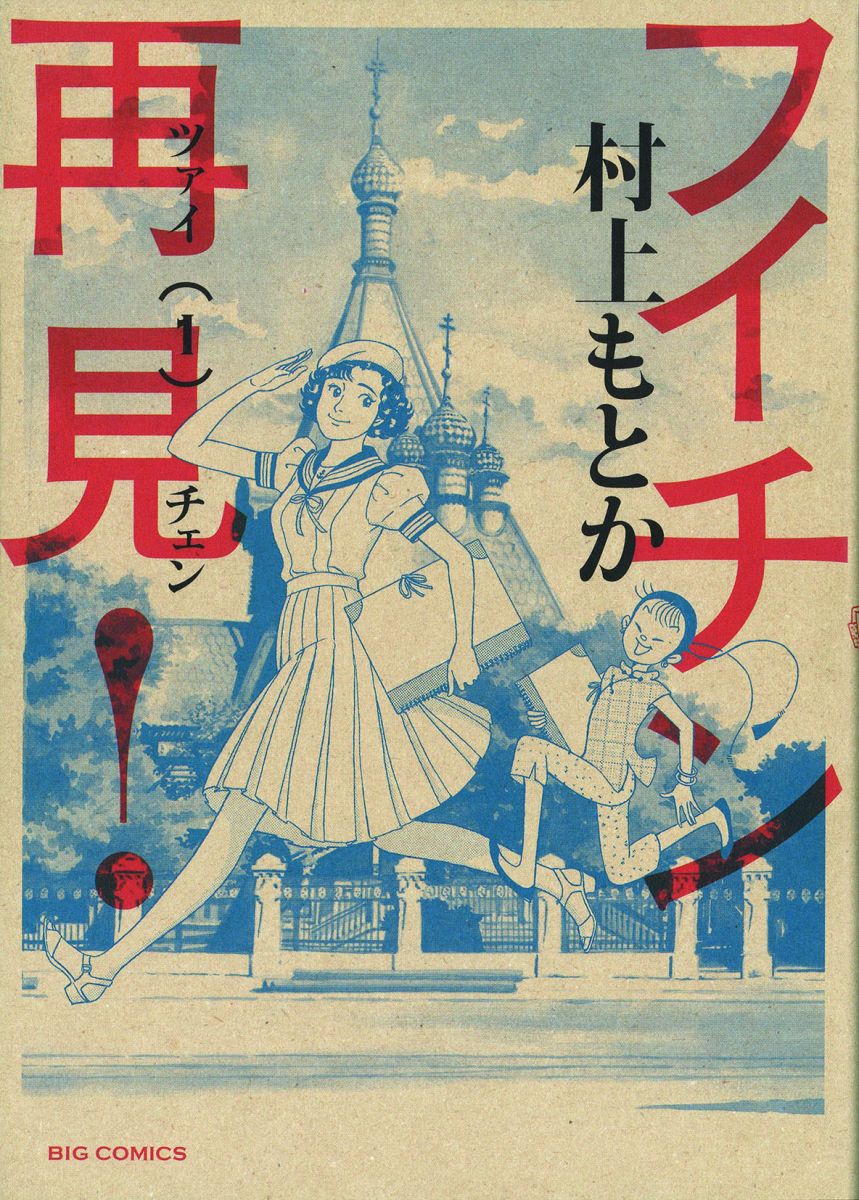
By Motoka Murakami | 村上もとか
Shogakukan | 小学館
7 volumes, Complete
Showa 30s (1955-1964). Manga, Japan and China.
Learn about society at the time from a biography of the author of Fuichin-san
"When it became known that Motoka Murakami was going to produce a biography of Fuichin-san creator Toshiko Ueda, baby-boomer female readers, including myself, were truly thrilled. Perhaps men will never understand the frenzy the news created among women. In the old days, quite a few girls read boys’ manga, but hardly any boys read manga for girls. Murakami, the author, was born in 1951. He was between 6 and 9 years old when the Fuichin-san series was published in Shojo Club. Murakami is indeed true to his reputation if he was attracted at such a young age to the universal mastery shown by Toshiko Ueda’s illustrations. Fuichin Tsaichen! is not simply a biography of Ueda, but is a work that gets to the heart of the social situation and women’s lives at that time. Ueda, a legend, became a heroine through this work. It is nice to see manga history being recorded in this way. It is also fun to imagine that this might be part of Murakami’s lifework of illustrating relationships between Japan and China through dramas, such as Ron. "(Machiko Satonaka)
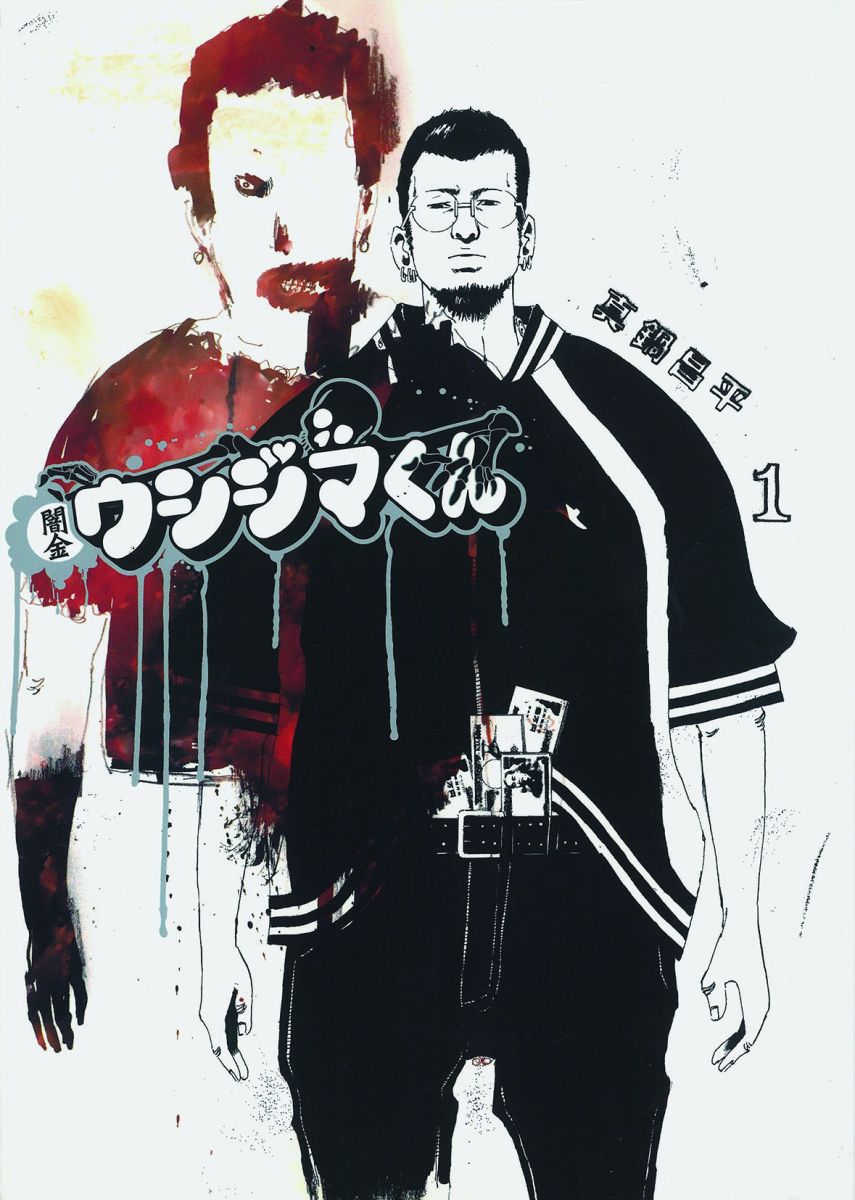
By Shohei Manabe | 真鍋昌平
Shogakukan | 小学館
44 volumes, Ongoing
When you realize, it’s already too late
People easily find themselves drowning in debt—an exhaustive depiction of the horror of money
""This world is about scrambling. ... Between robbing and being robbed, I would choose to rob!" This line is spoken by Ushijima, the main character and a loan shark. Customers who cannot get a loan from legitimate financial institutions and come to Ushijima are not residents of a far-away world. Rather, they are found everywhere around you—the housewife hooked on pachinko or the perennial temp worker. They are ordinary citizens who simply happen never to get the message or lack self-control. Using every possible ploy, Ushijima doggedly tracks them down to make them pay up. The torment of people who come to be "robbed,” illustrated here based on meticulous investigation, is chilling. It is a stark and cruel debt inferno that makes you want to look away. But it is indeed one of the realities of modern Japan. Ushijima takes a hard line in showing what it means to think about the balance between earning money and using it. "(Takafumi Horie)

By Osamu Tezuka | 手塚治虫
Shukan Bunshun | 週刊文春
5 volumes, complete
Nazis, Germans and Japanese
-- “Adolfs” enter the torrents of the times over Hitler’s confidential documents
"Main characters are two boys called Adolf who live in Kobe during World War II. They are German (Nazi at that time) and Jewish. They were best friends when young, stick to their own views during the war, become frustrated as they fall in love with the same woman, and are entangled in the chaos surrounding the mystery of confidential documents belonging to Hitler. The realities of Japan and Germany during the war were so severe as to be unimaginable today. Following Nazi Germany’s actions in the round and simple drawing style of Osamu Tezuka reveals another side of their dreadfulness. The long river connecting the three “Adolfs” (including Hitler himself) takes another twist after the war and reaches an end with Judaism vs. anti-Semitism—please pick this up and find out the ending for yourself."(Takeshi Kikuchi)
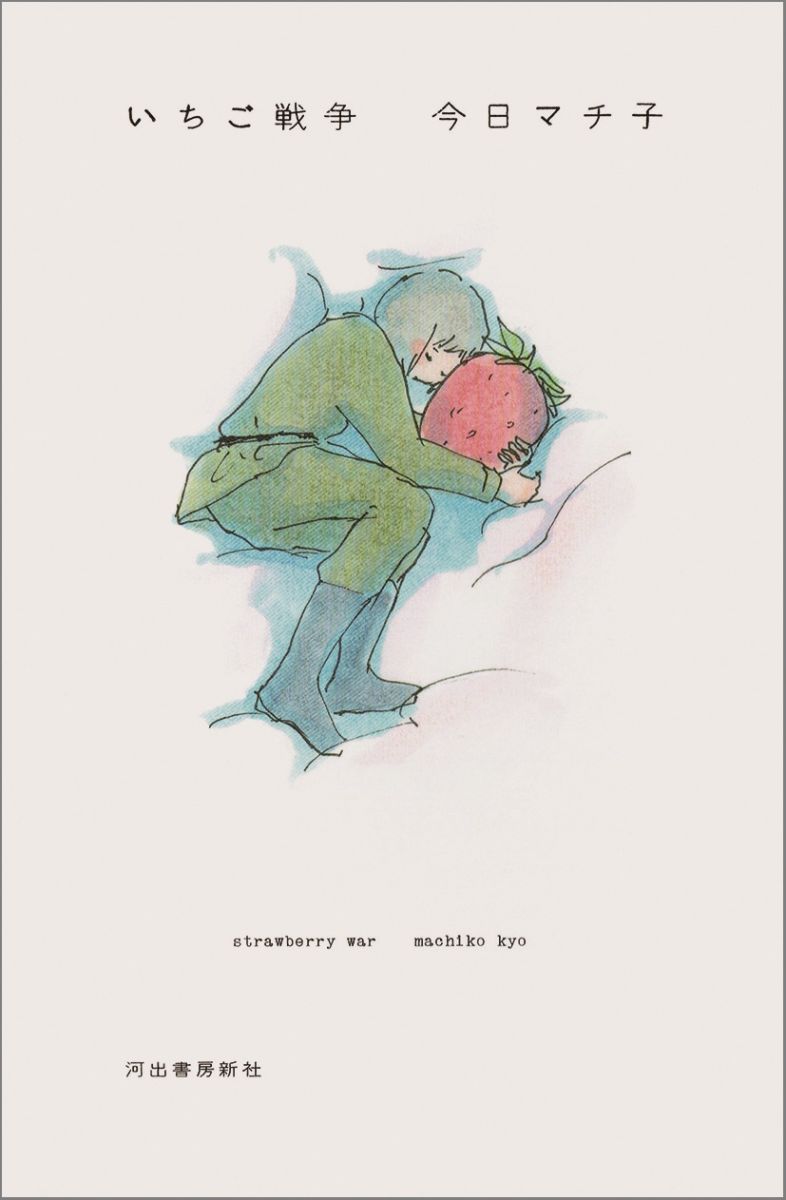
By Machiko Kyo | 今日マチ子
Kawade Shobou Shinsha | 河出書房新社
1 volume, complete
War is agony, and sweet
-- Our view of war, which we have never experienced
"The fighter planes and guns of boys may be something sweet for girls. Only highly imaginative illustrations are used to express a world where sweet things are cute and tasty, and weapons are functional and beautiful. Yet just as eating only sweets damages your health, war is what happens while you are occupied with the sweet dream of controlling the world with fighter planes and guns while blind to your surroundings. Humans become enthralled with such things. The moment we realize this, everyone will be appalled. Kyo’s world is broad and deep. Scary, cute, and sweet. Here is the one and only war manga that makes you wonder if the real fear of war may be rooted in this type of terror."(Tomoko Yamada)
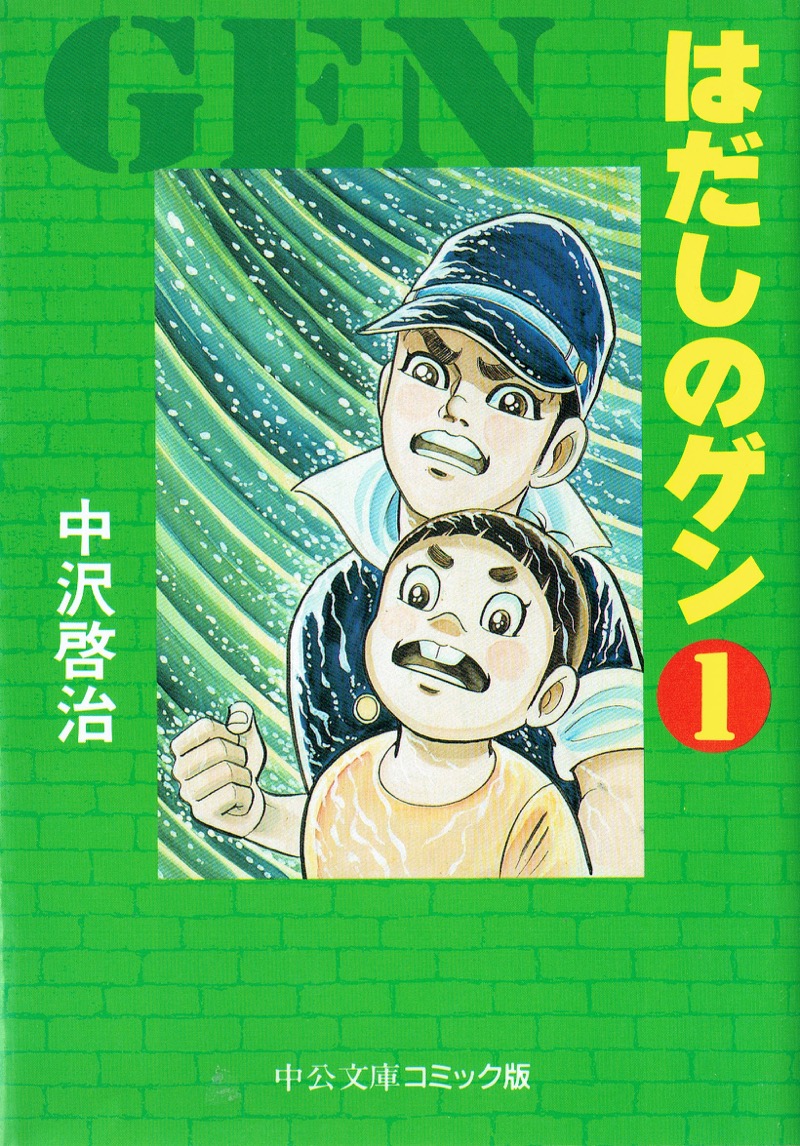
By Keiji Nakamura | 中沢啓治
Chuokoron-Shinsha | 中央公論新社
3 volumes, complete
The extreme reality of atomic bombs
-A book that should be shared among the people of Japan, the only country in the world where atomic bombs were dropped
"This is a book that should be shared among the people of Japan, the only country in the world where atomic bombs were dropped. It has been 70 years, and the number of those who personally experienced the atomic bombings is decreasing. This is extremely realistic teaching material to pass down the story of horror and misery of war, especially of atomic bombs. I remember I first read it at the library in junior high school. Even now, I still have never had a more shocking experience than seeing depictions of atomic bomb victims riddled with broken glass or with flowing, melted skin. This has been translated into more than 10 languages and is highly acclaimed worldwide. In Japan, on the other hand, there is criticism about letting children read the work, because of how the Japanese army is depicted or political stance. However, as Japan’s security is again being questioned today, this work should be recognized as material that can help us think about nuclear bombs and war, including criticism. "(Ichiya Nakamura)

By Fumiyo Kouno | こうの史代
Futabasha | 双葉社
1 volume, complete
A beautiful, quiet, and powerful manga
-- The story of people who, no matter how hard they try, cannot forget the day the atomic bombs fell, and their families
"Atomic bombs were dropped in this country 70 years ago. Cities were destroyed in a flash, and many people died. This manga, instead of directly depicting the misery caused by atomic bombs, takes the viewpoints of people who cannot forget that day no matter how much time passes, and their families. A quiet, routine scene of people leading their lives in a way people take for granted. A scene full of laughter, enjoyment, dreams, love—and the lingering scars. Separation from family due to death, the permanent damage, the weight of memories, a sense of guilt from surviving, and discrimination against atomic bomb victims and their families. Instead of saying the bombings were scary or led to misery, the manga depicts individuals who live with heavy sadness, quietly talking to us. A beautiful, sad, quiet, and powerful work. This is a manga I would like everyone in Japan and the world to read."(Katsuhiro Motoyama)

By Shigeru Mizuki | 水木しげる
Kodansha | 講談社
1 volume, complete
Pictures infused with life
-- A relentlessly depicted autobiographical war chronicle of New Britain Island in the South Pacific
"An autobiographical manga based on the author's own war experience. Only Mizuki can illustrate such a helpless battlefield where people die one after another for no reason. Battlefield scenes are detailed and lifelike, and as you read, your pain intensifies, and your anger and sadness grow. When you realize this was something that actually happened, it reinforces the desire to never go to war. Mizuki's characteristic humorous depiction of people offers some relief. I sincerely hope that younger generations continue to read this persuasive, experience-based manga."(Tomoko Yamada)
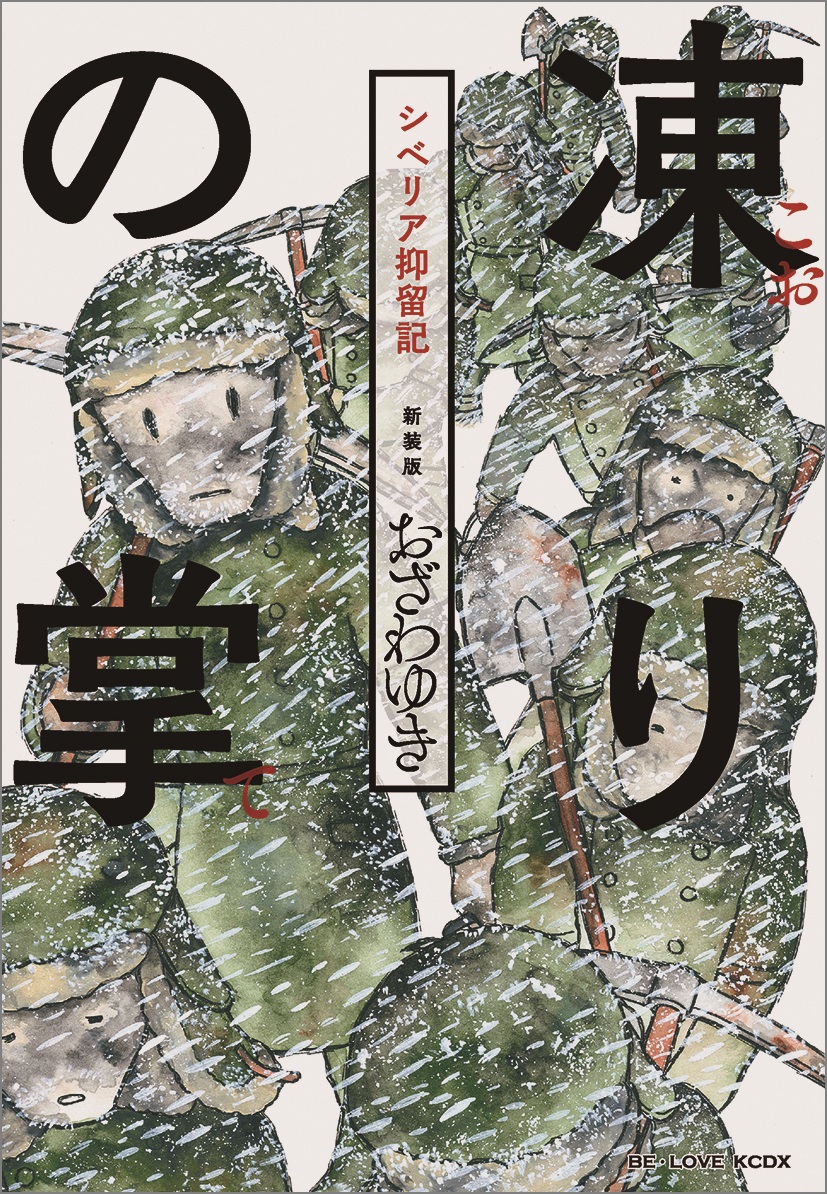
By Yuki Ozawa | おざわゆき
Kodansha | 講談社
6 volumes, complete
Untold truth of the war
-- The author depicts his father's experiences in detention at a Siberian labor camp
"This manga is based on the experiences of author Ozawa’s father in detention at a Siberian labor camp. Many of those who endured great hardship returning to Japan after being detained in Siberian labor camps were suspected of being communists, could not claim basic guarantees, had few job prospects, and continued to suffer. Their distress was immeasurable. The author was born after the war and relied on family testimony and imagination for this effort, so readers of generations without experience of the war will find it easy to read. I want readers to know the outcome of war, which their parents and grandparents entered under various circumstances. This manga reflects the author’s sincere desire to tell the unknown truth of World War II, which is fading into the past with the passing of 70 years since the war’s end. "(Tomoko Yamada)

By Yoshikazu Yasuhiko | 安彦良和
Ushioshuppansha | 潮出版社
8 volumes, complete
There is no pre-established harmony in history
-- Promising young people are at the mercy of the times in Manchuria in the early Showa Period
"This takes place in Manchuria in the early Showa Period. It depicts Humboldt, a promising young man, and other people at the mercy of the times when the ideal of Five Races Under One Union was proclaimed. Yoshikazu Yasuhiko, the author, always seems to be the one to contemplate the issues we need to think about seriously based on history. His works have an action-film quality to them. However, his stories do not evoke the feeling that there is a clean ending of pre-established harmony in the world. That’s just the way history is, and this holds significant meaning in itself; readers also realize the importance of continuing to think for themselves. This great work encompasses points that will surprise even historians."(Tomoko Yamada)

By Hisashi Sakaguchi | 坂口 尚
Ushioshuppansha | 潮出版社
6 volumes, complete
What is a human being, and what is freedom?
-- Yugoslavia during World War II. Frustrations of a boy who joined a partisan band
"This work is set in Yugoslavia during World War II. A boy joins the partisans fighting against invading Nazi Germany, but is frustrated by the acceptance of killing and reality of war. An older brother has some German blood and decides to live as a double agent. A girl is forced to work in merciless conditions at a concentration camp, where people are treated as less than human. Individuals cross paths as they are bombarded with the powerful destiny called war, struggle, and continue to live. He says at the end: “If we acknowledge reality as reality, it’s over.” Japanese are unfamiliar with historical episodes in Europe and even less familiar with former Yugoslavia during World War II, although it is the same war Japan experienced. On this stage, the manga throws out essential and universal questions over and over: What is war, what is peace, what is a human being, and what is freedom? This is a war manga and a historical manga, plus a first-class work of philosophical literature."(Katsuhiro Motoyama)
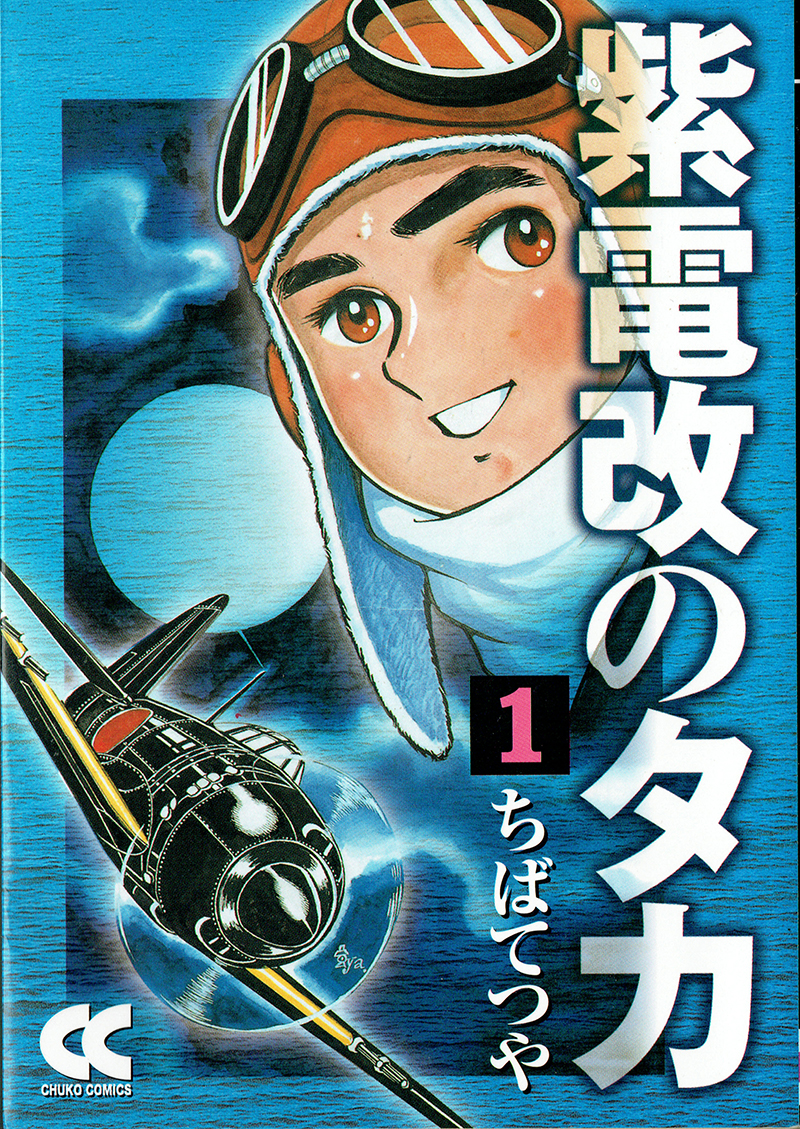
By Tetsuya Chiba | ちばてつや
Chuokoron-Shinsha | 中央公論新社
4 volumes, complete
Each and every nameless soldier
-- The truth of pilots putting their lives on the line after thorough contemplation, undertaking suicide attack missions to ram enemy ships
"When the series Shidenkai no Taka started, I read it with serious expectations. In the early 1960s, “war chronicle” manga for boys were common. Many were typical of boys’ manga, featuring a whiz-kid fighter plane pilot or courageous young soldier. While these manga did express some antiwar sentiment, how the main character fights received more focus (possibly due to readers’ need). At that time I was still a girl, and expected Shidenkai no Taka to be a true antiwar story, since it was done by the famous Tetsuya Chiba. Girls generally have a positive view of pacifism, yet without knowing the reality of war or fighting, they tend to arbitrarily decide that going to war is based on men’s logic. This manga shocked me. Instead of a simple and easy antiwar theme, it depicted the truth of pilots putting their lives on the line after thorough contemplation, undertaking suicide attack missions to ram enemy ships, Many young lives were lost by making that choice in the situation prevailing at the time. The last scene totally crushes the preconceptions of an adolescent girl who has determined that the young soldiers’ actions were simply “silly, as they are blind to reality--therefore Japan is no good.” Unless you take into account those who were right there at the time, the desire for peace is nothing but talk. This is a great manga that provides an opportunity to better understand the position of each and every nameless soldier. "(Machiko Satonaka)
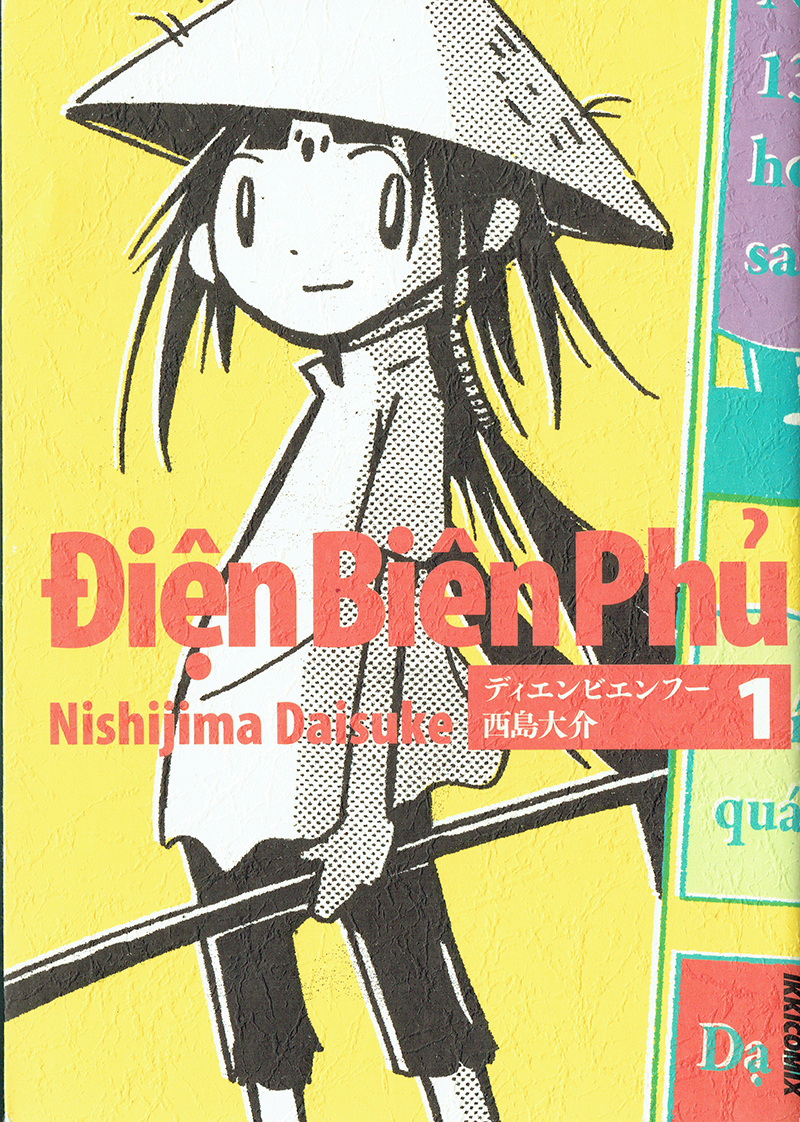
By Daisue Nishijima | 西島大介
shogakukan | 小学館
12 volumes, ongoing
Truth of war
-- A creative world combining historical facts of the Vietnam War with fantasy
"This work illustrates a creative world that combines historical facts of the Vietnam War with fantasy. When you start turning the pages, expecting to find a cute story based on the comic’s cover, you might suddenly get a shock. So be ready when you pick it up. Hikaru, a Japanese-American military camera operator, falls in love at first sight with the toughest girl, who sets up guerrilla attacks against American military on the battlefield, where people are killed for no reason. Is love possible in such circumstances? Or is love the desire of someone who does not know war? Readers who have never experienced war do not understand what truth is. It is the same for the author, who was born after World War II. The tone of the story rapidly changes as you read, possibly because the author was deepening his understanding of the “swamp” called war as he continued to draw. This manga is ambitious, as it questions the value of expressions regarding the limits of knowing war for those who have never experienced it and the meaning of trying to understand, as well as expressions that embody these processes. "(Yasuhiro Yamauchi)
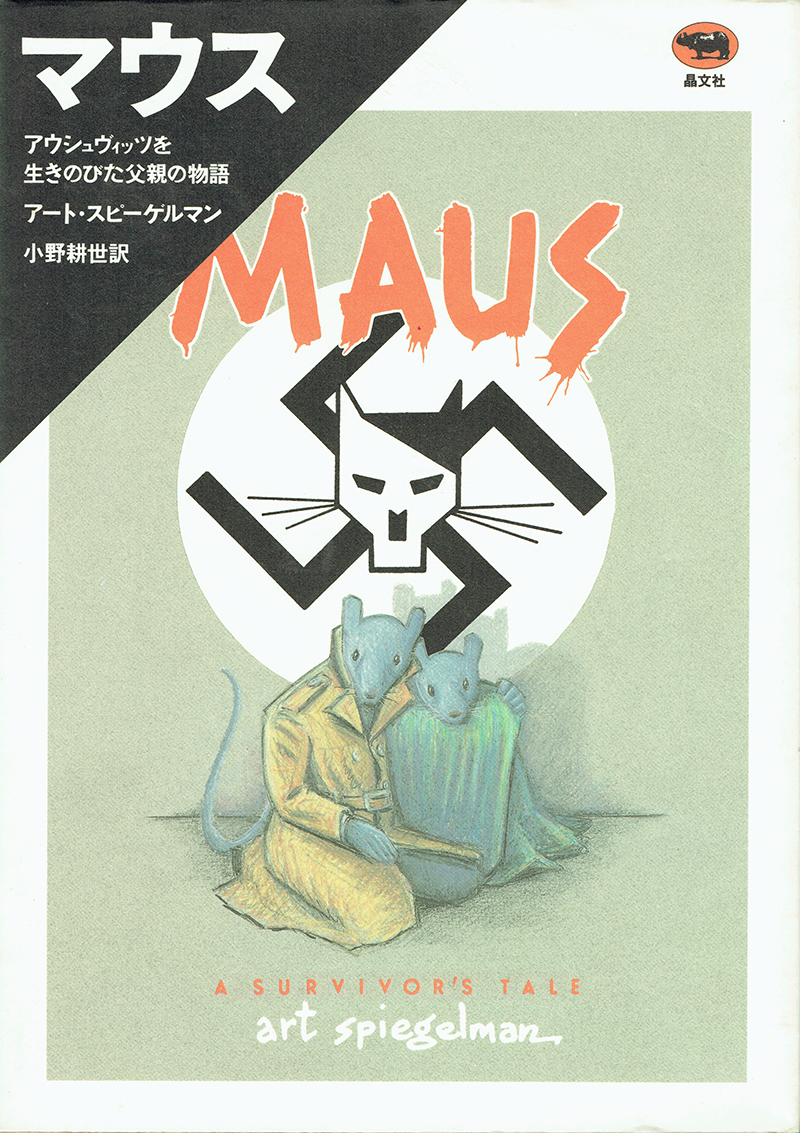
By Art Spiegelman, Kosei Ono | アート・スピーゲルマン(著),小野耕世(訳)
Shobunsha
2 volumes, complete
The Holocaust, as depicted by cats and mice
-- Recollections of the life of a Jew who survived Nazi oppression and bloodshed
"This work by a foreign manga artist recollects the life of a Jewish father who survived Nazi oppression and bloodshed. The Holocaust is the most tragic event in human history, and something people need to face squarely in order to gain perspective on what it is to be human. The manga takes the style of a son hearing about this heavy theme from his father; depictions are realistic, and include a love story as well as tales with a human touch. Jews are portrayed as mice, Germans as cats, and Poles as pigs. When the mouse Jews escape with their lives from the cat Germans, it makes a vivid impression. This approach is only possible for manga, and it can highlight history that you would otherwise not want to see. The manga received the Pulitzer Prize Special Award and worldwide acclaim. "(Katsuhiro Motoyama)

By Hiroshi Takano | 髙野洋
Shueisha | 集英社
6 volumes, Complete
Facing fresh wounds of war
Stories of frustration and the struggles of a Japanese doctor who travels from one conflict-torn region to another
"This work shows various conflict sites in the world from the viewpoint of the main character, a Japanese doctor engaged in international medical aid activities. His presence in places where people are killing each other on the basis of being either friend or foe holds deep lessons not only for those who want to become doctors but also for young people seeking to become professionals in other areas of expertise. Episodes involving antipersonnel landmines in Bosnia and Herzegovina, on which the author spends an entire volume, make especially strong impressions. The work takes a deep look at landmines from different angles, such as the character of a weapon that symbolizes the insidious nature of animosity and despicable acts where lingering suffering is assumed, including for those helping a friend who had stepped on a mine; the dilemma of a former soldier who used to plant mines and is now making a living by removing them; and the distrust that grows within a boy injured by a mine, who notices that his stepfather makes money from removing landmines. These are one-of-a-kind vignettes for a manga, but the viewpoint of how to deal with the situation as a professional who is not a soldier or local resident is what truly sets the work apart. It provides a vivid reminder that wars are not long-past or distant events, but are actually happening right now. "(Yasuhiro Yamauchi)
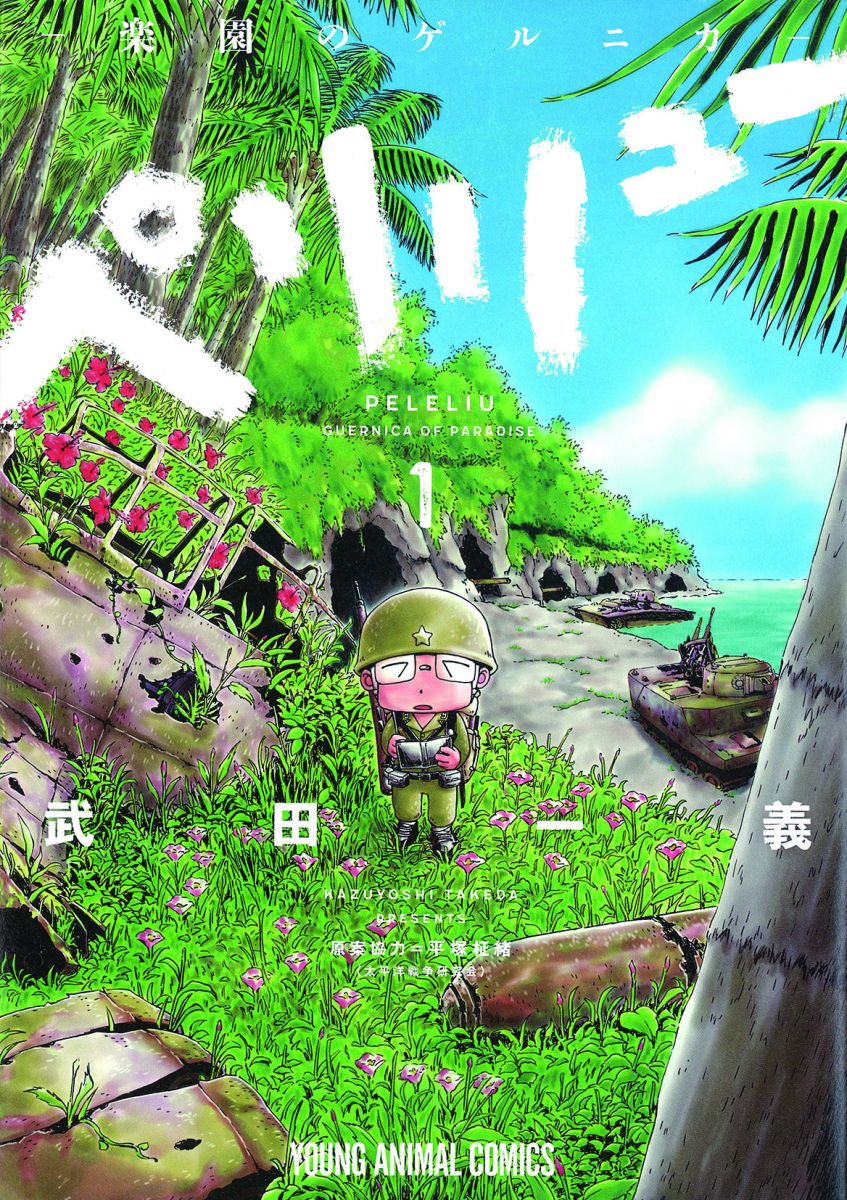
By Kazuyoshi Takeda | 武田一義
Hakusensha | 白泉社
5 volumes, Ongoing
What were they thinking on that beautiful southern island?
The innocence of a young Japanese Army soldier at the end of the Pacific War
"In the past, this country also fought in a war. Dying for your country was praised as an expression of honorable defeat. Now, as the generation with direct experience of war disappears, it is necessary to pass down what they went through in a way that resonates with following generations. The author of this work obviously had something like that in mind. It takes place on Peleliu, a small island in the South Pacific that became a battlefield at the end of the Pacific War. The story follows the main character, a young Japanese soldier serving on the island who dreams of becoming a manga artist. While surely conveying the cruelty and horror of war, it also takes special care to make everything more acceptable, such as employing cute characters and fictional elements throughout the work, which makes it easy to read and “interesting” as manga. It is probably this aspect that truly reflects the skills of the author, who made his debut as a manga artist with a depiction of his own cancer experience. This is a suitable manga for young people to first learn about war and ponder it. "(Yasuhiro Yamauchi)
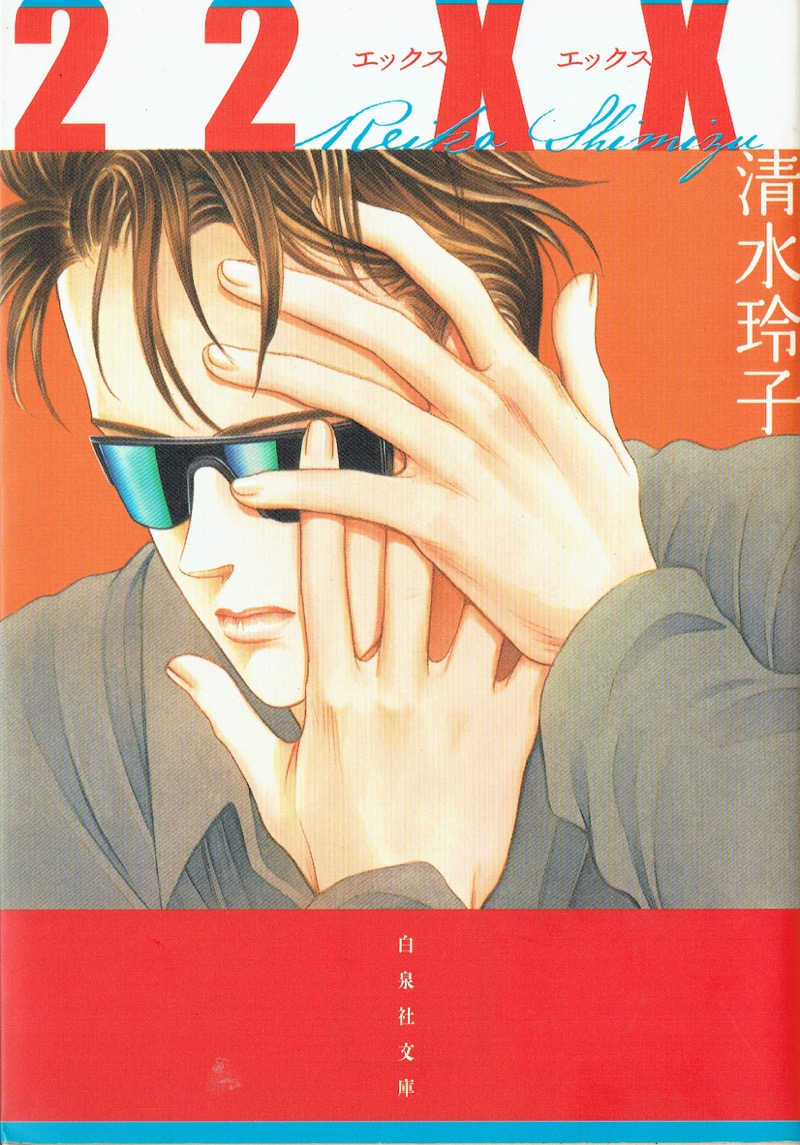
By Reiko Shimizu | 清水玲子
Hakusensha | 白泉社
1 volume, complete
Is “flesh-eating” an absolute evil?
-- The ultimate question that turns your thinking upside down
"Have you ever seriously thought about eating? For example, is “flesh-eating” an absolute evil? Perhaps in today’s society it is totally abhorrent. But what if it occurs in a culture where it is a sacred ceremony to pass down memories of the dead and connect their lives to the future? On the other hand, what does the act of “eating” mean to a robot? After reading this work, you won’t be able to help thinking seriously about these questions. Society and culture are much deeper than you think."(Yukari Fujimoto)
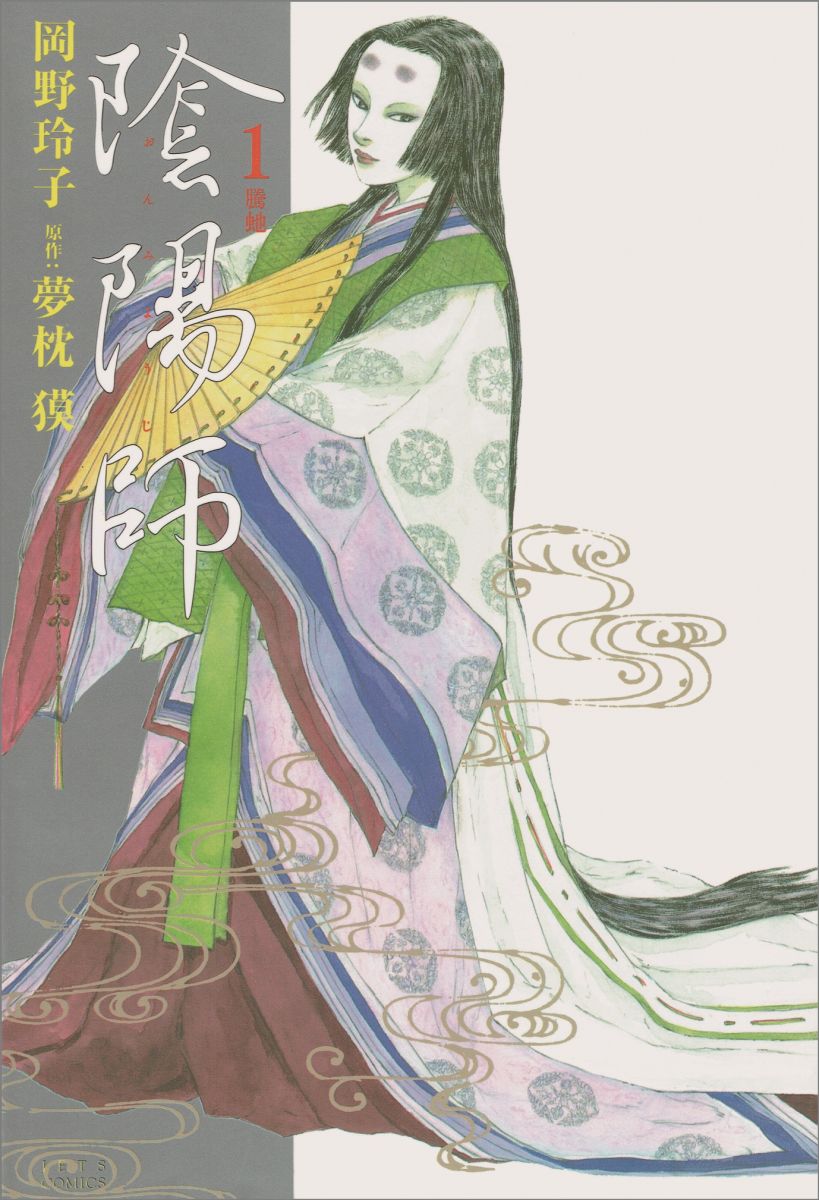
By Reiko Okano, Baku Yumemakura | 岡野玲子、夢枕獏
Hakusensha | 白泉社
13 volumes, complete
Where does life reside?
-- The story of Abe no Seimei, an onmyoji yin-yang master of the Heian Period, who dispels curses
"The story of Abe no Seimei, an onmyoji yin-yang master of the Heian Period. At the time, divination and magic were deeply entwined with politics. An onmyoji yin-yang master played the part of dispelling curses placed on people. Spiritual and supernatural beings were commonly considered to exist back then, and the idea of "a spirit resides in everything" has been passed down in the aesthetic sense of Japanese even today. Those interested in the aesthetics of Japanese, such as what is considered beautiful or scary, would find it especially interesting. In addition, here is a chance to think about where life resides and what life is."(Yasuhiro Yamauchi)
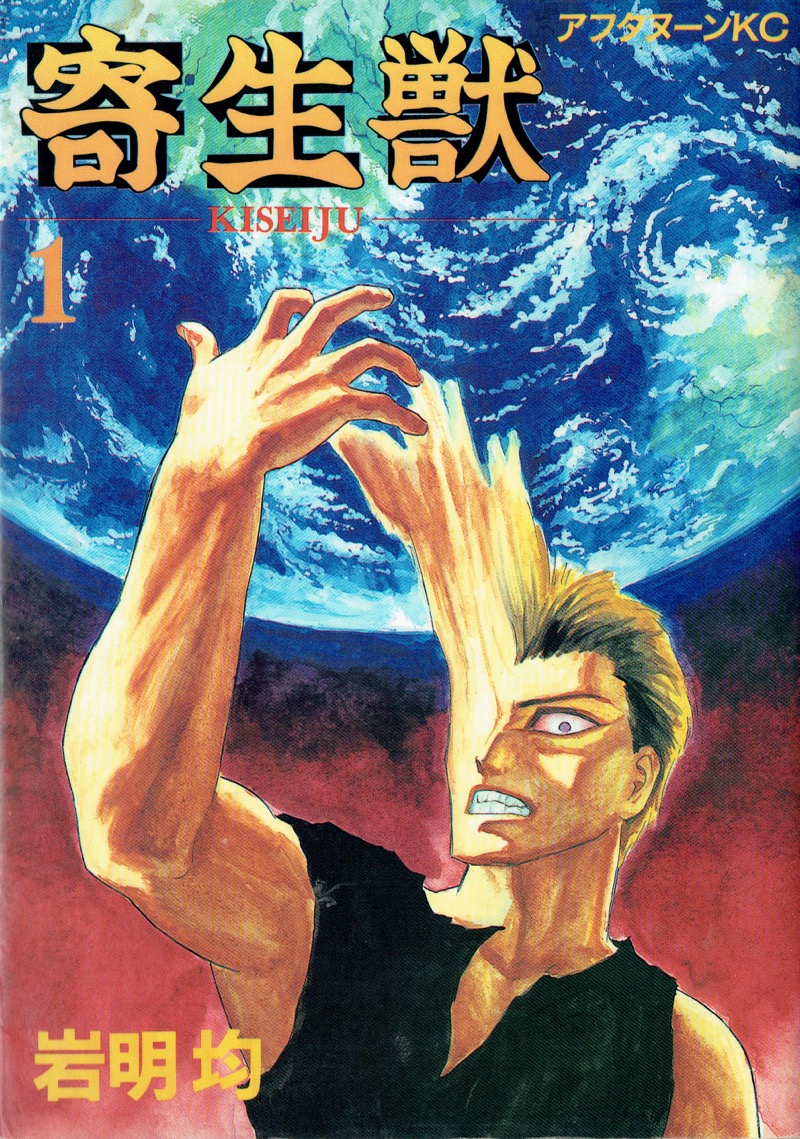
By Hiitoshi Iwaaki | 岩明均
Kodansha | 講談社
10 volumes, complete
What does form mean? What is life?
-- Fierce battles between humans and parasitic beasts that infest people and kill other humans
"The battle between humans and parasitic beasts that live in people, control them, and masquerade as their hosts to kill other humans. The main character befriends Migy, a parasitic beast who infests the main character’s right hand, creating the awkward and tense relationship of being friend and foe at the same time. Are people around the main character real humans or parasitic beasts? If part of your body is a parasitic beast, are you still called human? Is your own existence and relationship with others ultimately based on perceptions? If so, what does form mean? What is life? This is a masterpiece that makes you ponder such fundamental issues. While some cruel scenes are included, it raises the idea of what constitutes a person’s identity."(Machiko Satonaka)
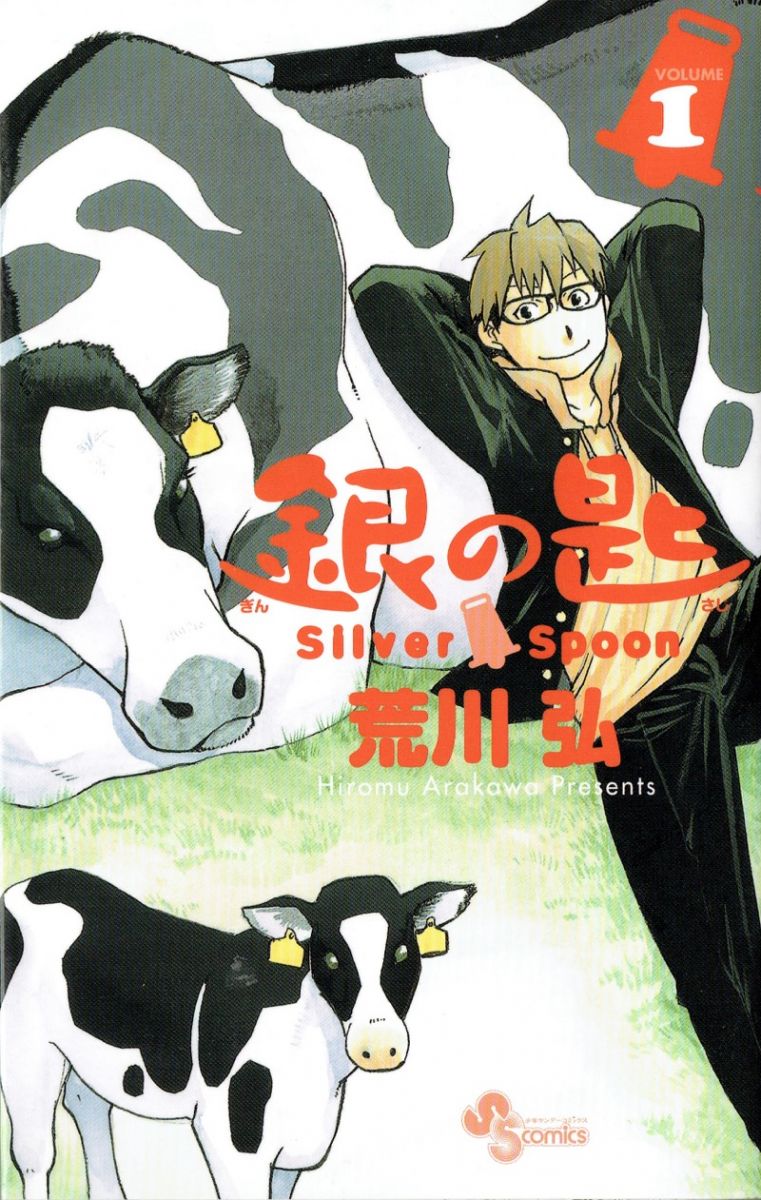
By Hiromu Arakawa | 荒川 弘
Shogakukan | 小学館
14 volumes, ongoing
Eating life
-- Student life at an agricultural high school dairy farming program, where you learn the process of food reaching the table
"The stage is the dairy farming program at an agricultural high school. As this manga shows details of student life at a specialized vocational high school or technical college, it is especially useful for junior high school students currently thinking about options after graduation. Most students at specialized vocational high schools have decided what they want to do in the future by the time they enter the school. However, the main character still has not made up his mind about a future career. If you are the only one who cannot decide on your path while many others around you already know their future, you may find the main character encouraging as he actively investigates various possibilities. In addition, reading this work deepens understanding of dairy farming. It shows you how the food you eat gets to the table and lets you think about eating living things. This work is also recommended to those interested in food."(Yasuhiro Yamauchi)
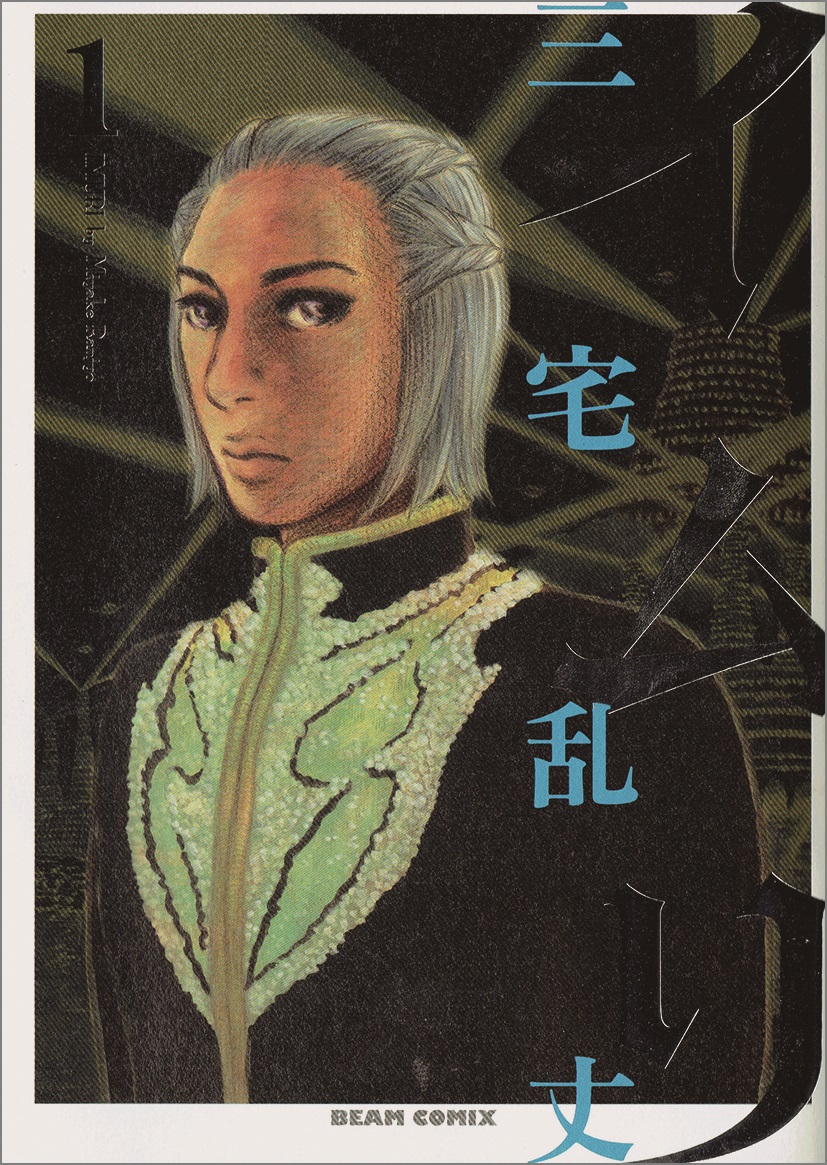
By Ranjyo Miyake | 三宅乱丈
KADOKAWA | KADOKAWA
22 volumes, ongoing
Twin brothers and two civilizations
- How should the world be? ... What do you think?
"This manga is a bit hard to follow at first. After all, it is SF. But once you understand the initial setting, there is no problem and you will find yourself immersed in the story. The main characters are twin brothers who were raised by totally different tribes in different environments. In this world, all twins are highly empathetic. These twins also symbolize attitudes of the two civilizations toward nature and society. One is a civilization that exerts its power to purposefully control nature and people’s minds. The other is a civilization that does not go against the natural world, co-exists with nature and people, and waits for others to assist them. A Western civilization versus an Eastern civilization, so to speak. The story approaches its climax. How should the world be? Without noticing, you will discover the basis for thinking about the two civilizations while excitement builds as the thrilling story unfolds. "(Yukari Fujimoto)
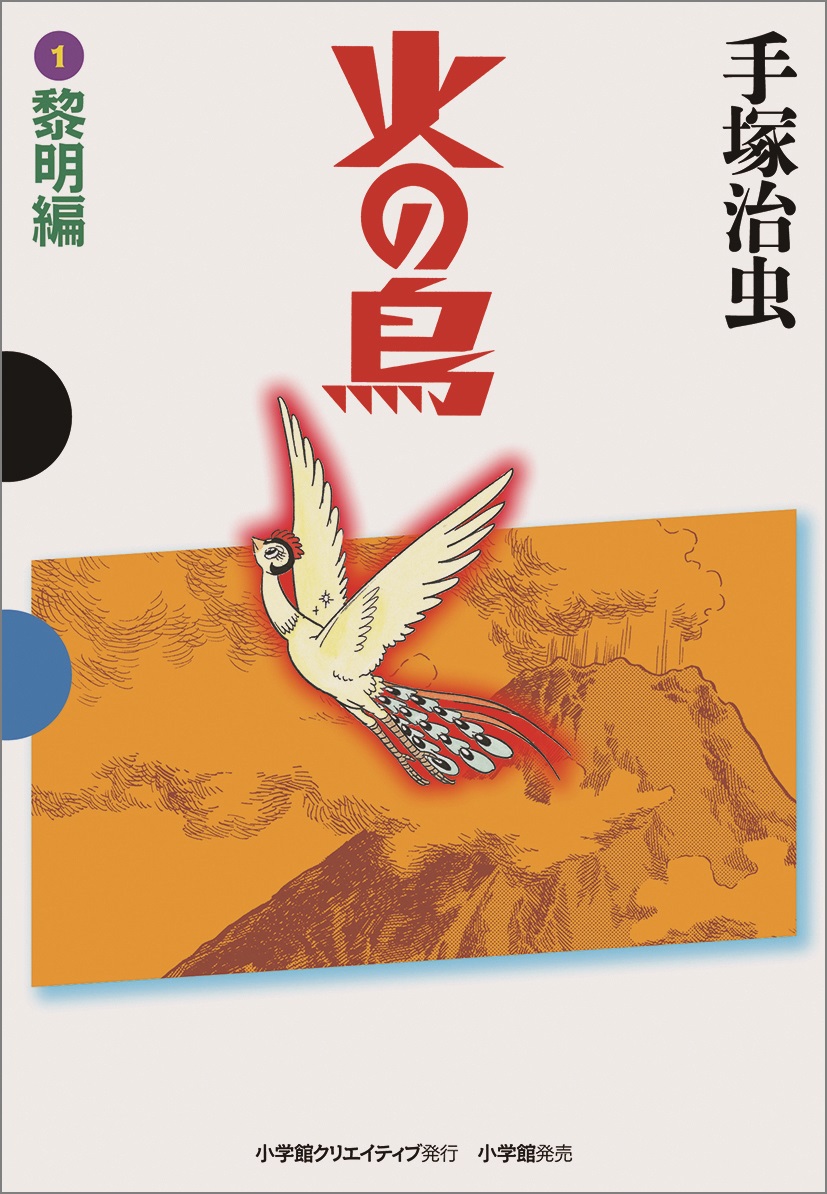
By Osamu Tezuka | 手塚治虫
Kodansha | 講談社
12 volumes, complete
Everything Tezuka
-- A book of philosophy, life, and an eternal masterpiece that should be passed down
"Among Tezuka’s ultimate masterpieces, Hi no Tori [Phoenix] best expresses all elements you would expect from his work. History, science, medicine, art, ethics, desire, politics, religion, and so on. This manga, which the author started at the age of 26 and continued to illustrate while changing publishing locations until the year before he died, can be regarded as a book on the philosophy of life, and is an eternal masterpiece for all generations to read repeatedly."(Machiko Satonaka)

By Yuki Urushibara | 漆原友紀
Kodansha | 講談社
11 volumes, complete
Mushi, connecting this world with another
- Japanese people’s view of life and death as well as physicality in another world
"Mushi are something very similar to life and connect this world with another. The point of connection is the main character, who is a mushi master. In the manga, the realm between the two worlds is expressed by the existence of mushi. Where mushi are found and their formats vary, and characteristics are vague. Some people can see them but others cannot. Because they are the medium between this world and the next, they are the cause of problems related to life and death. With this manga, you can sense the existence of an invisible world. This provides an opportunity to think about Japanese people’s sensibilities toward such things as physicality and their view of life and death."(Yasuhiro Yamauchi)
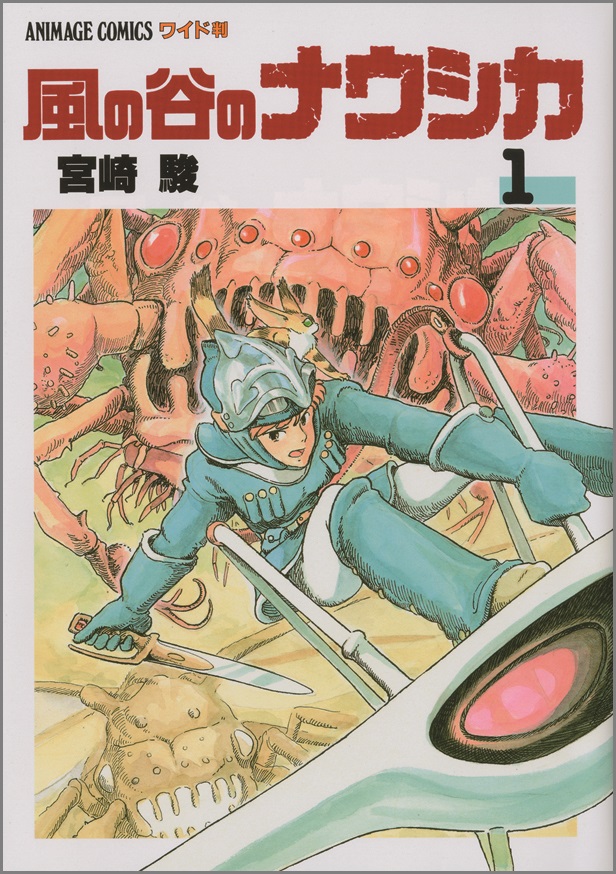
By Hayao Miyazaki | 宮崎駿
Tokumashoten | 徳間書店
7 volumes, complete
How to coexist with nature
-- Profound insights on nature along with the destiny of Nausicaä, areas not fully captured by anime
"This manga makes you think about what it means to coexist with nature. Reading the manga makes it clear that the theater-version anime is just part of this work’s world. Those who have seen the movie are advised to check at their own pace what happens next in areas not fully covered by anime, including Hayao Miyazaki’s profound insights on nature and the environment, as well as on the destiny of Nausicaä, who lives there. Illustrated in Miyazaki’s gentle and tasteful pencil work, the manga will help you understand Ghibli anime and the realm of Miyazaki, whom the world now claims as its own."(Tomoko Yamada)
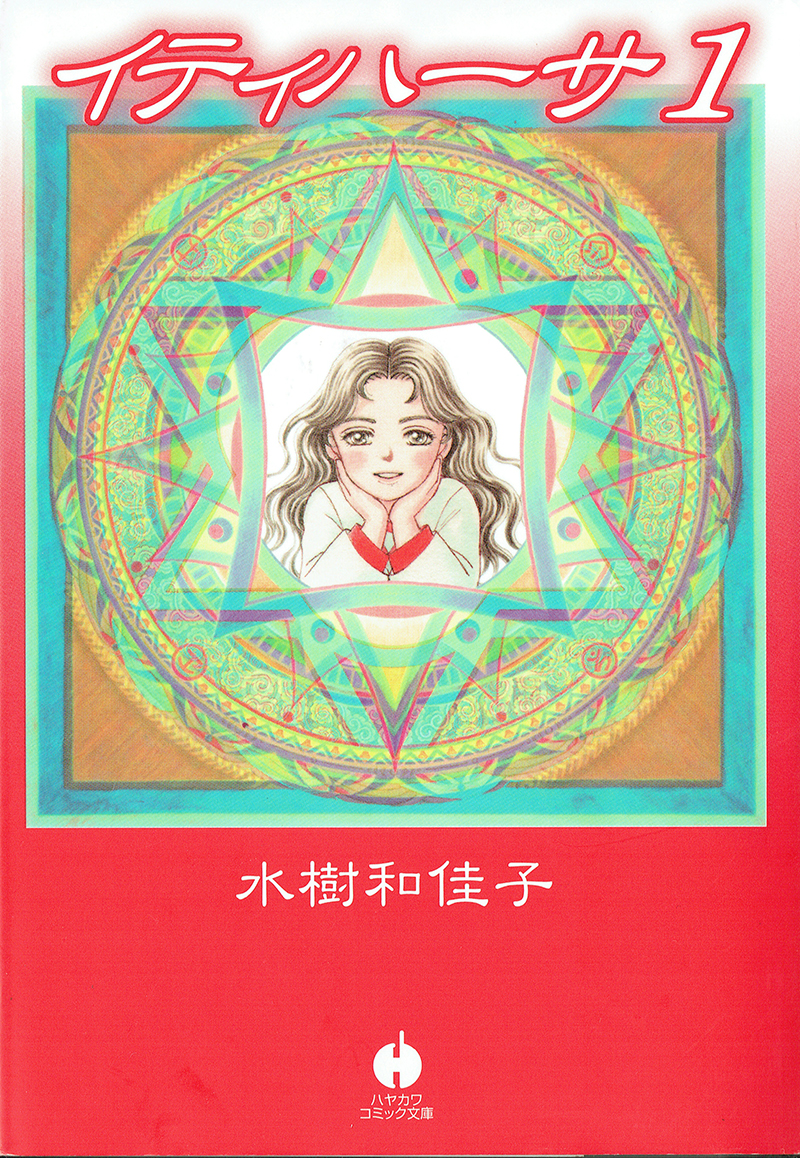
By Wakako Mizuki | 水樹和佳子
Hayakawashobo | 早川書房
7 volumes, complete
A unique work raising the question, "What is existence?"
-- A philosophy manga that depicts the fluctuating souls of pre-mythology countless eons ago
"There is a scene in this manga, a conversation in a forest on the slopes of a mountain that seems like Mt. Fuji. Kayo says to Takano, who is disconcerted by the possibility of getting lost due to thick fog, "This is a forest in which to become lost, to escape from ambivalence.” Indeed, unless you are confused, there is no need to get out of a confused state, and you would not think of it. People want answers because they think. If you do not seek something, you do not need to think about it to start with. First of all, you might not notice what it means to think. Itihasa depicts the fluctuating souls of pre-mythology countless eons ago, and it can be called a philosophy manga. The author creates detailed and tranquil scenes, making you hear the quiet and clear sound of string instruments throughout the manga. Fights, suspicions, love, beliefs, setbacks, sadness--this is a unique work that raises the question, "What is existence?" through the device of confrontations between visible gods and the people who believe in them. The first time you read the manga, enjoy it as a fight story; the second time, as a tale of the sorrow of love; and the third time, listen to the great voice questioning you. "(Machiko Satonaka)

By Takeo Murakami | 村上竹尾
Futabasha | 双葉社
1 volume, complete
Senses at the very deepest level of living
-- Reportage by the author, who came back to life after hovering on the edge of death
"A man (the author) neglects his health and suddenly collapses in the bathroom, hovers between life and death, and recovers from cardiopulmonary arrest, literally coming back from the dead. However, despite regaining consciousness, he cannot move his body and did not regain all his sensory perception. This is a record of life and perception, where the author gradually recovers over a long period from confused consciousness and very awkward perceptions due to brain edema. He sees the eyes and mouth escaping from a person's face. All square things regardless of size look the same; to him, an iPhone and a refrigerator are the same. It is also very interesting that while he could not read text or understand the words people were saying, he could sense tens of times more directly whether those words were warm and kind, or cold. This manga makes you think about senses at the very deepest level of living for human beings. At the same time, it makes you realize that such expressions of sensory perception are indeed only possible for manga."(Yukari Fujimoto)
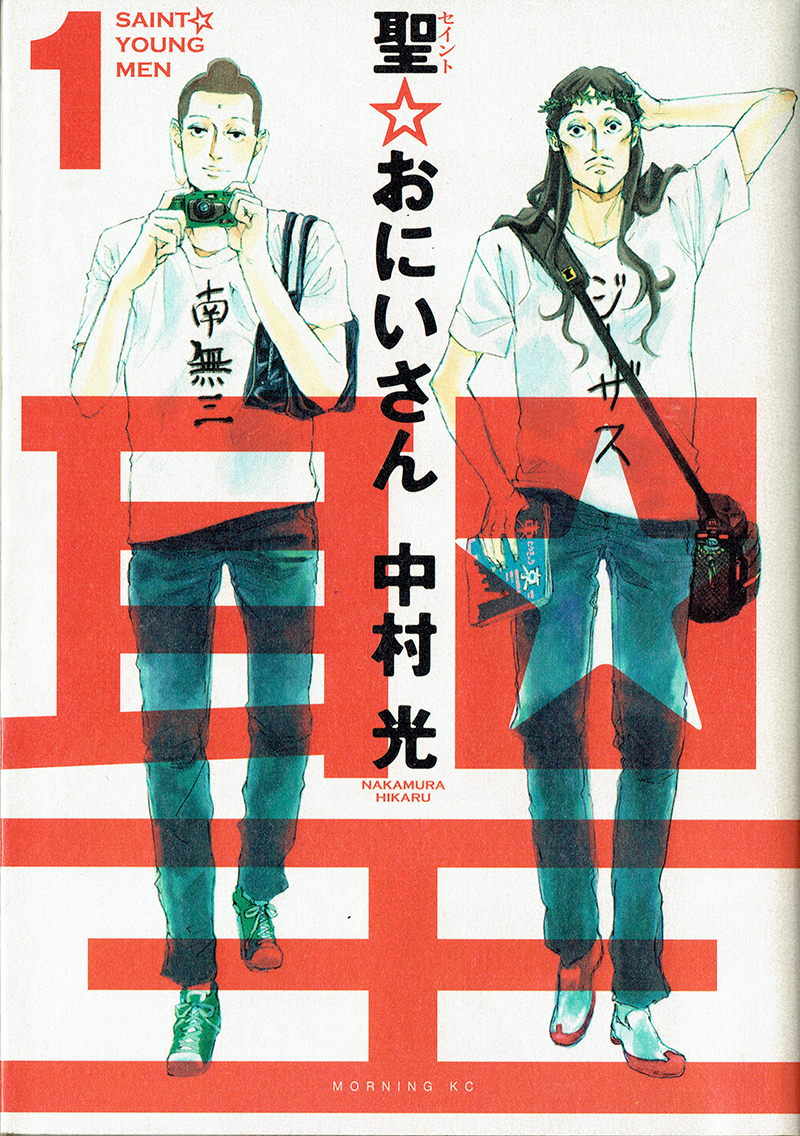
By Hikaru Nakamura | 中村 光
Kodansha | 講談社
14 volumes, ongoing
Seeing the world from viewpoint of gods
-- Friendly gags by Jesus and Buddha living in Tachikawa, Tokyo
"With the shocking setting of Jesus and Buddha on vacation in Tachikawa, Tokyo, getting lots of buzz, this manga has a strong following, also due to timely and tasteful gags. While all sorts of books all over the world have depicted Jesus and Buddha, no other work shows these two as so approachable. Buddhist and biblical scriptures are the original sources of material for many kinds of literature and art. Religions have a great influence on our values and thinking. Yet quite a few people would find it hard to read religious scriptures without any prior knowledge. So it might be a good idea to begin with the feeling of Jesus and Buddha as neighbors by reading this manga. Imagining how the world of human beings looks from the viewpoint of gods is also advised as you turn the pages. "(Tomoko Yamada)
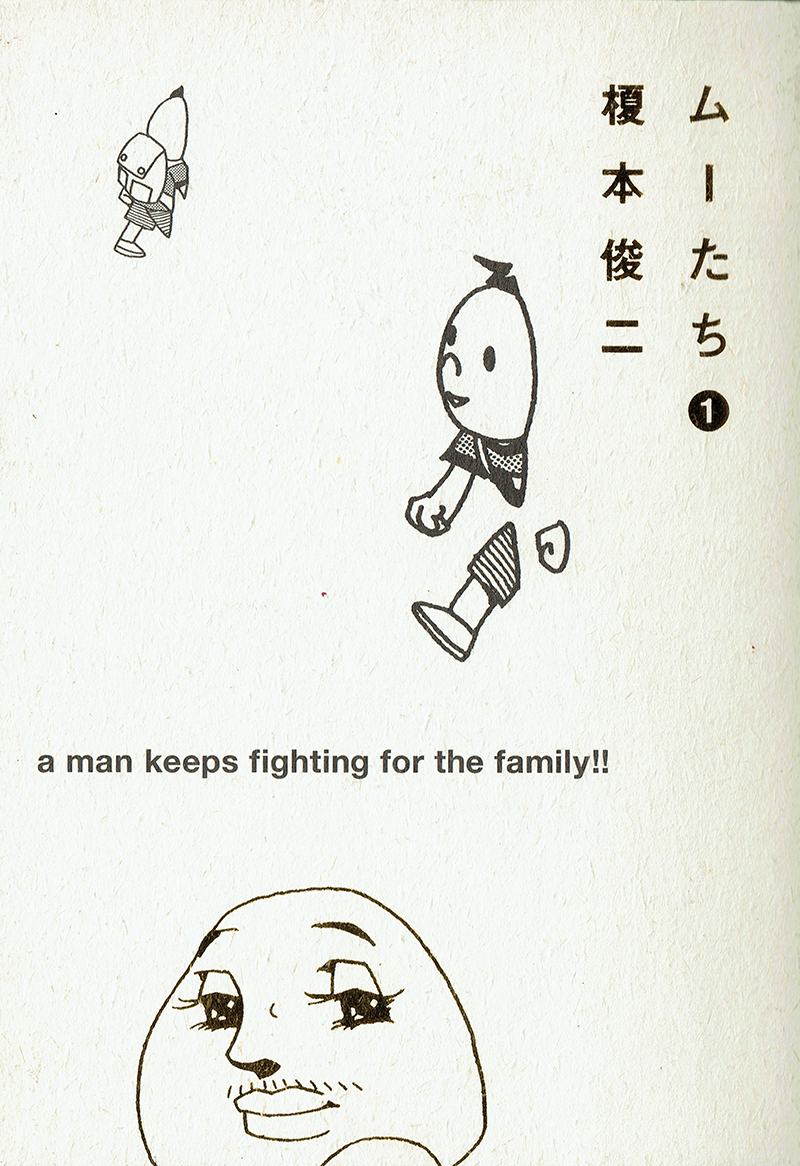
By Shunji Enomoto | 榎本俊二
Kodansha | 講談社
2 volumes, complete
Fully enjoy communication that does not connect
-- Strange philosophical gags by Muo, an elementary school kid, and his family
"Many stories transport readers to a different place. However, this manga gives readers the mysterious sense that they are wandering in a forest, or always returning to where they started. First-time readers might get confused, and their heads fill with question marks. But if you take your time and read it again, you will find yourself suddenly exclaiming as revelation strikes. While it is common in everyday life for communication to fail to connect, it is actually very difficult to purposefully create a situation of communication that does not engage. This manga is full of this kind of disengaged communication, and you will enjoy it. There are many new and good words, albeit with unclear meanings. Here lies the appeal of this manga."(Youhei Sadoshima)
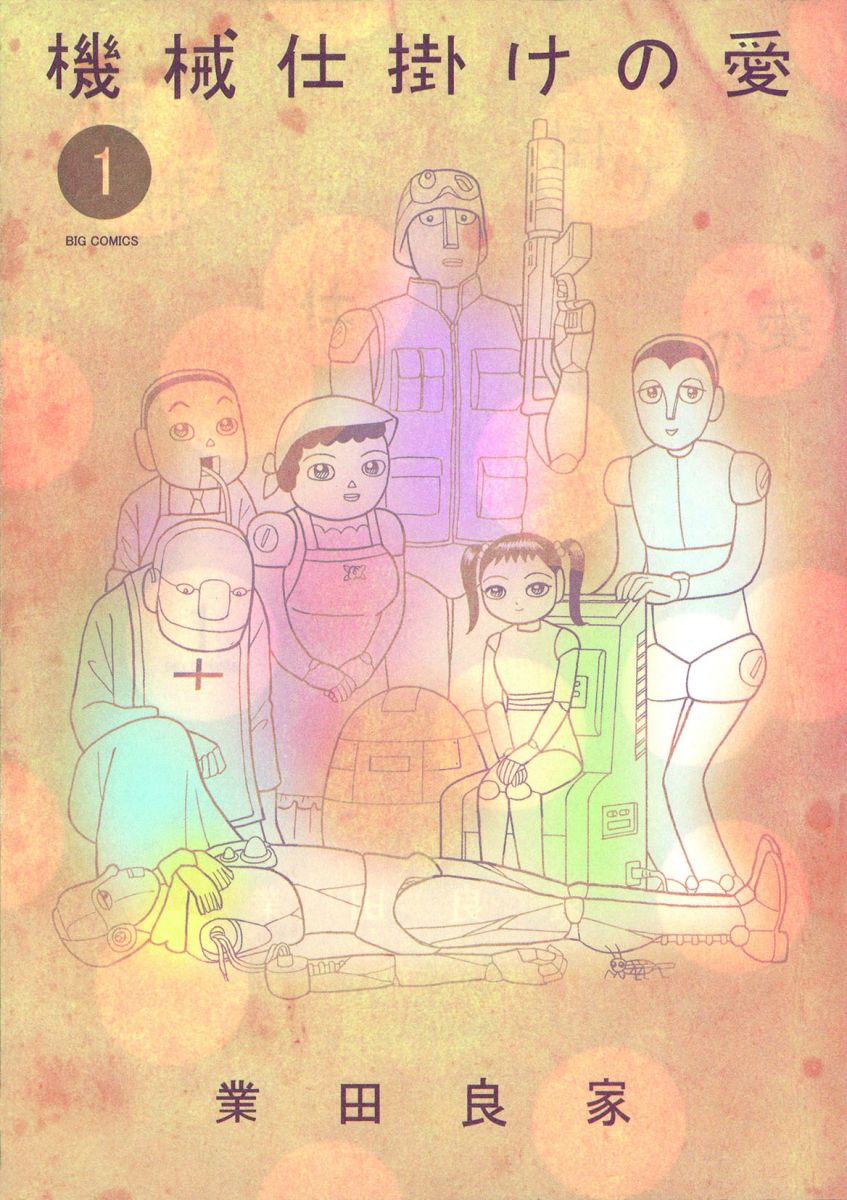
By Yoshiie Gouda | 業田 良家
Chuokoron-Shinsha | 中央公論新社
5 volumes, Ongoing
For future life with machines
Stories from the “heart” as robots blend with the fabric of human life
"Each episode features robots with distinctive characters: A girl pet robot follows her memories to look for her mother from the past; a substandard robot prevents human beings from feeling inferior; a nursing care robot tries to return to work despite receiving a huge inheritance; an intellectual detective robot commits crimes to help the poor; a soldier robot’s orders are overwritten, and it ends up killing both top government officials as well as a rebel group before blowing itself up; a woman robot joins other robots in death to prevent her master from committing suicide; and a teacher robot’s duties change to those of a custodian as a result of changes in school management. The stories’ settings also change, ranging from a familiar residential neighborhood to a distant country abroad, a futuristic city, and a battleground in the line of fire. The lives of robots are overwritten by memory or commands, and they are repaired or sold. However, all robots live life to the fullest and seem to have emotions. People around them—good and bad, policymakers and rebels—all use robots and coexist. This is a human drama to ponder our society through relationships with robots. "(Ichiya Nakamura)
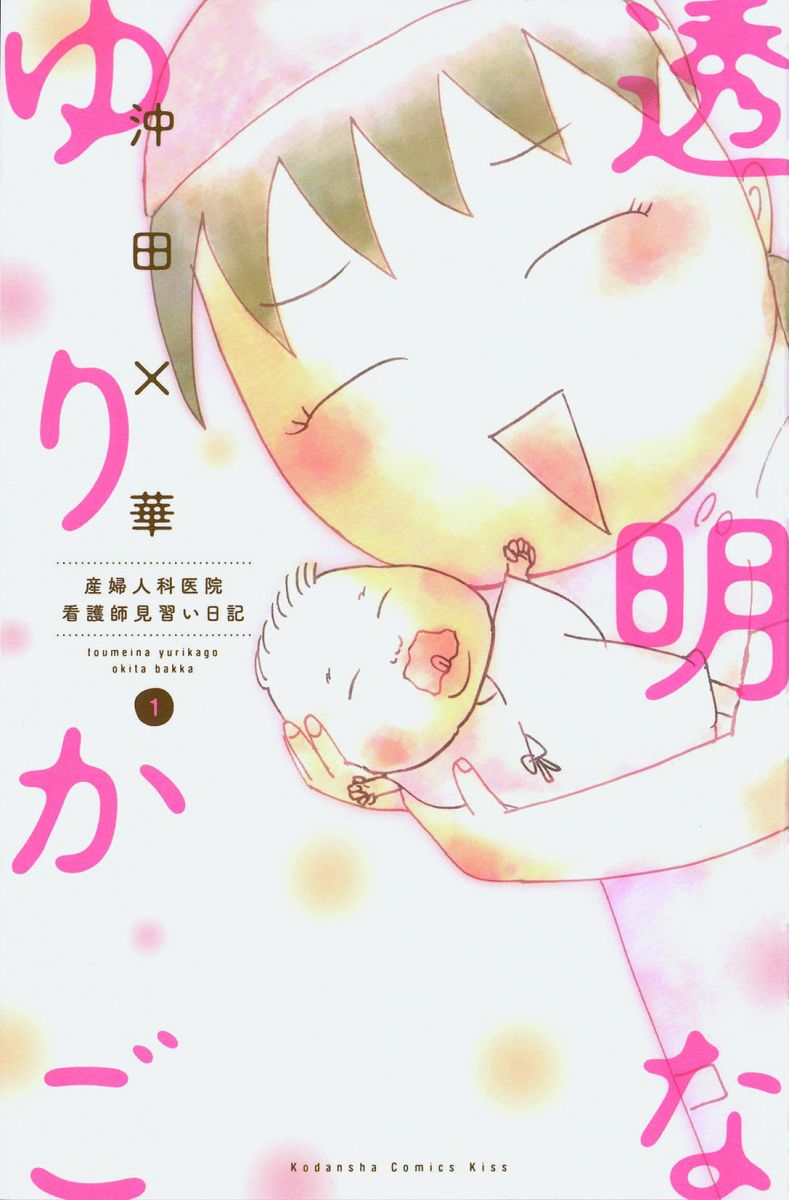
By Bakka Okita | 沖田×華
Kodansha | 講談社
7 volumes, Ongoing
Everything starts with not looking away
Realistic episodes in life, illustrated by a former nurse at a gynecology and obstetrics clinic
"One example: A baby is crying on a train. The baby's mother is feeling troubled. One of passengers becomes irritated and lets out a noisy “tsk tsk tsk!” This is nothing unusual in today’s world. Instead of trying to understand others, people hurt each other and exhaust themselves as they ignore those around them as not worth looking at. This work is based on the author's experience as a nurse at a gynecology and obstetrics clinic, and may provide clues on how to resolve the feeling of stagnation that pervades the times. Various examples of life appear in this work: a life that did not make it into this world; a life that undergoes terrible experiences even though lucky enough to be born; a life that grows by overcoming challenges; and so on. They follow paths of both success and failure, or somehow everything works out in other ways. These cases are illustrated with a simple, undramatic touch, and are thought-provoking for readers. Perhaps knowing others who are different from us—the people we try not to see in daily life—accepting them and showing compassion are what we need today, although this might be a tougher world to look at than we imagine."(Tomoko Yamada)
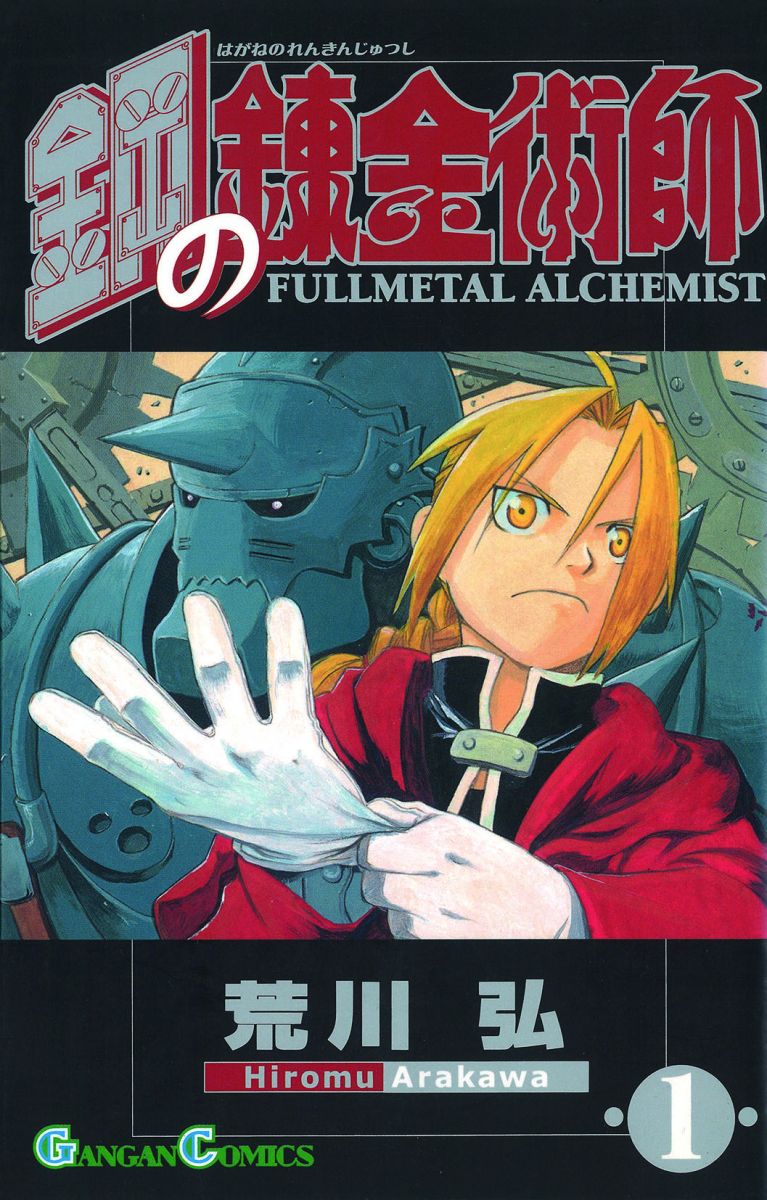
By Hiromi Arakawa | 荒川弘
Square Enix | スクウェア・エニックス
108 volumes, Square Enix
Life, blood and meat, the meaning of fighting
A dark fantasy where alchemist brothers fight for something important
"The story revolves around two alchemist brothers who, through their own past failure, lost something important. They fight against a swirling background conspiracy in the process of getting back that precious thing. Despite being a rich fantasy filled with exciting keywords such as "alchemy" and "elixir," it does not seem made up, and this is the distinguishing characteristic of the work. Realistic scenes are everywhere, such as depictions of pain when struck and blood when cut. This may be due to the author's roots, as he was born and raised on a dairy farm and has seen life close up since young. Indeed, what is depicted here is not a simple battle fantasy but rather "life and death" and the "essence of life." While there are a number of cruel scenes and shocking developments that are difficult to view directly, this perception is due to the believable nature of individual characters. This work is overwhelmingly persuasive as an autobiography of an actual warrior."(Tomoko Yamada)
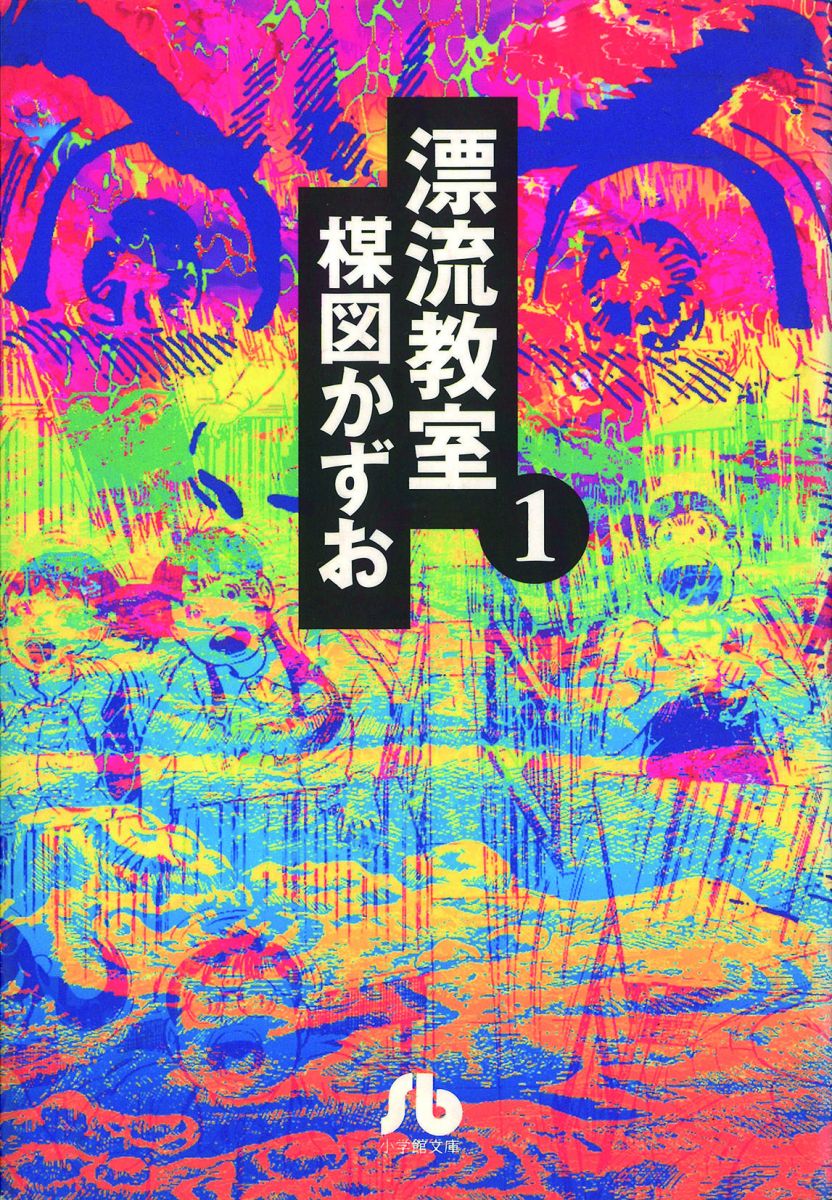
By Kazuo Umezu | 楳図かずお
Shogakukan | 小学館
6 volumes, Complete
The future of human beings, entrusted to 862 elementary school students
An entire elementary school is blown away and lands in a devastated future after humans have been wiped out—What can we do?
"When the Great Tokyo Earthquake struck, the entire building of Yamato Elementary School of Suginami is blown far away to the future, a deserted world of sand after the destruction of human life. Teachers panic at these unimaginable circumstances, lose their mental equilibrium, and die. The 862 students left behind create Yamato Shogakko-koku [Country of Yamato Elementary School], elect 6th grader Sho Takamatsu as prime minister, and confront challenges as a team in order to return to the world they knew. The environment is hard; from outside the school, giant insects attack, while inside contagious diseases are rampant and infighting rages due to water and food shortages. Their saving grace is the maternal instinct of Takamatsu’s mother, who successfully establishes a link with the future world and saves them from crisis by delivering weapons, medicine and food. After enduring hardships that cost the lives of approximately half the students, the survivors try to return to the original world by using the last of their strength and putting their hopes to the test, and the drama reaches a climax. While following a science fiction theme of presenting a wake-up call to modern civilization, the author leaves us with an unexpected ending of hope that children are the ones who build the future, and closes the curtain on a 2,000-page story."(Koichi Yuri)
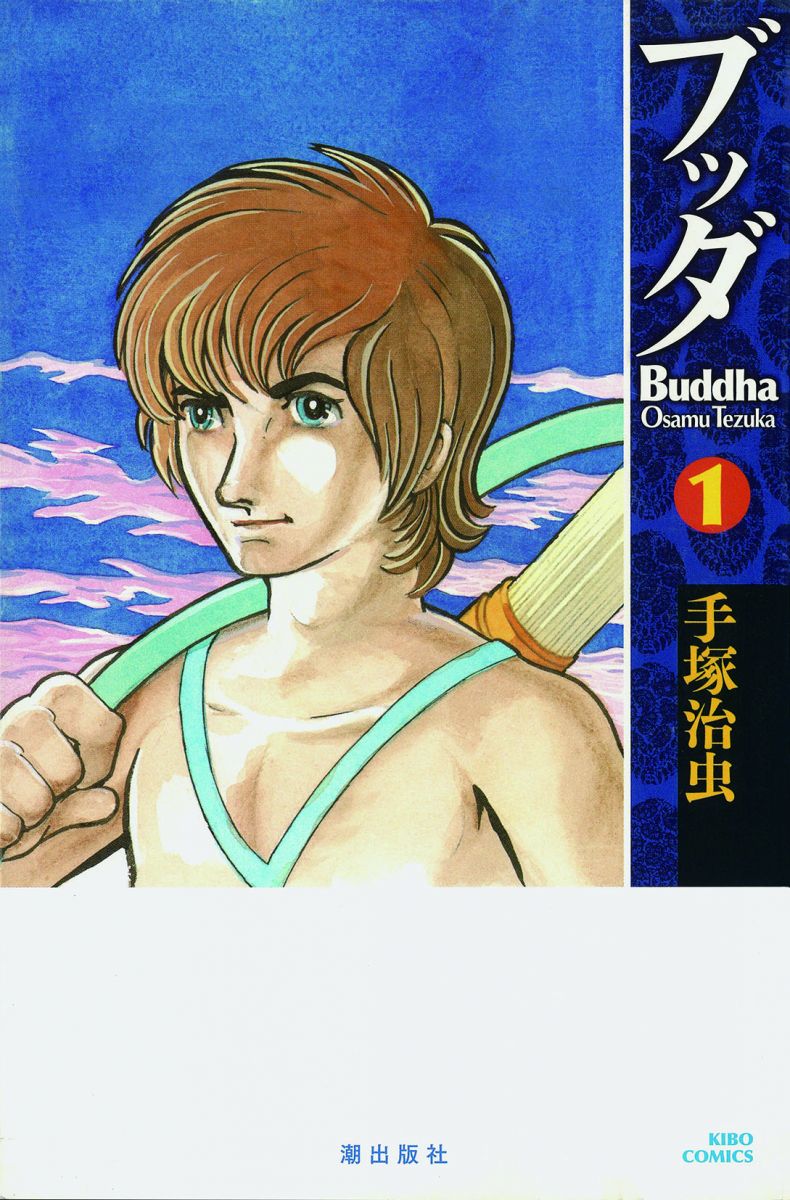
By Osamu Tezuka | 手塚治虫
Ushioshuppansha | 潮出版社
14 volumes, Complete
Buddha also had his share of worries
Enjoy the life of the founder of Buddhism as a human drama
"Religion is not generally something people consider familiar in Japan. Even when vaguely aware that family memorial services follow a Buddhist style, only a few know how Buddhism came into being, the character of the man who inspired the religion, how he lived, and what he went through. Yet knowing what kind of person created a philosophy that has enthralled the human race for millennia is very worthwhile. Buddha is a work that illustrates the life of Siddhattha Gautama Buddha, the founder of Buddhism, and it is interesting to be able to read the story as a human drama. It illustrates the journey of Buddha, whom we tend to see in absolute terms as a holy person, as he pursues his ideals while having various concerns and hardships. This work makes you think that the person who created one of the world’s great philosophies might have lived with his share of worries, just like average people."(Youhei Sadoshima)
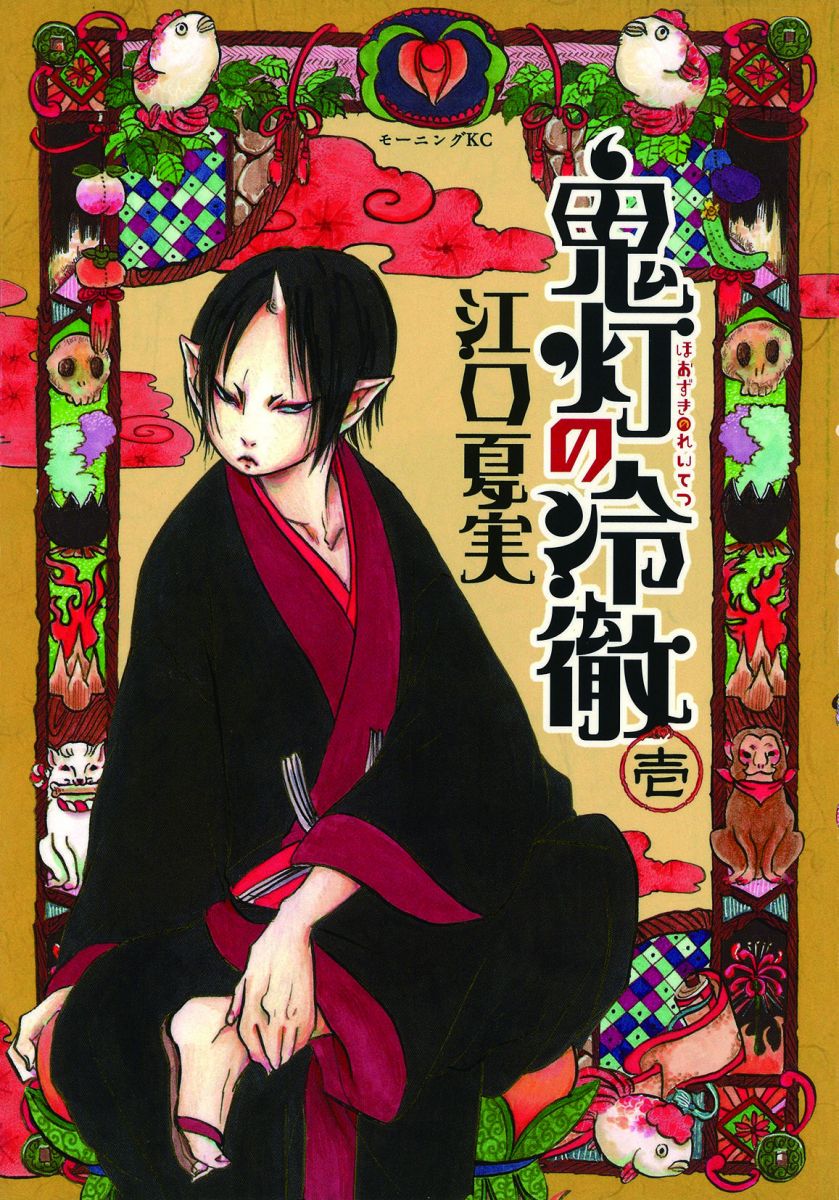
By Natsumi Eguchi | 江口 夏実
Kodansha | 講談社
27 volumes, Complete
Want to go to a hell like this!?
A subordinate of the Great King of Hell is a cool ogre—a comedy that unfolds in the netherworld
"Hell is in chaos due to a staffing shortage. The Great King of Hell is easygoing and lacks stately dignity despite his huge body. In light of these circumstances, Hozuki, chief aide to the Great King, has assumed control of all departments of hell. Hozuki himself regards his position as a sober advisor, much like a chief cabinet secretary, but he is an extremely capable officer and also functions as head ogre. Handsome, with a horn on his forehead and attractive sanpaku-gan [three-whites eyes], Hozuki is popular with women. He never loses control of his facial expressions, is discourteous to supervisors, and shows no mercy even to the Great King of Hell. He has personal magnetism despite the fear he inspires in others. All kind of ogres, monsters, lower ranking officers, transgressors, animals and foreign devils surround the main character, who seems like a difficult subject for a drama, as we watch the slam-bang routine of hell unfold. The incidents presented in hell are copies of cases occurring in this world, as well as fantasies and tragicomedies. "(Ichiya Nakamura)

By Takashi Murakami | 村上たかし
Futabasha | 双葉社
2 volumes, Complete
Everyone is irreplaceable for someone
The story of Happy, a dog that stays with lonely Daddy to the very end
"In a nutshell, this is the story of the heartrending relationship between a dog and a man. While there are a number of works that illustrate relationships between dogs and people, they tend to focus on what people think in order to get the story across or make the characters understood. However, this work takes the viewpoint of the dog, with the story featuring descriptions of how the dog understands situations, and thus the inner frustration of the man is largely left to readers' imagination. Happy, who calls the man Daddy, sticks with him faithfully, even after Daddy loses all his money and dies at the end of a car trip, with Happy saying, "Wake up, Daddy." The dog is even concerned that "Daddy, you stink" when his body starts to decay. Happy also gets hungry, scavenges food at a campsite barbecue, is injured when chased away by people, and then ... he too gradually dies, cuddling next to Daddy, who has totally changed. This is a modest story of an ordinary middle-aged man and a dog that displays all the innocence taken for granted in dogs. Happy's position is too tough and the story is so sorrowful that dog lovers may find it hard to read again. The ending shows the author’s firm determination to reject the sugar coating that Daddy and Happy were happy this way. Nevertheless, there must be many daddies who are clumsy, careless and timid, and who refuse to take a serious look at their own position in the world. This work slowly builds its message that there are different ways of perceiving life, death and feelings. "(Machiko Satonaka)
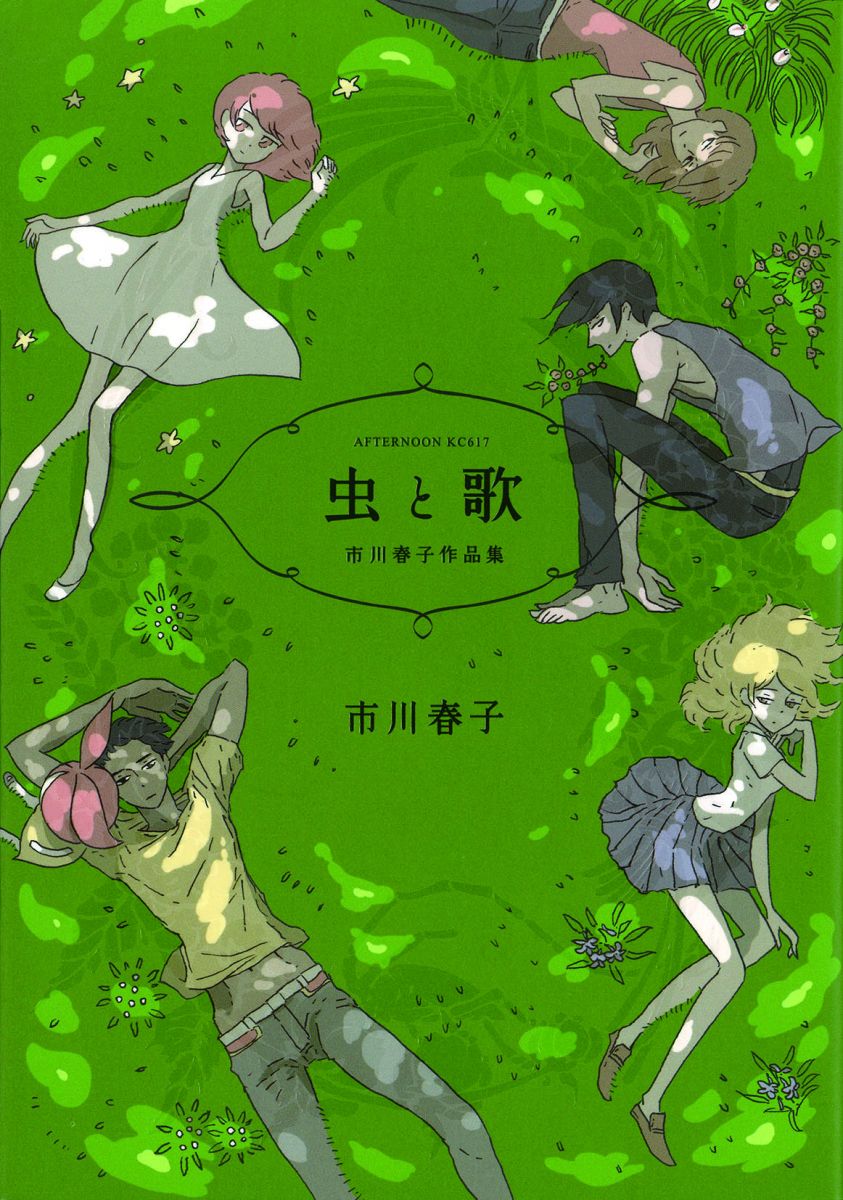
By Haruko Ichikawa | 市川春子
Kodansha | 講談社
1 volume, Complete
Mysterious, beautiful and cruel
Four stories of things not human, developed with unique worldviews
"A collection of four short works: The Lover of Stars, a story of affection for a younger sister who was born from the main character's fingers; Violight, a tale of the unexpected separation of two survivors of an airplane accident; The Kusaka Siblings, a story expressing the exchange of thoughts between a high school baseball player who has ruined his shoulder and Hina, a living creature in a strange form that continues to grow; and Insects and Songs, a story that depicts ties between three siblings and a younger brother, who is an insect that returned to the home of one of the siblings one night. The collection presents personified fantasies depicted by simple illustrations that offer unique worldviews, including fairy-tale-like cruelty. We follow exchanges between people and things that do not take human form, and inquire into what human beings are and what life is. While it is personified manga, some personification is obscure and challenges readers’ comprehension. This, however, has the advantage of taking understanding in other directions. There is always something new no matter how many times you read it. This collection knows no limits. "(Naoko Hosoda)
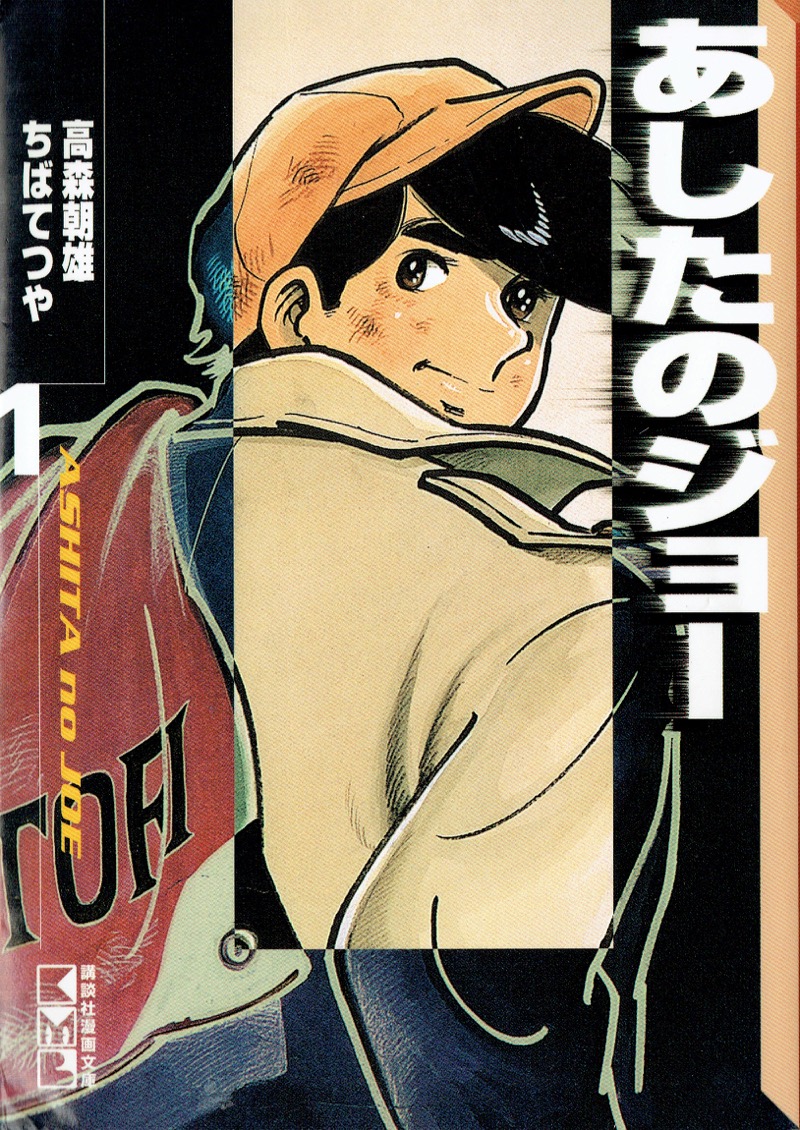
By Tetsuya Chiba, Asaki Takamori | ちばてつや、高森朝雄
Kodansha | 講談社
20 volumes, complete
For young people who live for tomorrow
-- Joe’s efforts and refusal to let his environment defeat him will definitely inspire you
"Joe’s heavy emotional burden from growing up in an unfortunate environment is striking. Yet here we meet people who work hard to overcome their circumstances, which in turn motivates us to do our best. “Tomorrow” repeatedly appears as a keyword. The manga talks about the strong feelings of dreaming about the future, symbolized by “tomorrow.” I hope young people will take strength from Joe and live for tomorrow, just as he does. Above all, the illustrations by Tetsuya Chiba are superb. In particular, Joe’s sad eyes speak volumes, as Joe finds it difficult to talk about and share his sadness. "(Youhei Sadoshima)
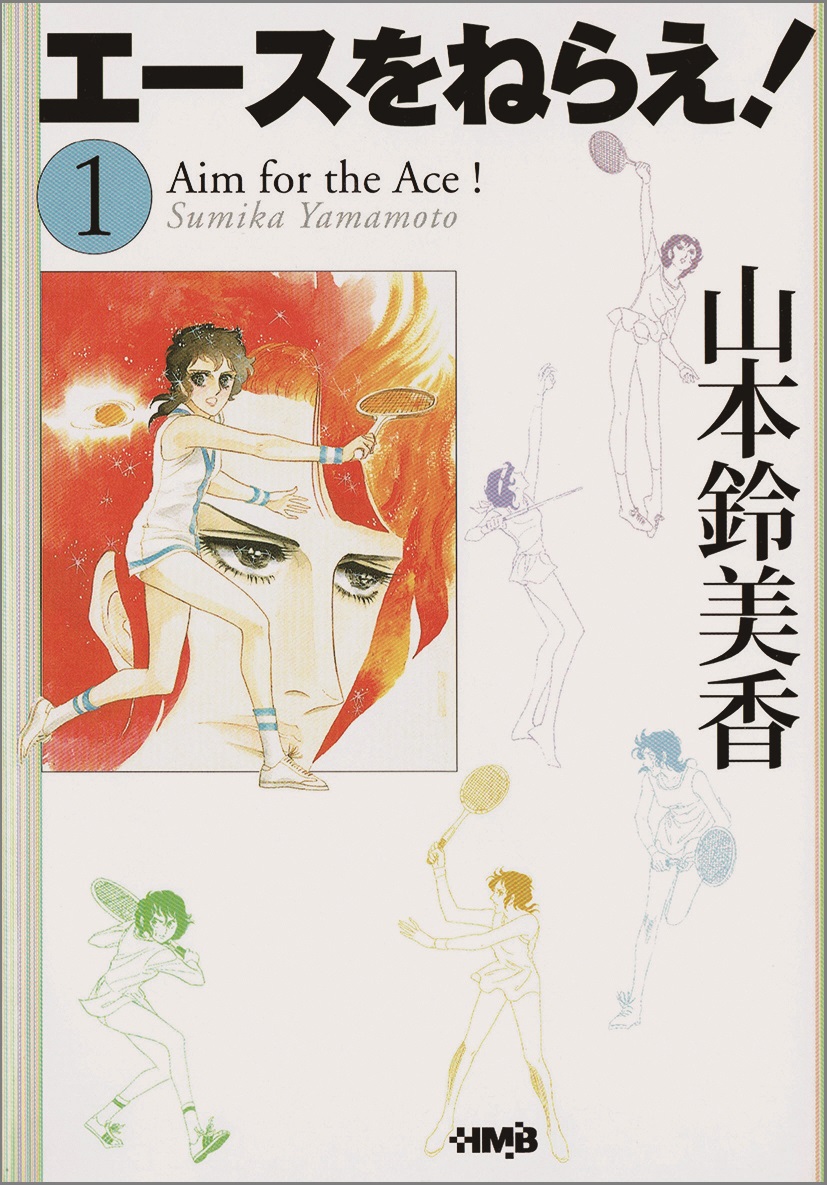
By Sumika Yamamoto | 山本鈴美香
shueisha | 集英社
18 volumes, complete
Tennis is a sport of mental combat
-- Enrich your mind by living as if every second counts and everything is a serious match
"This manga made me realize that tennis is a sport of mental combat rather than a sport of muscles or reflexes. Of course, mentality is probably the ultimate key in other sports as well, and here this fact is brilliantly conveyed. By living life as if everything—including love, tennis, and human relationships—is a serious match, every second counts and enriches your mind. The process is depicted through growth of the heroine, turning the work into a handbook for life."(Machiko Satonaka)
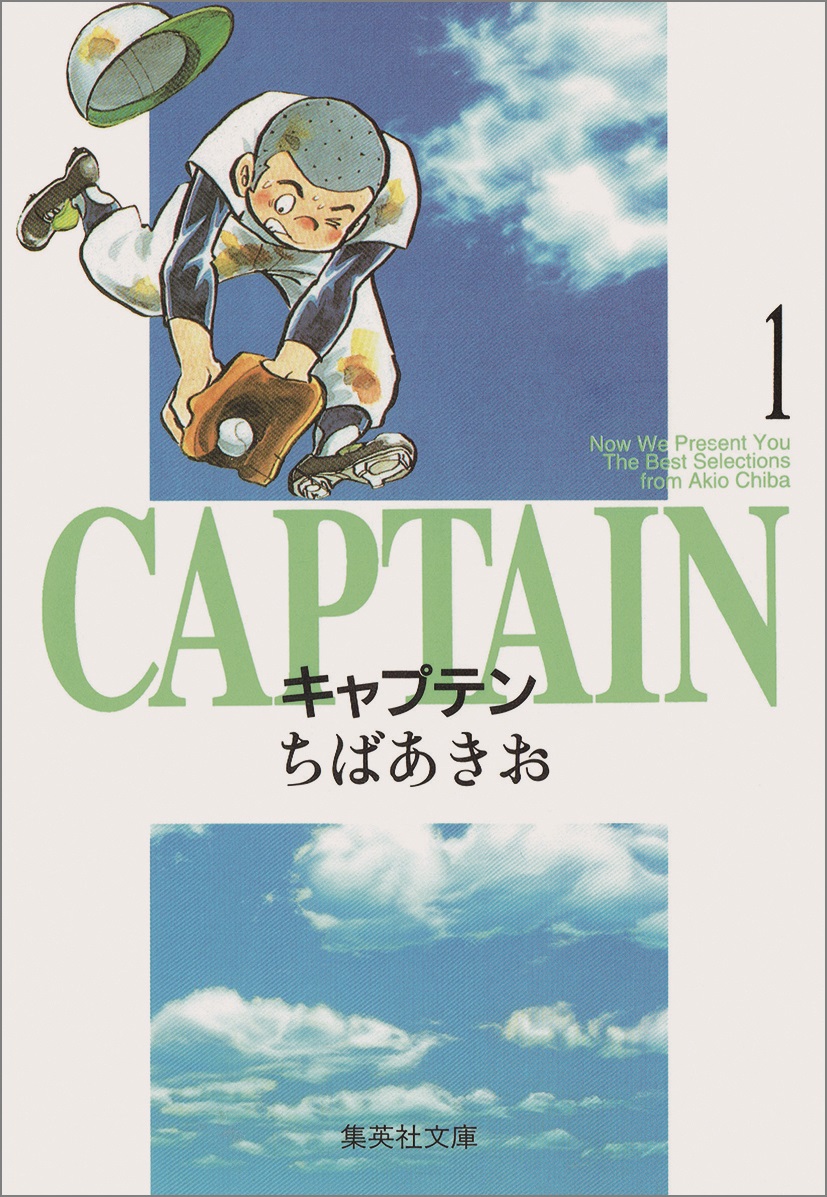
By Akio Chiba | ちばあきお
Shueisha | 集英社
15 volumes, complete
A warm and benign cheer for life
-- The position of a captain—not an individual person--is the main role
"The main character is a captain, not in the sense of an individual, but rather as embodiment of the position. While doing his best and overworking to fulfill his duties, awareness of his position gradually dawns. Despite taking the form of a sports comic, this is indeed a manga about life itself. The irreplaceable times in life run matter-of-factly through scenes and in each action. The scenes, which have no harsh tone, quietly evoke sympathy. It is a warm and benign cheer for life."(Machiko Satonaka)
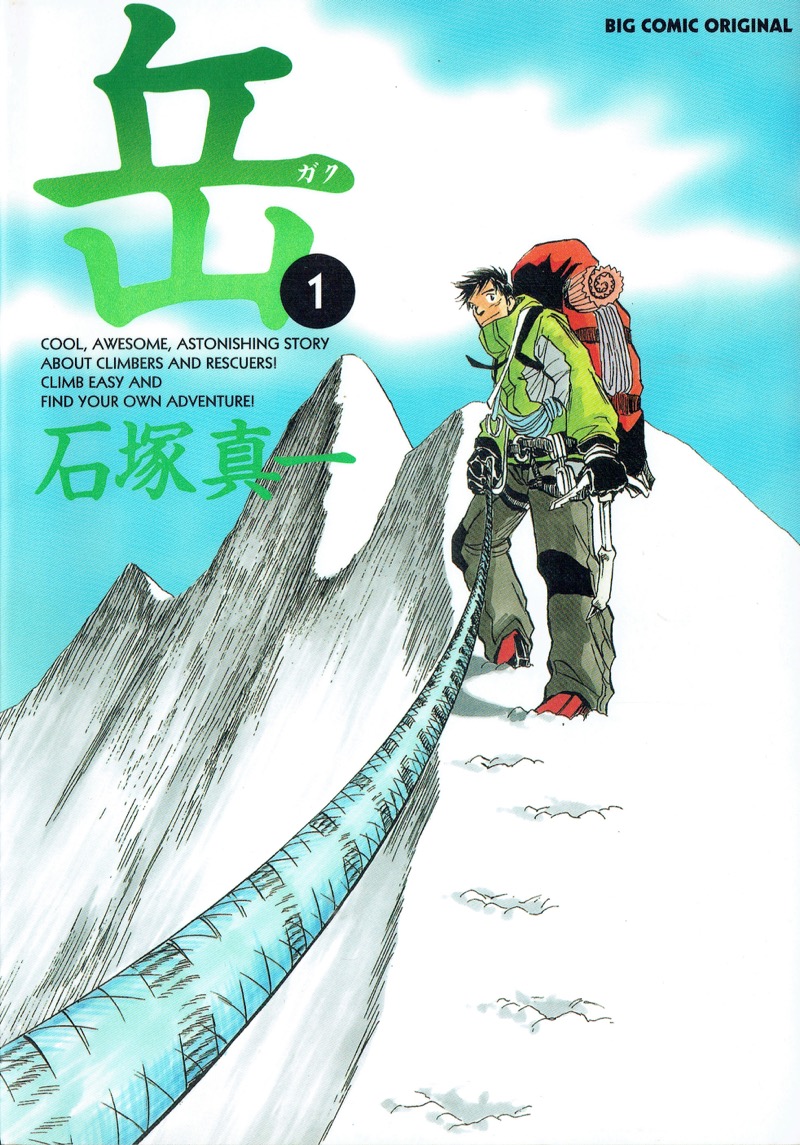
By Shinichi Ishizuka | 石塚真一
Shogakukan | 小学館
18 volumes, complete
For those who still do not know about mountains
-- What you find out by facing nature may be who you are
"Here we get a close look at the appeal of climbing and of mountains themselves, including faithful descriptions of the awe they inspire. After reading this, you are well advised to contemplate the fundamental question: How should humans interact with nature? The mountain rescue portrayed in the work puts you face-to-face with life and death, letting you somehow understand, even if you do not actively climb mountains, why people put themselves in extreme conditions where they continue to question themselves, and why people become interested in climbing. This is the appeal of the manga. "(Yasuhiro Yamauchi)
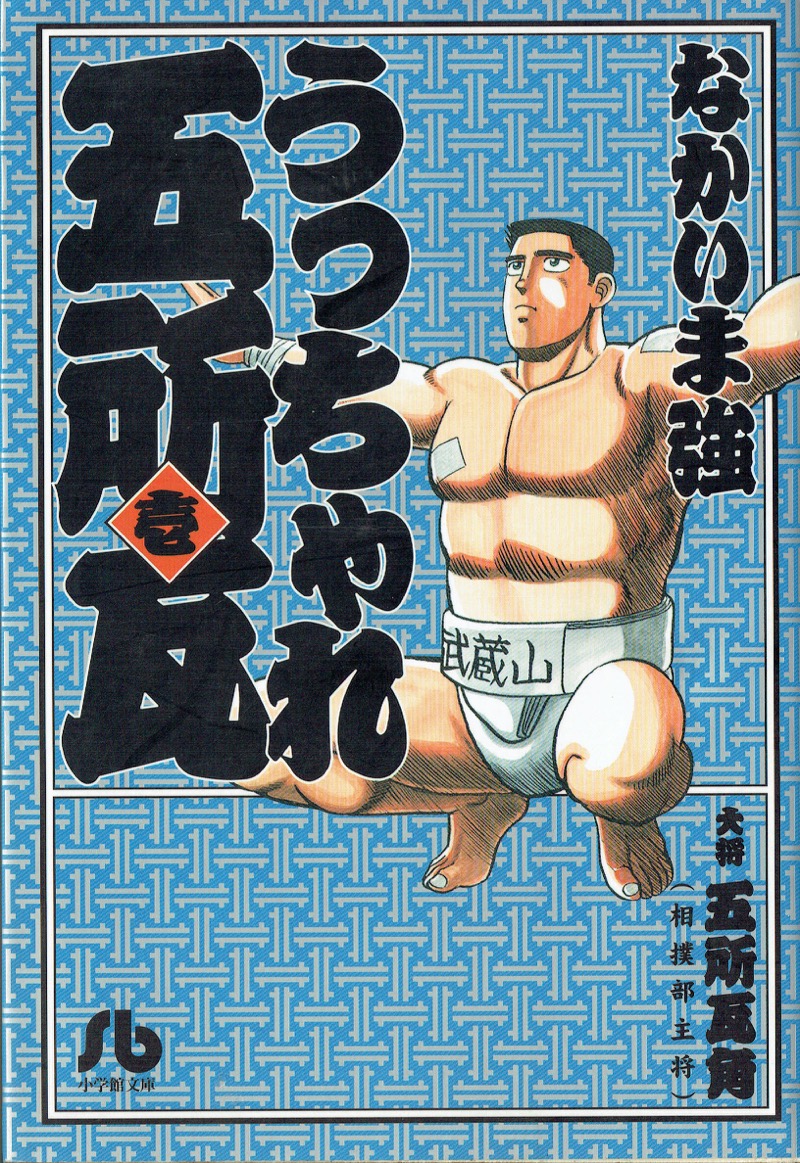
By Tsuyoshi Nakaima | なかいま強
Shogakukan | 小学館
12 volumes, complete
Fulfillment from maximizing yourself and others
-- The drama of individuals and teamwork in a sumo club at an interscholastic athletic meet
"Smoothly enter a “proper world for boys” even without knowledge of sumo. While sumo is originally an individual skill, this work depicts the drama of teamwork at an interscholastic athletic meet. Tactics for team competition as well as each wrestler’s ability and eagerness to exploit strategies are related to maximizing individual capabilities in society. I want kids to gain fulfillment from exploiting their and others’ strengths."(Machiko Satonaka)
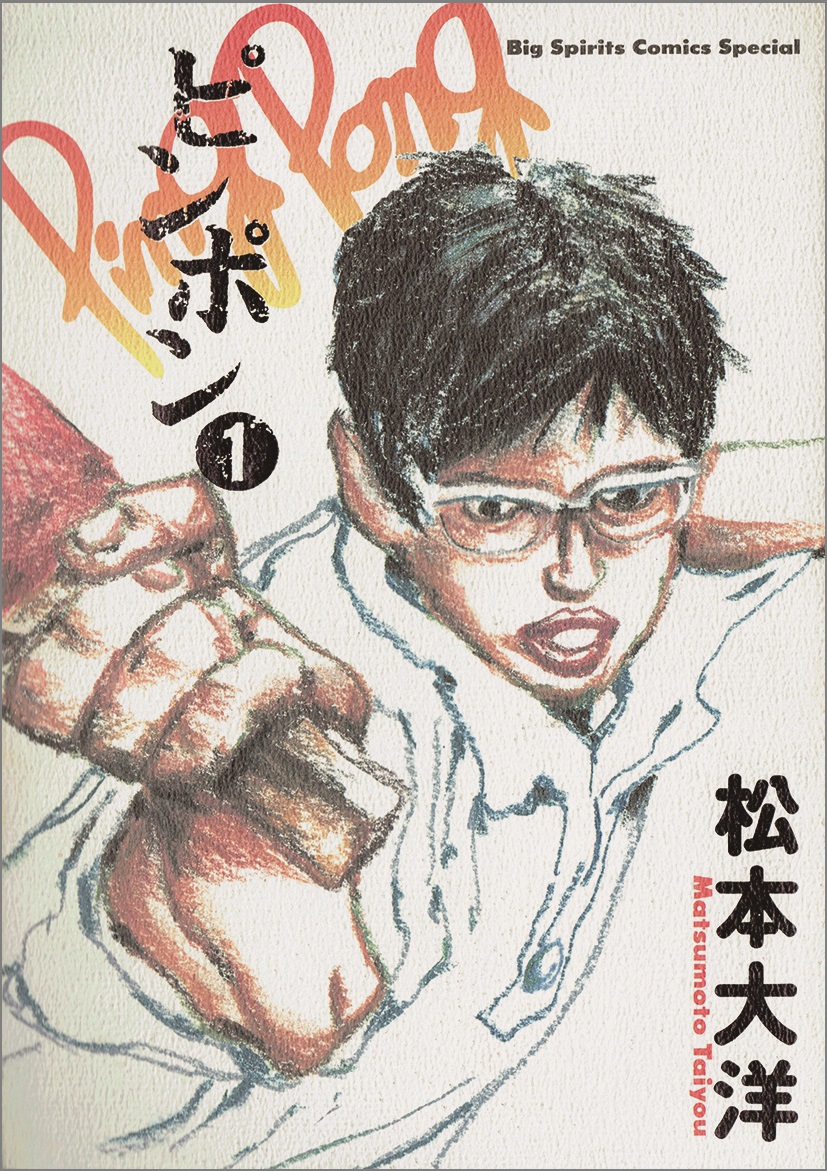
By Taiyou Matsumoto | 松本大洋
Shogakukan | 小学館
5 volumes, complete
Is talent what you need? Or effort?
-A youth friendship story you want to read while in your teens
"The big theme here is how to come to grips with talent. The story revolves around Peko and Smile, who are table tennis players. Peko is a prodigy who can do anything immediately. But he is going nowhere and makes no effort. Eventually, the slacker genius loses a battle against a person who keeps plugging away. Smile, who aspires to be like our prodigy Peko, unconsciously cuts corners in a match with Peko, as a result of hoping to see him play seriously and show his real ability. Many people probably are troubled by their talent and efforts to compensate. Concerns are not simple; others may be baffled by your thinking, or people cannot admit how things really are and don’t connect, just like Peko and Smile. It is a struggle that everyone goes through. This is highly recommended for people to read while still in their teenage years. "(Yasuhiro Yamauchi)

By Yuki Otake | 大武ユキ
Shogakukan | 小学館
11 volumes, ongoing
Is your exercise effort misguided?
- To win, it takes the body core instead of muscles. A suggestion for the soccer world of Japan
"Many soccer manga depict the effort involved in winning matches and show that hard work is rewarded. This ground-breaking manga offers an opportunity to think about the fundamental question of whether such effort is misguided. Not only soccer but for all sports, developing your body through daily exercise is important. But when you read this manga, you will understand the reason why, with some sports, you cannot win in world-class competition unless you strengthen the body core and inner muscles, instead of aiming to build up strong muscles by focusing on weight training. When you watch a soccer match from the viewpoint of body development, you might be able to see approaches that would help Japan to win at soccer in the world. Of course, this offers tips to improve skills for those who play soccer."(Yasuhiro Yamauchi)

By Masahiko Inoue | 井上雄彦
Shueisha | 集英社
14 volumes, ongoing
The appeal of wheelchair basketball, an advanced sport
-- Aiming to win by confronting disabilities is absolutely cool
"All Japanese under the age of 40 probably know Slam Dunk. It created a big basketball boom at schools of my generation, too. This is another work by the author of Slam Dunk, Takehiko Inoue, depicting the world of wheelchair basketball. Wheelchairs? Disabled people? A public welfare manga? If this is your reaction, you will have your stereotypes turned completely upside down by this manga. Wheelchair basketball is an advanced sport combining basketball and an amazing machine called a wheelchair. The manga brings this realization by means of gripping illustrations. It is absolutely cool, as people try to prevail in sports and confront the reality of disability. You wonder if their struggles may be the same journey for everyone, regardless of whether having a disability or some other condition. Indeed, the manga takes you into the real world. The Tokyo Paralympic Games will be held in 2020, and wheelchair basketball is included in competition. Here we have an opportunity to learn about a new area of sports for the disabled and an appealing sport in its own right. This knowledge can guide us to a more profound and richer world."(Katsuhiro Motoyama)

By Ai Kozaki | こざき亜衣
Shogakukan | 小学館
25 volumes, ongoing
Growing step by step
-- A youth group story of the fighting spirit in sports, featuring growth of a high school girl who throws herself into the naginata halberd
"A youth group story filled with the fighting spirit of sports. It features the growth of a high school girl as she throws herself into a minor martial art, the naginata halberd. The girl belonged to the art club in junior high school. She is short, wears glasses, and is poor at athletics. Seemingly below average, the main character decides to recreate herself when she enters high school. Everyone she meets at the club is stronger than her. The girl faces a tough situation, does training runs, cries, and gradually changes. She falls in love with the naginata, develops an independent mindset, and becomes stronger. Ever so gradually, she grows, step by step. All characters are energetic, including: a strong senior member, whom the main character aspires to be like; a belligerent girl, who used to do kendo; and a tall classmate, who came over from the volleyball club. Then there is the instructor nun, the beautiful manager, aggressive rivals at other schools—it is a deep space of women. While there are some men, such as the club advisor and classmates, their presence is weak. Everyone--including those who are annoying or delicate as well as those with extensive experience or the gift of talent--has weaknesses and worries, and expressions behind the masks reveal a youthful and profound human drama. It has been five years since the series started, and these girls are still growing today. "(Ichiya Nakamura)
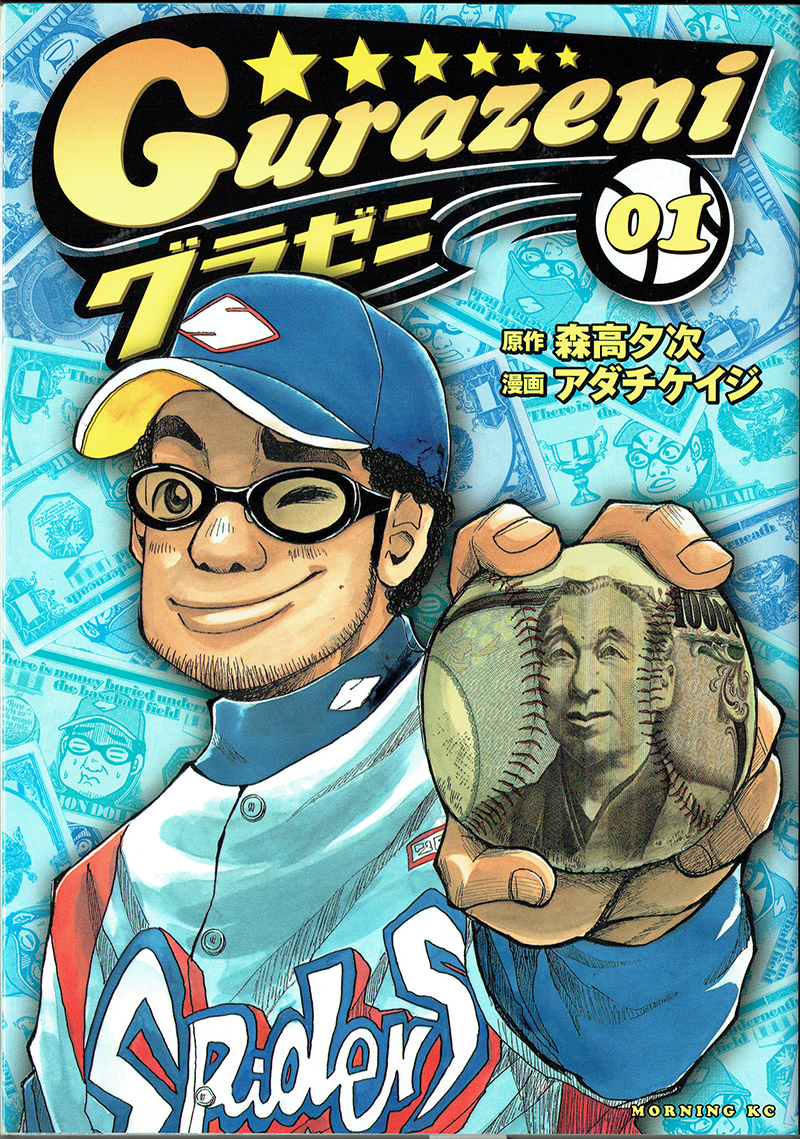
By Keiji Adachi, Yuji Moritaka | アダチケイジ(漫画),森高夕次(原作)
Kodansha | 講談社
17 volumes, complete
Professional baseball from the viewpoint of money
-- Realistic negotiations on salary from the point of view of a relief pitcher
"While there are a number of manga on baseball, a work that focuses so deeply on money is unusual. The main character, Natsunosuke Bonda, is a relief pitcher on a professional baseball team. This manga takes an unconventional approach in many areas, such as the main character having a position that is out of the spotlight and his quiet appearance with black-frame glasses. Yet these factors serve to highlight the realistic salary negotiations, not the play action. Aside from money-related episodes on renewal of professional baseball players' contracts according to a results-based system, trading players, and the Major League’s terms of agreement, this manga provides an overview of the career design of professional baseball players as it introduces joint tryout for 12 teams and second careers after retirement. Whether to interpret this as professional baseball players following their dreams or players facing a tough reality is up to readers."(Naoko Hosoda)

By Tsujitomo, Masaya Tsunamoto | ツジトモ(画),綱本将也(原案)
Kodansha | 講談社
46 volumes, ongoing
What if you were manager?
-- A soccer manga that looks at the sport from the viewpoints of team manager and club operation
"This soccer manga takes the viewpoints of team manager and club operation instead of looking at the sport from the perspective of players. While watching matches, soccer fans probably have been excited to imagine what tactics they would use if they were the manager. This manga’s major appeal is its extremely realistic depiction of strategy while maintaining the excitement. By knowing what is happening behind the curtain as if one of the people involved, you get to experience thrills you never had when simply following matches. You can also learn how to create a team. Scenes of fighting between players and the offhand, realistic lines of characters in casual exchanges add spice. The process of members building deep mutual trust from a state of total fragmentation is carefully replicated, and that is also noteworthy."(Youhei Sadoshima)
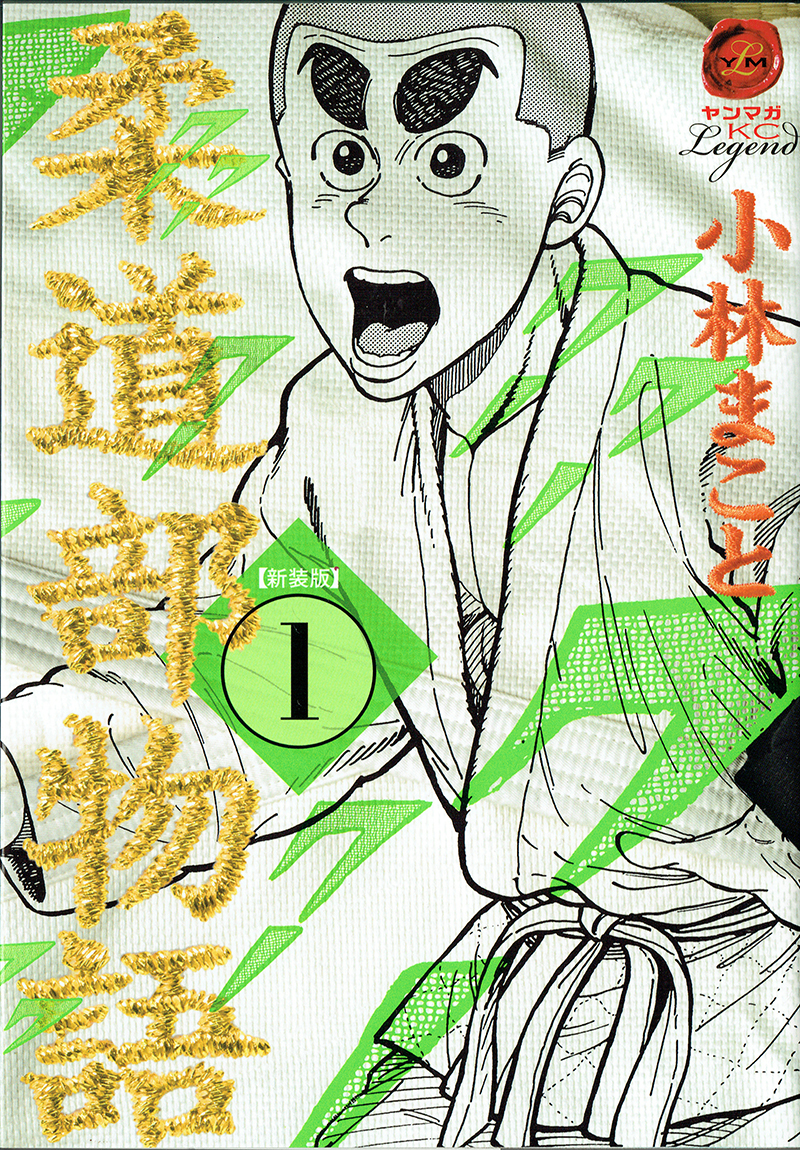
By Makoto Kobayashi | 小林まこと
Kodansha | 講談社
11 volumes, complete
Bringing back memories of school club activities
-- Laziness and immature single-mindedness. A youth story of a high school judo club
"As the title indicates, this manga is set at a high school judo club. It is an excellent work that fully captures the atmosphere of school club activities. For those who have experienced school clubs, there are many points of sympathy. It would be fun to read this while imagining replacement of characters with actual senior members you had in your club. Not only does it illustrate the cool component common in sports manga, this work also features lazy exchanges between senior and junior members, which are its real appeal. On the other hand, it depicts how students single-mindedly throw themselves into judo, as well as the immature and enthusiastic thoughts unique to high school students. Laughter sets the overall mood, and is probably due to the exquisite timing of taking pauses. Instead of dismissing conversations unrelated to the story, it is amazing how they are given good rhythm and utilized as triggers for laughs. This manga offers an ambiance where you can enjoy the story while remembering your club days every time you read it. "(Youhei Sadoshima)
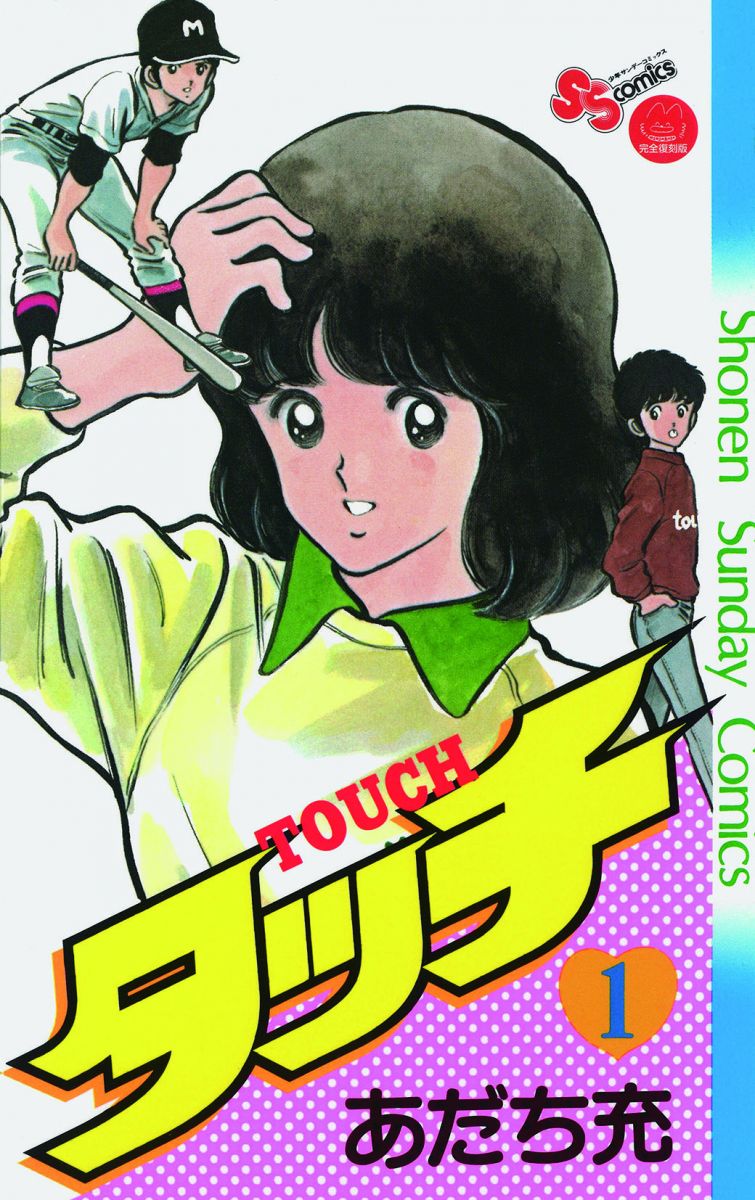
By Mitsuru Adachi | あだち充
Shogakukan | 小学館
26 volumes, Complete
Youth: shining, invigorating and bittersweet
The intersecting thoughts of three childhood friends on Koshien, the national high school baseball championship
"This masterpiece manga for boys was published as a series in Weekly Shonen Sunday from 1981 through 1986 and continues to be read. Tatsuya and Kazuya Uesugi (twin brothers) and Minami Asakura, who were born in the same year in immediately adjacent houses, are all in the third year at Meisei Middle School. Kazuya is an ace of the baseball club and a high performer academically. Tatsuya is a wholesome boy who likes erotic books, does not like to make an effort, and seems to be made of leftovers after his younger brother gets the good stuff. Minami is a beautiful, down-to-earth girl who has won the school beauty pageant three years in row. They are close, calling each other Tatchan, Katchan and Minami, yet Tatsuya and Kazuya have complicated feelings toward Minami. As they enter Meisei High School, Kazuya becomes a pitcher and Minami is the manager of the school's baseball club, and they aim to play at Koshien, the national high school baseball championship. Meisei advances to the final game of the regional preliminary, but then the author depicts Kazuya's death in a traffic accident immediately before the game. Readers watch quietly as 80 pages flow by, starting with Kazuya leaving home, the game starting without him, and finally Tatsuya seeing Kazuya in the mortuary. The dream of Koshien morphs into the story of Tatsuya and Minami, who are left behind. With its depiction of the shining days of youth of three friends, a time never to be revisited, this great manga leaves strong impressions on readers beyond such frameworks as baseball or romantic comedy."(Koichi Yuri)
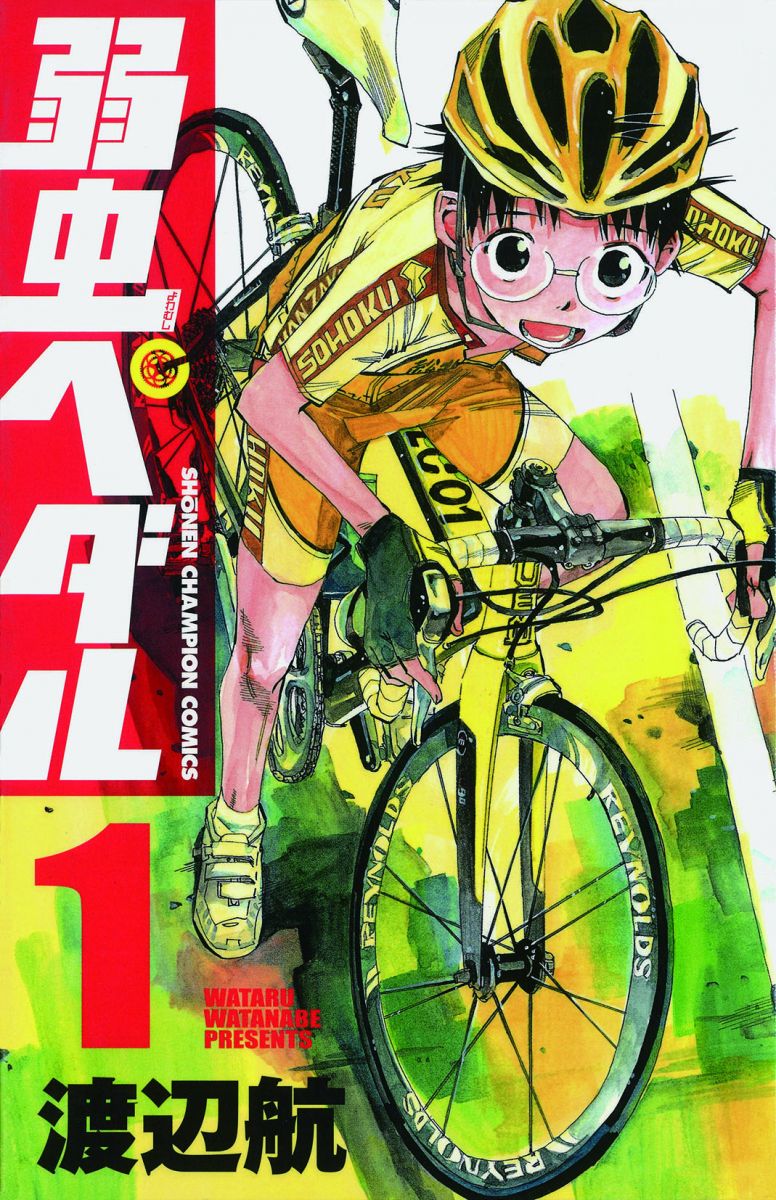
By Wataru Watanabe | 渡辺航
Akita Shoten | 秋田書店
58 volumes, ongoing
Biking is the most familiar sport!
A high school student who commutes to school on a mamachari city bike chooses cycling
"A sport manga staged at a high school cycling club. Main character Sakamichi Onoda enters Chiba Prefectural Sohoku High School, which is located on a low hill. Although he had decided to join the anime club, a dearth of new members put the club on the verge of abolishment. Sakamichi ends up joining the cycling club due to the influence of Imaizumi, who saw Sakamichi dashing uphill on a mamachari city bike, as well as Kanzaki, who found out Sakamichi frequently makes a 90km roundtrip to visit Akihabara, and Naruko, whom Sakamichi met in Akihabara. It’s easy to sympathize with the story of how an ordinary high school student, who likes Akihabara and rides a mamachari to school, learns about cycling and gradually gets hooked. While the cycling race population is still small in Japan, the sport is listed in the Olympic Games, and it is guaranteed that readers will also get hooked on its appeal as they learn more about the rules, types of cyclists and equipment. I know many people who got interested in cycling and became enthralled because of this manga. The attraction and impact of this work are that strong. "(Naoko Hosoda)
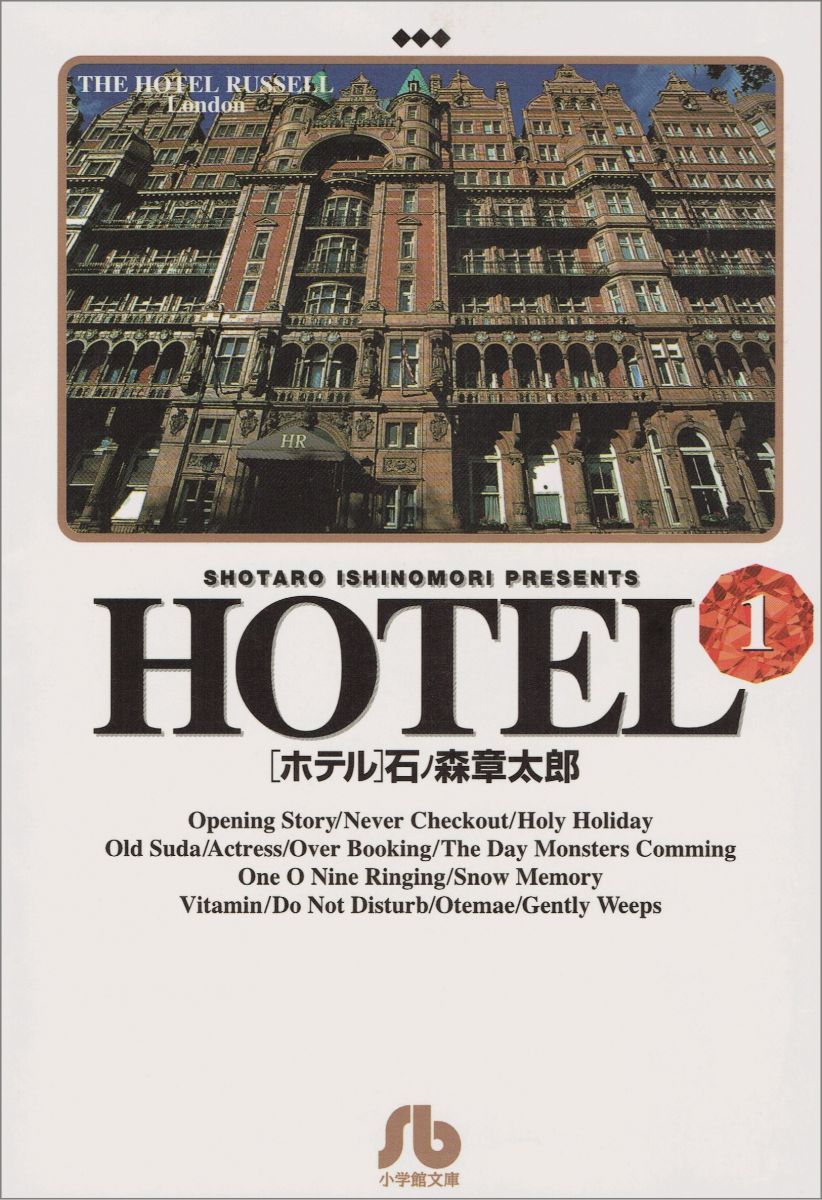
By Shotaro Ishinomori | 石ノ森章太郎
Ishimori Production | 石森プロダクション
25 volumes, complete
Determined to engage with others
-- Through various incidents at a hotel, learn how to see things from others’ point of view
"Shotaro Ishimori’s works cover too broad a range of genres to pick just one to read. Yet despite this, the theme of being determined to engage with other people makes this manga a clear choice. Against the backdrop of a hotel where guests come and go, how incidents are handled from the viewpoint of others provides valuable insights on how to function as a member of society."(Machiko Satonaka)
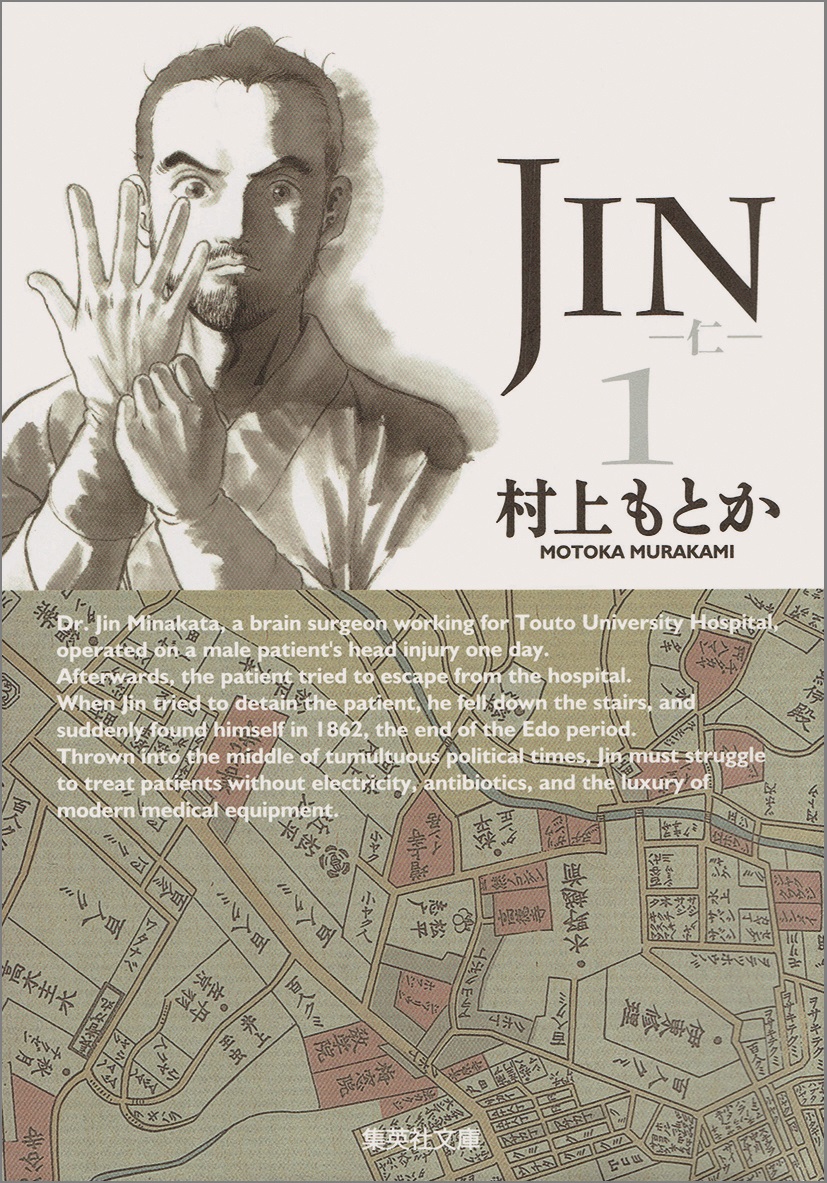
By Motoka Murakami | 村上もとか
Shueisha | 集英社
20 volumes, complete
A lesson on science technology, history and society
- A modern doctor slips back in time to the closed world at the end of the Edo Period
"Death from diseases including cholera was a daily occurrence at the end of the Edo Period. This story of the tireless efforts of a modern doctor slipping back in time to a closed world of antiquated medical knowledge and techniques as well as entrenched evil shows how much medicine has progressed in the past 150 years. Because of the doctor’s advanced techniques, some people support him and others interfere. Reformers like Sakamoto Ryoma as well as powerful people such as Katsu Kaishu and Tokugawa Yoshinobu get involved. When something new appears, there are supporters and those who throw up roadblocks, the same as in the current time. This is a science technology book as well as a lesson on history and society. It is also interesting to imagine such things as, if I slipped back in time 150 years, what knowledge I could offer or what I could do for society back then."(Ichiya Nakamura)

By Akira Oze | 尾瀬あきら
Kodansha | 講談社
12 volumes, complete
Sake, from 1 to 100
-- Deepen your understanding of the industry, including production method, sector structure, ingredients, and marketing
"Learn all about sake and deepen your understanding of various issues in the industry, not only production method but also sector structure, desirable producer organizations, ingredients, and marketing. In particular, this manga focuses on issues in traditional industry, yet offers new insights when read today (2015). The author strongly desires to pass down Japan’s superb traditions to future generations. Taking over the family business is another major theme of the work. For those even vaguely thinking about doing so, here is a chance to contemplate whether or not you want to become the successor or maintain the tradition, as well as how to bring innovation to the business."(Yasuhiro Yamauchi)
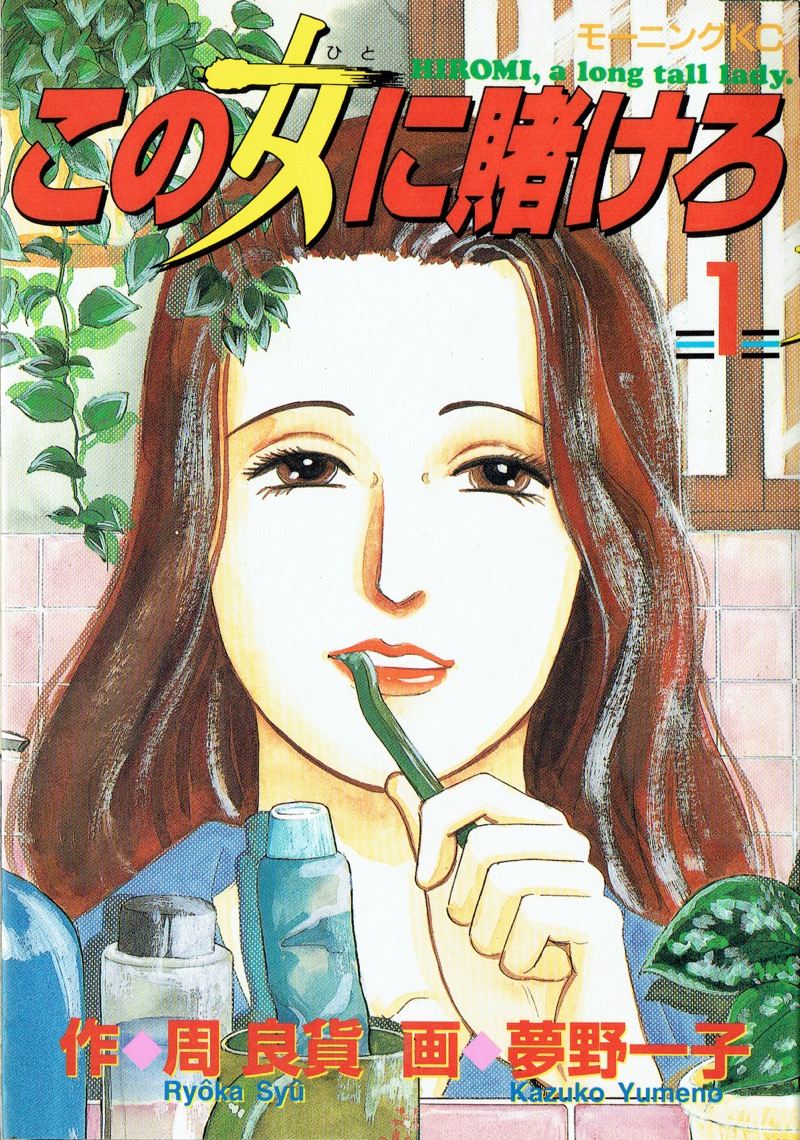
By Ryoka Syu, Kazuko Yumeno | 周良貨、夢野一子
Kodansha | 講談社
15 volumes, complete
Do you know the work of bankers?
- An thrilling account of the system and reality of banking
"Many people probably saw Hanzawa Naoki, a TV drama. Just as Hanzawa Naoki did, this manga deals with banks. Do you have any idea what a bank does? Of course, you might have deposited or withdrawn money, and have heard the expression “home loan.” These all have to do with relationships between households and banks. But the major work of banks is lending money to companies to facilitate smooth business operations. This main character is a female employee who handles the core work of banking (on a big enough scale to be called a banker), and the manga offers a thrilling account of the system and reality of the job. By reading this, you will learn what a bank is supposed to do. In the future, I hope some readers may choose to be a true banker. "(Yukari Fujimoto)
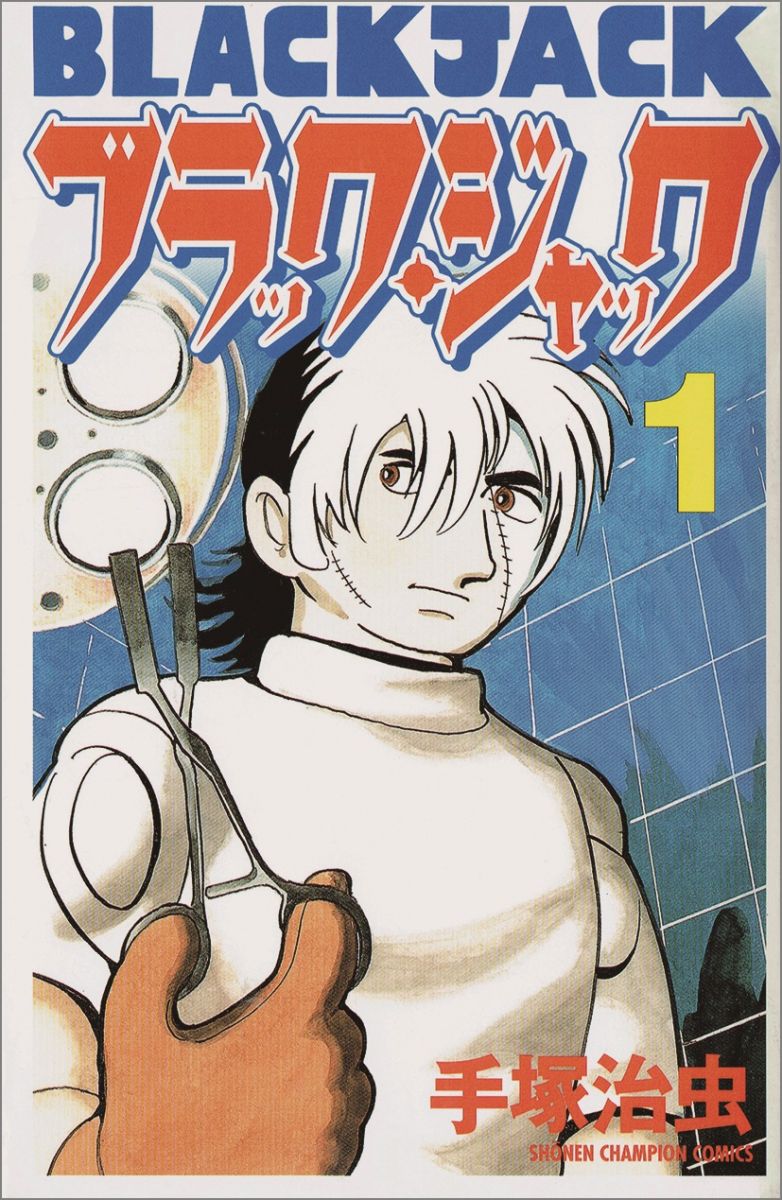
By Osamu Tezuka | 手塚治虫
Akita Shoten | 秋田書店
17 volumes, complete
The anguish of doctors and their philosophy of life
-- Questioning the right and wrong of medicine deciding whether living creatures live or die
"A medical manga where so-called “Black Jack,” an unlicensed yet brilliant surgeon, succeeds in treating intractable diseases and performing difficult surgeries while asking outrageous fees. When the manga was published as a series in the 1970s-1980s at a time the communication network was not as advanced as today, I recall that it was a way to get specialized information on untreatable conditions such as a growth shaped like a human face as well as on surgery, in addition to showing doctors’ thoughts and anguish. It provided deep insights that affected how readers lived their lives. Against the backdrop of Kuroo Hazama (Black Jack) having been near-fatally injured as a child and narrowly surviving due to the efforts of Dr. Jotaro Honma, which lead Hazama to become a doctor, Dr. Honma’s words on his deathbed--“Don’t you think it’s arrogant for people to try to control the life and death of living creatures?”—make you think deeply about life. "(Naoko Hosoda)
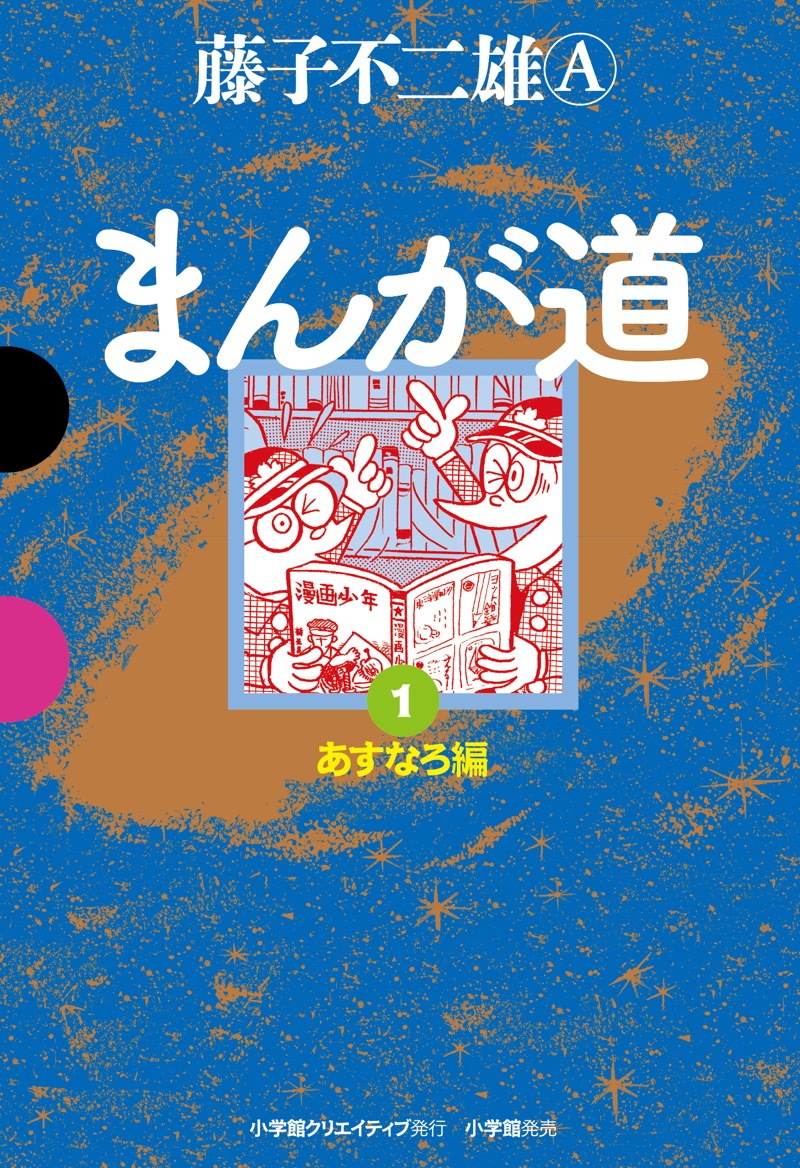
By Fujiko. A. Fujio | 藤子不二雄(A)
Shonen-gahosha | 少年画報社
19 volumes, complete
Story of the predawn of Japanese manga
-- The greatness of Osamu Tezuka, beliefs of Hiroo Terada, and passion of young people at the Tokiwa-so apartment
"This can be seen as an oral history of the predawn of Japanese manga. While it contains fiction by the author, it is in effect a theater that highlights the ambiance of the times. Exposure to the greatness of Osamu Tezuka, beliefs of Hiroo Terada, and the passion of young people at the Tokiwa-so apartment—all well-worth keeping in your heart—will always support not only those who want to become manga artists but all young people who try to build a new world."(Machiko Satonaka)

By Masahito Soda | 曽田正人
Shogakukan | 小学館
11 volumes, complete
Is wanting to do a good job at a fire immoral?
-- Thinking about the importance of life and safety with Daigo, a freshman firefighter
"This work completely covers the cool, life-saving efforts of firefighters. In particular, your heart will go out to Daigo as he rescues many people, and you will find yourself rooting for him. In this wonderful manga we experience the best positive feelings of boys’ manga along with a thorough look at the psychological realities of firefighters. Daigo, troubled by his frustration that “wanting to work hard as a firefighter means wanting a fire to happen,” reaches the point of thinking “being the best firefighter means creating a fireless town where you don’t have to work hard rescuing people.” This is an excellent work that carefully depicts in detail the concerns of firefighters, which is something you will never see in a Hollywood movie of an unprecedented accident and the heroes who come to the rescue."(Youhei Sadoshima)
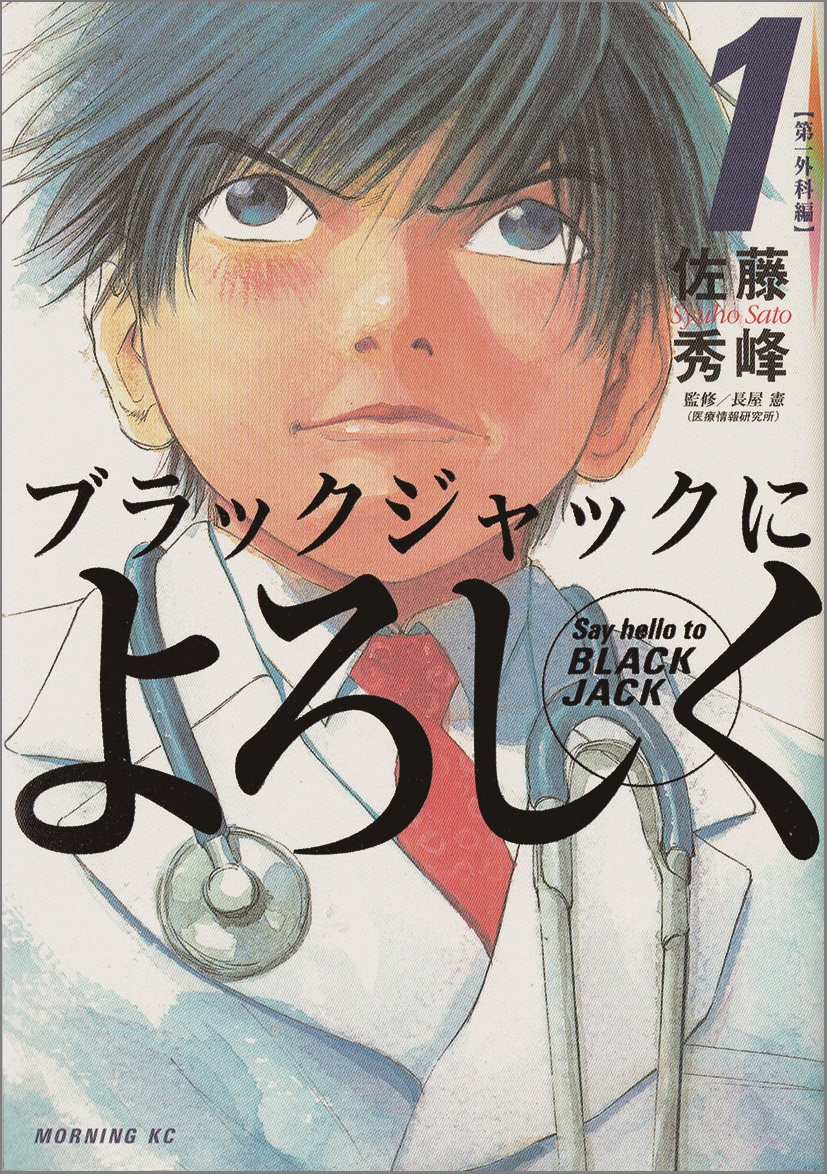
By Shuho Sato | 佐藤秀峰
Kodansha | 講談社
13 volumes, complete
What is medical care? What is life?
-- Frustration of an intern who tackles a world where there are no answers
"For all ages and in all cultures, doctor is one of the most respected and aspirational occupations. While there are a number of manga and dramas using doctors as their theme, only this reveals the overwhelming reality and asks the fundamental questions of what a doctor or medical care is, and ultimately, what is life itself. The main character is a doctor-in-training. While he is eager to be a good doctor, he repeatedly faces the hard truth at medical sites, contradictions in the system, and other negative aspects. He tries desperately to save the lives of patients in front of him, or sympathizes with those who will die no matter what he does. Looking into the minds of people abandoned by society, he talks with them. Through frustration of the main character, who tackles a world without answers to the question of life and death, the manga also seems to question readers: “How would you live, if it were you?” This is the best study manga to learn about the world of medical care. It is also a career manga that questions what it means to work. And finally, it is a book of philosophy that makes you think about human beings themselves. "(Katsuhiro Motoyama)
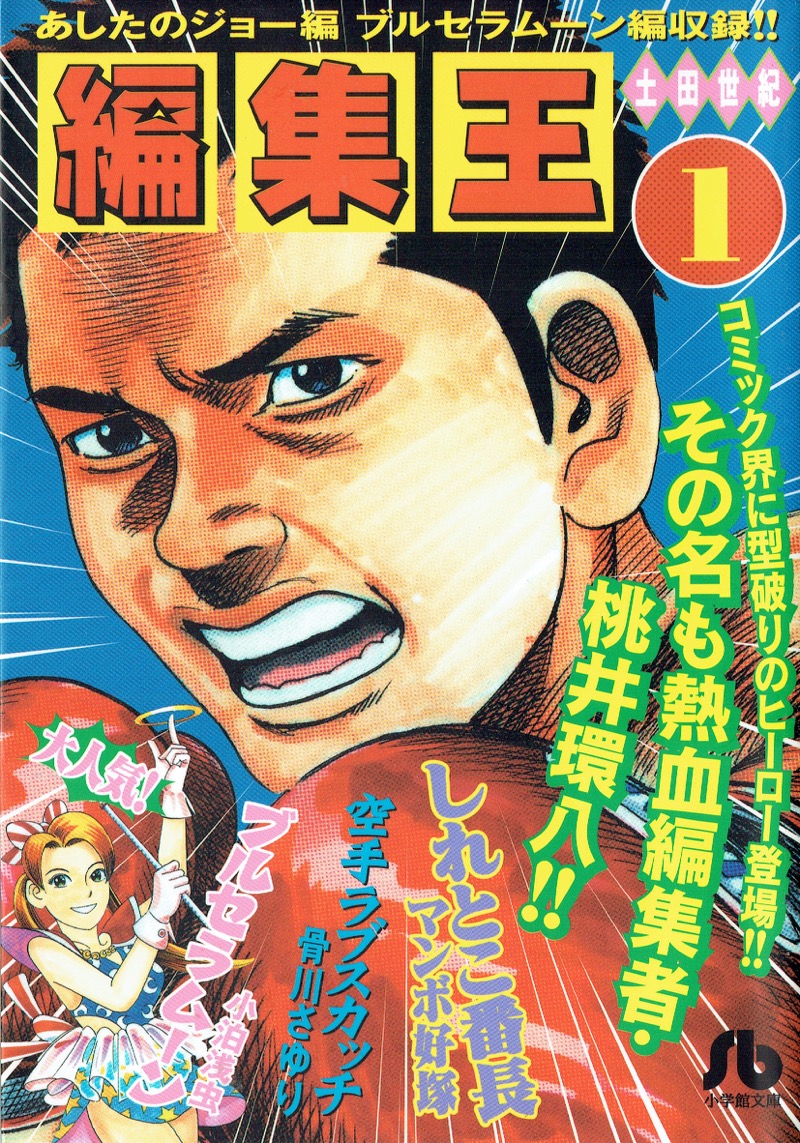
By Seiki Tsuchida | 土田世紀
Shogakukan | 小学館
16 volumes, complete
A professional boxer joins the manga industry
-- A work style that straightforwardly confronts peculiar talents
"Kanpachi Momoi, who had bet everything on his professional boxing career but had to retire due a detached retina, becomes a trainee manga editor upon referral by a senior colleague. Kanpachi encounters a wide range of people at the manga magazine office, including bigots, oddballs, slackers, and those who rise to the occasion when events demand it. In short, everyone Kanpachi would never have met in the boxing world. Manga artists are also a bunch of awkward and unique people. Fumbling, with a single-track mind, Kanpachi butts heads with everyone, and while he sometimes encourages others and sometimes is knocked out, he gradually fills the void in his heart from boxing with the manga world. Young manga artists, big names, has-beens, and people around them, including company employees and manga artists from immature to fully fledged—Kanpachi, while wearing himself out, becomes the person others who are even more exhausted turn to for mental support. "(Takeshi Kikuchi)
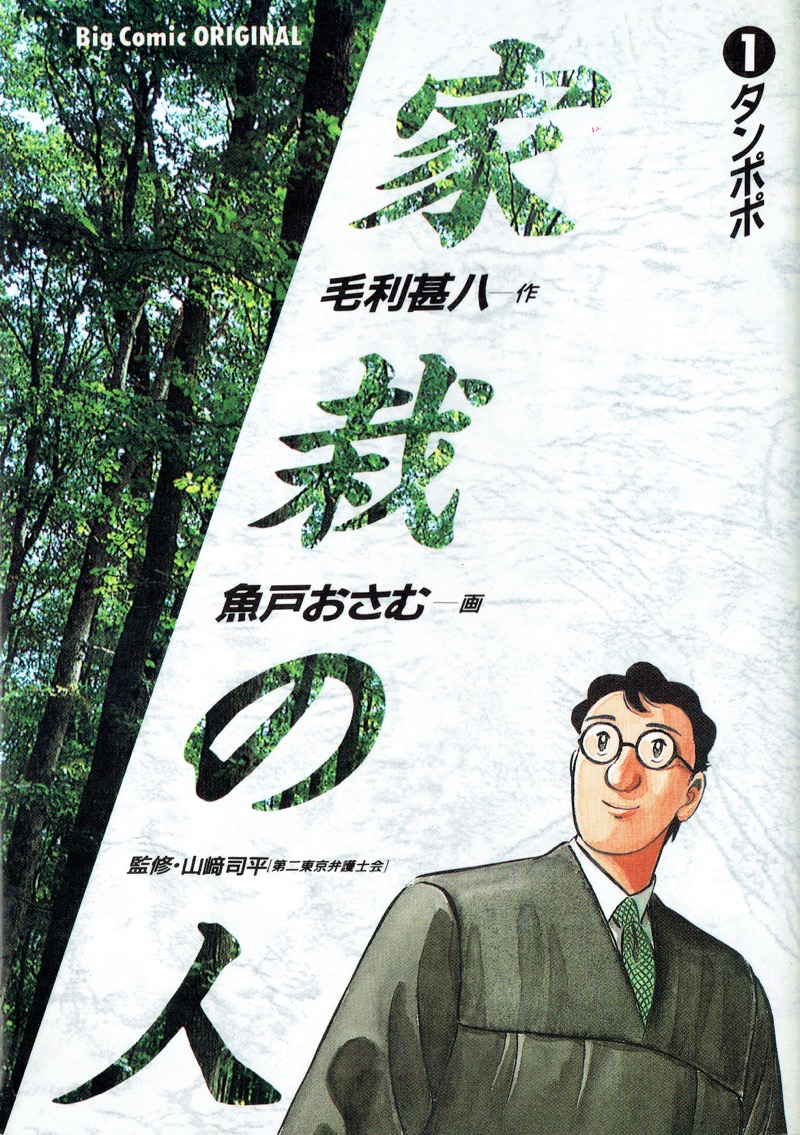
By Jinpachi Mori and Osamu Uoto | 毛利甚八、魚戸おさむ
Shogakukan | 小学館
15 volumes, complete
A low-key, ordinary hero
-- Learn about jobs at family courts and the occupation of judge
"While manga in general features extreme characters, the main character of this manga is very low-key and ordinary. He is also kind. The kindness is exquisite and shows the ideal image of an adult you can aspire to become. This is a good example of people who would never appear in TV dramas and novels vividly showing their brilliance in manga. The work also depicts how people at family courts help individuals, making you realize there are such occupations and those jobs are also appealing."(Youhei Sadoshima)
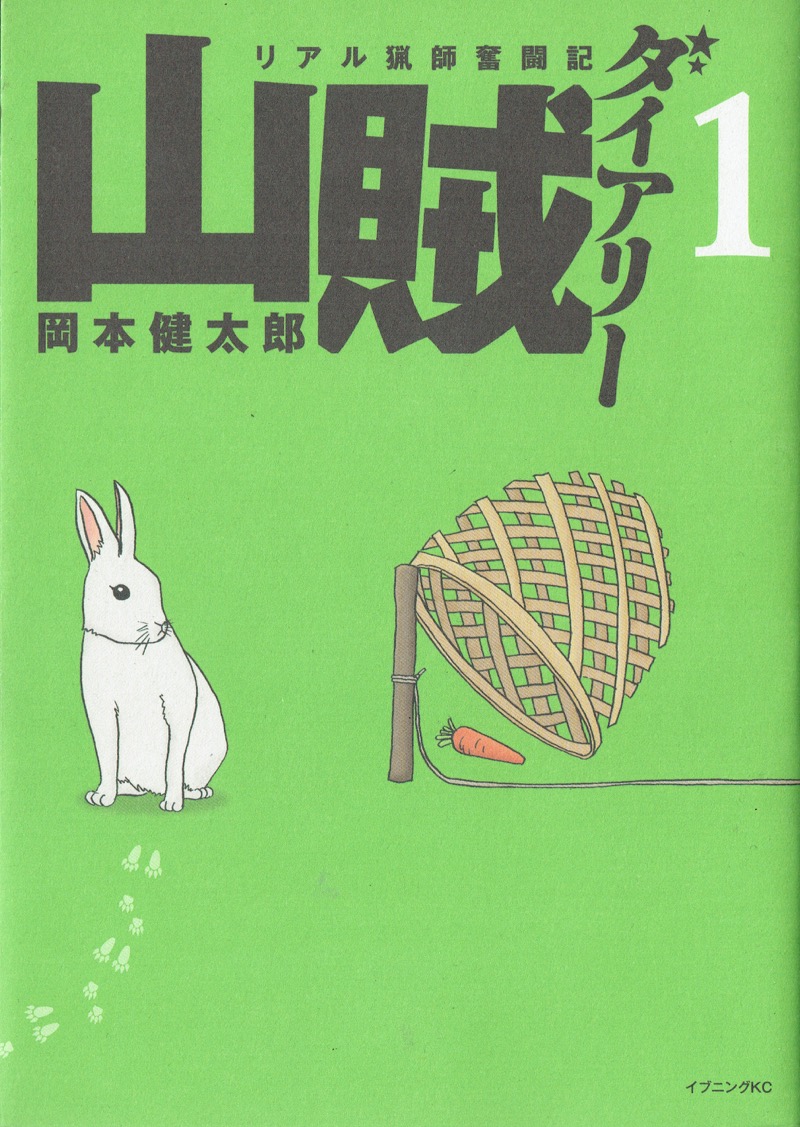
By Kentaro Okamoto | 岡本健太郎
Kodansha | 講談社
7 volumes, complete
The surprising life of a hunter, where even crow gets eaten
-- What does it mean to eat life? Learn the “how-to” of hunting
"A young man, the author, takes up a hunting life one day. This manga is an essay that depicts a life of hunting just as a salaryman works, not as a result of having an epiphany. Instead of loudly advocating that life should be eaten with appreciation and without waste, it illustrates consumption of life as something taken for granted in the daily routine. This is indeed how many people led life and may be a truly down-to-earth lifestyle. The work is full of essential and practical knowledge for a hunting life, such as game tastes better when nailed with one shot and how to cook it. This manga opens the door to a new world by introducing a different lifestyle (possible way to eat or work)."(Tomoko Yamada)

By Shu Okimoto, Tadashi Agi | オキモト・シュウ、亜樹直
Kodansha | 講談社
44 volumes, complete
Reasons for fascination with wine
-- The logical and analytical world of wine, where sensibilities and aesthetics are also at work
"A case in point: In wine making, terroir means the complete environment, including the land, climate and producer, and it determines the taste of wine. The unknowledgeable may think the various terminologies and manners, such as decanting and how a person looks while transferring wine from bottle to decanter, are pretentious, but they do have meanings. The world of wine is very logical and analytical. Yet at the same time, sensibilities and aesthetics have major impact, and this is also part of the appeal. This work’s image visuals to express taste and aroma of wine (a field of flowers expands the moment wine enters a mouth, for example) are unique expressions that capitalize on the nature of manga. It conveys the profound world of wine and its aesthetics, letting you understand why wine aficionados become fascinated."(Tomoko Yamada)
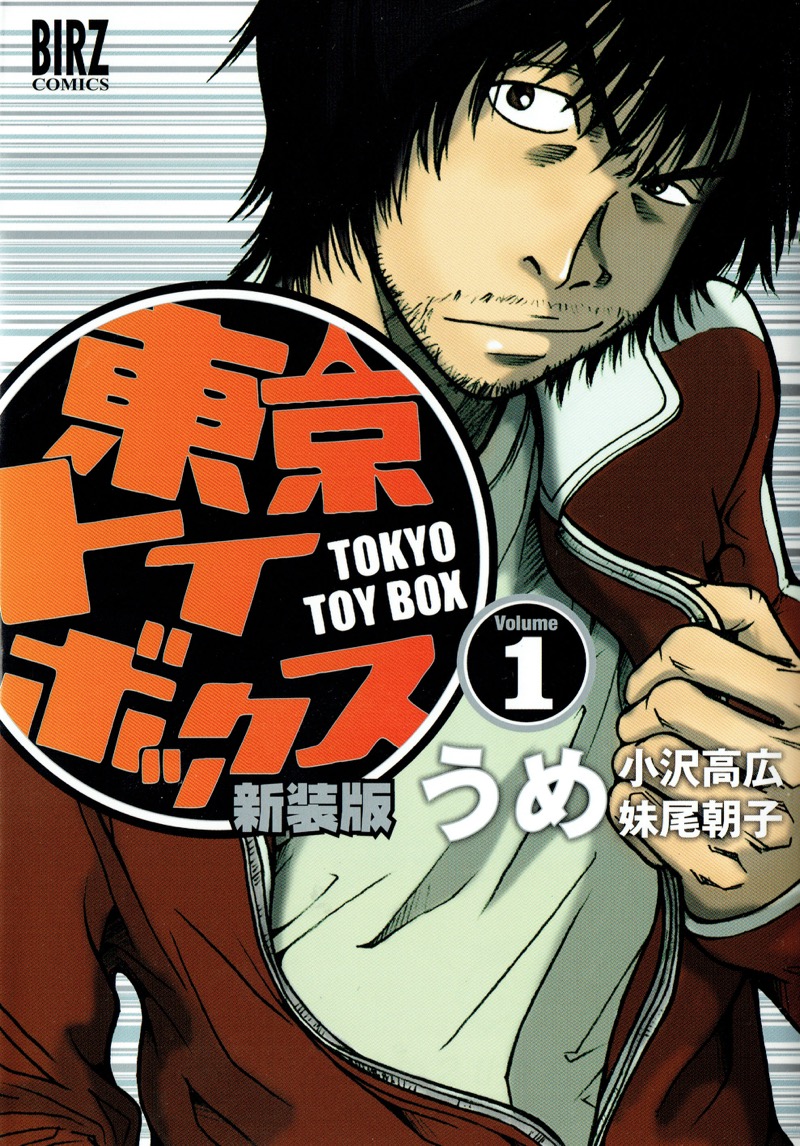
By Ume | うめ
Kodansha | 講談社
2 volumes, complete
The determination to do what you like as a career
-- Illustrates the realities for those who make games and those who sell them
"This manga helps you understand how to balance doing things you like with the rules of society. It realistically illustrates the mindsets of both those who make games and those who sell them in the game industry. Understanding the differences between individual roles adds to the interest, especially thinking about which position you would want or would suit you better. If you read this when specifically thinking about working, such as starting a part-time job or beginning to search for a career, you will really understand the story. It is also a tale of teamwork and building something into which you pour all your thought and effort. You will sympathize with the enjoyment and togetherness of going toward the same goal as a team, as this is something found in everyone’s daily routine, including school life. Here is an opportunity to think about the career that lies ahead."(Yasuhiro Yamauchi)
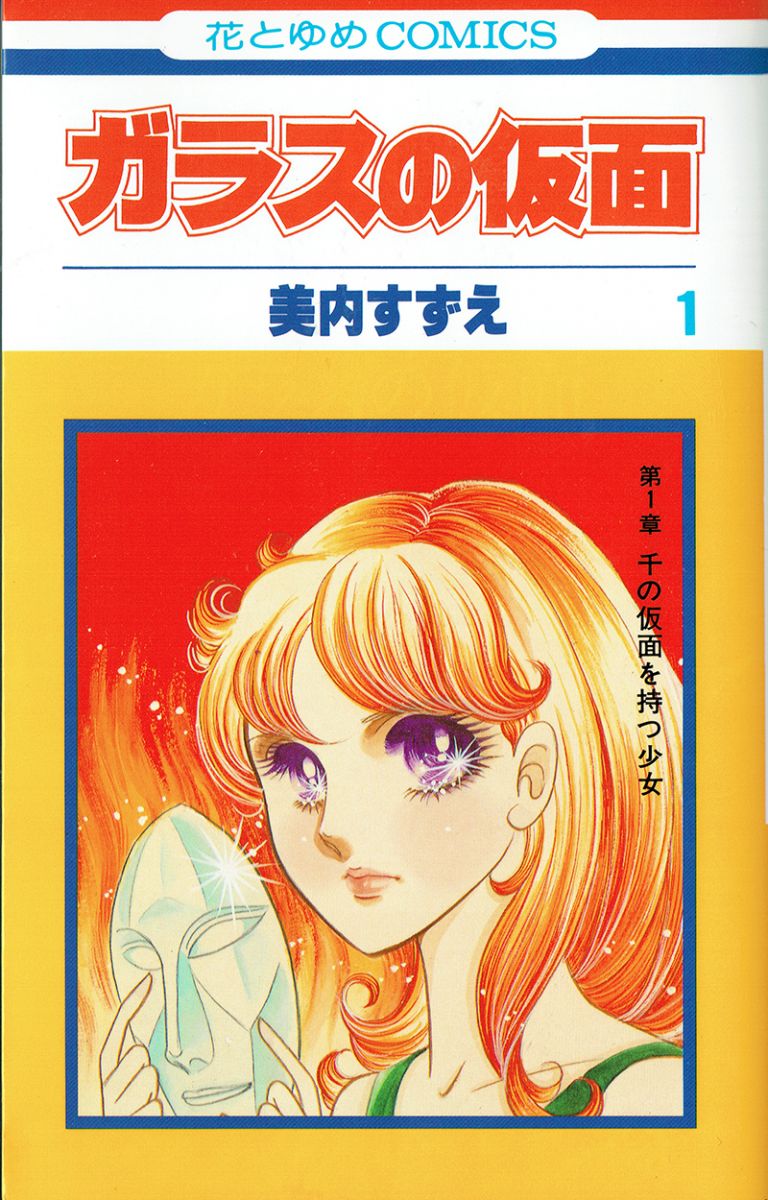
By Suzue Miuchi | 美内すずえ
Hakusensha | 白泉社
49 volumes, ongoing
The joy and difficulty of acting
-- Discovered by a great actress, a prodigy grows as an actress in her own right
"A long-running manga published as a series in Hana to Yume (Hakusensha), a bi-weekly comic magazine, since 1975 (Vol. 1 of 1976). While its theme is acting, the original plan was to feature volleyball. After Comics' Vol. 49 was published in 2012, publication of Vol. 50 was repeatedly postponed, which made fans anxious. The author says the story is 80% of the way toward conclusion, and her idea for the ending was already decided about 20 years ago. This manga illustrates the growth as an actress of Maya Kitajima, a prodigy discovered by Chigusa Tsukikage, who became a star after playing the main role in the stage production Crimson Goddess. This manga has an endless list of epoch-making firsts: depictions of Maya's bloodcurdling performance, as if possessed; distinctive characters, such as Tsukikage and Masumi Hayami (Mr. Purple Rose); and original use of the whites of eyes to express shock. However, the work is also a girls' manga with classic development. It has powerful impact, to the degree of motivating some people to try to become actors, and what seems like centrifugal force to draw in readers and make them crave the following episode. This is a rare work that reveals the mechanism of the acting industry, letting you experience the joy and difficulty of acting through manga. "(Naoko Hosoda)
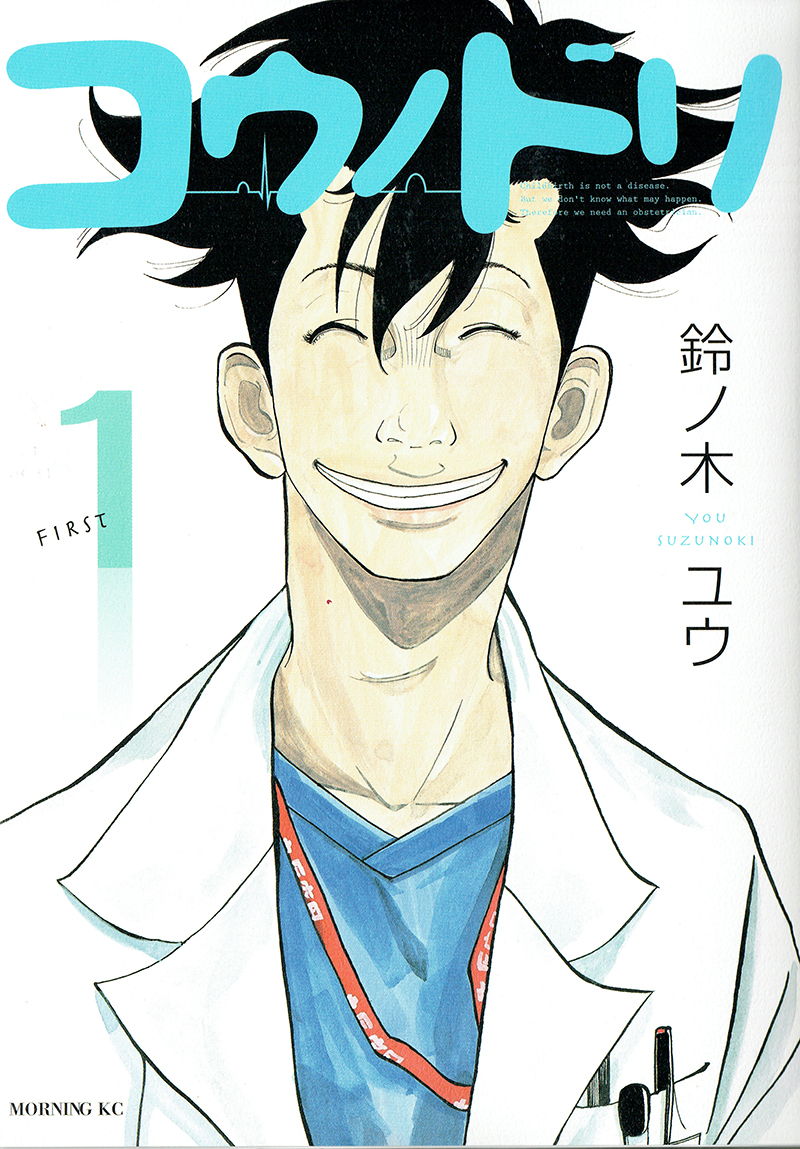
By Yuu Suzuki | 鈴ノ木ユウ
Kodansha | 講談社
21 volumes, ongoing
The way people enter this life
-- An obstetrician, who grew up in a foster home and is also a pianist, faces life
"An obstetrician manga that shows the drama surrounding birth of new life in each episode: for example, the delivery of an expectant mother, who never had a checkup for a reason; and giving birth to a premature baby because of a threatened miscarriage, which carries the risk of a stillborn or disabled baby. Each episode makes you think about the serious issues surrounding each life. The main character, an obstetrician, was separated from his parents and grew up in a foster home. He is also a mysterious pianist. His background makes it possible to ponder the work’s message on a deeper level. While calmly facing birth-related risks, he does everything he can to protect the life of babies and health of mother and child. You cannot read this manga without shedding tears. It forces you to think seriously about the way people enter this life. "(Katsuhiro Motoyama)
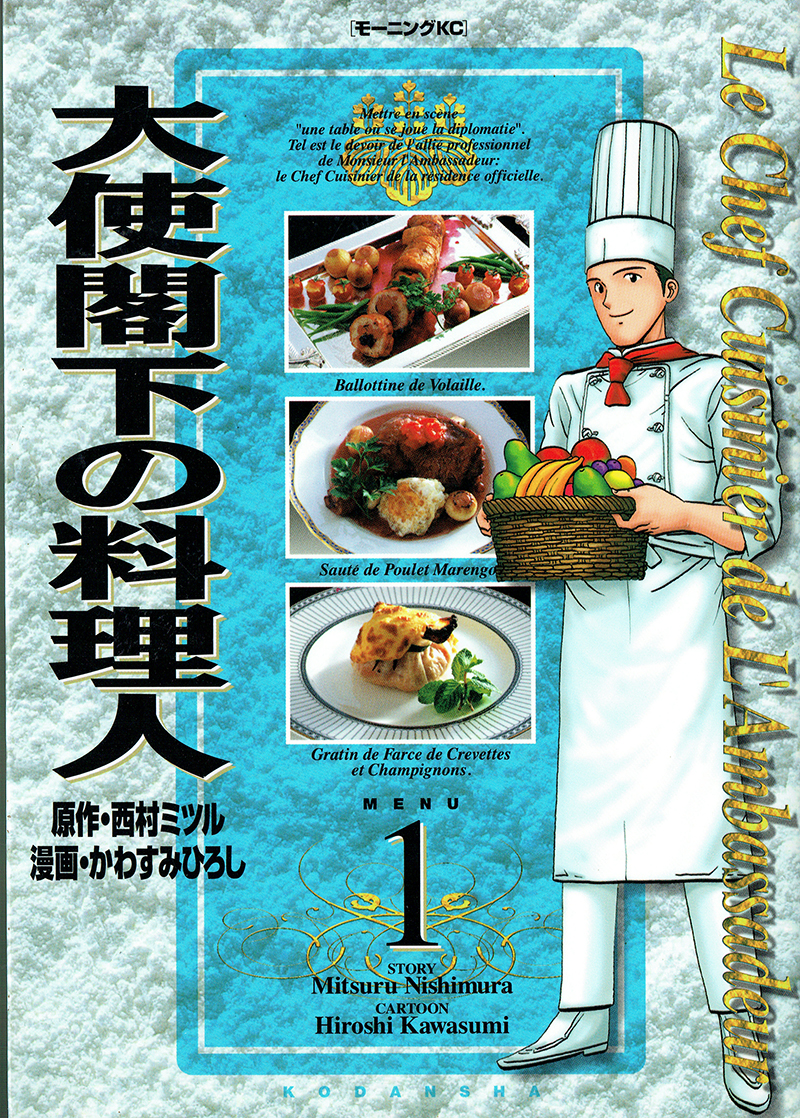
By Hiroshi Kawasumi, Mitsuru Nishimura | かわすみひろし(画),西村ミツル(原作)
Kodansha | 講談社
25 volumes, complete
Seeing politics through food
-- Mental and cultural exchanges through food, by a chef at the official residence of the Vietnamese Embassy
"The food served at the Ise-Shima summit in May 2016 was a popular topic. This manga is very ambitious, as it illustrates international diplomacy through food. The main character is a chef at the official residence of the Vietnamese Embassy. What ingredients to use to make what kind of dishes, when to serve, what is discussed while talking with whom—each of these reflects consideration of counterparts and occasionally hidden true intentions. This manga makes you understand that eating together by itself is culture, and understanding each other’s culture is the key to international politics. It is also useful as a career manga. Those who like to eat or cook will find it exciting to see the finest food taking advantage of local ingredients. People interested in working as diplomats would come to understand their actual jobs. It is also the best work to learn about the history and culture of Vietnam, which has a deep relationship with Japan, as seen through the eyes of the author, who himself once worked as a chef at the Vietnamese Embassy’s official residence."(Yasuhiro Yamauchi)
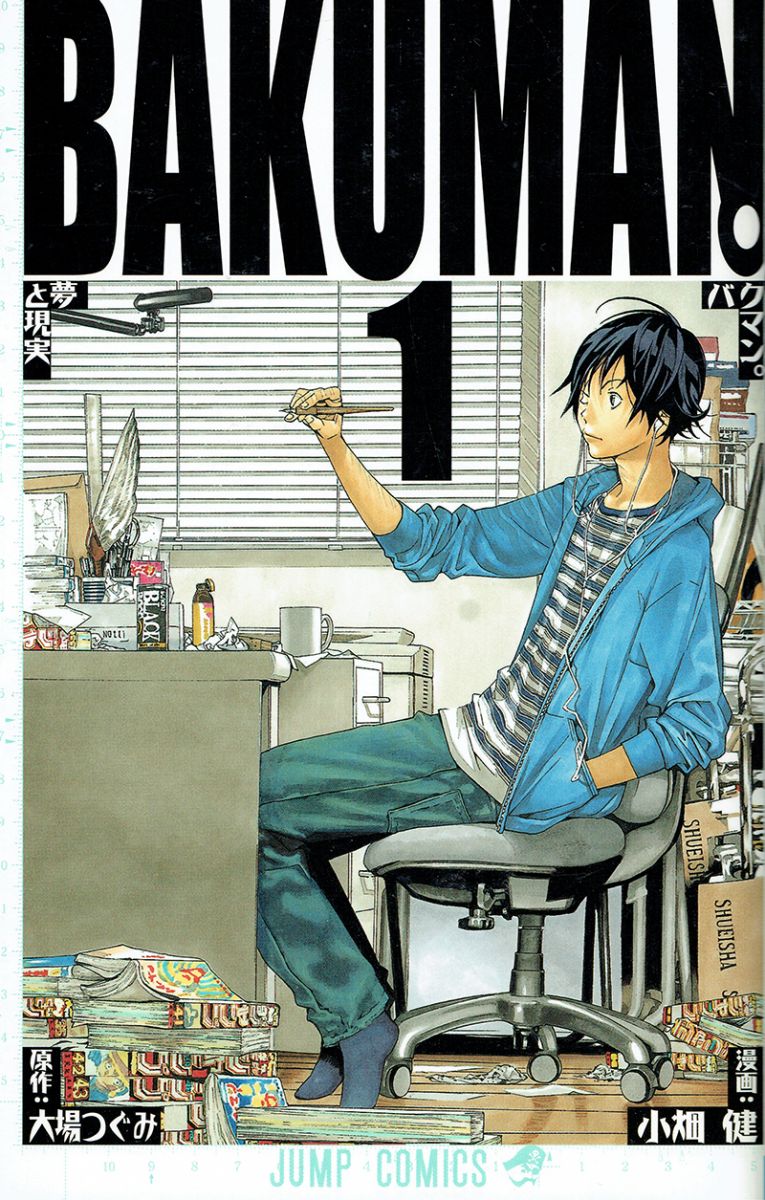
By Takeshi Obata, Tsugumi Oba | 小畑 健(画),大場つぐみ(原作)
Shueisha | 集英社
20 volumes, complete
How manga that sell are born
-- A youth story of high school students aiming to become the top manga artists at Jump
"The work takes a close look behind the scenes of little known manga editing and how comics published in Weekly Shonen Jump (Shueisha), the best-selling manga magazine in Japan, are born. Not only a career manga, this is also a youth story of two high school students who dream about getting their manga published in Jump and becoming its most popular artists. Akito Takagi, a bright student who wants to become an original author of manga stories, solicits Moritaka Mashiro, who is good at drawing, and they create a comic, which they take to the Jump editorial department. The two win an award and successfully debut. They continue to try hard to improve by learning from various unique manga artists, with the goal of winning top reader reviews. This takes you behind the scenes of how manga get to the publisher, are published, and grow to be popular. Moreover, as the work involves friendship, effort and victory—all themes Jump has been advocating--it is invigorating as a youth drama story. In addition to those who want to become manga editors or artists, this manga appeals to people who want to be involved in different types of entertainment, as you learn the background of production of one particular form, called manga."(Naoko Hosoda)
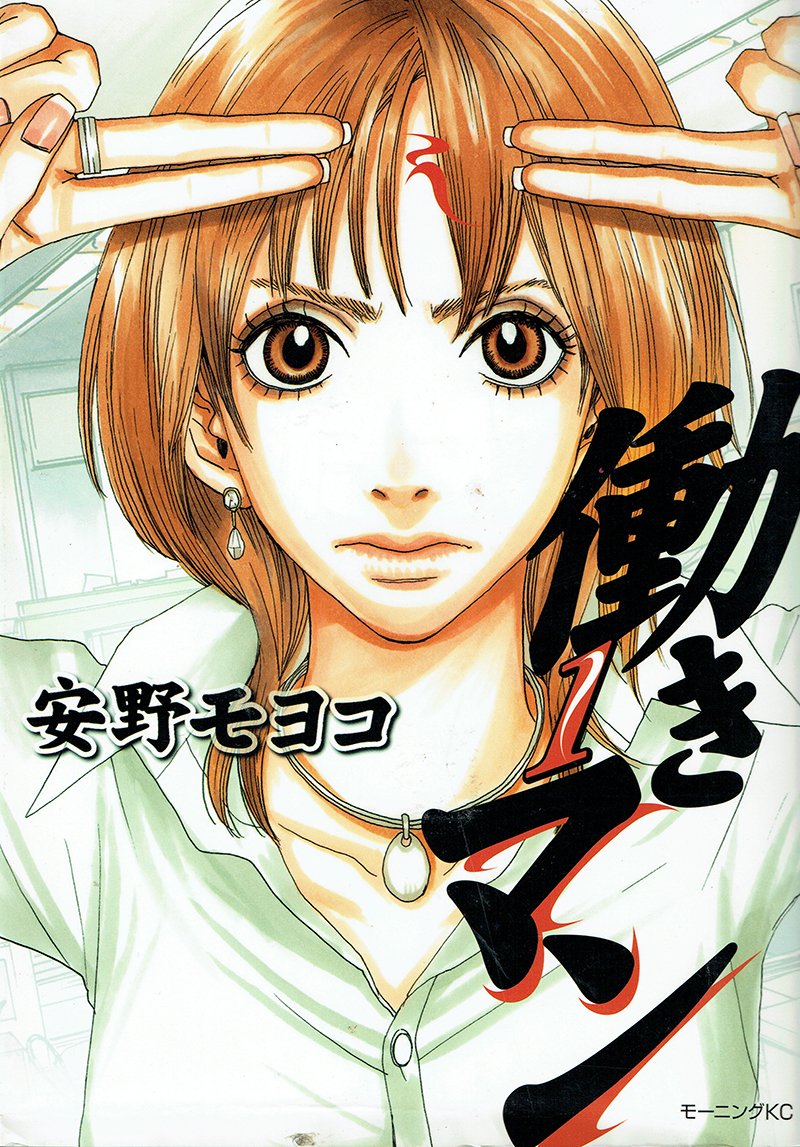
By Moyoko Anno | 安野モヨコ
Kodansha | 講談社
4 volumes, ongoing
Coolness of wrestling in the mud
-- What is a job? What does it mean to work? The tireless efforts of a female editor who squarely confronts male society
"What is a job? What does it mean to work? The tireless efforts of a single female editor in her 20s--work, work, and more work. Although not taking any shortcuts with her fashion, she stays up all night while chewing a natto sushi roll. She wants to become the chief editor before turning 30 years old, and she squarely confronts male society. She is a beautiful woman but like a “man.” Gathering news, on stakeout, making deals. Research, the chase, writing the story. Success, failure. Praise and reproach. She falls in love, and suffers heartbreak. Laughing and crying ... she has a capable boss, troubled colleagues, and incompetent subordinates. Being male or female has nothing to do with it. Yet there is women’s way and men’s way. This manga is from 10 years ago. Today, it may make the company seem like a sweatshop, but I hope we can share the coolness of wrestling in the mud. It also has a number of golden sayings, such as “I’m not asking you why you cannot do it, I’m asking you how you can do it”; “first take care of the job in front of you”; and “don’t crash, avoid it.” The best line comes at the very end: “I’m sure I can do better.” "(Ichiya Nakamura)
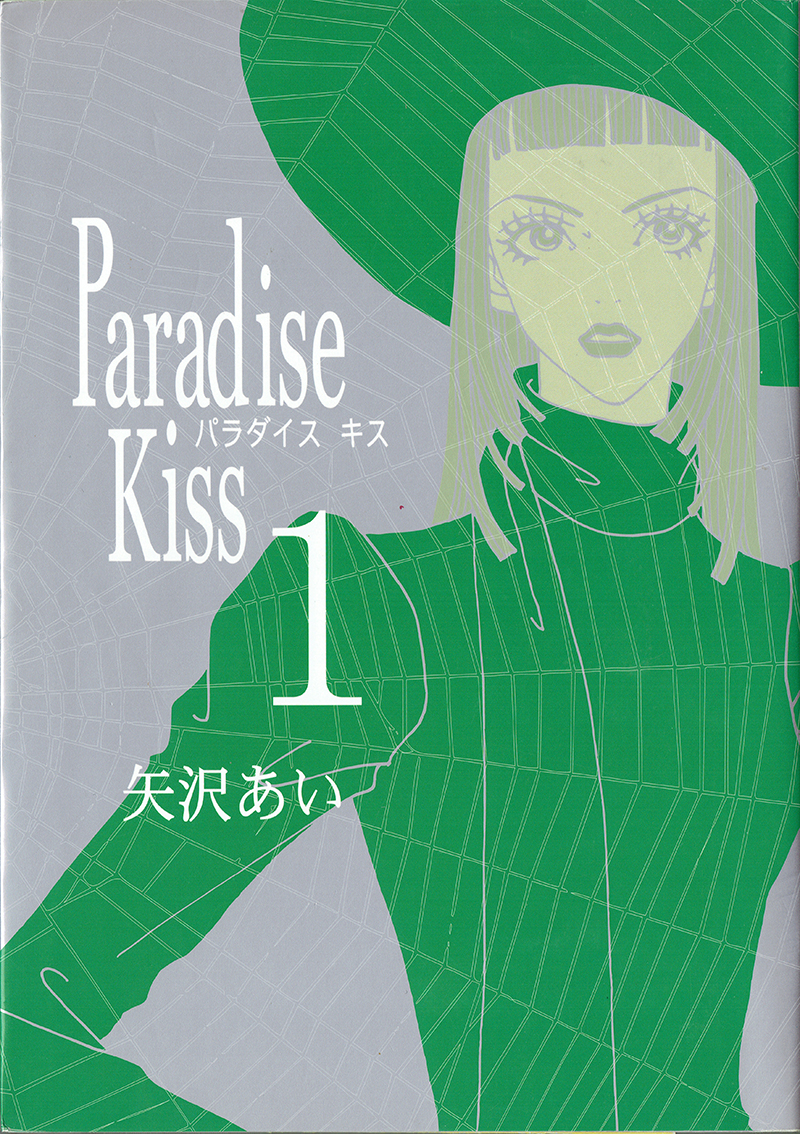
By Ai Yazawa | 矢沢あい
Shodensha | 祥伝社
5 volumes, complete
Door to the fashion industry
-- A high school girl meets future designers and finds her own dream
"This manga is a sequel to Gokinjo Monogatashi [Neighborhood Story] (Shueisha) by the same author, and was published as a series in the fashion magazine Zipper (Shodensha) from 1999 to 2003. Yukari Hayasaka, the main character, is an A-student at a high school for college-bound kids, and has been wondering about filling every day with studying to meet her parents’ expectations. One day in town she is solicited to model for a show at a school festival of Yazawa Geijutsu Gakuin [Yazawa School of Arts]. She meets Joji Koizumi, a designer in the making, and others. As she spends time with people working toward their dream in the fashion industry—something previously inconceivable for her—she starts to discover what her own dream is. Meticulous and beautiful illustrations are characteristic of this manga, and are worthy of the fashion industry stage. Each character’s daily outfit as well as show clothing catches your eye separately from the story, if you are interested in fashion. The mindset of characters covers a wide range: having a dream, frustration, setbacks and love, turning the work into a readily sympathized classic. The beautiful illustrations and story are captivating, and before you know it, you’ll be learning how the fashion industry works. "(Naoko Hosoda)

By Hideo Iura | 井浦秀夫
Shogakukan | 小学館
10 volumes, complete
A fine line between good person and bad person
-- The successful work of Kuzu, a lawyer with zero sense of ethics but top-notch skills
"Kuzu, a lawyer who looks like Beat Takeshi, really does seem like a bum. He is always bringing up racy subjects, is looked down on by his daughters, and is beaten by crusading female lawyers. His rude attitude upsets his clients. He lies, cheats, and threatens others to get a better deal. Kuzu has absolutely no morality nor sense of ethics. However, his skills are top-notch. He is asked to consult on widely varying matters, including sexual harassment, bullying, divorce, and fraud. He has the ability to discern an incident’s essential factors, such as its complex background, hard-to-reach secrets, and unspoken true intention. Without drawing attention, Kuzu purposefully investigates and brilliantly blocks escape routes. His approach is, in fact, based on his humanity. This world has light and dark sides, and there is a fine line between a good person and a bad person. Even in the merciless world of law, some things are not clearly black or white. This is a book to learn about people."(Ichiya Nakamura)

By Ton Oukawara | 大河原遁
Shueisha | 集英社
32 volumes, Complete
Craftsmen are made of "knowledge"
The fine work of the lone Japanese tailor in Italy, home of suits
"What kinds of people are "fashionable”? Generally speaking, they are considered to have good taste and dress according to time, place and occasion. What, then, is "taste"? What does "dressing according to time, place and occasion" mean, specifically? This work provides answers to these questions. The main character is a skilled tailor. A tailor is a type of craftsman. While craftsmen have a strong image of establishing careers based on their skills, expertise is not the only factor. Their skills are backed by deep knowledge of the subject. Taste, ultimately, is the accumulation of such knowledge. This work lets you enjoy a fine story as entertainment and at the same time reveals the craftsman’s uncompromising thirst for knowledge. As you read this manga, you will find yourself better able to don a suit and look cool. "(Youhei Sadoshima)

By Misao Kataoka | かたおかみさお
Kodansha | 講談社
7 volumes, Complete
Tips on creating a good workplace
The secret of working with others, as learned from office ladies
"While a number of manga portray glamorous occupations such as designers and personalities, it is rare to find a work that shows the rewards and reality of “office ladies” who take care of clerical work. Reading this manga makes you realize that all big projects are the cumulation of many small, carefully handled jobs. What kind of care and consideration should be in place in order to have everyone work comfortably every day? It is even more important for companies in Japan, where workplace mood is prioritized over individuals' job functions. There are, in fact, very few people who can handle what needs to be done on a routine basis, and this ability alone wins trust at a workplace. This manga is not only for women but also for male workers and foreigners interested in Japanese companies."(Yukari Fujimoto)
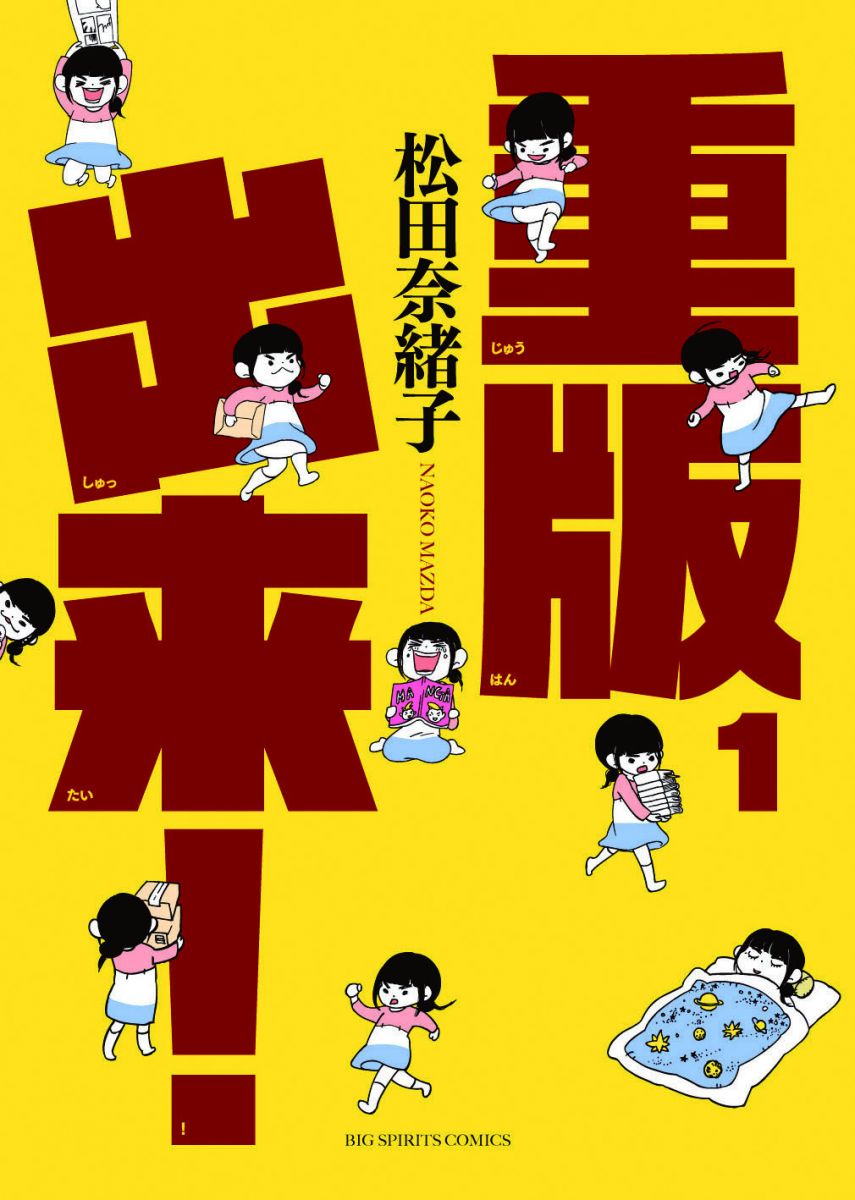
By Naoko Matsuda | 松田奈緒子
Shogakukan | 小学館
11 volumes, Ongoing
Artists, production people, and sales
The different jobs involved in manga, through the eyes of a new editor
"Works of entertainment are not something the author alone creates. In the case of manga, for example, editors as well as people at different sites—including typesetting, printing and sales—are involved. Juhan Shuttai! is a realistic depiction of the entire process of manga publishing as seen through the eyes of the main character, a new editor at a manga magazine, making you feel as if you are there. Introduction of SNS and electronic books has forced the publishing industry into a dramatic transition, and here we get a glimpse of what kind of people are involved with manga and what they do as the manga segment pushes ahead of other areas of publishing. While pondering your future based on what you like is important, there are many related occupation options. After reading this work, you might realize that."(Takafumi Horie)
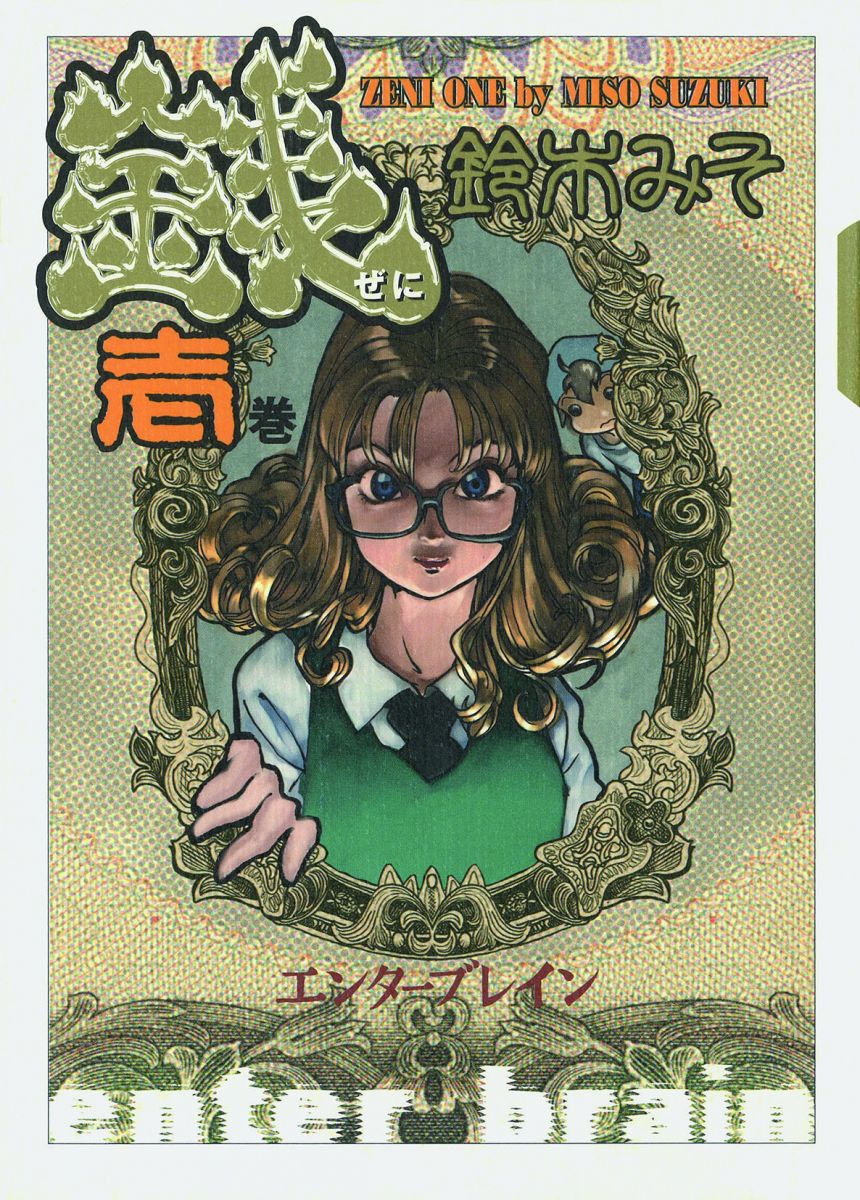
By Miso Suzuki | 鈴木みそ
KADOKAWA | KADOKAWA
7 volumes, Complete
Industry circumstances in terms of money
The seemingly familiar yet unknown relationships between various jobs and money
"Explained here is the appeal of various jobs from the standpoint of money. In this work, three characters look around at the monetary circumstances of different industries, including publishing, anime production, convenience stores and cafes. While following their stories, you will learn about the largely unknown internal situations at individual industries. Quite a few Japanese people feel uncomfortable talking about money or find the subject taboo. Against this backdrop, getting a sneak peek at different jobs from the narrow angle of money is quite new and valuable. This work lets you understand the mechanism of industries while enjoying manga, and is recommended for young people before starting their careers."(Youhei Sadoshima)

By Norio Hayashi (script), Kenichiro Takai (art) | 林律雄(原作)、高井研一郎(作画)
Shogakukan | 小学館
81 volumes, Complete
Behind-the-scenes superman
What is the work of general affairs, the handyman of company organization?
"What kind of place is a "company"? What kind of job does "general affairs" do? This manga illustrates work at a company’s general affairs department, something hard to imagine for people who have never worked as a company employee. A company generally has several departments, such as planning, sales and accounting, with each handling certain tasks. Yet the work of general affairs does not fit easily into these narrow specifications and encompasses everything not covered by other departments; in other words, general affairs helps all sorts of people as the "handyman" of the company. Roppeita, the main character who works at the General Affairs Section of the General Affairs Department, takes everything in stride, and does not boast about helping others. What happens to him and the people around him is not dramatic. However, there is always a “nice little story,” and reading it will give you a sense of relief. In this work we find an example of an attractive company where good human relationships are built. "(Youhei Sadoshima)

By Fujihiko Hosono | 細野不二彦
Shogakukan | 小学館
23 volumes, Complete
The darkness inside giant media
Black entertainment that depicts the dark side of the glamorous TV industry
"Opportunities to see the dark side of television have increased in recent years, yet it rarely receives the spotlight. Denpa no Shiro [Castle of Broadcast] is a work that gets to the hidden core of the TV industry. The main character moves from a local FM station to Tokyo to pursue her dream of becoming a newscaster at a major station, and half forces her way into joining a minor production company. The story clearly illustrates her meteoric success and inner darkness as well as the darkness of the TV industry. Entanglement with the powers that be, the abnormal news-gathering system of independent journalists, and the severe working conditions of subcontracting production companies ... the things that lurk behind the scenes of giant media such as TV and the greed of people who flock to power are overwhelming. This work is highly recommended for students who want to build a career in mass media, in order to deepen their thinking on what it means to be involved with the industry today. "(Takafumi Horie)